Faculty
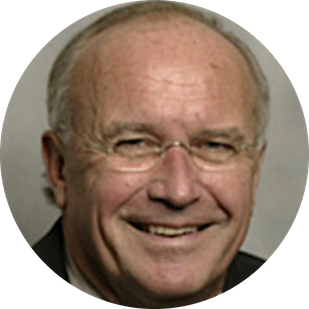


Bio
Dr. Adeyi is an anatomic pathologist with expertise in liver and transplantation pathology. His clinical practice covers medical, transplant and oncologic diseases of the liver, with more than 15 years' experience as a hepatobiliary pathology sub-specialist. His primary research interest is in transplant and tumor immunology. During his career he has combined an active clinical service with research and teaching as well as participating locally, nationally, and internationally as a key resource in medical, transplantation and oncologic liver diseases. Adeyi's research has focused on the interplay between the immune system on the one hand and allogeneic, tumor and viral antigens on the other. In collaboration he has used murine and pig models to study varying aspects of alloimmunity, infections, and tumorigenesis in modified immunologic backgrounds, with a view to understanding how best to utilize the innate and specific immune systems in achieving better outcomes in solid organ transplantation and malignancies, as well as viral infections and organ preservation injury.
Research Summary
Transplant and tumor immunology
Publications
- Bellamy COC, O'Leary JG, Adeyi O, et al. Banff 2022 Liver Group Meeting report: Monitoring long-term allograft health. Am J Transplant. 2024 Mar 9:S1600-6135(24)00204-1.
- Hirsch W, Megna B, Adeyi O, Lim N. Macrophage activation syndrome with acute hepatitis in a patient with adult-onset immunodeficiency with anti-interferon gamma antibodies: a case report. J Med Case Rep. 2024 Jan 5;18(1):6.
- Goren LR, Adeyi O, Thielen BK. Possible Donor-Derived Infection in a Pediatric Liver Transplant Patient With Granulomatous Hepatitis. Cureus. 2023 Nov 20;15(11):e49136.
- Chua C, Salimzadeh L, Ma AT, Adeyi OA, Seo H, Boukhaled GM, Mehrotra A, Patel A, Ferrando-Martinez S, Robbins SH, La D, Wong D, Janssen HLA, Brooks DG, Feld JJ, Gehring AJ. IL-2 produced by HBV-specific T cells as a biomarker of viral control and predictor of response to PD-1 therapy across clinical phases of chronic hepatitis B. Hepatol Commun. 2023 Dec 7;7(12):e0337.
- Khalifa MA, Gagner B, Chen L, Murugan P, Klein ME, Racila E, Amin K, Miller F, Stewart J, Ding Y, Farooqui M, Dasaraju S, and Adeyi OA. Immunohistochemistry and immunofluorescence utilization audit by subspecialty in an academic setting: A step toward stewardship. Annals of Diagnostic Pathology, Volume 67, 2023, 152214, https://doi.org/10.1016/j.anndiagpath.2023.152214.
- Sadozai H, Rojas-Luengas V, Farrokhi K, Moshkelgosha S, Guo Q, He W, Li A, Zhang J, Chua C, Ferri D, Mian M, Adeyi O, Seidman M, Gorczynski RM, Juvet S, Atkins H, Levy GA, Chruscinski A. Congenic hematopoietic stem cell transplantation promotes survival of heart allografts in murine models of acute and chronic rejection. Clin Exp Immunol. 2023 Jul 5;213(1):138-154.
- Christian VJ, Sarwar R, Resch JC, Lim S, Somani A, Larson-Nath C, McAllister S, Thielen BK, Adeyi O, Chinnakotla S, Bhatt H. Use of Cidofovir for Safe Transplantation in a Toddler with Acute Liver Failure and Adenovirus Viremia. Case Rep Transplant. 2022 Nov 9;2022:9426175.
- Pai RK, Jairath V, Hogan M, Zou G, Adeyi OA, Anstee QM, Aqel BA, Behling C, Carey EJ, Clouston AD, Corey K, Feagan BG, Kleiner DE, Ma C, McFarlane SC, Noureddin M, Ratziu V, Valasek MA, Younossi ZM, Harrison SA, Loomba R. Reliability of histologic assessment for NAFLD and development of an expanded NAFLD activity score. Hepatology. 2022 Oct;76(4):1150-1163.
- Sarwar R, Adeyi OA, Lake J, Lim N. Acute cellular rejection in liver transplantation recipients following vaccination against coronavirus disease 2019: A case series. Liver Transpl. 2022 Aug;28(8):1388-1392.
- Chruscinski A, Rojas-Luengas V, Moshkelgosha S, Issachar A, Luo J, Yowanto H, Lilly L, Smith R, Renner E, Zhang J, Epstein M, Grant D, McEvoy CM, Konvalinka A, Humar A, Adeyi O, Fischer S, Volmer FH, Taubert R, Jaeckel E, Juvet S, Selzner N, Levy GA. Evaluation of a gene expression biomarker to identify operationally tolerant liver transplant recipients: the LITMUS trial. Clin Exp Immunol. 2022 Jan 28;207(1):123-139.
- Malvar G, Cardona D, Pezhouh MK, Adeyi OA, Chatterjee D, Deisch JK, Lamps LW, Misdraji J, Stueck AE, Voltaggio L, Gonzalez RS. Hepatic Secondary Syphilis Can Cause a Variety of Histologic Patterns and May Be Negative for Treponeme Immunohistochemistry. Am J Surg Pathol. 2022 Apr 1;46(4):567-575.
- Bhat M, Pasini E, Pastrello C, Angeli M, Baciu C, Abovsky M, Coffee A, Adeyi O, Kotlyar M, Jurisica I. Estrogen Receptor 1 Inhibition of Wnt/β-Catenin Signaling Contributes to Sex Differences in Hepatocarcinogenesis. Front Oncol. 2021 Nov 22;11:777834
Contact
Address
C425 Mayo Building420 Delaware St. SE
Minneapolis, MN 55455
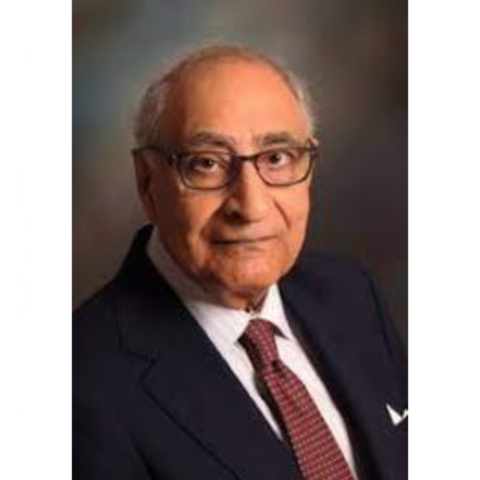
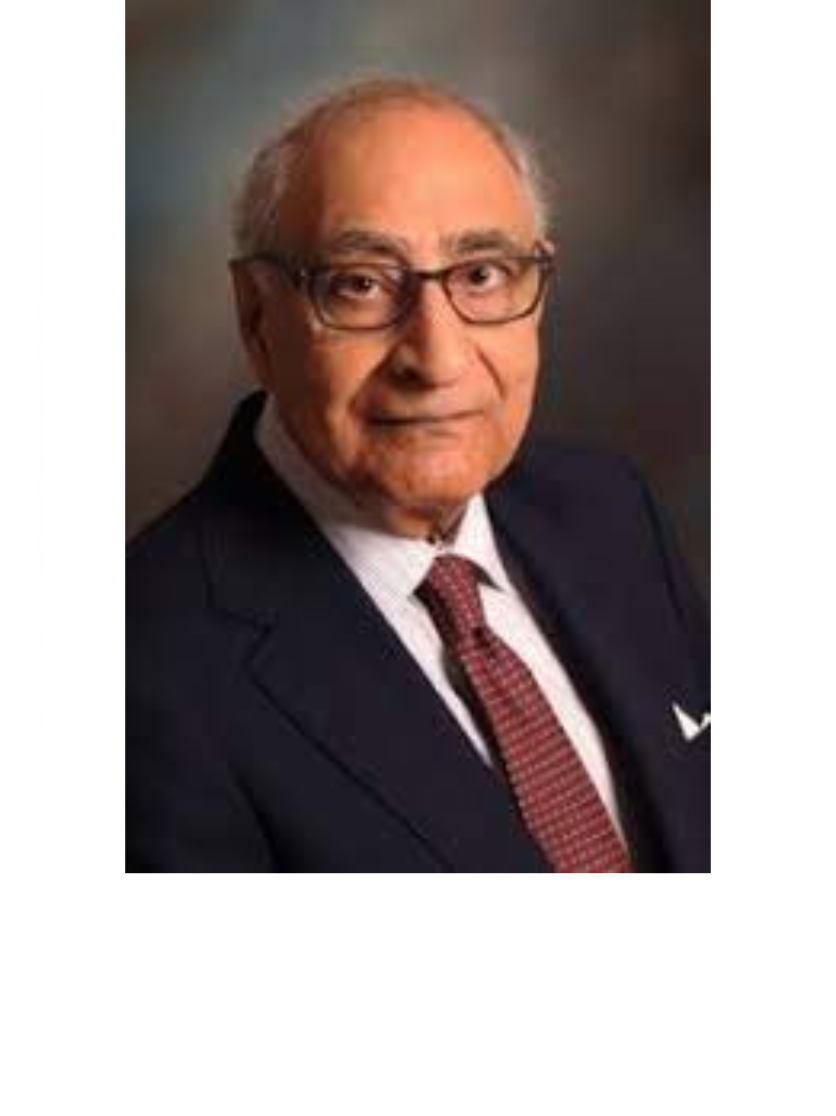
Research Summary
Dr. Ahmed is a Senior Research Career Scientist at Minneapolis VA Health Medical Center. He has a long history of studies on functional biology of protein kinase CK2 (formerly casein kinase II or 2) and is considered a leader in this field. CK2 has emerged as a major signal involved in diverse cellular functions of health and disease and may be a universal target for cancer drug development.Ahmed began his investigation of CK2 in studies of prostate cancer and has subsequently studied CK2 involvement in head and neck cancer, breast cancer, and melanoma.He was first to characterize CK2's intracellular phosphorylation signaling mechanism and then delineated the role of CK2 as a suppressor of cell death, including apoptosis or programmed cell death, in normal and neoplastic cells. The latter activity of CK2 is now regarded as one of its most important functions. Ahmed's current research, in collaboration with fellow investigators at the VA Health Care System and private industry, focuses on studies of the mechanisms of CK2 regulation of cell death and on developing molecular therapeutic strategies using a nanomedicine approach for the treatment of prostate and other cancers. CK2 signal plays a critical role in cell growth and proliferation. Studies by Ahmed and his colleagues show that CK2 is highly expressed in proliferating cells including cancer cells, and loss of CK2 activity results in cell death. All cancers they have analyzed demonstrate consistently up-regulated CK2, which is distinct from the pattern of up- and down-regulation found in normal cells, a kind of regulatory homeostasis. The ability of CK2 to promote cell growth as well as suppress apoptosis links the kinase to cancer biology as cancer cells are characterized by dysregulation not only of proliferation but also of apoptosis, which means that this signal has the potential of serving as a target for inducing apoptosis in cancer cells. Ahmed originally proposed CK2 as a target for cancer therapy, which is now being pursued by several groups. Although CK2 is present in both the nucleus and cytoplasm, in cancer cells it tends to concentrate in the nucleus. Ahmed's laboratory has found that many of the CK2 functions related to cell growth and cell death are mediated via its signaling to structures in the cell's nucleus such as chromatin and nuclear matrix. Ahmed and co-investigators Janeen Trembley, Betsy Kren and others are delineating the mechanism of these signaling events. Recently they found that the CK2 activity affects the membrane potential of mitochondria, which is associated with rapid intracellular calcium flux; mitochondria are the classical mediators of cell death.Ahmed and his colleagues have also established proof of principle for the potential targeting of CK2 for cancer therapy by antisense or siRNA-mediated molecular downregulation of CK2.In collaboration with Gretchen Unger of GeneSegues, Inc., they are employing a novel nanoparticle approach for delivering CK2 antisense or siRNA oligonucleotides specifically to the tumor cells in vivo. They have developed an entirely original nanocapsule strategy to deliver the treatment to cancer cells, thereby avoiding normal cell damage and heightened toxicity characteristic of conventional chemotherapy. Unger invented a neutrally charged protein nanocapsule particle less than 50 nanometers in size that carries an anti-CK2 nucleic acid to induce cell death by prohibiting the formation of CK2, an essential protein for cell survival.The researchers created this nanocapsule using the tenfibgen protein subdomain of the extracellular matrix molecule tenascin C, which is readily recognized by the surface receptors for tenascin in cancer cells, allowing the nanocapsule to enter the cell. Upon entry the cell breaks down the capsule's shell releasing the anti-CK2 nucleic acid.Cancer cells begin to die when CK2 expression is reduced, typically at as little as 30 percent of CK2 protein loss. Ahmed is encouraged by results from small- and large-animal studies of the potential for a nanomedicine strategy for treating cancer by selectively inhibiting CK2 expression in cancer cells.He is particularly interested in its potential for treating metastatic bone cancer arising from prostate cancer.This type of bone cancer is currently untreatable.
Publications
- Afzal, M., Kren, B.T., Naveed, A.K., Trembley, J.H., and Ahmed, K. Protein kinase CK2 impact on intracellular calcium homeostasis in prostate cancer. Mol Cell Biochem (2020). https://doi.org/10.1007/s11010-020-03752-4
- Ahmed RL, Shaughnessy DP, Knutson TP, Vogel RI, Ahmed K, Kren BT, Trembley JH. CDK11 Loss Induces Cell Cycle Dysfunction and Death of BRAF and NRAS Melanoma Cells. Pharmaceuticals (Basel). 2019 Apr 2;12(2). pii: E50. doi: 10.3390/ph12020050
- Cannon CM, Trembley JH, Kren BT, Unger GM, O’Sullivan MG, Cornax I, Modiano JF, Ahmed K: Therapeutic targeting of protein kinase CK2 gene expression in feline oral squamous cell carcinoma: A naturally occurring large animal model of head and neck cancer. Human Gene Therapy Clinical Development, Volume 28, Number 2, 2017. DOI: 10.1089/humc.2017.008
- Trembley JH, Kren BT, Abedin MJ, Vogel RI, Cannon CM, Unger, GM, Ahmed K: CK2 Molecular Targeting —Tumor Cell-Specific Delivery of RNAi in Various Models of Cancer. Pharmaceuticals 2017, 10, 25; doi:10.3390/ph10010025
- Ahmed K, Kren BT, Abedin MJ, Vogel RI, Shaughnessy DP, Nacusi L, Korman VL, Li Y, Dehm SM, Zimmerman CL, Niehans GA, Unger GM, Trembley JH. CK2 targeted RNAi therapeutic delivered via malignant cell-directed tenfibgen nanocapsule: dose and molecular mechanisms of response in xenograft prostate tumors. Oncotarget. 2016 Aug 20. doi: 10.18632/oncotarget.11442. [Epub ahead of print]
Contact
Address
Research Service (151)One Veterans Dr
Minneapolis, MN 55417
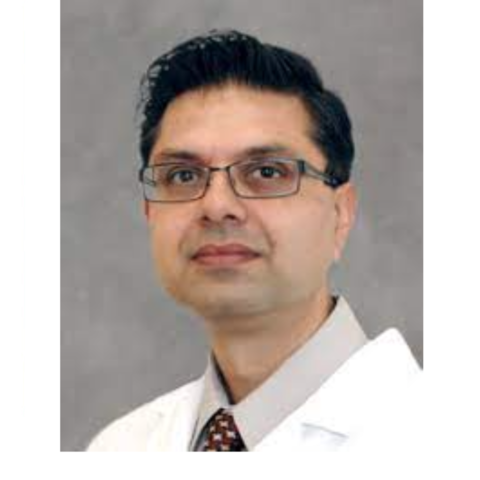
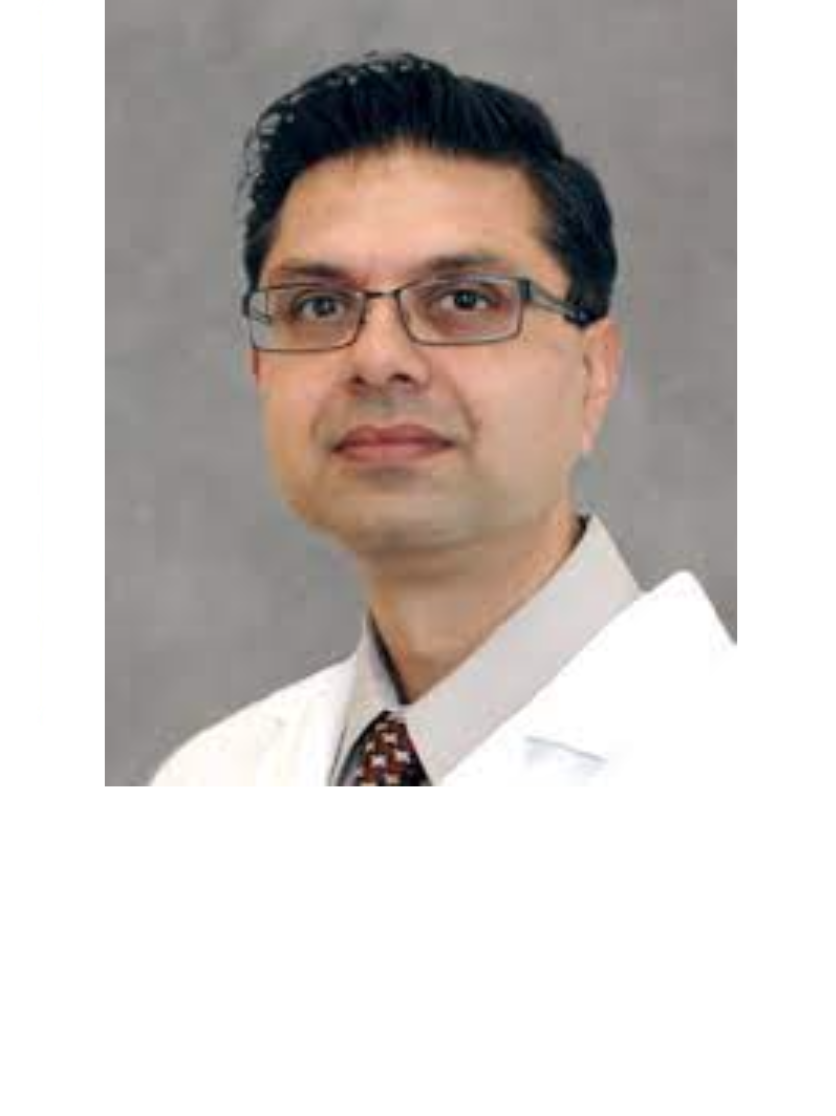
Bio
Dr. Amin is an anatomic and clinical pathologist who has conducted research in the areas of angiogenesis, carcinogenesis and radiation-induced lung disease. He has also pursued studies of various human diseases in animal models, in vivo toxicology assays, and preclinical drug development of anti-cancer drugs in collaboration with the biotechnology industry. Amin was part of a collaborative research group that discovered a link between the clinical use of synthetic erythropoietin (EPO) and risk of tumorigenesis. He and his colleagues showed that tumor cells have cell-surface receptors for EPO, which can stimulate tumor cells to proliferate and enhances the formation of new blood vessels in tumors. Recently, Amin has collaborated with clinical colleagues in studies of cyroprobe lung biopsy, a new tool in diagnosing lung diseases; endoscopic ultrasound-guided fine needle aspiration as a diagnostic and staging tool for rectal and perirectal lesions; and the value of ex vivo dermoscopy of cutaneous biopsies in the histopathologic diagnosis of melanoma. He also collaborated in studies showing that the metal-responsive transcription factor-1 (MTF-1) zinc finger protein is elevated in human tumors, suggesting a role for MTF-1 in human carcinogenesis. As a cytopathologist he has a special interest in defining the role of molecular testing in diagnosis of thyroid cancer on cytology specimens. Although Amin is currently engaged mostly in clinical work, he has an interest in pursuing translational research in collaboration with clinicians and basic scientists.
Research Summary
Publications
- Khalifa MA, Gagner B, Chen L, Murugan P, Klein ME, Racila E, Amin K, Miller F, Stewart J, Ding Y, Farooqui M, Dasaraju S, and Adeyi OA. Immunohistochemistry and immunofluorescence utilization audit by subspecialty in an academic setting: A step toward stewardship. Annals of Diagnostic Pathology, Volume 67, 2023, 152214, https://doi.org/10.1016/j.anndiagpath.2023.152214.
- Rothrock AT, Stewart lll J, Li F, Racila E and Amin K. Exploration of INSM1 and hASH1 as additional markers in lung cytology samples of high-grade neuroendocrine carcinoma with indeterminate neuroendocrine differentiation. Diagnostic Cytopathology, 11 February 2022. https://doi.org/10.1002/dc.24938
- Goswami A, Zhang AJ, Vahidi S, Mettler T, Stewart 3rd J, and Amin K. Oncocytic features in salivary duct carcinoma, a potential pitfall for misdiagnosis as Warthin tumor in fine needle aspiration specimens: A cytomorphologic analysis of 14 cases. Diagnostic Cytopathology, April 9, 2020. https://doi.org/10.1002/dc.24426
- Moisini I, Amin K, Mallery S, Stewart J 3rd, Mettler T. Efficacy of endoscopic-guided fine-needle aspiration in the diagnosis of gastrointestinal spindle cell tumors. Diagn Cytopathol. 2018 Aug;46(8):663-669. doi: 10.1002/dc.23976.
- Hupp M, Najmuddin M, Dincer HE, Mallery JS, Amin K, Stewart J 3rd, Cytomorphologic features of malignant or high risk solitary fibrous tumors of the mediastinum sampled by endoscopic and endobronchial ultrasound-guided fine needle aspiration: a comparison of two case reports, In Early View Diagnostic Cytopathology in April 2019.doi: 10.1002/dc.24192
- Nasir A, Amateau SK, Khan S, Simpson RW, Snover DC, Amin K. The Many Faces of Intestinal Tract Gastric Heterotopia; A Series of Four Cases Highlighting Clinical and Pathological Heterogeneity. Hum Pathol. 2018 Jan 7. pii: S0046-8177(18)30004-2. doi: 10.1016/j.humpath.2018.01.003. [Epub ahead of print] PubMed PMID: 29320750. http://www.humanpathol.com/article/S0046-8177(18)30004-2/fulltext
Education
Fellowships, Residencies, and Visiting Engagements
Licensures and Certifications
Grants and Patents
Patents
Contact
Address
C463 Mayo Building420 Delaware St SE
Minneapolis, MN 55455


Bio
Dr. Apple received his doctorate degree from the University of Minnesota in 1979 and obtained a fellowship in Laboratory Medicine in 1982 from Washington University. He is board certified in Clinical Chemistry and Toxicology. He serves as the principal investigator of the CLIA-accredited Cardiac Biomarkers Trials Laboratory of the Hennepin Healthcare Research Institute. In addition to his investigative research, Dr. Apple is a Professor at the University of Minnesota Department of Laboratory Medicine and Pathology. Dr. Apple also serves as an Associate Editor for the journal Clinical Chemistry and is a Fellow of the American College of Sports Medicine.
Research Summary
Publications
Sandoval Y, Smith SW, Apple FS. Present and future of high sensitivity cardiac troponin in clinical practice: a paradigm shift to high sensitivity assays. Amer J Med 2016;129:354-65.
Sandoval Y, Chapman AR, Mills NL, Than M, Pickering JW, Worster A, Kavsak PA, Apple FS. Sex-specific kinetics of high-sensitivity cardiac troponin I and T following symptom onset and early presentation in non-ST-segment elevation myocardial infarction. Clin Chem 2021;67:321-324.
Sandoval Y, Apple FS, Mahler SA, Body R, Collinson PO, Jaffe AS; International Federation of Clinical Chemistry and Laboratory Medicine Committee on the Clinical Application of Cardiac Biomarkers. High-Sensitivity Cardiac Troponin and the 2021 AHA/ACC/ASE/CHEST/SAEM/SCCT/SCMR Guidelines for the Evaluation and Diagnosis of Acute Chest Pain. Circulation. 2022 Aug 16;146(7):569-581. doi: 10.1161/CIRCULATIONAHA.122.059678
Apple FS, Smith SW, Greenslade JH, Sandoval Y, Parsonage W, Ranasinghe I, Gaikwad N, Schulz K, Stephensen L, Schmidt CW, Okeson B, Cullen L. Single high-sensitivity point of care whole blood cardiac troponin I measurement to rule out acute myocardial infarction at low risk. Circulation 2022;46: 1918-1929. 10.1161/CIRCULATIONAHA.122.061148.
Education
Fellowships, Residencies, and Visiting Engagements
Licensures and Certifications
Contact
Address
730 South 8th Street Minneapolis, MN 55415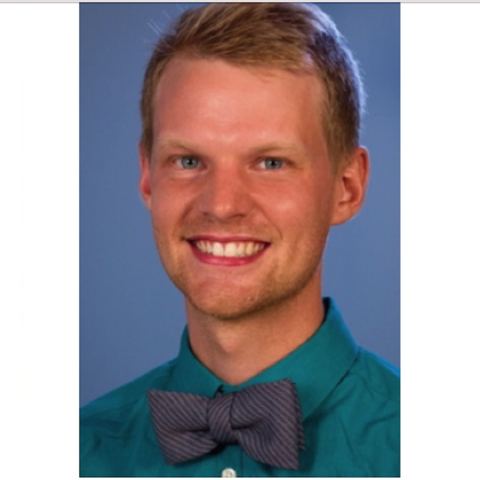
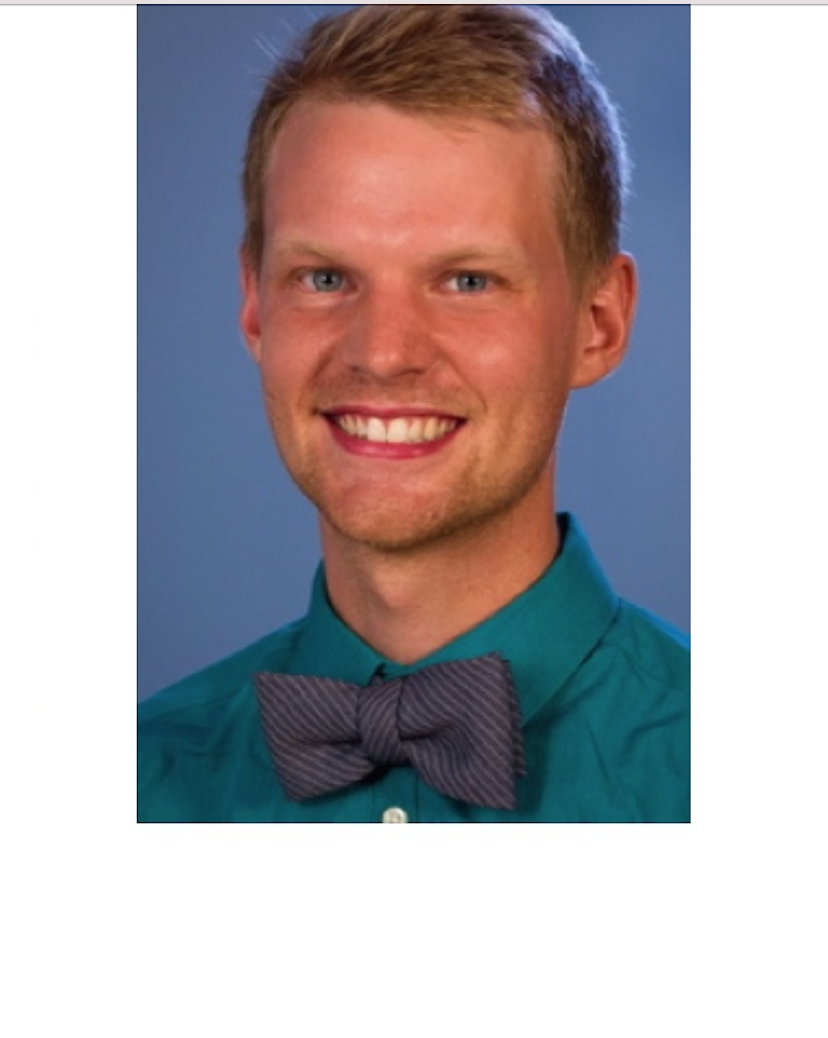
Bio
A Minnesota native, Arries earned a BA degree in Biology, Society, and Environment from the University of Minnesota and an MD degree from the University of Minnesota Medical School, Duluth campus. He completed a residency in anatomic and clinical pathology in LMP and was chief resident from 2020-2021. Recently, Arries completed a fellowship in hematopathology in LMP. In addition to joining the hematopathology service and research teams, Arries serves as the LMP Director of Medical Student Pathology Education.
Research Summary
Publications
Arries C, Linden MA. “Enhancing hematopathology peripheral blood smear education through asynchronous video material: A pilot report.” Academic Pathology, 11 (2), April–June 2024. https://doi.org/10.1016/j.acpath.2024.100114
Arries, C., Williams, S., Wallschlager, A., Jernberg, C., & Powell, D. (2021). Innovative Team‐Learning Project for Undergraduate Pathology Education. Academic Pathology, 8, April, 2021 Pub Med. https://doi.org/10.1177/23742895211023943
Hartsough, E. M., Arries, C., Amin, K., & Powell, D. (2021). Designing and Implementing a Virtual Anatomic Pathology Elective During the COVID‐19 Pandemic. Academic Pathology, 8. April, 2021, Pub Med https://doi.org/10.1177/23742895211010265
Arries, C. D., & Yohe, S. L. (2020). Monocytic maturation induced by FLT3 inhibitor therapy of acute myeloid leukemia: Morphologic and immunophenotypic characteristics. Lab Medicine, 51(5), 478‐483. https://doi.org/10.1093/LABMED/LMZ094
Contact
Address
D225 Mayo Memorial Building420 Delaware St SE
Minneapolis, MN 55455
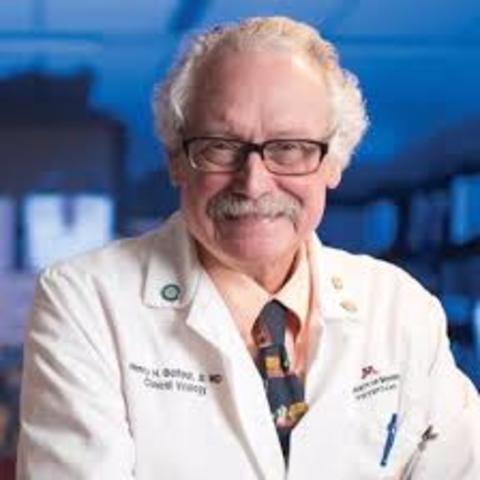
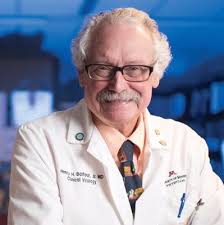
Bio
Dr. Balfour is a professor of laboratory medicine and pathology and also pediatrics. He is founder of the Clinical Virology Laboratory and is principal investigator of its International Center for Antiviral Research and Epidemiology. Balfour has a long-standing research interest in viruses and human disease and preventative vaccines. His current research focus is on the pathobiology of Epstein-Barr virus (EBV) and the development of an EBV vaccine. Balfour is principal investigator of the Epstein-Barr Diseases Research Program.A member of the herpes virus family, EBV is one of the most common human viruses and probably the most complex in terms of how it interacts with the immune system. Most people around the world get infected with EBV at some point in their lives. EBV spreads most commonly through bodily fluids, primarily saliva. EBV can cause infectious mononucleosis and is associated with Hodgkin's lymphoma, Burkitt's lymphoma and other cancers. EBV is a risk factor for blood and bone marrow transplant patients and others who are immunosuppressed. In addition, evidence that EBV plays a role in the pathogenesis of multiple sclerosis is rapidly accumulating. Because EBV interacts with the immune system in complex ways, Balfour and other faculty in his virology group work closely with faculty in the Center for Immunology. Together they conducted a prospective study of University undergraduate students without evidence of EBV infection to determine the incidence of and risk factors for the acquisition of primary EBV. They found that 25 percent of freshmen lacking evidence of EBV in their bloodstream are subsequently infected and acquire mononucleosis. EBV infection is associated with deep kissing with nearly nine of ten infected students showing symptoms. The researchers also found that the severity of symptoms is related to high numbers of natural killer cells, CD8+ T cells, and elevated blood viral loads. People with a history of mononucleosis are at higher risk for developing Hodgkin's lymphoma and also multiple sclerosis (MS), a central nervous system disease that affects more than two million people worldwide. Nearly all MS patients possess EBV antibodies indicating acquisition of the virus. Balfour and his colleagues together with a private company are working to develop a vaccine that could potentially prevent EBV-caused diseases like mononucleosis and EBV-associated diseases like Hodgkin's lymphoma and MS. A vaccine could also potentially prevent severe illness or even death from EBV infection following transplantation, especially in pediatric patients who have not been exposed to the virus and have no antibodies against it. The investigators are targeting the EBV viral-surface glycoprotein 350 (gp350), which can prevent EBV from entering the cell. Because gp350 is the most highly expressed of EBV surface proteins, neutralizing antibody is developed in concert with recognizing the gp350 molecule. The experimental vaccine will be based on gp350 protein that can raise neutralizing antibody, which in turn prevents EBV from traveling from one cell to another once EBV infection occurs.Balfour is Associate Editor of the Journal of Clinical Virology.
Research Summary
Diagnosis and treatment of herpesvirus infections; pathobiology of Epstein-Barr virus (EBV) diseases; role of EBV in infectious mononucleosis, non-Hodgkin's lymphoma, multiple sclerosis, and organ transplantation; EBV vaccine development.
Publications
See also PubMed
Selected Publications
- Verghese PS, Evans MD, Hanson A, Hathi J, Chinnakotla S, Matas A, Balfour HH Jr. Valacyclovir or valganciclovir for cytomegalovirus prophylaxis: A randomized controlled trial in adult and pediatric kidney transplant recipients. J Clin Virol. 2024 Apr 22;172:105678. doi: 10.1016/j.jcv.2024.105678.
- Balfour, HH, Jr. Antivirals for COPD? [Editorial]. Chest, 164 (3), September 2023. doi: https://doi.org/10.1016/j.chest.2023.04.012.
- Geris JM, Duval LM, and Balfour HH. “Epstein-Barr Virus.” In: Rezaei N (ed.) Encyclopedia of Infection and Immunity. vol. 2, pp. 37-52. Oxford: Elsevier (2022). dx.doi.org/10.1016/B978-0-12-818731-9.00074-4.
- Fahad AS, Cheng-Yu C, Lopez Acevedo SN, Boyle N, Madan B, Gutiérrez-González M-F, Matus-Nicodemos R, Laflin AD, Ladi RR, Zhou J, Wolfe J, Llewellyn-Lacey S, Koup RA, Douek DC, Balfour HH Jr, Price DA, and DeKosky BJ. Immortalization and functional screening of natively paired human T cell receptor repertoires, Protein Engineering, Design and Selection, Volume 35, 2022, gzab034, https://doi.org/10.1093/protein/gzab034
- Liu H, Gemmell L, Lin R, Zuo F, Balfour HH Jr, Woo JC, Hayes GM. Development of an improved Epstein-Barr Virus (EBV) neutralizing antibody assay to facilitate development of a prophylactic gp350-subunit EBV vaccine. Mediterr J Hematol Infect Dis. 2020 Mar 1;12(1):e2020016. doi: 10.4084/MJHID.2020.016.
- Allen Choi, Kathryn Marcus, Danielle Pohl, Patrick Ten Eyck, Henry Balfour Jr, and J Brooks Jackson. Epstein-Barr virus infection status among first year undergraduate university students. Journal of American College Health, Feb. 2, 2019. https://doi.org/10.1080/07448481.2020.1726927
- Rostgaard K, Balfour HH Jr, Jarrett R, Erikstrup C,Pedersen O, Ullum H,, Nielsen LP, Voldstedlund M, Hjalgrim H. Primary Epstein-Barr virus infection with and without infectious mononucleosis.PLoS One. 2019 Dec 17;14(12):e0226436. doi: 10.1371/journal.pone.0226436.
- Balfour HH Jr, Schmeling DO, Grimm-Geris JM. The promise of a prophylactic Epstein-Barr virus vaccine. Pediatr Res. 2019 Oct 3. doi: 10.1038/s41390-019-0591-5.
- Cederberg LM, Rabinovitch MD, Grimm-Geris JM, Schmeling DO, Filtz EA, Condon LM, Balfour HH Jr. Epstein-Barr virus DNA in parental oral secretions: a potential source of infection for their young children. Clin Infect Dis 2018; DOI: 10.1093/cid/ciy464
- Dunmire SK, Verghese PS, Balfour HH Jr. Primary Epstein-Barr virus infection. Journal of Clinical Virology 103(2018) 84-92. https://goo.gl/yJTNbg
Education
Fellowships, Residencies, and Visiting Engagements
Licensures and Certifications
Honors and Recognition
Contact
Address
15-144 P W B516 Delaware St SE
Minneapolis, MN 55455
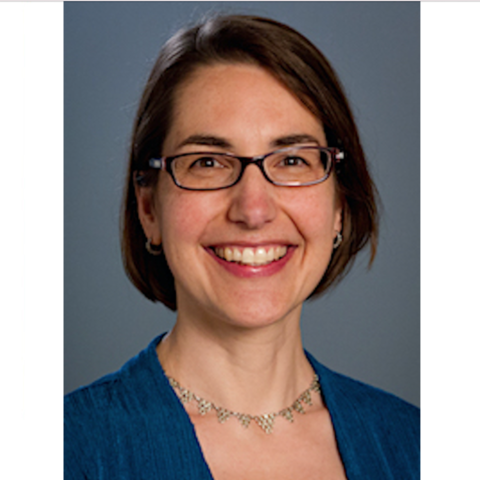
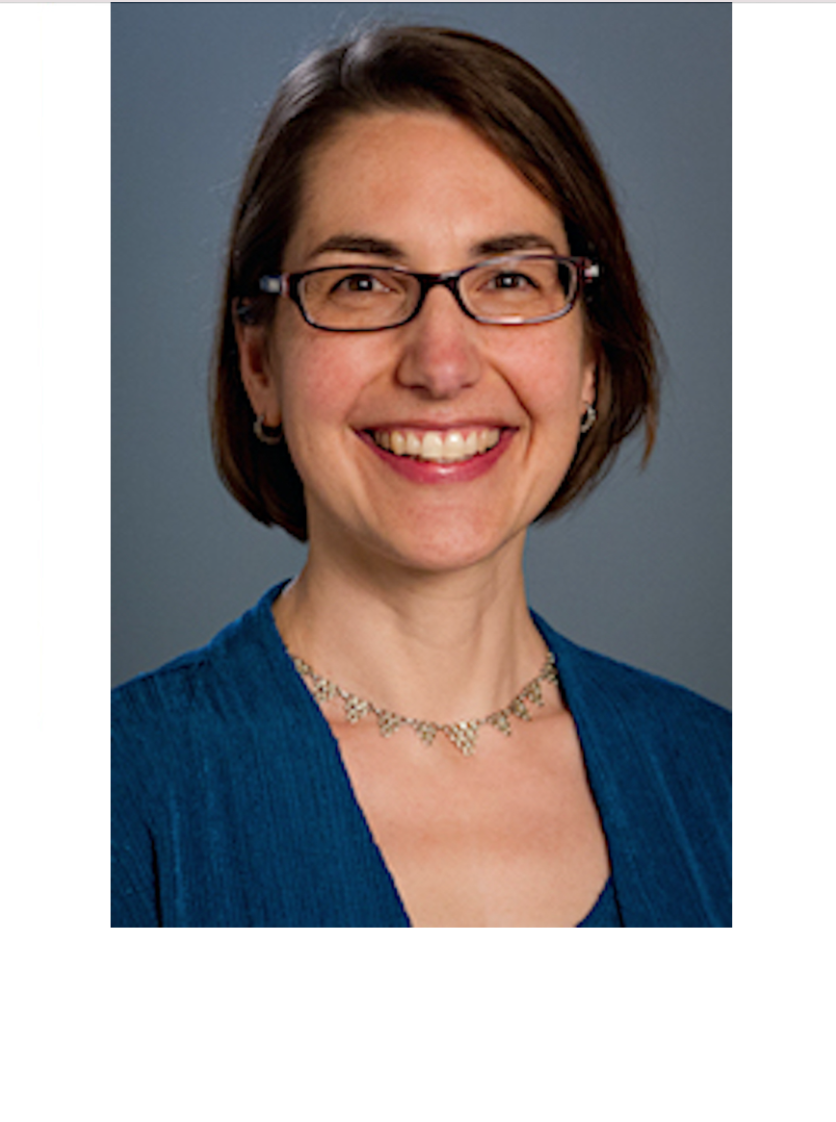
Bio
Amy studied biology at the University of Michigan as an undergraduate, served as a community health volunteer in the Peace Corps in West Africa after graduation, and then headed to the University of California, San Francisco for medical school. She was thrilled to match at the University of Minnesota for residency, with its diverse training sites, strong AP and CP instruction, and friendly, supportive environment. Amy is currently a member of the CAP's personalized health care committee and looks forward to pursuing a fellowship in hematopathology. She spends her free time hanging out with her husband and three sons.
Research Summary
Publications
Tashakori M and Beckman AK. Circulating plasmablastic cells in a patient with HHV8-associated multicentric Castleman Disease and Kaposi sarcoma. Blood, 2023 Dec 14;142(24):2124.
Cushman-Vokoun A, Schmidt RJ, Hiemenz MC, Fung M, Zhang BM, Bradshaw G, Gandhi M, Yao J, Yohe S, Beckman A, Grody WW, Giannikopoulos P. A Primer on Gene Editing: What Does It Mean for Pathologists? Arch Pathol Lab Med. 2023 Aug 23. doi: 10.5858/arpa.2022-0410-CP.
Kao RL, Jacobsen AA, Billington CJ Jr, Yohe SL, Beckman AK, Vercellotti GM, Pearson DR. A case of VEXAS syndrome associated with EBV-associated hemophagocytic lymphohistiocytosis. Blood Cells Mol Dis. 2021 Nov 30;93:102636. doi: 10.1016/j.bcmd.2021.102636.
Hassan S, Fanola C, Beckman A, Li F, Nelson AC, Linden M, and Beckman JD. Adult Langerhans histiocytosis with rare BRAF mutation complicated by massive pulmonary embolism [published online ahead of print, 2020 Jul 25]. Thromb Res. 2020;193:207-210. doi:10.1016/j.thromres.2020.07.044
Plummer RM, Beckman AK, Hupp MM, Courville EL, Williams SA, and Linden MA. Diagnostic utility of performing flow cytometry on provider-submitted endoscopically collected gastrointestinal samples. OBJD. 2020. 10 (1). doi:10.4236/ojbd.2020.101001
Walk EE, Yohe SL, Beckman A, Schade A, Zutter MM, Pfeifer J, Berry AB; College of American Pathologists Personalized Health Care Committee. The Cancer Immunotherapy Biomarker Testing Landscape. Arch Pathol Lab Med. 2020;144(6):706‐724.
Education
Fellowships, Residencies, and Visiting Engagements
Licensures and Certifications
Contact
Address
420 Delaware Street SEMMC 198
Minneapolis, Minnesota 55455

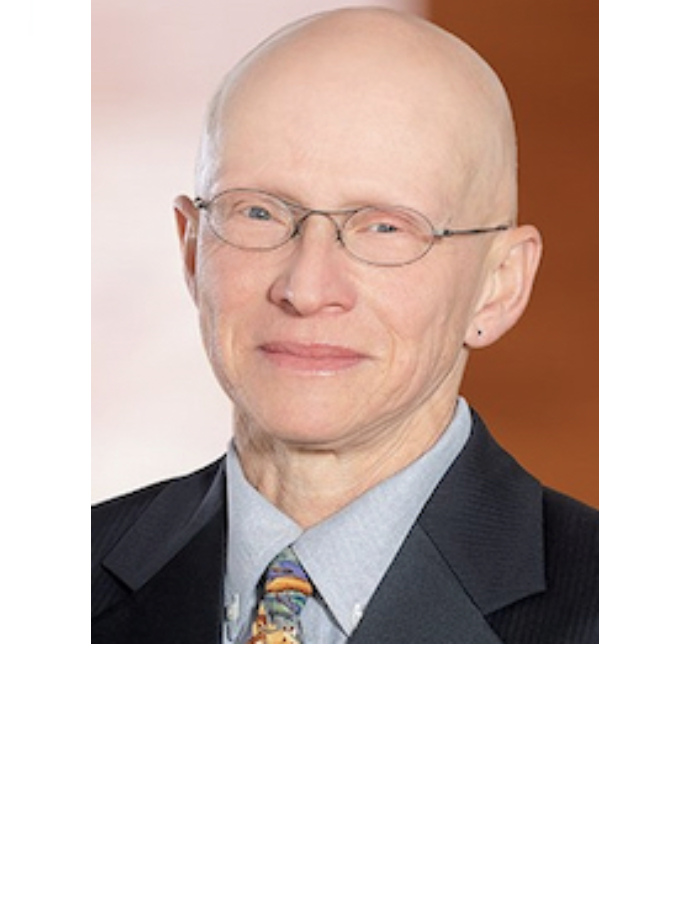
Bio
Dr. Cartwright earned an MD degree from the Medical College of Wisconsin. He was an intern in Internal Medicine, University of California Davis (UC Davis). He completed a residency in anatomic and clinical pathology at UC Davis, where he was chief resident. Cartwright was a cytology fellow at the University of California San Francisco and an LMP molecular genetics fellow 2015-16. He was pathologist and co-lab director at Minnesota Urology prior to joining LMP.
Research Summary
Dr. Cartwright's clinical research interests include:
-
Anatomic and clinical pathology
-
Cytopathology and application of fine-needle aspiration (FNA)
-
Molecular pathology and the assessment of actionable molecular markers in tumors
-
Dermatopathology, gastrointestinal pathology and uropathology
Publications
Santiago V, Cartwright D, Khoshnoodi P, Klein M, Giubellino A. A Case of Tumor of Follicular Infundibulum Involving the Vulva. Case Rep Pathol. 2019 Jan 28;2019:4606493. doi: 10.1155/2019/4606493.
Wheelwright M, Yousaf H, Plummer R, Cartwright D, Gaertner W, Amin K. Perianal Histoplasmosis Presenting as a Mass Suspicious for Malignancy: A Case Report with Review of Gastrointestinal Manifestations of Histoplasmosis. Am J Case Rep. 2019 Nov 25;20:1740-1744. doi: 10.12659/AJCR.918220.
Nelson, A., Boone, J., Cartwright, D. et al. Optimal detection of clinically relevant mutations in colorectal carcinoma: sample pooling overcomes intra-tumoral heterogeneity. Mod Pathol 31, 343–349 (2018). https://doi.org/10.1038/modpathol.2017.120
Education
Fellowships, Residencies, and Visiting Engagements
Licensures and Certifications
Contact
Address
Mailing Address: MMC 76 Mayo, 420 Delaware, Minneapolis, MN 55455
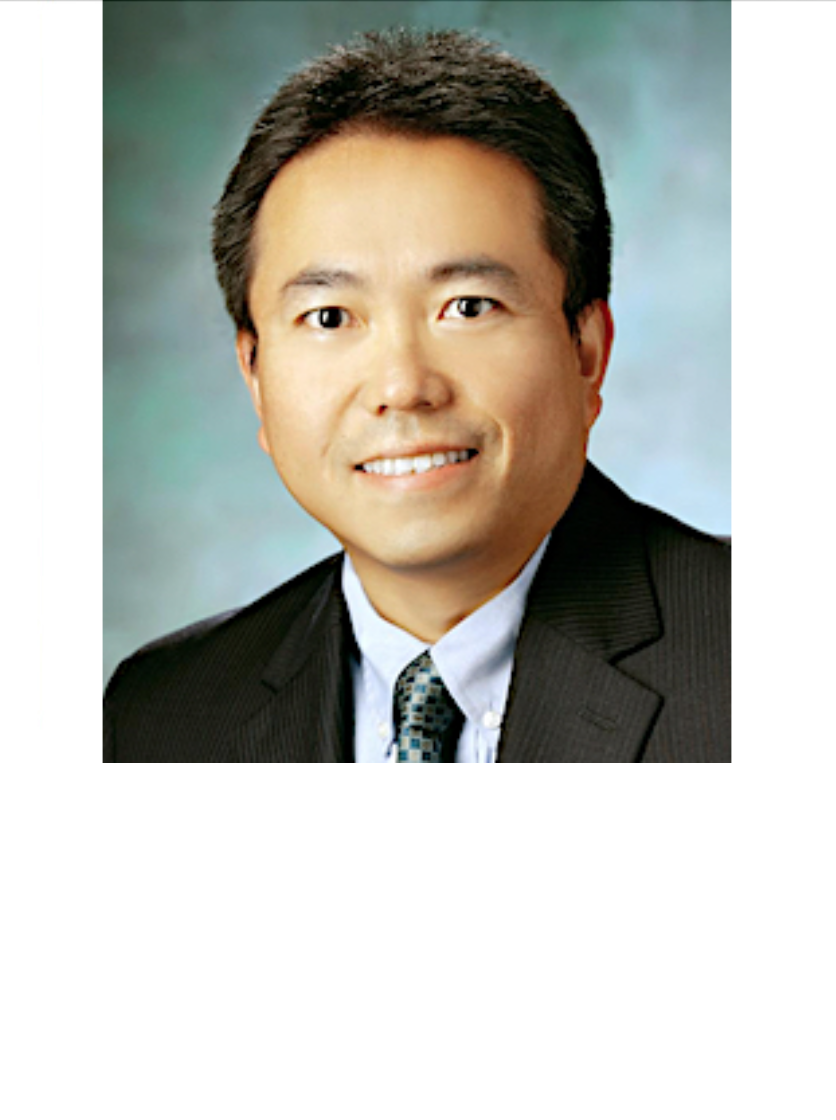
Bio
Significant progress has been made over the past two decades on the pathogenesis of individual neurodegenerative diseases, including Alzheimer's disease (AD), Parkinson's disease, amyotrophic lateral sclerosis (ALS) and frontotemporal dementia (FTD), as well as their distinct neurodegenerative processes. However, different neurodegenerative syndromes have been mainly studied mechanistically in isolation. There has been a lack of concerted effort to ascertain whether and how these pathogenic processes may be linked to one another. The Chen laboratory is interested in understanding the pathogenesis of neurodegenerative disorders, developing diagnostic markers and validating therapeutic targets. The laboratory uses an interdisciplinary approach involving Drosophila model, rodent model, iPS cells and postmortem human brain tissue to study the mechanisms underlying neurodegeneration in central nervous system.
Research Summary
Publications
Khalifa MA, Gagner B, Chen L, Murugan P, Klein ME, Racila E, Amin K, Miller F, Stewart J, Ding Y, Farooqui M, Dasaraju S, and Adeyi OA. Immunohistochemistry and immunofluorescence utilization audit by subspecialty in an academic setting: A step toward stewardship. Annals of Diagnostic Pathology, Volume 67, 2023, 152214, https://doi.org/10.1016/j.anndiagpath.2023.152214.
Cho SM, Geocadin RG, Caturegli G, Chan V, White B, Dodd-O J, Kim B-O, Sussman M, Choi C-W, Whitman G, Chen LL. Understanding characteristics of acute brain injury in adult extracorporeal membrane oxygenation: An autopsy study. Crit Care Med. 2020;48(6):e532-e536. doi:10.1097/CCM.0000000000004289
Donde A, Sun M, Ling JP, Braunstein KE, Pang B, Wen X, Cheng X, Chen L and Wong PC. Splicing repression is a major function of TDP-43 in motor neurons. Acta Neuropathologica. 2019; 138 (11):813–826. doi: 10.1007/s00401-019-02042-8
Rodriguez F, Brosnan‐Cashman J, Allen S, Vizcaino MA, Giannini C, Camelo‐Piragua S, Webb M,Matsushita M, Wadhwani N, Tabbarah A, Hamideh D, Jiang L, Chen L, Arvanitis LD, Alnajar H, Barber J, Velasco AR, Orr B, Heaphy CM. Alternative lengthening of telomeres, ATRX loss and h3‐k27m mutations in histologically defined pilocytic astrocytoma with anaplasia. Brain Pathology. 2019. 29 (1):126-140..
Nie SK, Tan Y, Zhang Z, Chen G, Xiong J, Hu D, Ye K, Zhang Y, Cao X, Zhang ZH, Chen L. Bilateral implantation of shear stress modifier in ApoE knockout mouse induces cognitive impairment and tau abnormalities. Frontiers Aging Neuroscience. 2018. 10:303.
Nino DF, Zhou Q, Yamaguchi Y, Chen L, Guajardo A, Kannan S, Sodhi CP, Hackam D. Cognitive impairments induced by necrotizing enterocolitis can be prevented by inhibiting microglial activation in mouse brain. Science Translational Medicine. 2018. 10(471). pii:eaan0237
Chen L. What triggers tauopathy in chronic traumatic encephalopathy? Neural Regeneration Research. 2018. 13(6): 985-986
Clinical Summary
Surgical Neuropathology; Molecular Pathology; Autopsy Neuropathology
Education
Fellowships, Residencies, and Visiting Engagements
Licensures and Certifications
Contact
Address
Mayo C514420 Delaware St. SE
Minneapolis, MN, 55455
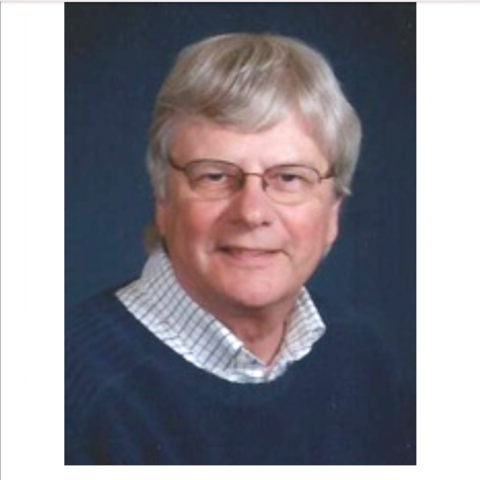
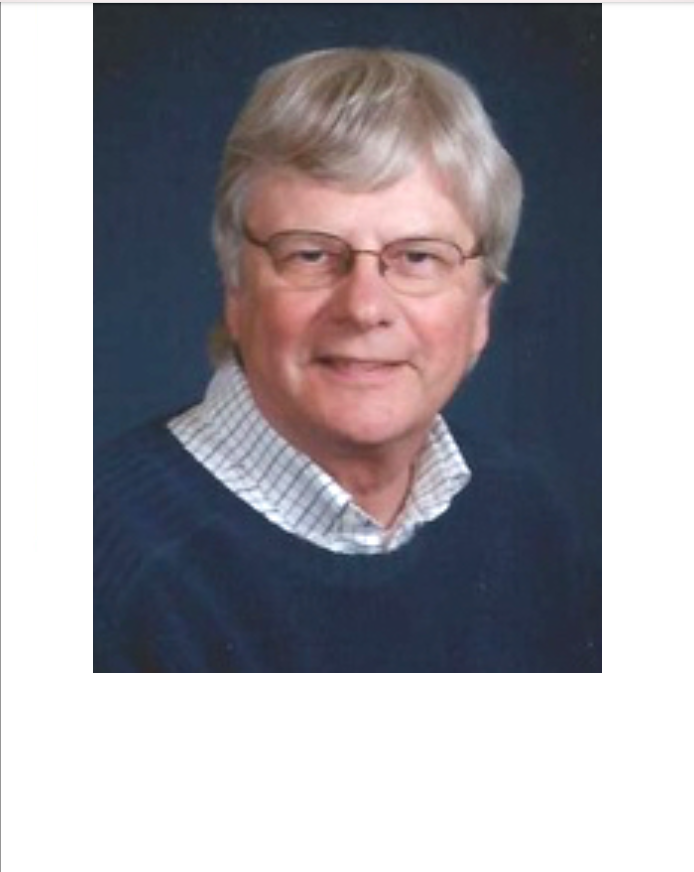
Bio
Dr. Clark is a neuropathologist, Director of Neuropathology Services at the University of Minnesota Medical Center, Fairview, and a consulting neuropathologist at Hennepin County Medical Center and the Minneapolis Veterans Affairs Medical Center. His research interests are in the neuropathological study of degenerative neurological diseases, most notably hereditary cerebellar ataxias and the central nervous system effects of myotonic dystrophy.
Education
Fellowships, Residencies, and Visiting Engagements
Licensures and Certifications
Grants and Patents
Selected Grants
Contact
Address
K-106 Diehl H505 Essex St SE
Minneapolis, MN 55455
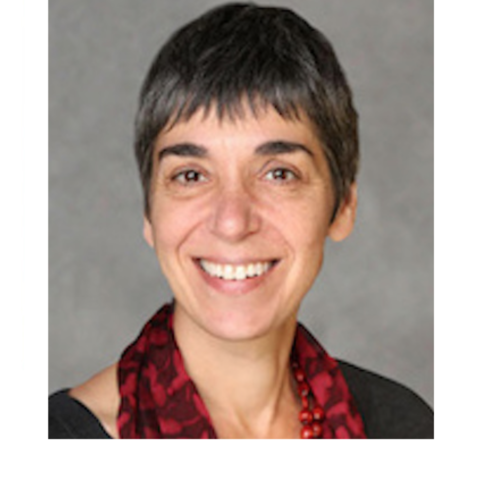
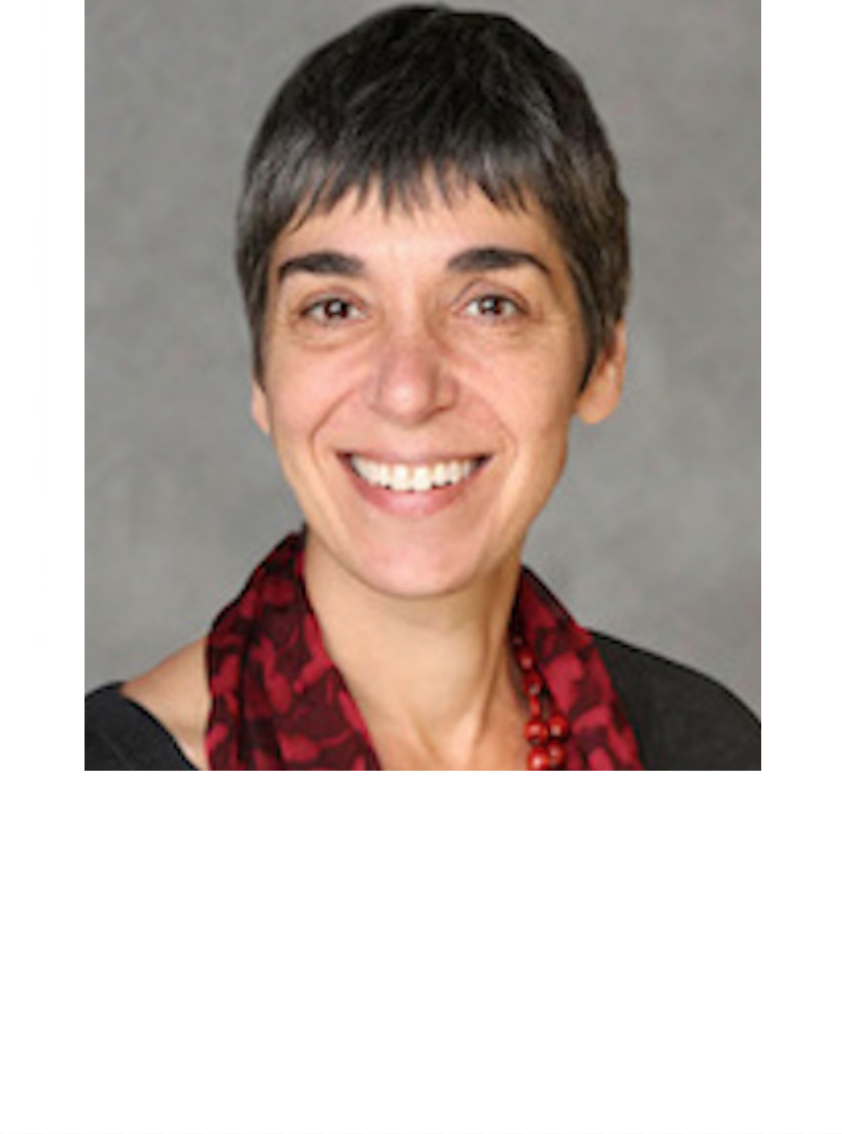
Bio
Dr. Cohn is Associate Director of Laboratories and Director of the Blood Bank Laboratory. She conducts research in the field of transfusion medicine. She focuses her efforts in two areas: patient blood management and platelet storage and utilization.Patient blood management applies evidence-based guidelines to limit unnecessary transfusions and maximize patient safety. Cohn uses technology and smart phone apps to gather data, which can help guide clinicians with transfusion decisions. To help foster a good transfusion culture, Cohn and her colleagues have developed overlapping databases that allow them to monitor every transfusion made in the hospital retrospectively and determine whether they were made within guidelines. Their interactive patient blood management system enables them to specifically target education efforts to where improvement is most needed. A significant drop in red blood cell usage has occurred coincident with the development of this monitoring program aimed at conserving transfusion resources and lowering costs. The interactive and collaborative program Cohn and her colleagues have developed can be tailored for use in small and large hospitals that want to develop a comprehensive patient blood management system. Other institutions have adopted the guidelines they have developed.Cohn is also interested in new platelet storage options, platelet utilization, and patient immunologic reactions to donor plasma. The University is one of the largest users of platelets in the nation because of the large number of umbilical cord stem cell transplants performed each year. Following FDA approval in 2009, platelets can now be stored in additive solutions in addition to donor plasma. Platelets stored in additive solutions are less frequently involved in transfusion reactions because donor plasma contains cytokines, allergens, and other molecules that can trigger these immunologic reactions. Some patients develop antibodies to class I HLA molecules on platelet surfaces and are refractory to conventional donor platelet transfusions. In her capacity as associate director of the HLA Laboratory, Cohn's group is investigating whether these patients can be identified in advance of transfusion.
Research Summary
Publications
-
Pagano MB, Foroutan F, Goel R, Allen ES, Cushing MM, Garcia DA, Hopkins CK, Klein K, Raval JS, Cohn CS. Vitamin K antagonist reversal strategies: Systematic review and network meta-analysis from the AABB. Transfusion. 2022 Aug;62(8):1652-1661. doi: 10.1111/trf.17010.
- Johnson, LM, Gniadek TJ, Cohn CS, Bachowski G, Karger AB. A 43-year-old woman with unexplained elevation of hCG. Clin BIochem 2018 Mar 26 pii:S0009-9120(17)31253-5. Doi: 10.1016/j.clinbiochem.2018.03.016. https://www.ncbi.nlm.nih.gov/pubmed/29588177
- Claudia Cohn, senior author on Critical Developments of 2017: A review of the literature from selected topics in transfusion. A committee report from the AABB’s Clinical Transfusion Medicine Committee, Transfusion, (DOI) - 10.1111/trf.14520. http://onlinelibrary.wiley.com/doi/10.1111/trf.14520/full
- Sackett K, Cohn CS, Fahey-Ahrndt K, Smith AR, Johnson AD. Successful treatment of pure red cell aplasia because of ABO major mismatched stem cell transplant. J Clin Apher. 2017 May 24. doi: 10.1002/jca.21553. [Epub ahead of print] PMID:28543448
- Johnson AD, Cohn CS. Xenotropic Murine Leukemia Virus-Related Virus (XMRV) and the Safety of the Blood Supply. Clin Microbiol Rev. 2016 Oct; 29(4):749-57
- Dzik WS, Ziman A, Cohn CS, Pai M, Lozano M, Kaufman R, Delaney M, Selleng K, Murphy M, Hervig T, Yazer M for the BEST Collaborative. Survival following ultra-massive transfusion: a review of 1360 cases. Transfusion 2016 Mar; 56(3):558-63.
Education
Fellowships, Residencies, and Visiting Engagements
Licensures and Certifications
Contact
Address
D-242-1 Mayo Building420 Delaware Street SE
Minneapolis, MN 55455
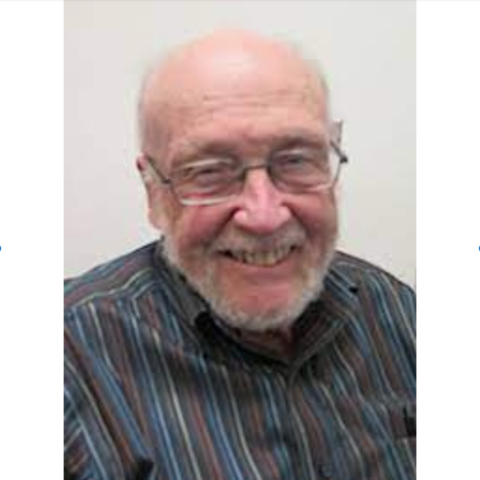
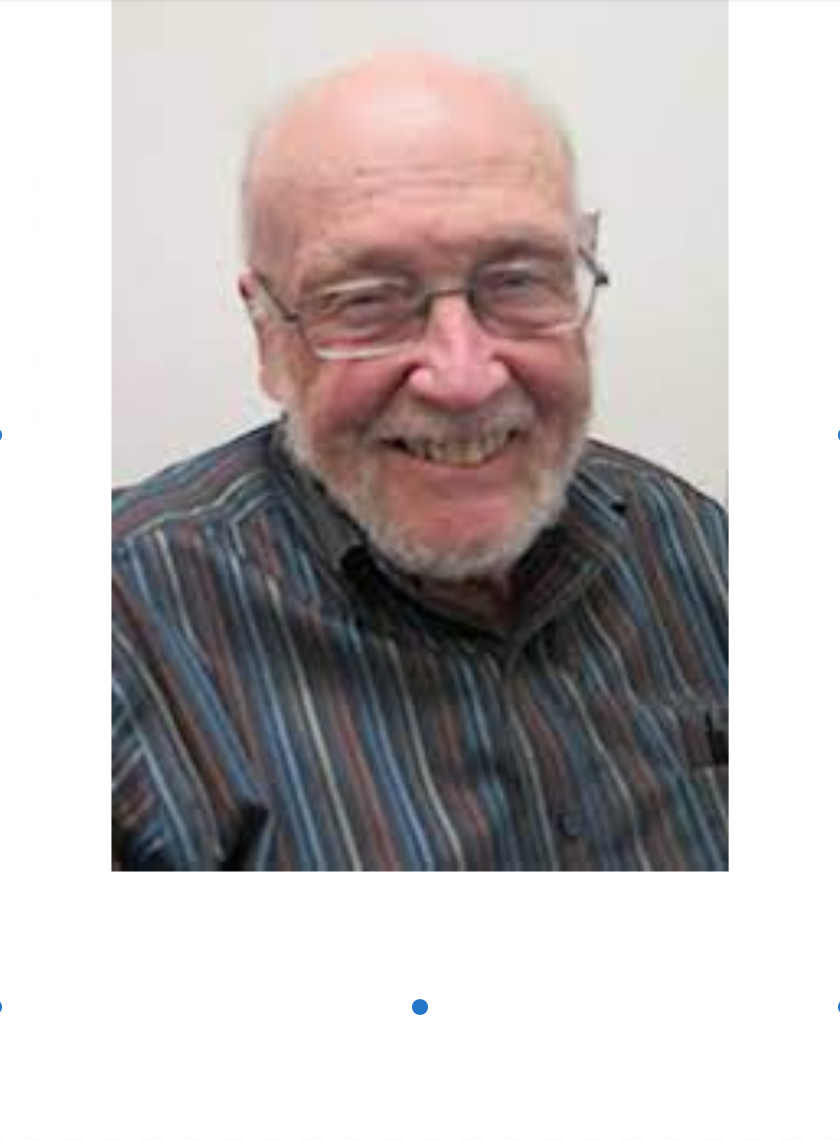
Research Summary
Publications
- Lundgren MC, Sapkota S, Peterson DJ, and Crosson JT: The antinuclear antibody dense fine speckled pattern and possible clinical associations: An indication of a proinflammatory microenvironment. Journal of Immunologic Methods, Jan. 2021. 488: 112904.https://doi.org/10.1016/j.jim.2020.112904.
- Karion WJ, Naides SJ, Crosson JT, Ansari MQ: Variability in testingfor antineutrophil cytoplasmic antibodies: A survey of participantsin the College of American Pathologists proficiency testing program.
Arch Pathol Lab Med 140, 524-528, 2016. - Lan, Xiqian; Rai, Partab; Chandel, Nirupama; Cheng, Kang; Lederman, Rivka; Saleem, Moin Ahson; Mathieson, Peter W.; Husain, Mohammad; Crosson, John T.; Gupta, Kalpna; Malhotra, Ashwani; Singhal, Pravin C. Morphine Induces Albuminuria by Compromising Podocyte Integrity. PLoS ONE 8(3); 2013
Contact
Address
D229 Mayo Building420 Delaware St SE
Minneapolis, MN 55455
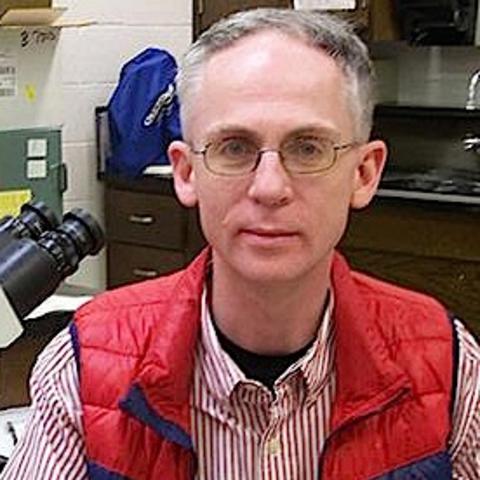
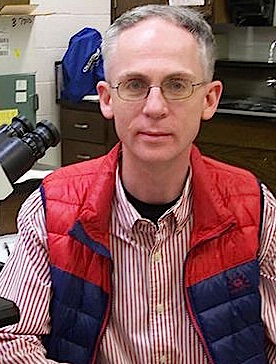
Bio
Dr. Czyzyk is a physician-scientist with clinical expertise in the native and transplant kidney disease and basic research interests in autoimmune diseases with emphasis on Type 1 Diabetes (T1D) in recent years. Although T1D has been traditionally considered a pediatric disease, this condition can affect older individuals too, including patients over 35 years of age who develop detectable autoimmunity against pancreatic islets and relatively rapid progression to insulin dependence [latent autoimmune diabetes in adults or LADA]. Regular insulin therapy or islet transplant in certain situations are the only treatments currently available for these patients.T1D is characterized by inflammatory destruction of small clusters of insulin producing cells called the islets of Langerhans. Czyzyk and his colleagues study how both normal function of the islets and their inflammation are regulated by islet sensing signals that are generated in the surrounding exocrine tissue - a process they believe is regulated by proteases. Czyzyk is particularly interested in how the balance between proteases and inhibitors of proteases called serpins affect inflammation and tissue regeneration of pancreatic islet cells. Studies in Czyzyk's laboratory suggest that an immune response to the serpin B13 protease inhibitor and the consequent increase in protease activity is unique in that it is protective during the destruction of pancreatic islets. Protocols that enhance protease activity regulated by serpin B13 may be beneficial to diabetic patients by both suppressing islet inflammation associated with autoimmunity and by promoting regeneration of insulin-producing beta cells in the islets. One such protocol involves a specific autoantibody Czyzyk's team has discovered that could serve as a protective biomarker. The molecule suppresses serpin B13 thereby allowing higher levels of cathepsin proteases that afford a level of protection for pancreatic islets. The autoantibody's mechanism of action is thought to involve protease-mediated cleavage of adhesion molecules in the extracellular matrix as well as Notch signaling, which affects endocrine cellular differentiation. Once the precise mechanism is known, Czyzyk will attempt to engineer endocrine-positive pancreatic progenitor cells, which differentiate into pancreatic islet alpha or beta cells, to become active beta cells that produce insulin. In their renal studies, Czyzyk and colleagues have focused on serum response factor (SRF) and podocytes, highly specialized cells of the kidney glomerulus that help regulate glomerular filtration. SRF is a master regulator of the actin cytoskeleton. Transcriptomic studies have shown that altered SRF expression may play a role in human kidney disease. The researchers found that SRF and two of its co-factors are vital for maintaining the structure and function of podocytes. Cultured podocytes with reduced SRF expression exhibit defects in the actin cytoskeleton and dysregulated expression of the MKL1 and MKL2 genes and perhaps others necessary for a functional actin cytoskeleton. Such defects disrupt podocyte structural development and normal renal function. Ongoing research is aimed at revealing target genes essential for podocyte homeostasis.
Research Summary
Publications
Kryvalap Y., Jiang M. L., Kryvalap N, Hendrickson C. and Czyzyk J. SerpinB13 antibodies promote b-cell development and resistance to type 1 diabetes. Science Translational Medicine 13: eabf1587, 2021.
Lo C.-W., Kryvalap Y., Sheu T.-J., Chang C.-H. and Czyzyk J. Cellular proliferation in mouse and human pancreatic islets is regulated by serpin B13 inhibition and downstream targeting of E-cadherin by cathepsin L. Diabetologia 62: 822-834, 2019.
Kryvalap Y., Chi-Wen Lo, Manuylova K., Baldizhar R, Salazar S., Okroj D., Jospe N., and Czyzyk J. Type 1 Diabetes TrialNet Study Group. Antibody response to serpin B13 induces regeneration in mouse pancreatic islets and slows down the decline in the residual beta-cell function in children with recent-onset type 1 diabetes mellitus. Journal of Biological Chemistry 291: 266-278, 2016.
Baldzizhar R., Fedorchuk C., Jha M., Henegariu O. and Czyzyk J. Anti-serpin antibody-mediated regulation of proteases in autoimmune diabetes. Journal of Biological Chemistry 288: 1612-1619, 2013.
Education
Fellowships, Residencies, and Visiting Engagements
Licensures and Certifications
Contact
Address
RM C425-1 MayoMinneapolis, MN 55455


Bio
Dr. Dasaraju earned an MBBS degree from Government Medical College, Anantapur, India. She completed observerships in hematology, oncology, transplantation, and pathology at the University followed by anatomic and clinical pathology residency training at the University of South Alabama in Mobile.
Dasaraju was a gyn/breast pathology fellow in 2021- 2022 and completed a surgical pathology fellowship in June, both in LMP.
Research Summary
Publications
Khalifa MA, Gagner B, Chen L, Murugan P, Klein ME, Racila E, Amin K, Miller F, Stewart J, Ding Y, Farooqui M, Dasaraju S, and Adeyi OA. Immunohistochemistry and immunofluorescence utilization audit by subspecialty in an academic setting: A step toward stewardship. Annals of Diagnostic Pathology, Volume 67, 2023, 152214, https://doi.org/10.1016/j.anndiagpath.2023.152214.
Newton S, Corbett C, Koyle MA, Mann R, Schlessinger E, Dasaraju S, Tu D. Case - Antenatal ultrasound diagnosis of a giant penile inclusion cyst. Can Urol Assoc J. 2023 Jul;17(7):E221-E223. doi: 10.5489/cuaj.8251.
Dasaraju S, Klein ME, Murugan P, Farooqui M, Khalifa MA. Microscopic Features of Vaginectomy Specimens from Transgender Patients. Am J Clin Pathol. 2022 Nov 3;158(5):639-645. doi: 10.1093/ajcp/aqac107
Dasaraju S, Amin K, Klein ME, Rivard C, Mattson J, Davidson S, Khalifa MA. Mixed neuroendocrine/Non-neuroendocrine neoplasm (MiNEN) of gastrointestinal lineage arising in an ovarian mature cystic teratoma. Gynecol Oncol Rep. 2022 Nov 5;44:101099. doi: 10.1016/j.gore.2022.101099.
Education
Fellowships, Residencies, and Visiting Engagements
Contact
Address
Mailing Address: MMC 76 Mayo 420 Delaware Minneapolis, MN 55455

Research Summary
Dr. Dehm is a member of the Division of Molecular Pathology and Genomics. His research laboratory focuses on the role of the androgen receptor (AR) and alterations in AR signaling in prostate cancer development and progression. As they develop, nearly all metastatic prostate cancers remain dependent on androgens--male hormones of which testosterone is best known. Following treatment targeting the AR including anti-androgen drug therapies and surgical castration to prevent androgen production, patients typically develop resistance. Dehm studies the changes that occur in the AR in response to these drug therapies to understand the mechanisms underlying the progression to therapy-resistant disease. His work has revealed new ways in which cancer cells can re-activate the androgen/AR pathway. If these mechanisms are better understood, new AR-targeted therapies could be developed that suppress prostate cancer growth more effectively with more durable remissions.Dr. Dehm's research team employs a variety of genomic engineering, molecular biology, and biochemistry tools to home in on the regulatory behavior of the AR and the signals it uses to promote resistance. These tools are used to analyze clinical tissues, prostate cancer cell lines, models in which patient-derived tumor tissue is grown in mice (xenografts), and fresh surgical tissue that is propagated in the laboratory as explants. Dehm and his colleagues have found that altered protein forms of the AR, termed AR variants, can be synthesized in resistant tumors. These AR variants are missing the site of the protein responsible for binding to androgens, which is the same site to which anti-androgens bind. However, these AR variants retain all other parts of the protein that are required for binding to DNA and activation of transcription. Therefore, these AR variants are able to carry out most of the functions of the AR protein, but in a way that no longer require androgens and is completely insensitive to anti-androgens. Dehm and his co-investigators are now focused on understanding how these AR variants are regulated, with the ultimate goal of finding ways to inhibit them.Transcription factors like AR variants are challenging drug targets because key binding events occur via protein:DNA or protein:protein interfaces rather than through the lock-and-key mechanism of androgen binding to the AR, which medicinal chemists can more readily exploit. However, Dehm notes that recent advances in small-molecule design and peptide chemistry have overcome some of these challenges, and could potentially be applied to AR variants. Ultimately, identifying and targeting key processes required for AR variants to remain active in prostate cancer cells could provide an avenue to overcome the challenge of therapeutic resistance in patients.
Publications
Zivanovic A, Miller JT, Munro SA, Knutson TP, Li Y, Passow CN, Simonaitis P, Lynch M, Oseth L, Zhao SG, Feng FY, Wikström P, Corey E, Morrissey C, Henzler C, Raphael BJ, Dehm SM. Co-evolution of AR gene copy number and structural complexity in endocrine therapy resistant prostate cancer. NAR Cancer. 2023 Aug 24;5(3):zcad045. doi: 10.1093/narcan/zcad045.
Daniel M, Knutson TP, Sperger JM, Li Y, Singh A, Stahlfeld CN, Passow C, Auch B, Lang JM, Dehm SM. AR gene rearrangement analysis in liquid biopsies reveals heterogeneity in lethal prostate cancer. Endocr Relat Cancer. 2021 Aug 11;28(9):645-655. doi: 10.1530/ERC-21-0157.
Li Y, Yang, R, Henzler C, Ho Y, Passow C, Auch B, Carreira S, Rodrigues DN, Bertan C, Hwang TH, Quigley DA, Dang HX, Morrissey C, Fraser M, Plymate SR, Maher CA, Feng FY, De Bono J, Dehm SM. Diverse AR Gene Rearrangements Mediate Resistance to Androgen Receptor Inhibitors in Metastatic Prostate Cancer. Clin. Cancer Res., 26(8):1965-1976, 2020.
Yang R, Van Etten JL, and Dehm SM. Indel detection from DNA and RNA sequencing data with transIndel. BMC Genomics, 2018; 19(1):270. doi: 10.1186/s12864-018-4671-4..
Zadra G, Ribeiro CF, Chetta P, Ho Y, Cacciatore S, Gao X, Syamala S, Bango C, Photopoulos C, Huang Y, Tyekucheva S, Bastos DC, Tchaicha J, Lawney B, Uo T, D'Anello L, Csibi A, Kalekar R, Larimer B, Ellis L, Butler LM, Morrissey C, McGovern K, Palombella VJ, Kutok JL, Mahmood U, Bosari S, Adams J, Peluso S, Dehm SM, Plymate SR, Loda M. Inhibition of de-novo lipogenesis targets androgen receptor signaling in castration resistant prostate cancer. Proc. Natl. Acad. Sci. USA. 116: 631-640, 2019.
Contact
Address
560D MCRB425 East River Pkwy
Minnapolis, MN 55455
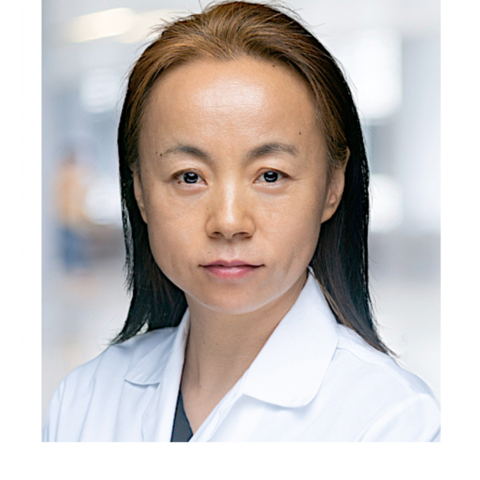
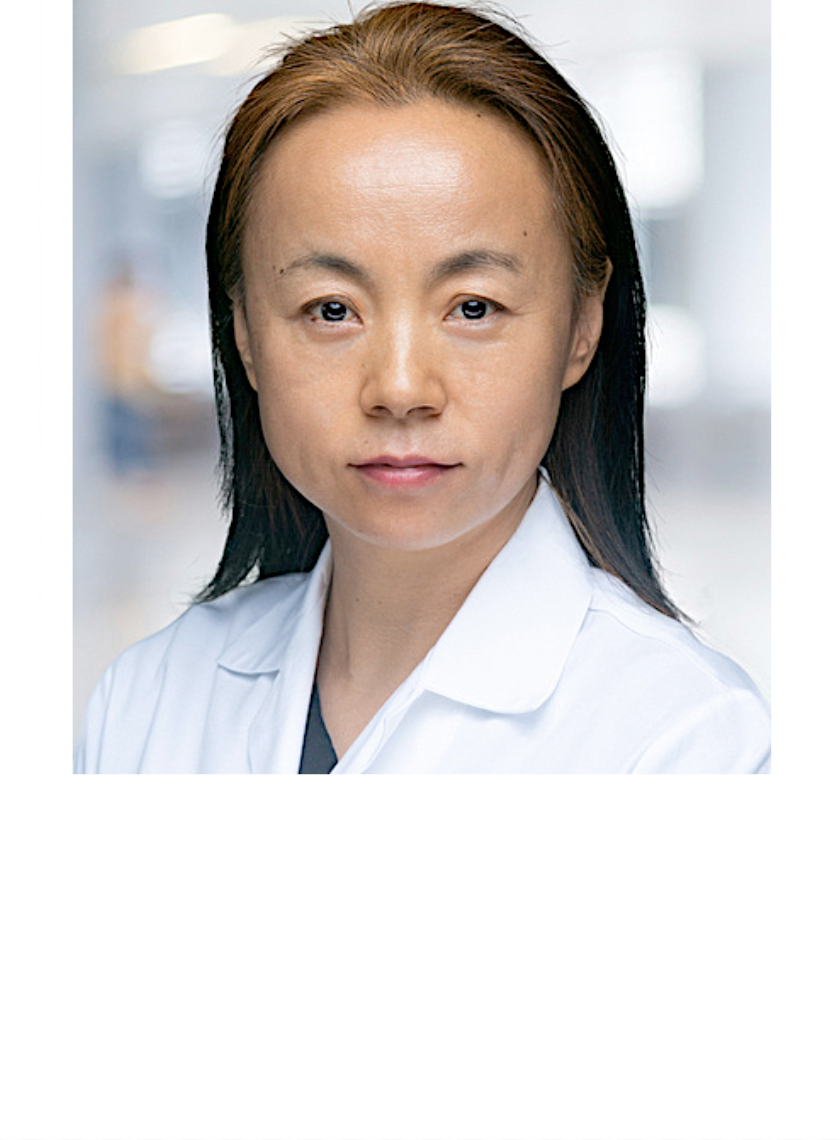
Research Summary
Dr. Ding's research interests are in the development of organoid-based models for the study of neuroendocrine tumors and targeted drug therapies for metastatic renal cell carcinomas.
- Renal histology and pathology
- Neuroendocrine cancer
Publications
Khalifa MA, Gagner B, Chen L, Murugan P, Klein ME, Racila E, Amin K, Miller F, Stewart J, Ding Y, Farooqui M, Dasaraju S, and Adeyi OA. Immunohistochemistry and immunofluorescence utilization audit by subspecialty in an academic setting: A step toward stewardship. Annals of Diagnostic Pathology, Volume 67, 2023, 152214, https://doi.org/10.1016/j.anndiagpath.2023.152214.
Lee HJ, Donati A, Feliers D, Sun Y, Ding Y, Madesh M, Salmon AB, Ikeno Y, Ross C, O'Connor CL, Ju W. Chloride channel accessory 1 integrates chloride channel activity and mTORC1 in aging‐related kidney injury. Aging Cell. 2021 Jun 12:e13407.
Agarwal AN, Shieh WJ, Goldsmith CS, Qvarnstrom Y, Ding Y, Dallas SD, Mais DD. The brief case: Disseminated microsporidiosis with intestinal cryptosporidium coinfection in a patient with Kaposi’s Sarcoma and Castleman Disease presenting with acute kidney injury. Journal of Clinical Microbiology. 2021 May 19;59(6):e02335-20.
Armaiz-Pena, G., Flores, S. K., Cheng, Z.M. ... Ding, Y, Dahia, P. Genotype-phenotype features of germline variants of the TMEM127 pheochromocytoma susceptibility gene: A 10-Year Update. The Journal of Clinical Endocrinology & Metabolism. 2021 Jan;106(1):e350-64.
Kincaide E, Hitchman K, Hall R, Yamaguchi I, Ding Y, Crowther B. Impact of active antibody‐ mediated rejection treatment on donor‐specific antibodies in pediatric kidney transplant recipients. Pediatric Transplantation. 2019 Dec;23(8):e13590.
Education
Fellowships, Residencies, and Visiting Engagements
Licensures and Certifications
Contact
Address
Mayo Memorial Building, C420420 Delaware St SE
Minneapolis, MN 55455

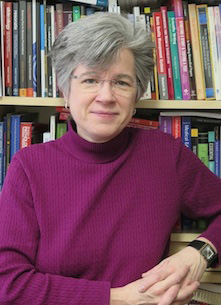
Bio
Dr. Dolan is a clinical cytogeneticist, associate director of the Cytogenetics Laboratory, and a member of the Division of Molecular Pathology and Genomics. She currently collaborates in research projects with colleagues in areas as diverse as surgical pathology, hematopathology, oncology and bone marrow transplantation, and oral pathology. She has ongoing collaborations with Dr. Celalettin Ustun in the Division of Hematology, Oncology and Transplantation exploring the impact of cytogenetic findings on hematopoietic stem cell transplant outcomes. These projects have investigated the role of classical (G-banding) and molecular cytogenetics (fluorescence in situ hybridization, FISH) in assessing the level of disease burden before bone marrow or stem cell transplantation.In another collaboration with Drs. Ustun, Michael Linden (Laboratory Medicine and Pathology) and others in the United States and internationally, Dolan is exploring the role of mast cells in core-binding factor acute myeloid leukemias. Dolan is also working with Dr. Ustun and Drs. Linden, Sophia Yohe and Elizabeth Courville (Laboratory Medicine and Pathology) on a project to determine if residual disease at the time of transplant, as assessed by cytogenetic and other methods, impacts outcomes of various types of pre-transplant conditioning regimens.Dolan is also collaborating with Dr. Aleksandr Lazaryan and colleagues in the Division of Hematology, Oncology and Transplantation in a study to determine the prognostic significance of cytogenetic abnormalities in patients with Philadelphia chromosome-negative acute lymphoblastic leukemia undergoing allogeneic hematopoietic stem cell transplantation in complete remission.Dolan is a co-investigator with Dr. Ioannis Koutlas and others in the Department of Oral Pathology in studies designed to determine whether the PLAG1 gene is rearranged in entities other than pleomorphic adenomas arising in salivary glands. She is also working with a colleague at Vanderbilt University on an immunohistochemical and FISH study of Ewing sarcoma and atypical teratoid/rhabdoid tumors.
Publications
- Naumchik B, Weigel BJ, Murati MA, Rudzinski E, Paulson V, Lockwood CM, Dolan M, Flanagan S, Luquette M. Congenital infantile fibrosarcoma involving pelvic wall and thigh soft tissues and placenta, presenting with coagulopathy. Pediatr Dev Pathol. 2022 Jul 14:10935266221114017. doi: 10.1177/10935266221114017.
- Han SY, Mrózek K, Voutsinas J, Wu Q, Morgan EA, Vestergaard H, Ohgami R, Kluin PM, Kristensen TK, Pullarkat S, Møller MB, Schiefer AI, Baughn LB, Kim Y, Czuchlewski D, Hilberink JR, Horny HP, George TI, Dolan M, Ku NK, Arana Yi C, Pullarkat V, Kohlschmidt J, Salhotra A, Soma L, Bloomfield CD, Chen D, Sperr WR, Marcucci G, Cho C, Akin C, Gotlib J, Broesby-Olsen S, Larson M, Linden MA, Deeg HJ, Hoermann G, Perales MA, Hornick JL, Litzow MR, Nakamura R, Weisdorf D, Borthakur G, Huls G, Valent P, Ustun C, Yeung CCS. Secondary cytogenetic abnormalities in core-binding factor AML harboring inv(16) vs t(8;21). Blood Adv. 2021 May 25;5(10):2481-2489. doi: 10.1182/bloodadvances.2020003605.
- Erickson BE, Najjar O, Damast S, Blakaj A, Tymon-Rosario J, Shahi M, Santin A, Klein M, Dolan M, Cimino-Mathews A, Buza N, Ferriss JS, Stone RL, Khalifa M, and Fader AN. Human epidermal growth factor 2 (HER2) in early stage uterine serous carcinoma: A multi-institutional cohort study. Gynecologic Oncology, 2020; 159 (1): 17-22. https://doi.org/10.1016/j.ygyno.2020.07.016.
- Ustun, C., Morgan, E.A., Ritz, E.M., Vestergaard, H., Pullarkat, S., Kluin, P.M., Ohgami, R., Baughn, L.B., Kim, Y., Ku, N.K., Czuchlewski, D., Boe Møller, M., Schiefer, A.‐I., Mrózek, K., Horny, H.‐P., George, T.I., Kielsgaard Kristensen, T., Beck, T., Nathan, S., Arana Yi, C., Yeung, C., Pullarkat, V., Gotlib, J., Akin, C., Kohlschmidt, J., Salhotra, A., Soma, L., Chen, D., Han, S.Y., Cho, C., Sperr, W., Broesby‐Olsen, S., Linden, M.A., Dolan, M., Hoermann, G., Hornick, J.L., Bloomfield, C., Nakamura, R., Joachim Deeg, H., Litzow, M.R., Borthakur, G., Weisdorf, D., Huls, G., Perales, M.‐A., Valent, P. and Marcucci, G. Core‐binding factor acute myeloid leukemia with inv(16): Older age and high white blood cell count are risk factors for treatment failure. Int J Lab Hematol., 2020. doi:10.1111/ijlh.13338.
- Gilles SR, Yohe SL, Linden MA, Dolan M, Hirsch B, Grzywacz B. CD161 Is expressed in a subset of T-cell prolymphocytic leukemia cases and Is useful for disease follow-up.Am J Clin Pathol. 2019 Sep 9;152(4):471-478. doi: 10.1093/ajcp/aqz060.
Contact
Address
15-180 Phillips-Wangensteen Bldg516 Delaware St SE
Minneapolis, MN 55455
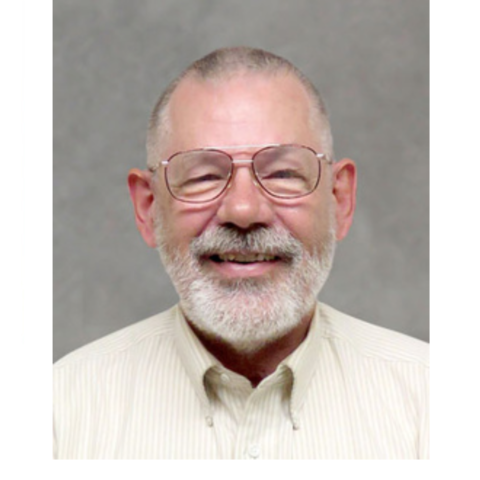
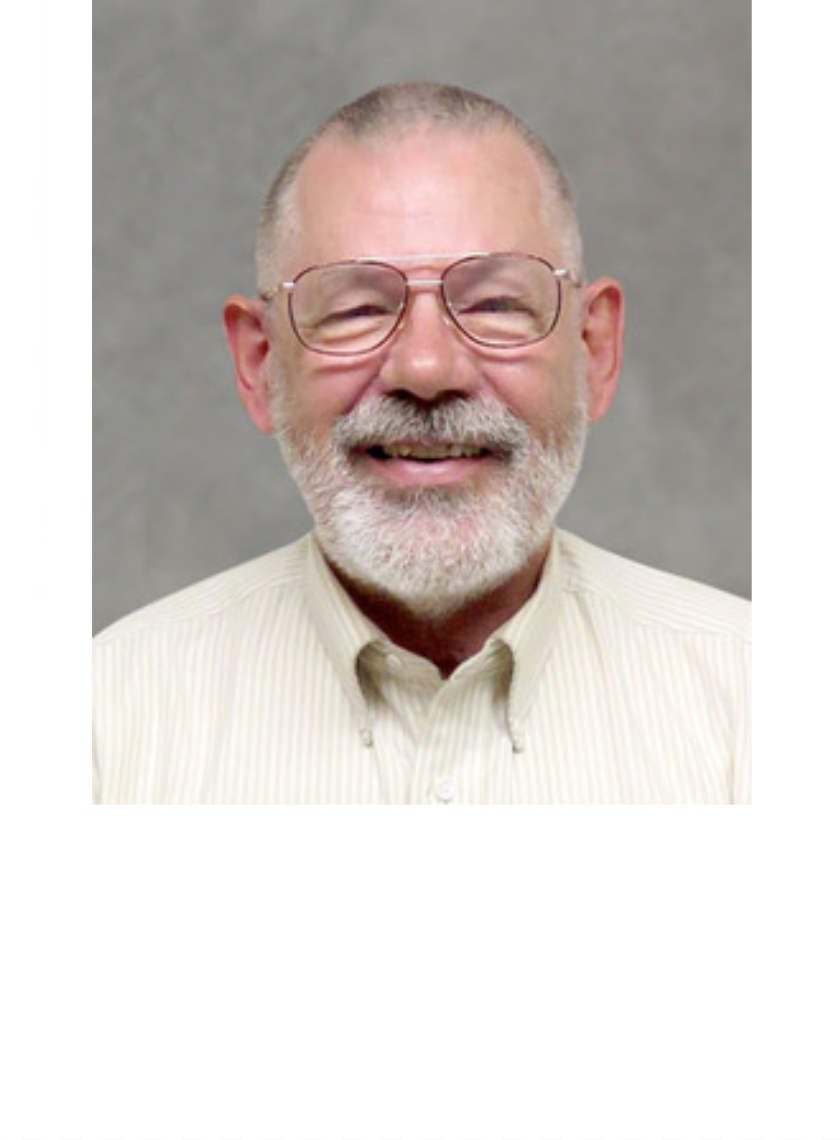
Research Summary
Dr. Eckfeldt is a faculty investigator in the Advanced Research and Diagnostics Laboratory (ARDL), which provides central laboratory testing services for large, NIH-funded multi-center clinical trials. Through numerous national studies he has established himself as a leading researcher in the area of cardiovascular disease epidemiology, particularly the role lipids and other biomarkers play in cardiovascular diseases. Eckfeldt was principal laboratory investigator for the Hispanic Community Health Study, an NIH-funded multicenter epidemiologic study of U.S. Hispanic/Latino populations, and is the PI for the ancillary Hispanic Community Children's Health Study / Study of Latino Youth (SOL Youth), a multicenter study of Hispanic/Latino children living in the U.S. The SOL Youth study is designed to disclose the prevalence and distribution of obesity-promoting lifestyle behaviors, cardio-metabolic risk profiles, and novel biomarkers associated with obesity and insulin resistance.
In recent years Eckfeldt has focused mainly on kidney disease. He is a co-investigator with the Chronic Kidney Disease Biomarkers Consortium (CKD-BioCon). CKD-BioCON is a longitudinal study involving multiple universities with NIH’s National Institute of Diabetes and Digestive and Kidney Diseases that seeks to discover, develop, validate and qualify biomarkers based on biosamples from well-characterized CKD patients. He also serves as co-PI for the Preventing Early Renal Loss in Diabetes (PERL) consortium. The consortium has undertaken a multi-center, double-blind, placebo-controlled, randomized clinical trial aimed at evaluating the efficacy of allopurinol in preventing kidney function loss in individuals with type 1 diabetes. In addition, Eckfeldt is a co-investigator and the central laboratory director in the chronic kidney disease epidemiology collaboration (CKD-EPI). In this capacity he tests protein biomarkers such as cystatin C, an important marker for measuring the glomerular filtration rate, which indicates how well the kidneys are working.
Dr. Eckfeldt has long had an interest in assuring the reliability and long-term stability of assay results in large-scale epidemiological observational and interventional research studies. In addition he has sought to further the standardization and harmonization of clinical laboratories and inter-laboratory comparability through committee work at the College of American Pathologists (CAP) and working group participation at the International Standards Organization (ISO).
Publications
- Chen N, Shi H, Zhang L, Zuo L, Xie J, Xie D, Karger AB, Miao S, Ren H, Zhang W, Wang W, Pan Y, Minji W, Sui Z, Okparavero A, Simon A, Chaudhari J, Eckfeldt JH, Inker LA, Levey AS. GFR Estimation Using a Panel of Filtration Markers in Shanghai and Beijing. Kidney Med. 2020;2(2):172-180. Published 2020 Jan 31. doi:10.1016/j.xkme.2019.11.004.
- Seegmiller JC, Eckfeldt JH, Lieske JC. Challenges in Measuring Glomerular Filtration Rate: A Clinical Laboratory Perspective. Adv Chronic Kidney Dis. 2018 Jan;25(1):84-92. doi: 10.1053/j.ackd.2017.10.006
- Schwartz GJ, Wang H, Erway B, Nordin G, Seegmiller J, Lieske JX, Bäck S-E, Miller WG, Eckfeldt JH. Multicenter Laboratory Comparison of Iohexol Measurement. The Journal of Applied Laboratory Medicine Mar 2018, 2 (5) 711-724; DOI: 10.1373/jalm.2017.024240 http://jalm.aaccjnls.org/content/2/5/711
- Karger AB, Inker LA, Coresh J, Levey AS, Eckfeldt JH. Novel Filtration Markers for GFR Estimation. EJIFCC 2017 Dec 19:28(4):277-288.eCollection 2017 Dec. https://www.ncbi.nlm.nih.gov/pubmed/29333147
- Eckfeldt JH, Karger AB, Miller WG, Rynders GP, Inker LA. Performance in measurement of serum cystatin C by laboratories participating in the college of american pathologists 2014 CYS survey. Arch Pathol Lab Med 2015;139:888-893.
Contact
Address
763-1Mayo420 Delaware St SE
Minneapolis, MN 55455
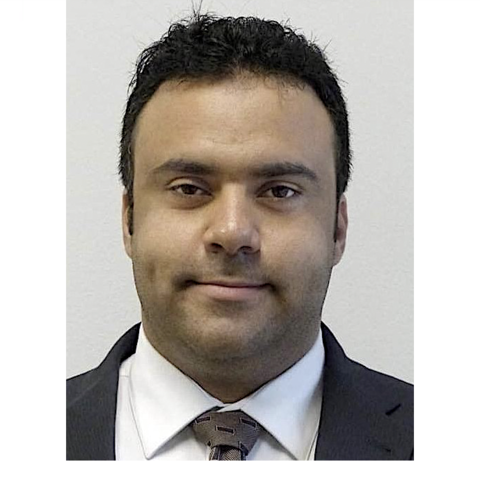
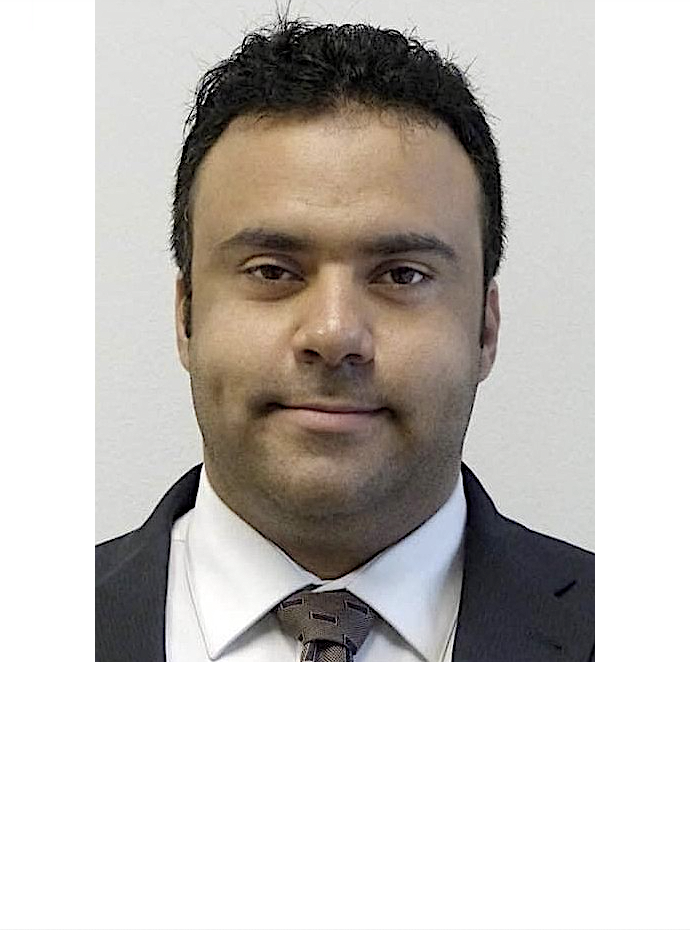
Bio
Dr. Elbaz Younes earned an MBBCh degree from Cairo University. He completed an anatomic pathology residency at El-Wadi Hospital in Cairo, an anatomic and clinical pathology residency at the University of Illinois, a hematopathology fellowship at the Moffitt Cancer Center in Tampa, and a molecular pathology fellowship at the Cleveland Clinic. He was awarded best fellow by the Moffitt Cancer Center in 2021.
Elbaz Younes was also a research assistant at the Baylor College of Medicine from 2014-2017.
Research Summary
Pubications
Elbaz Younes I, Sokol L, Zhang L. Rosai-Dorfman Disease between Proliferation and Neoplasia. Cancers (Basel). 2022 Oct 27;14(21):5271. doi: 10.3390/cancers14215271.
Ellis A, Elbaz Younes I, Shao H, Zhang X. Blastic Indeterminate Dendritic Cell Tumor Associated With Chronic Myelomonocytic Leukemia. Am J Dermatopathol. 2022 Sep 1;44(9):691-695. doi: 10.1097/DAD.0000000000002202.
Kord A, Kravis B, Rsotami S, Pandhi M, Elbaz Younes I, Bauml J. Enchondroma protuberans of the hand: A case report. Radiol Case Rep. 2020 May 6;15(7):943-946. doi: 10.1016/j.radcr.2020.04.026. Erratum in: Radiol Case Rep. 2020 Jul 20;15(9):1728.
Education
Fellowships, Residencies, and Visiting Engagements
Licensures and Certifications
Honors and Recognition
Contact
Address
Mailing Address: MMC 609 Mayo 420 Delaware Minneapolis, MN 55455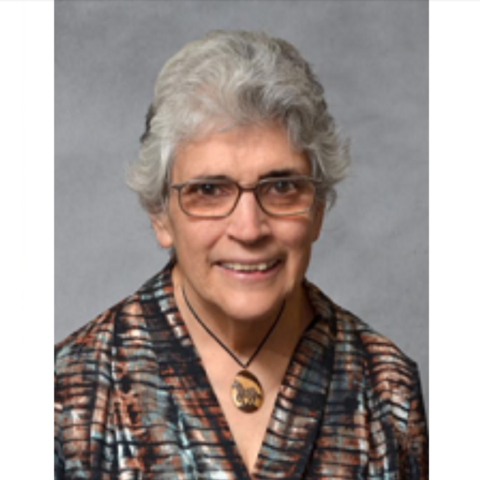
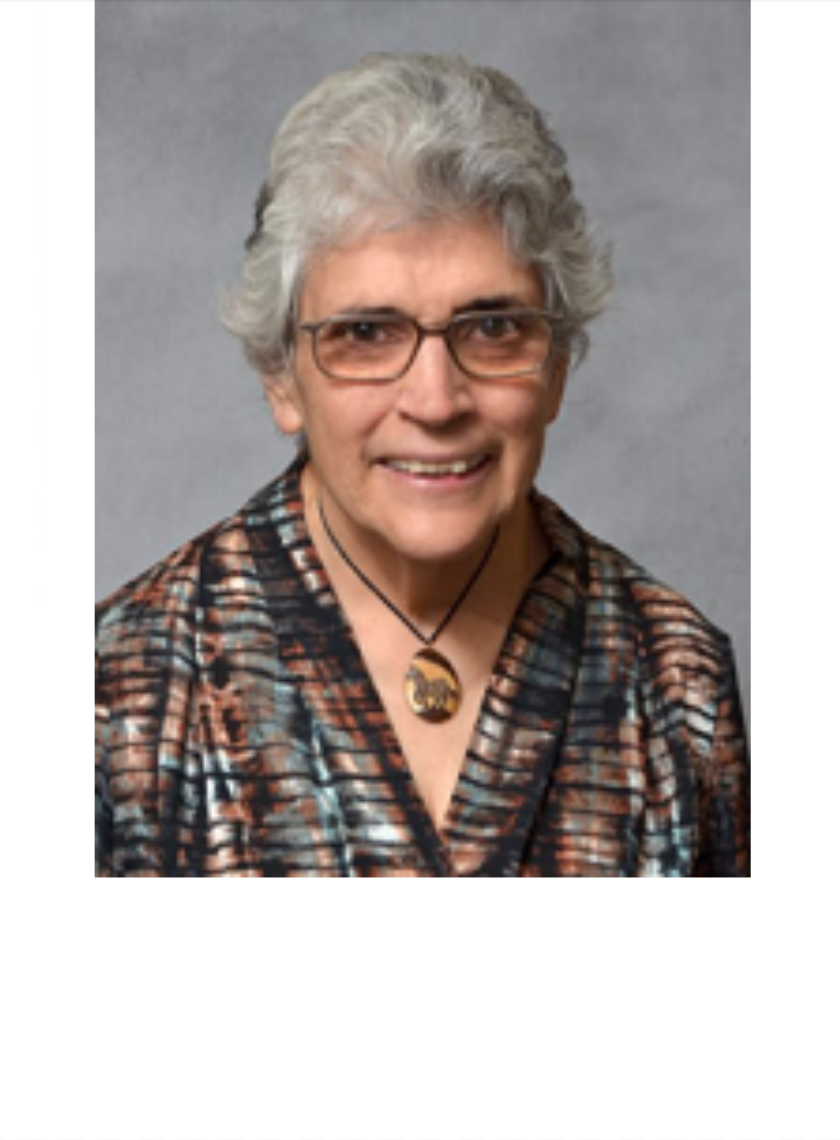
Research Summary
Dr. Ellis focuses on developing bioinformatics tools that support the work of life science colleagues. With biochemist Larry Wackett, Dr. Ellis has developed an innovative microbial biotechnology database on the World Wide Web: The University of Minnesota Biocatalysis/Biodegradation Database.
Publications
- Ellis LBM, Wackett LP. (2012) Use of the University of Minnesota Biocatalysis/ Biodegradation Database for Study of Microbial Degradation. Microbial Informatics and Experiment, 2: 1 (4 January 2012).
- Fenner K, Gao J, Kramer S, Ellis L, Wackett L. (2008) "Data Mining to Limit Combinatorial Explosion in Biodegradation Pathway Prediction." Bioinformatics, 24: 2079 - 2085.
- Gao J, Ellis LBM, Wackett LP. (2010) "The University of Minnesota Biocatalyisis/Biodegradation Database: improving public access." Nucleic Acids Research; 38: D488-D491.
- Wicker J, Fenner K, Ellis L, Wackett L, Kramer S (2010) "Predicting Biodegradation Products and Pathways: A Hybrid Knowledge-Based and Machine Learning Based Approach." Bioinformatics. 26: 814 - 821.
- Gao J, Ellis LBM, Wackett LP. (2011) "The University of Minnesota Pathway Prediction System: multi-level predictions and visualization." Nucleic Acids Research; 38: D488-D491.
Grants and Patents
Selected Grants
Contact
Address
791 Mayo building420 Delaware Street SE
Minneapolis, MN 55455
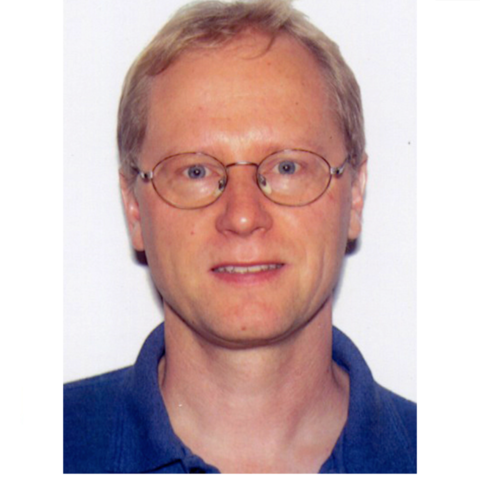
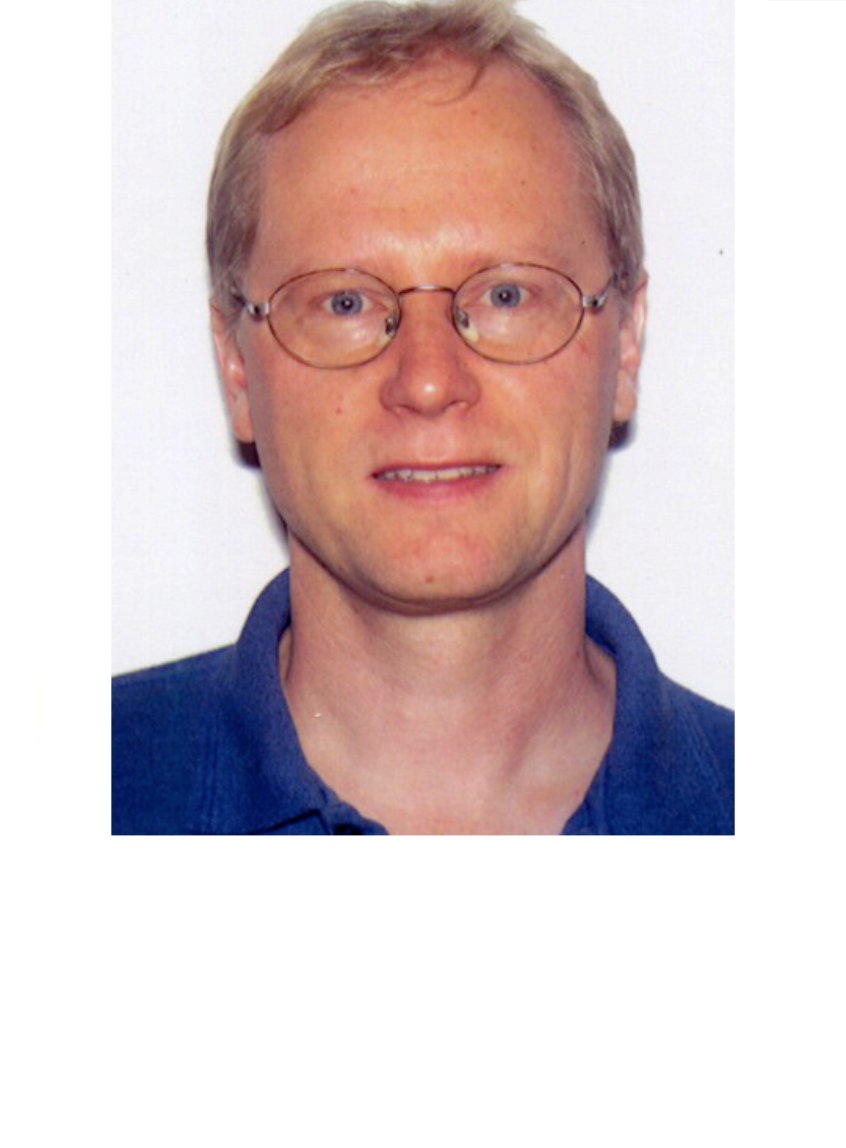
Research Summary
Dr. Farrar holds the Virginia and David Utz Land Grant Chair in Fundamental Immunology, is a member of the Division of Molecular Pathology and Genomics, and is a member of the Center for Immunology. His research is focused in three broad areas: B-cell development in the bone marrow and B-cell acute lymphoblastic leukemia (ALL), the developmental pathway of T regulatory cells, and cancer immunotherapy.Farrar and his colleagues made a transgenic mouse that expresses a weakly constitutively active form of a transcription factor called STAT5b in B cells and T cells. During B-cell development in these mice they observed an expansion of B-cell progenitors. Some of these mice would develop B-cell ALL. Farrar and a colleague who studies the B-cell adapter protein BLNK that links the pre-B cell receptor to downstream signaling cascades found that nearly all transgenic mice with weakly expressed STAT5b and lacking BLNK developed B-cell ALL. The combination of crossbreeding experiments with transgenic STAT5b mice and the Sleeping Beauty transposon mutagenesis system enabled Farrar's team to identify through crossing studies a number of key genes downstream of BLNK (BTK, protein kinase C beta, NF-?B) that cooperate with STAT5b. Key among these downstream genes is the zinc finger transcription factor Ikaros, a regulator of the earliest stage of B cell development. Farrar and his colleagues found that STAT5b and Ikaros, though separate signaling pathways, bind to the same sets of genes in mice. Subsequent analysis of activation ratios for the STAT5b and Ikaros pathways in human clinical specimens of ALL showed a correlation with patient survival and remission duration following treatment, demonstrating their potential clinical importance. Farrar's STAT5b transgenic mice also show a major expansion of CD4-positive and FoxP3-positive regulatory T cells (Tregs), which provided the basis for a second research thrust. FoxP3 is a major transcription factor for the development of Tregs. In a major study Farrar and two of his colleagues demonstrated that the interleukin 2 (IL-2) receptor signaling specifically through STAT5 was critical for the development of Tregs by binding to the FoxP3 gene. In a follow-up study Farrar working with another collaborator proposed a two-step model for Treg development: a strong signal through the T-cell receptor (TCR) produces Treg progenitors with high expression of cell-surface IL-2 receptors; IL-2 signals then drive the conversion of the Treg progenitors into mature Tregs. The way a progenitor cell knows that its got a strong TCR signal is that it is linked to a series of cell-surface tumor necrosis factor receptor superfamily (TNFRSF) members that prime the cell to be sensitive to IL-2. The tighter the TNFRSF linkage and thus IL-2 sensitivity, the greater the likelihood of the progenitor cell becoming a Treg. Tregs are focused on high-affinity self-antigens like insulin and in that capacity help to prevent autoimmune reactions like diabetes. A third focus of Farrar's research, one that bridges the two described above, is cancer immunotherapy. His team is tracking how the immune system responds to tumor antigens in leukemia, specifically ALL with the BCR-ABL fusion gene. With the working hypothesis that the BCR-ABL fusion gene produces a peptide that the immune system does not recognize and could serve as a rejection antigen, Farrar's laboratory set out to develop a tool to track the immune response to BCR-ABL. In this effort he collaborated with Marc Jenkins in Microbiology who has developed MHC class II tetramers. These tetramers allow tracking of T cells specific for one MHC peptide complex. By tetramerizing the BCR-ABL peptide, they found that there are a small number T cells in mice that can recognize the peptide encoded by the fusion of BCR to ABL.. Injecting leukemia cells into these mice produces a Treg expansion, which serves to suppress any immune response. Farrar and his colleagues are employing a vaccination strategy to see whether it is possible to boost the immune response and prolong survival in mice and ultimately in humans following chemotherapy.
Publications
-
Lee RD, Knutson TP, Munro SA, Miller JT, Heltemes-Harris LM, Mullighan CG, Jepsen K, Farrar MA. Nuclear corepressors NCOR1/NCOR2 regulate B cell development, maintain genomic integrity and prevent transformation. Nat Immunol. 2022 Dec;23(12):1763-1776. doi: 10.1038/s41590-022-01343-7.
-
Tracy SI, Venkatesh H, Hekim C, Heltemes Harris LM, Knutson TP, Bachanova V, Farrar MA. Combining nilotinib and PD-L1 blockade reverses CD4+ T-cell dysfunction and prevents relapse in acute B-cell leukemia. Blood. 2022 Mar 11.
- Irey EA, Lassiter CM, Brady NJ, Chuntova P, Wang Y, Knutson TP, Henzler C, Chaffee TS, Vogel RI, Nelson AC, Farrar MA, Schwertfeger KL. JAK/STAT inhibition in macrophages promotes therapeutic resistance by inducing expression of protumorigenic factors. Proc Natl Acad Sci U S A. 2019 May 30. pii: 201816410. doi: 10.1073/pnas.1816410116.
- Liu B, Salgado OC, Singh S, Hippen KL, Maynard JC, Burlingame AL, Ball LE, Blazar BR, Farrar MA, Hogquist KA, Ruan HB. The lineage stability and suppressive program of regulatory T cells require protein O-GlcNAcylation. Nat Commun. 2019 Jan 21;10(1):354. doi: 10.1038/s41467-019-08300-3.
Contact
Address
2-116 MBB2101 6th Street SE
Minneapolis, MN 55414
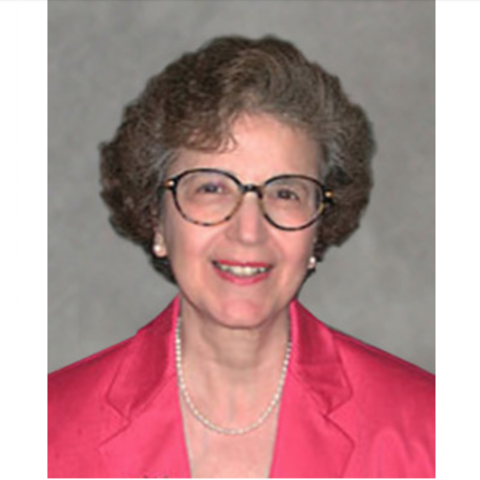
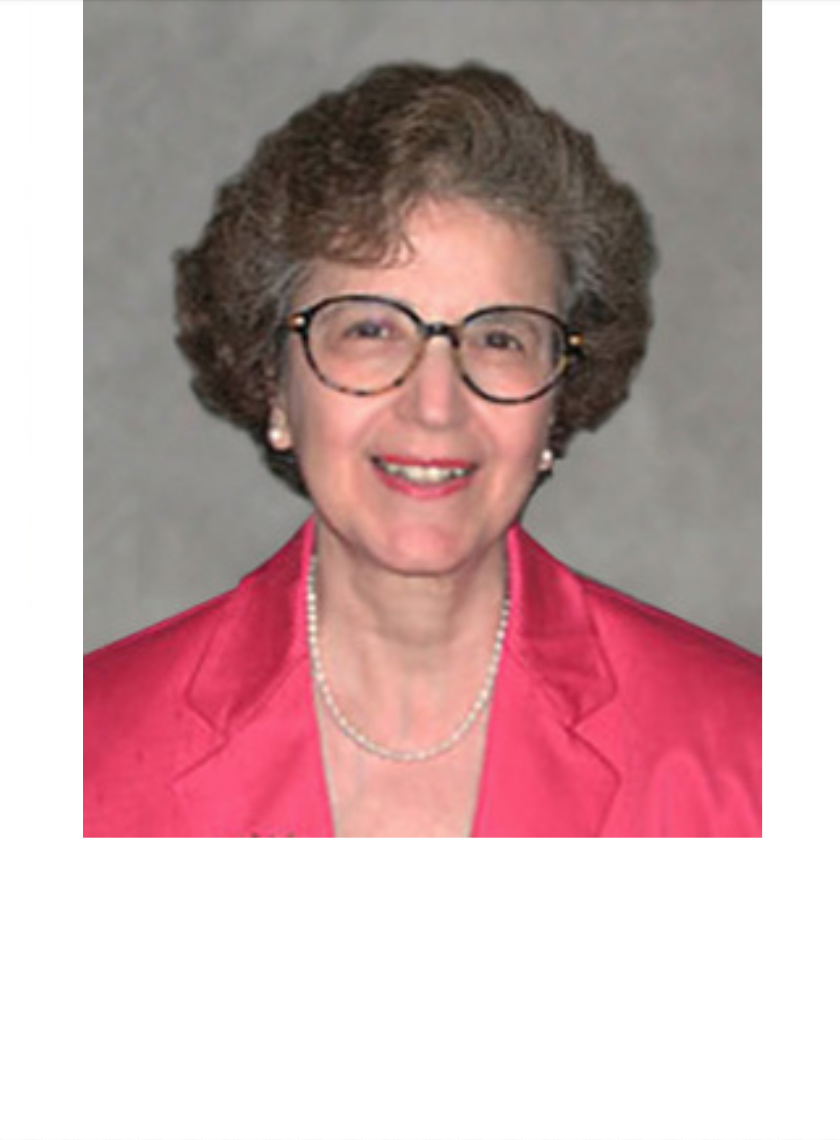
Bio
Dr. Patricia Ferrieri's laboratory is focused on the pathogenesis of infections with group B streptococci (GBS) and host immunity to streptococcal antigens. These investigations have included the epidemiology of maternal and neonatal colonization and infection with GBS, animal models of neonatal sepsis and meningitis, isolation and biochemical and immunological characterization of key antigens of group B streptococci, and human and animal immune responses to these antigens, including the role of monoclonal and polyclonal antibodies in protection against infection. Her laboratory has cloned the gene for a key surface localized protein (glutamine synthetase) of GBS into E. coli , and has used polymerase chain reaction (PCR) technology and nucleotide sequencing and amino acid sequencing of this GBS protein to enhance the research.
Research Summary
In recent years, Ferrieri has focused her research principally on group B Streptococcus, antigens involved in immunity, and vaccine development aimed at prevention of group B Streptococcus infection in newborns. Group B strep, which babies can acquire as they pass through the maternal birth canal, puts them at risk for sepsis and meningitis and can be fatal. Ferrieri's research group collaborated in a five-year, NIH funded study with colleagues at the University of Pittsburgh and Baylor College of Medicine that involved giving experimental group B strep vaccine to non-pregnant women. Her laboratory was responsible for molecular characterization of the group B strep strains of study subjects in advance of their receiving the vaccine and then at specific intervals during the course of the study. Results from the study suggest that the vaccine prevented study subjects from acquiring the type of group B strep that was present in the vaccine. Non-pregnant women who received placebo were less protected. Ferrieri and her colleagues are now correlating the results from antibody analysis with the results of from the molecular analysis of the different group B strep strains. One of the questions the study can help answer is whether bacterial colonization or vaccine-produced antibodies is the primary endpoint for optimal protection. The study could have a major impact for maternal and infant public health globally as well as for the elderly, diabetics, and other populations at risk for group B strep infection. Since the 1990s pregnant women in the U.S. have been tested for group B strep, typically at 35-37 weeks of gestation. Ferrieri introduced a molecular PCR-based assay in the Clinical Microbiology Laboratory, which is now used to test pregnant women in the later stages of pregnancy. The test is more sensitive that the standard group B strep culture for detecting infection.Ferrieri's laboratory is also studying Streptococcus pneumoniae (pneumococcus) and its role in causing otitis media, an infection of the middle ear that can lead to hearing loss in affected children. In an NIH-R01 funded collaboration with colleagues at the U of MN and the University of Alabama in Birmingham, Ferrieri has been investigating protective protein antigens from pneumococcus in otitis media found in the chinchilla, whose ear anatomy mimics closely that of the human ear. The research is designed to contribute to the goal of developing a vaccine that would prevent middle-ear and other pneumococcal infections in young children. Ferrieri and her collaborators are working to extend their findings at the molecular level to shed light on the individual protein-antigen components that could serve as the basis for a universally protective vaccine. Current vaccines can prevent otitis media and other pneumococcus-cased conditions in only about one-fourth of children who receive them. Ferrieri has a career-long view that protein antigens are critical for establishing immunity against various encapsulated bacteria – bacteria that have a polysaccharide coating. Vaccine designs that conjugate polysaccharide antigens with protein antigens may elicit a superior immune response, chiefly through memory B cells.In a controlled trial involving an investigational pneumococcal vaccine and placebo, investigators including Ferrieri (the PI) looked at the immune response in pregnant women both before and after they had given birth, as well as the immune response in their newborns. The newborns from mothers who had received the vaccine while pregnant actually had lower antibody levels than babies born to the mothers who had received placebo, which raises the issue of fetal immune tolerance during pregnancy.In the Clinical Microbiology Laboratory, Ferrieri's team is developing, validating and introducing cutting-edge molecular diagnostic assays to permit rapid detection of pathogens for both in-patients and out-patients of all age groups, leading to improved treatment. New molecular platforms Ferrieri has introduced into the laboratory, in addition to the group B strep PCR assay, performed late in pregnancy, include MALDI-TOF mass spectrometry, which allows rapid identification of bacteria of various complexity as well as yeast and fungi, with a major impact on patient care. Another highly sophisticated test with an impact on patient care and hospital length-of-stays is a nucleic acid microarray assay. The test can be used directly on positive blood cultures of both gram-positive and gram-negative bacteria, with 95-100 percent sensitivity and specificity and with results available in a few hours.
Publications
- Shabayek S, Ferrieri P, Spellerberg B. Group B streptococcal colonization in African countries: Prevalence, capsular serotypes, and molecular sequence types. Pathogens. 2021 Dec 10;10(12):1606. doi: 10.3390/pathogens10121606.
- Arries C, Ferrieri P. Mobiluncus curtisii bacteremia: Case study and literature review. Infect Dis Rep. 2022 Jan 14;14(1):82-87. doi: 10.3390/idr14010009.
- Martinez RJ, Pankratz N, Schomaker M, Daniel J, Beckman K, Karger AB, Thyagarajan BT, Ferreri P, Yohe SL, Nelson AC. Prediction of false positive SARS-CoV-2 molecular results in a high-throughput open platform system. J Mol Diagn. 2021 Jun 8:S1525-1578(21)00166-5. doi: 10.1016/j.jmoldx.2021.05.015
- Ferrieri P, Thonen-Kerr E, Nelson K., Arbefeville S. Prospective evaluation of Xpert® Xpress strep A automated PCR assay vs. Solana® group A streptococcal nucleic acid amplification testing vs. conventional throat culture. Curr Microbiol (2021). https://doi.org/10.1007/s00284-021-0254
- Thomas SN, Altawallbeh G, Zaun CP, Pape KA, Peters JM, Titcombe PJ, Dileepan T, Rapp MJ, Bold TD, Schacker TW, Arbefeville S, Ferrieri P, Thyagarajan B, Jenkins MK, Karger AB. Initial determination of COVID-19 seroprevalence among outpatients and healthcare workers in Minnesota using a novel SARS-CoV-2 total antibody ELISA. Clin Biochem. 2021 Feb 1:S0009-9120(21)00027-8. doi: 10.1016/j.clinbiochem.2021.01.010.
- Arbefeville S, Ferrieri P. Role of multiplex molecular diagnosis for acute gastroenteritis. Curr Infect Dis Rep, 2020. 22 (9). Doi: https://doi.org/10.1007/s11908-020-0718-1
- Hillier SL, Ferrieri P, Edwards MS, Ewell M, Ferris D, Fine P, Carey V, Meyn L, Hoagland D, Kasper DL, Paoletti LC, Hill H, Baker CJ. A phase II randomized, control trial of group B streptococcus (GBS) type III capsular polysaccharide -tetanus toxoid (GBS III-TT) vaccine to prevent vaginal colonization with GBS III. Clin Infect Dis. 2018 Oct 3. doi: 10.1093/cid/ciy838.
Education
Fellowships, Residencies, and Visiting Engagements
Honors and Recognition
Contact
Address
810 Mayo420 Delaware St SE
Minneapolis, MN 55455
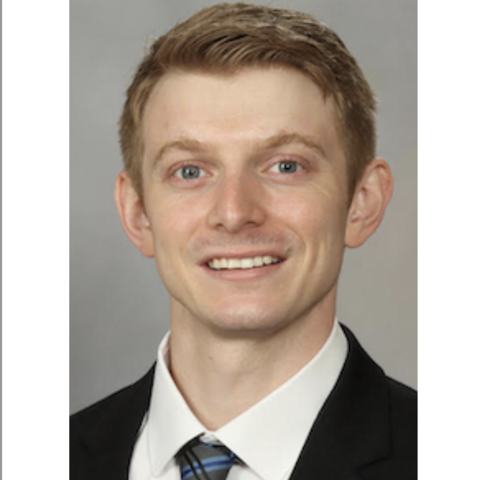
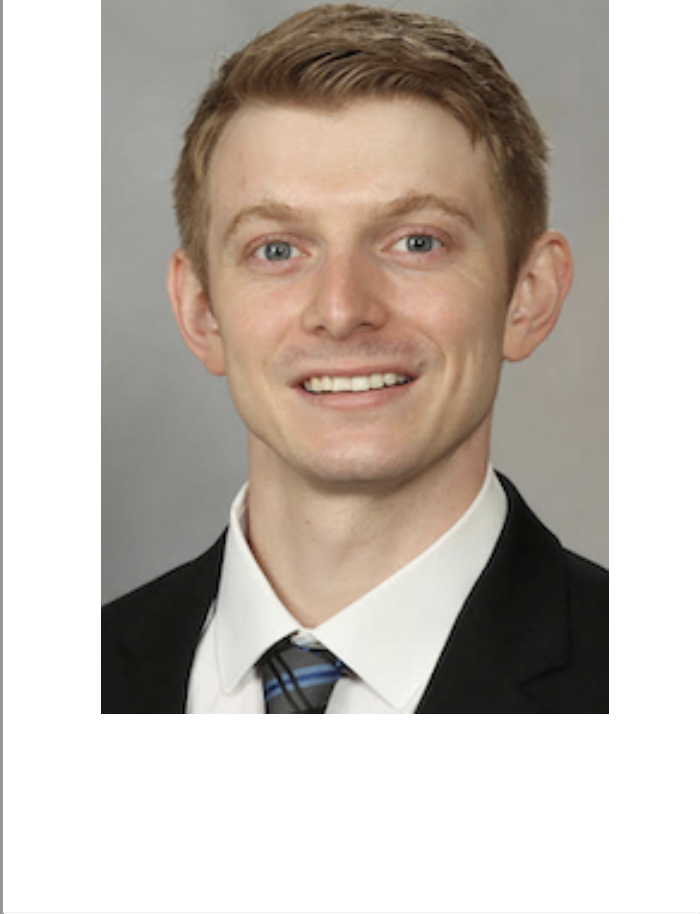
Bio
Garrett Fitzpatrick joined LMP April 15, 2024. He received aanan MD from the University of South Florida College of Medicine and completed an anatomic pathology residency (chief resident 2019-2020) at the University of Florida College of Medicine. He was a neuropathology fellow at the Mayo Clinic and subsequently in LMP. Fitzpatrick is a member of the American Medical Association, the American Society for Clinical Pathology, and the College of American Pathologists. While a pathology resident, he created the course "Introduction to Histology for Pathologists."
Research Summary
Dr. Fitzpatrick's clinical and research focus is neuropathology
Publications
Yazd HS, Bazargani SF, Fitzpatrick G, Yost RA, Kresak J, Garrett TJ. Metabolomic and lipidomic characterization of meningioma grades using LC-HRMS and machine learning. Journal of the American Society for Mass Spectrometry. 2023 Oct 4;34(10):2187-2198. doi: 10.1021/jasms.3c00158.
Jonart LM, Ostergaard J, Brooks A, Fitzpatrick G, Chen L, Gordon PM. CXCR4 antagonists disrupt leukaemia- meningeal cell adhesion and attenuate chemoresistance. British Journal of Haematology. 2023. May;201(3):459-469. doi: 10.1111/bjh.18607.
Galvin RT, Zheng C, Fitzpatrick G, Forster CL, Sandoval-Garcia C, Guillaume D, Elbermawy A, Nelson AC, Özütemiz C, Chen L, Moertel CL. MYO5A::FGFR1 represents a novel fusion event in pediatric low-grade glioma. Neurooncology Advances. 2023. Feb 23;5(1):vdad017. doi: 10.1093/noajnl/vdad017.
Education
Fellowships, Residencies, and Visiting Engagements
Contact
Address
MMC 76 Mayo, 420 Delaware St. SE, Minneapolis, MN 55455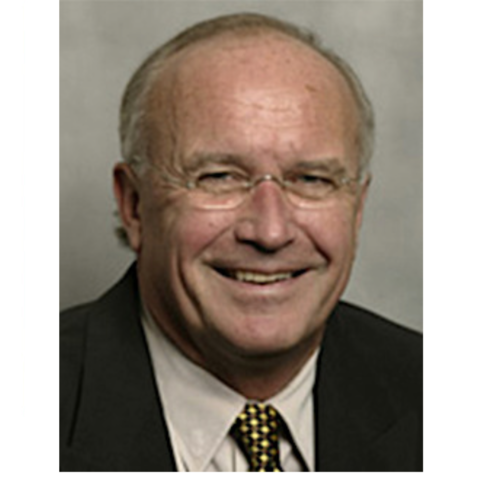
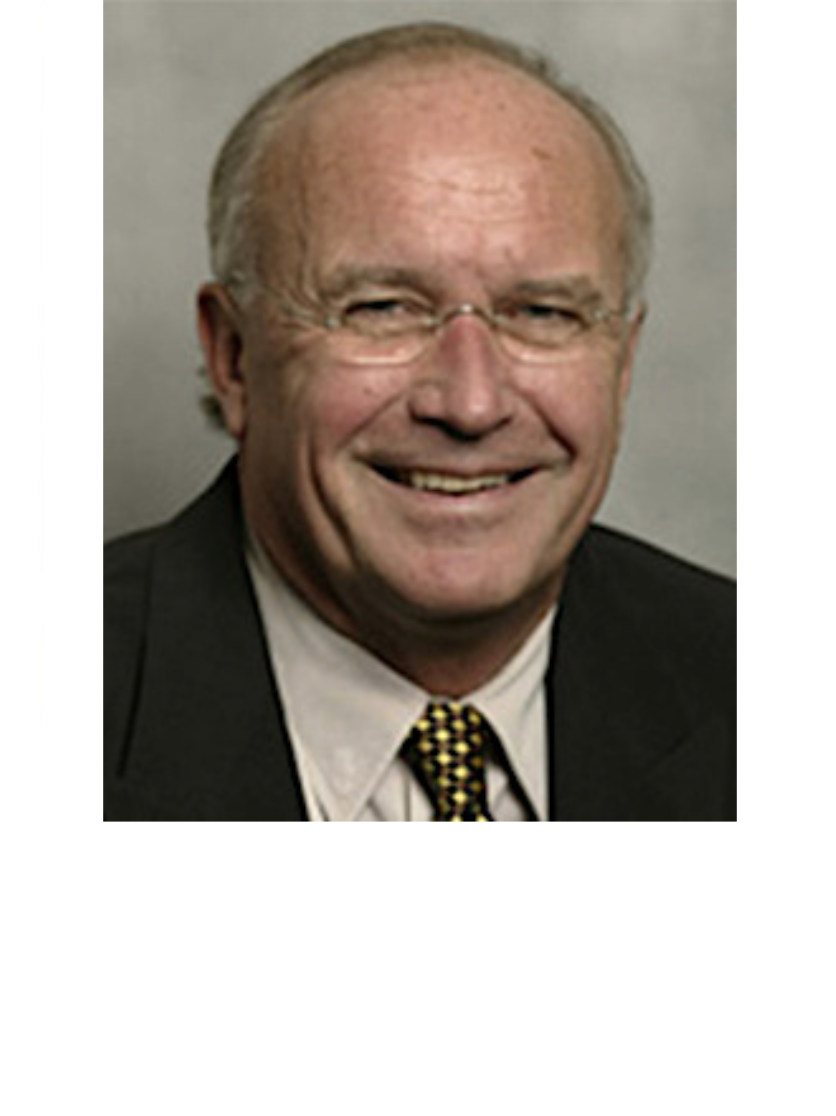
Bio
Leo T. Furcht is Allen-Pardee Professor and Head of the Department of Laboratory Medicine and Pathology at the University of Minnesota and a member of the Division of Molecular Pathology and Genomics. He served as Chairman of the Board of Directors for University of Minnesota Physicians, the Medical School practice plan with approximately 700 physicians, from 2004-2014. For a three-year period in the 90's he served as Vice Provost for Research of the University of Minnesota Health Sciences and established a research services organization to provide turnkey solutions for faculty and companies to facilitate clinical trials. Furcht served as the President of the Federation of American Societies for Experimental Biology (FASEB) a biomedical research advocacy organization with over 125,000 members and 23 constituent societies from 2006-2007. Prior to this he served as Vice President for Science Policy and led a FASEB program on conflict of interest in biomedical research. Furcht was also founding director of the Biomedical Engineering Center and led early efforts focused on biomedical MEMS, stem cells and molecular diagnostics. He was also founding director MD/ PhD program at the University of Minnesota and was principal investigator of the initial grant from the National Institutes of Health (NIH) Medical Scientist Training Program for the MD/PhD program. He played the lead role in establishing a highly regarded Center for Immunology at the University of Minnesota. Early in his career Furcht received a Research Career Development Award from the NIH and later a NCI Merit award.Furcht served on two American Association of Medical Colleges / American Association of Universities Task Forces working on issues surrounding academia industry interactions and issues regarding medical education and clinical research. He has testified in Congressional hearings on NIH budget re-authorization, before Institute of Medicine committees on scientific issues including embryonic stem cell research and a Presidential commission on the dual use of biological organisms. Furcht has published more than 175 scientific papers and holds more than 30 patents in the fields of polypeptides, biomaterials, and adult stem cells. He was profiled in the Medical School's Impact Medicine campaign under the title "Dr. Leo Furcht Creates a Legacy Many Aspire to Achieve."
Research Summary
Research Summary/Interests
- tumor cell behavior and metastasis
- extracellular matrix proteins and receptors
- stem cells
- biotechnology
Publications
- Hoffman, W. and Furcht, L. Divergence, convergence, and innovation: East-West bioscience in an anxious age.Asian Biotechnology and Development Review 16 (3): 3-23, 2014.
- Hoffman, W. and Furcht, L.T. The Biologist’s Imagination: Innovation in the Biosciences (New York: Oxford University Press, 2014).
- Furcht, L.T., and Hoffman, W. The Stem Cell Dilemma, second edition (New York: Arcade Publishing, 2011).
- DeLarco, J.E., Park, C.A., Dronava, H., Furcht, L.T. Cancer Biol. Ther. 9(5):362-70, 2010.
- Furcht, L.T., and Hoffman, W. Stem Cells. Minnesota Health Care News, 7(3), March 2009.
- Furcht, L.T., and Hoffman, W. The Stem Cell Dilemma (New York: Arcade Publishing, 2008).
- Furcht, L.T. and Wolinetz, C.D. What cures will we miss? The effects of reduced funding for biomedical research. Minnesota Physician, XXI (5), August 2007.
- Brockway LM. and Furcht, L.T. Financial disclosure policies of scientific publications. [Comment letter]. JAMA, 296(4): 2925-6: author reply 2926, 2006.
For a full list of Dr. Furcht's publications, Search PubMed.
Clinical Summary
Specialties
- Cell adhesion molecules and tumor metastasis
Education
Fellowships, Residencies, and Visiting Engagements
Honors and Recognition
Professional Memberships
Contact
Address
MMC 609 Mayo420 Delaware St SE
Minneapolis, MN 55455

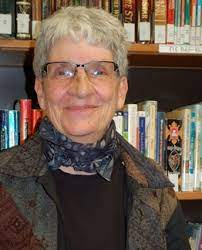
Research Summary
Dr. Gatewood has been instrumental in establishing the University of Minnesota as a leader in health informatics. She and her colleagues have produced cutting-edge research and developed innovative technologies in the fields of micropopulation simulation modeling, clinical decision-making and laboratory information systems, and microbial biotechnology databases. Gatewood was key in establishing the National Micropopulation Simulation Resource, a pioneering individual-based modeling resource for epidemiology. Over the years she has worked with informatics colleagues and doctoral students to develop simulation programs for modeling genetic, chronic, and infectious diseases, neural networks, and social networks.
Publications
- Gatewood L, Limburg M, Gardner R, Haux R, Jaspers M, Schmidt D, Wetter T. International Master Classes in Health Informatics. Int J Med Inf. 2004;73(2):111-6.
- Park HA, Peterson D, Gatewood L. Using stochastic simulation to model vaccine effectiveness. J Korean Soc Med Inform 1997;3(2):201-6.
- Zhuo Z, Ackerman E, Gatewood L. An expert system for simulation of coronary heart disease risk factor interventions. Proc Annu Symp Comput Appl Med Care. 1991;674-8.
Grants and Patents
Selected Grants
Contact
Address
780 Mayo420 Delaware St. SE
Minneapolis, MN 55455

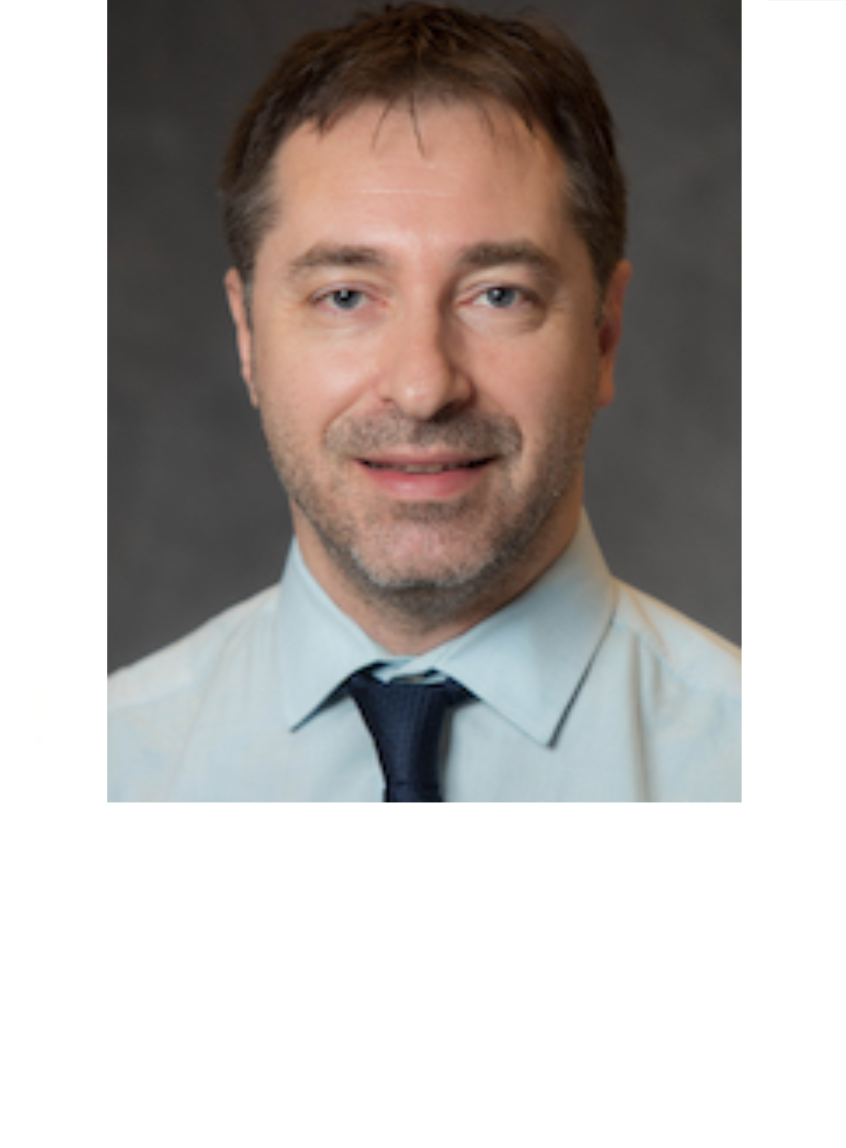
Bio
Dr. Giubellino is a board-certified anatomic pathologist and dermatopathologist with a strong research background in cellular/tissue biology and translational research. As a physician-scientist he contributed to the advancement of several basic science, translational and clinical research projects, lately with a particular focus on melanocytic lesions and other dermatologic diseases. He has employed different molecular and cellular techniques and immunohistochemical analysis of tissue samples to bridge basic science and clinical medicine.
One of Dr. Giubellino chief interests has been the investigation and development of biomarkers for cancer diagnosis, as well as for prognostic and predictive purposes. This interest stems from prior work on receptor tyrosine kinases (RTKs) and receptor-mediated downstream signaling molecules in tumor progression. During his work at the National Institutes of Health (NIH), Dr. Giubellino has contributed to defining the proto-oncogene MET, the tyrosine kinase receptor for the hepatocyte growth factor (HGF), as a cancer biomarker, he has developed xenograft mouse models of tumor progression and discovered novel therapeutic approaches, including targeting adaptor proteins, like GRB2, in the downstream signaling of RTKs, for a variety of neoplasms.
Given the concurrent role of MET in the modulation of the immune response and the interplay with immune checkpoints in other malignancies, Dr. Giubellino investigated the expression pattern of MET and the immune checkpoint PD-L1, a relevant target for immunotherapy, and found that these two surface receptors follow a similar expression pattern in metastatic melanoma (and not in primary melanoma) and published this observation in the journal Cancers (2020). Additional studies are currently underway to understand this relationship.
More recently Dr. Giubellino has been involved in several studies using the relatively new technology of Spatial Transcriptomics and Spatial Proteomics, techniques that allow the precise localization of multiple mRNAs and proteins in a morphologic context in tissue samples.
Moreover, Dr. Giubellino research group is exploring the use of digital pathology and artificial intelligence to enhance diagnostic and prognostic evaluation of clinical tissue samples. An example of this type of study has been published in Histopathology (2021) where his research group estimated precise melanoma tumor burden by digital cell counting in sentinel lymph nodes on whole slide images (WSI) using an open-source software for digital pathology.
Giubellino thinks this comprehensive approach will reveal relevant biomarkers to help clinicians to improve the life and management of patients visiting our Clinics and Health System.
Research Summary
Publications
Journal articles
Ernst M, Giubellino A. The Current State of Treatment and Future Directions in Cutaneous Malignant Melanoma. Biomedicines. 2022 Mar 31;10(4):822. doi: 10.3390/biomedicines10040822. PMID: 35453572; PMCID: PMC9029866.
Argyris PP, Naumann J, Jarvis MC, Wilkinson PE, Ho DP, Islam MN, Bhattacharyya I, Gopalakrishnan R, Li F, Koutlas IG, Giubellino A, Harris RS. Primary mucosal melanomas of the head and neck are characterised by overexpression of the DNA mutating enzyme APOBEC3B. Histopathology. 2023 Mar;82(4):608-621. doi: 10.1111/his.14843. Epub 2022 Dec 5. PMID: 36416305; PMCID: PMC10107945.
Cheng TW, Ahern MC, Giubellino A. The Spectrum of Spitz Melanocytic Lesions: From Morphologic Diagnosis to Molecular Classification. Front Oncol. 2022 Jun 7;12:889223. doi: 10.3389/fonc.2022.889223. PMID: 35747831; PMCID: PMC9209745.
Ernst M, Lundgren M, Evans MD, Miller D, Giubellino A. The mixed spongiotic and interface reaction pattern: A study of clinical and histopathologic findings. J Cutan Pathol. 2022 Dec;49(12):1051-1059. doi: 10.1111/cup.14306. Epub 2022 Aug 18. PMID: 36445270; PMCID: PMC9709294.
Ernst M, Giubellino A. Histopathologic Features of Maculopapular Drug Eruption. Dermatopathology (Basel). 2022 Mar 30;9(2):111-121. doi: 10.3390/dermatopathology9020014. PMID: 35466243; PMCID: PMC9036233.
Hartsough EM, Miller D, Shanley R, Domingo-Musibay E, Giubellino A. Sentinel lymph node tumour burden using digital cell count estimation predicts outcomes in melanoma. Histopathology. 2022 May;80(6):954-964. doi: 10.1111/his.14541. Epub 2022 Mar 24. PMID: 34402533.
Song KY, Desar S, Pengo T, Shanley R, Giubellino A. Correlation of MET and PD-L1 Expression in Malignant Melanoma. Cancers (Basel). 2020 Jul 9;12(7):1847. doi: 10.3390/cancers12071847. PMID: 32659961; PMCID: PMC7408820.
Zhou Y, Song KY, Giubellino A. The Role of MET in Melanoma and Melanocytic Lesions. Am J Pathol. 2019 Nov;189(11):2138-2148. doi: 10.1016/j.ajpath.2019.08.002. Epub 2019 Aug 30. PMID: 31476283.
Toyama A, Siegel L, Nelson AC, Najmuddin M, Bu L, LaRue R, Henzler C, Caicedo-Granados E, Giubellino A, Li F. Analyses of molecular and histopathologic features and expression of PRAME by immunohistochemistry in mucosal melanomas. Mod Pathol. 2019 Dec;32(12):1727-1733. doi: 10.1038/s41379-019-0335-4. Epub 2019 Aug 2. PMID: 31375769; PMCID: PMC6881537.
Book chapters
Frye Naharro E., Zhou Y. and Giubellino A. (2021). Malignant Melanoma: from Molecular Characterization to targeted therapy. Volume on Cancer . In Comprehensive Pharmacology, Edited by Terry Kenakin. Elsevier
Education
Fellowships, Residencies, and Visiting Engagements
Licensures and Certifications
Languages
Contact
Address
Mayo C516Minneapolis, MN 55455-0341


Bio
Dr. Greenwood is an anatomic and clinical pathologist. Previously he was assistant director of the HLA and Transplant Immunology Laboratory in the Department of Pathology and Genomic Medicine, Houston Methodist Hospital.
Greenwood's areas of research interest include testing related to HLA and transplant immunology as well as pathology informatics.
Research Summary
Publications
Christensen PA, Ni Y, Bao F, Hendrickson HL, Greenwood M, Thomas JS, Long SW, Olsen RJ. Houston Methodist Variant Viewer: An Application to Support Clinical Laboratory Interpretation of Next-generation Sequencing Data for Cancer. J Pathol Inform. 2017; 8:44.
Greenwood MP, Hairston FJ, Schwartz MR, Pepper K, Hendrickson H, Suri A, Coffey D, Deavers M, Olsen RJ, Thomas JS. Omental Gastrointestinal Stromal Tumor: Arriving at a Diagnosis with Therapeutic Options in the Molecular Era. Case Reports in Clinical Pathology. 2017; 4(3):7-11. doi:10.5430/crcp.v4n3p7.
Greenwood, MP, Carson, JM, Talmon, GA. The Pathology Resident Wiki: A Valuable Resource for Residents to Use on Call. Academic Pathology. July-September 2015: 1-6.
Cao Z, Li X, Zou X, Greenwood M, Gerwick WH, Murray TF. Involvement of JNK and Caspase Activation in Hoiamide A-Induced Neurotoxicity in Neocortical Neurons. Marine Drugs. 2015;13(2):903-19.
Contact
Address
7-128 PWB, MMC 724420 Delaware St SE
Minneapolis, MN 55455


Bio
Dr. Gross directs the Molecular Epidemiology and Biomarker Research Laboratory (MEBRL) and is a faculty investigator in the Advanced Research and Diagnostic Laboratory (ARDL). MEBRL acts as the central laboratory for several studies wherein he applies biochemical, immunologic and genetic mass spectrometry (MS) and other techniques to the discovery, development, and application of biomarkers in cardiovascular disease, diabetes, and cancer. Special emphasis is placed on mass spectrometry that allows for a highly precise characterization of biomarkers.Dr. Gross and his research team specialize in conducting analyses for large epidemiologic studies with the goal of defining new risk factors and understanding the pathophysiology of the conditions. One of his areas of interest is the interplay of diet and chronic disease, in particular, the role of oxidative cellular damage and antioxidant micronutrients in cardiovascular disease risk and prevention. He has also explored the association between oxidative stress biomarkers and insulin resistance syndrome, a risk factor for developing diabetes and heart disease. Another research focus in Gross's laboratory is the role of gene expression and genetic susceptibility in populations at risk for type-2 diabetes. Despite low rates of obesity, Southeast Asians have high rates of type-2 diabetes, placing a high public health and economic burden upon governments in that part of the world. Gross's research team is participating in major NIH-funded studies of genetic and environmental factors of people with type-2 diabetes in India and Singapore using genetic sequencing, genotyping, and analysis of biochemical receptors. One of the goals is to identify early onset type-2 diabetes in people ages 10 to 30 in order to initiate treatment and prevent or delay the development of cardiovascular complications. Dr. Gross also participates in a program funded by the NIH's Fogarty International Center to strengthen India's clinical research and training capacity. A third area of focus is dietary flavonoids and their biological activities. Dr. Gross is the President of PhenHRIG, a small society devoted to understanding the health effects and activities of flavonoids.
Research Summary
Publications
Kristin M. Hirahatake, Andrew O. Odegaard, Myron D. Gross, Carmen Peralta, Kirsten Bibbins-Domingo, Michael Shlipak, Holly Mattix-Kramer, David R. Jacobs. “Objective Dietary Biomarkers of Vegetable and Fruit Intake Inversely Associate with Rapid Kidney Function Decline: The CARDIA Study.” American Heart Association, Epi Lifestyle 2016. Phoenix, Arizona. Mar 1-4, 2016.
Myron D. Gross, Otto Sanchez, David R. Jacobs. “RELATIONSHIPS AMONG INDICATORS OF OXIDATIVE STRESS AND ANTIOXIDANTS: The Coronary Artery Risk Development in Young Adults (CARDIA) Study.” American Heart Association, Epi Lifestyle 2016. Phoenix, Arizona. Mar 1-4, 2016.
Bharat Thyagajaran, Weihua Guan, Veronika Fedirko, Helene Barcelo, Myron D. Gross, Michael Goodman, Roberd M. Bostick. “Mitochondrial D-Loop Polymorphisms Are Associated With Colorectal Adenoma Risk.” AACR 2016.
Bharat Thyagajaran, Renwei Wang, Woon-Puay Koh, Helene Barcelo, Jennifer Adams-Haduch, Weihua Guan, Roberd M. Bostick, Jian-Min Yuan, Myron D. Gross. “Mitochondrial DNA Copy Number, Urinary Isoprostanes and Colorectal Cancer Risk.” AACR 2016.
April P. Carson, Paul Muntner, Elizabeth Selvin, Mercedes R. Carnethon, Christina M. Shay, David R. Jacobs, Myron D. Gross, Timothy Garvey, Cora E. Lewis. “Total Fat Mass and BMI Exhibit Varying Associations with Glycemic Markers.” ADA June 2016.
Contact
Address
B-204 Mayo Building420 Delaware Street SE
Minneapolis, MN 55455
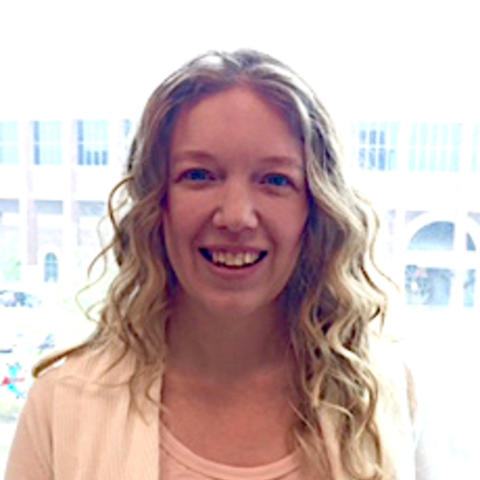
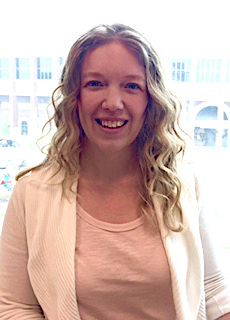
Bio
Dr. Hamilton is a research immunologist and is focusing her research on CD8+ T cells with the goal of learning how to manipulate them to elicit the optimal protective immune response to pathogen infection. She is currently working in two different model systems: mice that have been naturally exposed to environmental microbes to gain a better understanding of T-cell function in these mice, and mice exposed to malaria to gain a better understanding of T-cell activity during severe cerebral complications of the disease.
Research Summary
For many years immunologists have experimented with genetically inbred mice housed in clean quarantined facilities. These facilities protect experimental mice from exposure to environmental pathogens, including viruses that humans are exposed to in daily life. Hamilton and co-investigators have conducted research in which they house pathogen-free inbred mice with mice from pet stores that carry environmental microbes, and then track CD8+ T cell behavior both in the pet store mice and in the inbred mice housed with them. In the pilot study, they characterized CD8+ T cell populations and distribution in various organs of environmentally exposed mice and found measurable differences compared to CD8+ T cells from environmentally protected inbred mice. The next step is to immunize the mice with different agents and compare CD8+ T cell responses. Preliminary data shows that environmentally exposed mice acquire increased levels of immune protection from some infectious microbes that inbred mice housed in clean facilities do not possess.In her malaria studies, Hamilton uses a mouse model that mimics the human experience in development of cerebral malaria, a condition caused by specific malarial strains to which certain individuals are vulnerable, particularly children. During this infection CD8+ T cell populations traffic to the brains of experimental mice. These cells recognize antigen presented by brain endothelial cells and mount an attack, which can cause brain hemorrhages. The goal of the study is to find ways to inhibit or control CD8+ T cell activity in the brain through immune system modulation to prevent cerebral hemorrhaging. Hamilton and her colleagues have found that stimulation by specific cytokine therapy can dampen the CD8+ T cell response to triggering antigens in the brain.Hamilton is also following up on earlier research that involved compartmentalizing CD8+ T cell memory cells into subset populations. She and her colleagues found a small subset that does not readily expand after antigen exposure, yet provides the most effective immune response to acute infection. She will delve deeper into how this specific subset of CD8+ memory T cells is created, how these cells can be more easily identified through specific cell-surface markers, how they function, and how they can be stimulated to expand, possibly through a vaccine strategy.
Publications
Fiege JK, Block KE, Pierson MJ, Nanda H, Shepherd FK, Mickelson CK, Stolley JM, Matchett WE, Wijeyesinghe S, Meyerholz DK, Vezys V, Shen SS, Hamilton SE, Masopust D, Langlois RA. Mice with diverse microbial exposure histories as a model for preclinical vaccine testing. Cell Host Microbe. 2021 Oct 27:S1931-3128(21)00463-7. doi: 10.1016/j.chom.2021.10.001.
Senolytics reduce coronavirus-related mortality in old mice. Christina D. Camell, Matthew J. Yousefzadeh, Yi Zhu, Larissa G. P. Langhi Prata, Matthew A. Huggins, Mark Pierson, Lei Zhang, Ryan D. O’Kelly, Tamar Pirtskhalava, Pengcheng Xun, Keisuke Ejima, Ailing Xue, Utkarsh Tripathi, Jair Machado Espindola-Netto, Nino Giorgadze, Elizabeth J. Atkinson, Christina L. Inman, Kurt O. Johnson, Stephanie H. Cholensky , Timothy W. Carlson, Nathan K. LeBrasseur, Sundeep Khosla, M. Gerard O’Sullivan, David B. Allison, Stephen C. Jameson, Alexander Meves, Ming Li, Y. S. Prakash, Sergio E. Chiarella, Sara E. Hamilton, Tamara Tchkonia, Laura J. Niedernhofer, James L. Kirkland, and Paul D. Robbins. Science, 08 Jun 2021.doi: 10.1126/science.abe4832
Generating mice with diverse microbial experience. Pierson M, Merley A, Hamilton SE. Curr Protoc. 2021 Feb;1(2):e53. doi: 10.1002/cpz1.53.
T cell economics: precursor cells predict inflation. Huggins MA, Hamilton SE. Nat Immunol. 2020 Dec;21(12):1482-1483. doi: 10.1038/s41590-020-00819-8.
KLRG1+memory CD8 T cells combine properties of short-lived effectors and long-lived memory. Renkema KR, Huggins MA, Borges da Silva H, Knutson TP, Henzler CM, Hamilton SE. J Immunol. 2020 Aug 15;205(4):1059-1069. doi: 10.4049/jimmunol.1901512. Epub 2020 Jul 1
New insights into the immune system using dirty mice. Hamilton SE, Badovinac VP, Beura LK, Pierson M, Jameson SC, Masopust D, Griffith TS. J Immunol. 2020 Jul 1;205(1):3-11. doi: 10.4049/jimmunol.2000171.
Education
Contact
Address
2-142 WMBB2101 6th St. SE
Minneapolis, MN 55414

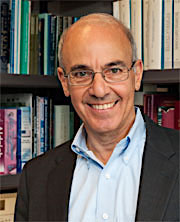
Bio
Dr. Hecht's laboratory is focused on understanding the ways tobacco smoke constituents cause cancer. To do this he and his colleagues study the mechanisms by which these compounds enter the human body, are metabolized, and ultimately bind to DNA, causing mutations that result in cancer. Cigarette smoke contains more than 70 carcinogens. Hecht focuses on several including tobacco-specific nitrosamines, polycyclic aromatic hydrocarbons (PAH), and certain volatiles such as formaldehyde, acetaldehyde, and acrolein that are formed during the combustion process.Hecht's research team has developed methods to analyze human urine for these compounds and their metabolites. These methods, which employ mass spectrometry as a key analytic technology, enable his laboratory to take part in studies of thousands of smokers. Hecht's group also uses mass spectrometry methods to analyze the DNA damage caused by the carcinogens at the level of stereochemistry, which shows the relative spatial arrangement of atoms and molecules.The goal of Hecht's research is two-fold: First, to provide evidence in support of ongoing regulation of tobacco products due to their harm to human health, and second, to find ways to identify the susceptible smoker. That smoking causes lung cancer is well established, but it is not yet possible to identify which smokers are most likely to contract lung cancer, which would allow for early intervention. Collaboration between research groups in the fields of genetics, biochemistry, psychology and other fields will be needed to turn promising leads of an individual smoker's susceptibility to lung cancer into a preventive strategy.Hecht has a long-standing collaboration with a University colleague in psychiatry who is studying the mechanisms of addiction. Given that more than a billion people of the world's population of seven billion people are smokers, including an estimated 45 million in the U.S. and 300 million in China, the impact of learning the biological and psychological mechanisms involved in tobacco smoke addiction is a major public health challenge and opportunity. Understanding these mechanisms also can lead to the identification of smoking prevention strategies and potential chemopreventive agents.
Research Summary
Publications
Huang BZ, Binder AM, Quon B, Patel YM, Lum-Jones A, Tiirikainen M, Murphy SE, Loo L, Maunakea AK, Haiman CA, Wilkens LR, Koh WP, Cai Q, Aldrich MC, Siegmund KD, Hecht SS, Yuan JM, Blot WJ, Stram DO, Le Marchand L, Park SL. Epigenome-wide association study of total nicotine equivalents in multiethnic current smokers from three prospective cohorts. Am J Hum Genet. 2024 Mar 7;111(3):456-472. doi: 10.1016/j.ajhg.2024.01.012.
1.Ma, B.; Stepanov, I.; Hecht, S. S. Recent studies on DNA adducts resulting from human exposure to tobacco smoke. Toxics 2019, 7.
2.Ma, B.; Villalta, P. W.; Hochalter, J. B.; Stepanov, I.; Hecht, S. S. Methyl DNA phosphate adduct formation in lung tumor tissue and adjacent normal tissue of lung cancer patients. Carcinogenesis 2019.
3.Li, Y.; Ma, B.; Cao, Q.; Balbo, S.; Zhao, L.; Upadhyaya, P.; Hecht, S. S. Mass Spectrometric quantitation of pyridyloxobutyl DNA phosphate adducts in rats chronically treated with N'-nitrosonornicotine. Chem. Res. Toxicol. 2019, 32, 773-783.
4.Stram, D. O.; Park, S. L.; Haiman, C. A.; Murphy, S. E.; Patel, Y.; Hecht, S. S.; Le Marchand, L. Racial/ethnic differences in lung cancer incidence in the multiethnic cohort study: an update. J. Natl. Cancer Inst. 2019.
5.Goniewicz, M. L.; Smith, D. M.; Edwards, K. C.; Blount, B. C.; Caldwell, K. L.; Feng, J.; Wang, L.; Christensen, C.; Ambrose, B.; Borek, N.; van Bemmel, D.; Konkel, K.; Erives, G.; Stanton, C. A.; Lambert, E.; Kimmel, H. L.; Hatsukami, D.; Hecht, S. S.; Niaura, R. S.; Travers, M.; Lawrence, C.; Hyland, A. J. Comparison of nicotine and toxicant exposure in users of electronic cigarettes and combustible cigarettes. JAMA Netw. Open 2018, 1, e185937.
Education
Honors and Recognition
Contact
Address
2-148 CCRB2231 6th St SE
Minneapolis, MN 55455
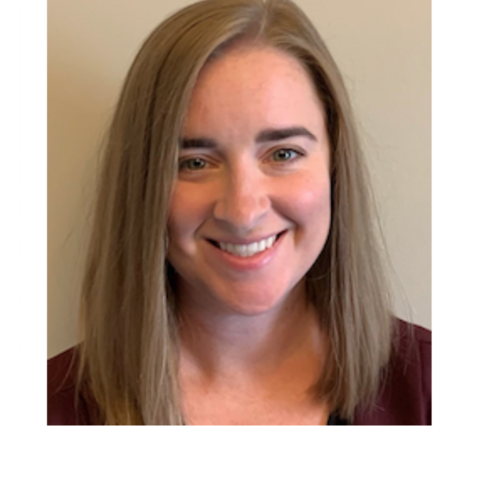
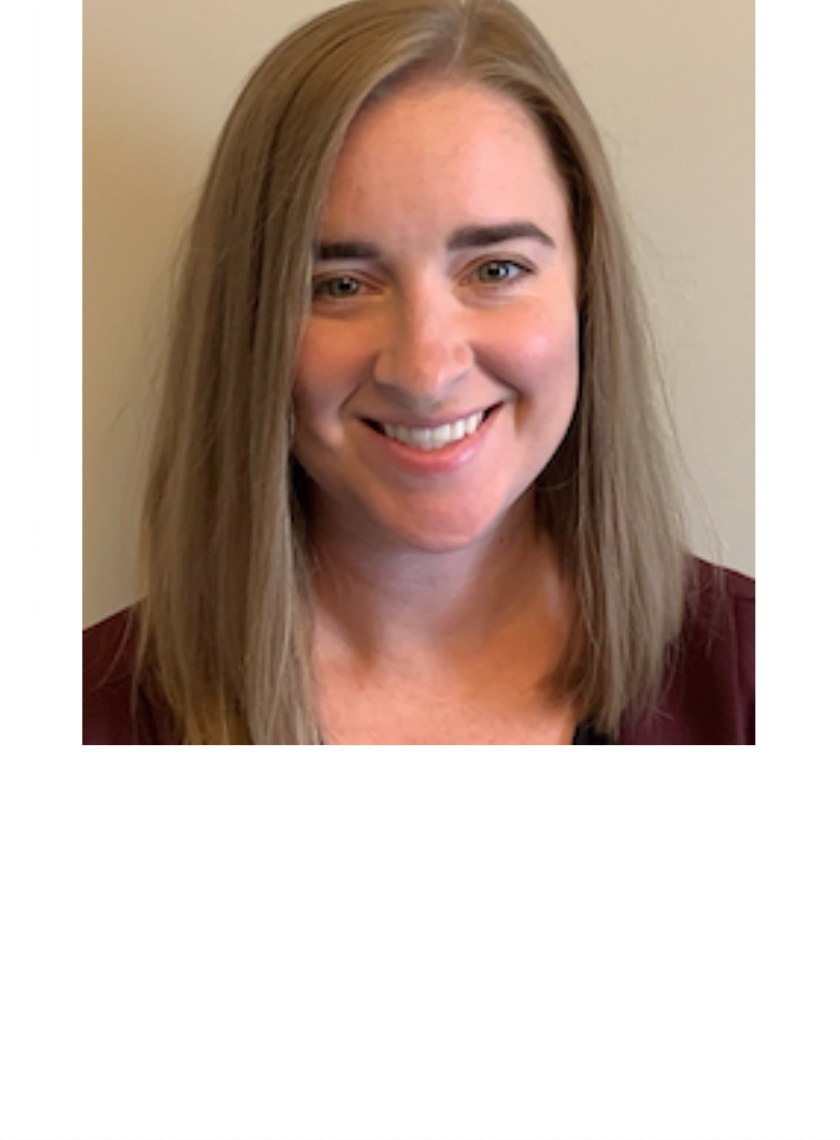
Research Summary
Research interests:
- Infectious diseases
- Microbiology
Publications
Hilt EE, Dale JL, Craft B, Ferrieri P. An unusual cluster of Roseomonas mucosa cases in a hospital system: Related or not? Infect Dis Diag Treat 2023; 7: 222. DOI: 10.29011/2577-1515.100222.
Hilt EE, Parnell LK, Wang D, Stapleton AE, Lukacz ES. Microbial threshold guidelines for UTI diagnosis: A scoping systematic review. Pathology and Laboratory Medicine International. 2023;15:43-63 https://doi.org/10.2147/PLMI.S409488.
Hilt EE, Fitzwater SP, Ward K, de St Maurice, A, Chandrasekaran S, Garner OB, & Yang S. Carbapenem resistant Aeromonas hydrophila carrying blacphA7 isolated from two solid organ transplant patients. Frontiers in Cellular and Infection Microbiology 2020;10:563482. Published 2020 Oct 26. doi:10.3389/fcimb.2020.563482
Chen J, Hilt EE, Li F, Wu H, Jiang Z, Zhang Q, Wang J, Wang Y, Li Z, Tang J, & Yang S. Epidemiological and genomic analysis of SARS-CoV-2 in 10 patients from a mid-sized city outside of Hubei, China in the early phase of the COVID-19 outbreak. Frontiers in Public Health. 2020;8:567621. Published 2020 Sep 18. doi:10.3389/fpubh.2020.567621
Education
Fellowships, Residencies, and Visiting Engagements
Licensures and Certifications
Contact
Address
Mayo Memorial Building420 Delaware St Se
Minneapolis, MN 55455

Bio
Dr. Hirsch is a cytogeneticist, a member of the Division of Molecular Pathology and Genomics, and director of the UMMC Cytogenetics Laboratory and director of the Cancer Center's Cytogenomics Laboratory, which provides investigators with a variety of cytogenetic and molecular cytogenetic services. Hirsch oversees the development and utilization of cytogenetic and molecular cytogenetic techniques to analyze and elucidate chromosome abnormalities in inherited disorders and cancer utilizing. She is Director of the ABMG Laboratory Genetics and Genomics Fellowship, and is active in the development and writing of national guidelines for laboratory's performing cytogenetic and molecular cytogenetic studies such as microarrays, particularly as applied to cancer. RESEARCH:Dr. Hirsch has two major areas of research focus: chromosome instability and the cytogenomic landscape of myeloid and lymphoid neoplasms. The University of Minnesota has a comprehensive Fanconi anemia center, and her laboratory has been involved in the development of methods and algorithms for diagnosis of FA, for differentiating subtypes of FA, and for monitoring for emergence of clinically significant clones that may herald the development of myelodyspalstic syndrome, leukemia., and/or solid tumors. As a member of the Children's Oncology Group cytogenetic and myeloid disease committees, she reviewsall cytogenetic analyses performed on patients enrolled on myeloid studies, in addition to developing biology studies aimed at improving risk stratification for pediatric AML, and elucidating factors involved in disease progression.Additionally, as the Director of a research Cytogenomics Core resource of a Cancer Genomics Center, herlaboratory has facilitated the research of investigators at the University of Minnesota'sMasonic Cancer Center and other Cancer Centers that require seamless integration of techniques to pursue studies of tumorgenesis.
Research Summary
Hirsch has been coordinator of cytogenetic in studies of acute myeloid leukemia (AML) conducted by the Children's Oncology Group (COG), the world's largest organization devoted exclusively to childhood and adolescent cancer research. COG unites more than 8,000 experts in childhood cancer from around the world. Hirsch and her colleagues have found that recurrent cytogenetic and molecular abnormalities are powerful predictors of relapse and survival in both adult and pediatric AML and that high expression of certain genes is strongly associated with poor prognosis. They have also found that multi-dimensional flow cytometry combined with cytogenetic and molecular analysis can predict which patients with residual disease are most likely to relapse.COG investigators including Hirsch recently conducted a multi-institutional, multi-platform microarray study of pediatric acute lymphoblastic leukemia (ALL) that integrated results from both cytogenetic and molecular analysis. The results demonstrated the complementary roles of FISH, genomic microarray, and G-banding chromosome analysis in characterizing the leukemic clone and will facilitate ALL patient care as well as basic and translational research. In basic research, Hirsch is working with Michael Farrar to develop transposon-based screens for identifying altered genes involved in ALL.
Publications
- Kutny MA, Alonzo TA, Abla O, Rajpurkar M, Gerbing RB, Wang YC, Hirsch BA, Raimondi S, Kahwash S, Hardy KK, Hardy S, Meshinchi S, Gamis AS, Kolb EA, Feusner JH, Gregory J Jr. Assessment of Arsenic Trioxide and All-trans Retinoic Acid for the Treatment of Pediatric Acute Promyelocytic Leukemia: A Report From the Children's Oncology Group AAML1331 Trial. JAMA Oncol. 2022 Jan 1;8(1):79-87. doi: 10.1001/jamaoncol.2021.5206.
- Gilles SR, Yohe SL, Linden MA, Dolan M, Hirsch B, Grzywacz B. CD161 Is expressed in a subset of T-cell prolymphocytic leukemia cases and Is useful for disease follow-up.Am J Clin Pathol. 2019 Sep 9;152(4):471-478. doi: 10.1093/ajcp/aqz060.
- Baughn LB; Meredith MM; Oseth L; Smolarek TA, Hirsch B. SH2B3 aberrations enriched in iAMP21 B lymphoblastic leukemia. Cancer Genetics. 226-227:30-35, 2018 Oct
- Poynter JN; Richardson M; Blair CK; Roesler MA; Hirsch BA; Nguyen P; Cioc A; Warlick E; Cerhan JR; Ross JA. Obesity over the life course and risk of acute myeloid leukemia and myelodysplastic syndromes. Cancer Epidemiology. 40:134-40, 2016 Feb.
- Baughn LB; Biegel JA; South ST; Smolarek TA; Volkert S; Carroll AJ; Heerema NA; Rabin KR; Zweidler-McKay PA; Loh M; Hirsch B. Integration of cytogenomic data for furthering the characterization of pediatric B-cell acute lymphoblastic leukemia: a multi-institution, multi-platform microarray study. Cancer Genetics. 208(1-2):1-18, 2015.
Education
Fellowships, Residencies, and Visiting Engagements
Contact
Address
15-120 P W B516 Delaware St SE
Minneapolis, MN 55455
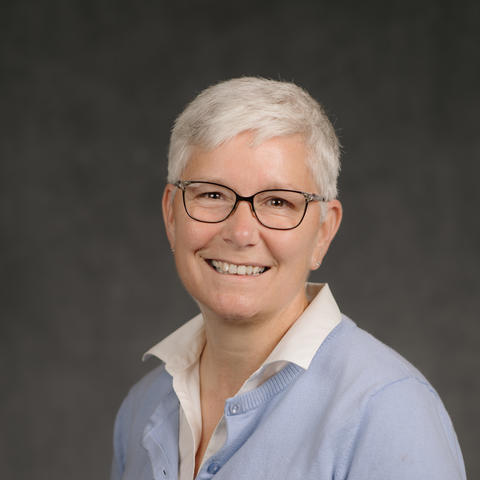

Bio
My lab is primarily interested in T cell development in the thymus. We study how selection processes shape the T cell repertoire to achieve a highly effective and self-tolerant adaptive immune system.
Research Summary
Primarily interested in T cell development in the thymus. We study how selection processes shape the T cell repertoire to achieve a highly effective and self-tolerant adaptive immune system. Current research is focused on these four topics: Positive selection: This is a crucial stage in T cell development, where MHC restricted progenitors are selected from a random pool. We are systematically studying the gene changes that occur in the T cell progenitor during positive selection and how they support the multiple facets of this event (e.g. survival, migration, allelic exclusion, etc). We are also exploring how cortical epithelial cells support the process of positive selection Negative selection : One of the ways the immune system copes with self-reactive T cells is to eliminate them from the repertoire. We developed a highly physiologic in vivo mouse model to study the specific antigen-presenting cell types involved and the timing and anatomic location of negative selection. We are also exploring why some self-reactive cells undergo apoptosis, but others are selected to become regulatory T cells or NKT cells. Thymic Emigration : The lab is currently interested in the final stages of maturation that occur prior to migration of the progenitor from the thymus to the periphery. We seek to understand how the functional competence of the cell is eventually switched from apoptosis to proliferation, and the signals, molecular factors, and anatomic structures involved in emigration itself. Recent studies have focused heavily on the transcription factor KLF2. The Human T cell repertoire : We have a unique collaboration with a clinical virology group to study immune responses in humans that are at high risk for natural infection with a gamma herpesvirus (Epstein Barr Virus or EBV). In addition to documenting the precise changes that occur during the innate and adaptive immune response to this virus, we are exploring how the pre-immune T cell repertoire in such individuals is predisposed to make a pathologic response to this virus (infectious mononucleosis).
Publications
-
Zhang, Z., Salgado, O. C., Liu, B., Moazzami, Z., Hogquist, K. A., Farrar, M. A. & Ruan, H. B. An OGT-STAT5 Axis in Regulatory T Cells Controls Energy and Iron Metabolism. Frontiers in immunology; 2022, 13, 874863.
-
Peng, C., Huggins, M. A., Wanhainen, K. M., Knutson, T. P., Lu, H., Georgiev, H., Mittelsteadt, K. L., Jarjour, N., Wang, H., Hogquist, K. A., Campbell, D. J., Borges da Silva, H. & Jameson, S. C., Engagement of the costimulatory molecule ICOS in tissues promotes establishment of CD8+ tissue-resident memory T cells. Immunity; Jan 11 2022; 55, 1, p. 98-114.e5
-
Georgiev, H., Peng, C., Huggins, M.A., Jameson S. C., Hogquist, K.A. Classical MHC expression by DP thymocytes impairs the selection of non-classical MHC restricted innate-like T cells. Nat Commun 12, 2308 (2021). https://doi.org/10.1038/s41467-021-22589-z
-
Ruscher R, Thera Lee S, Salgado OC, Breed ER, Osum SH, and Hogquist KA. Intestinal CD8?? IELs derived from two distinct thymic precursors have staggered ontogeny. J Exp Med 3 August 2020; 217 (8): e20192336. doi: https://doi.org/10.1084/jem.20192336
-
Wang H, Breed ER, Lee YJ, Qian LJ, Jameson SC, Hogquist KA. Myeloid cells activate iNKT cells to produce IL-4 in the thymic medulla. Proc Natl Acad Sci U S A. 2019 Oct 29;116(44):22262-22268. doi: 10.1073/pnas.1910412116. Epub 2019 Oct 14.
-
Borges da Silva H, Beura LK, Wang H, Hanse EA, Gore R, Scott MC, Walsh DA, Block KE, Fonseca R, Yan Y, Hippen KL, Blazar BR, Masopust D, Kelekar A, Vulchanova L, Hogquist KA, Jameson SC. The purinergic receptor P2RX7 directs metabolic fitness of long-lived memory CD8+ T cells. Nature. 2018 Jul;559(7713):264-268. doi: 10.1038/s41586-018-0282-0. Epub 2018 Jul 4.
Education
Fellowships, Residencies, and Visiting Engagements
Honors and Recognition
Contact
Address
2-186 MBB2101 6th Street SE
Minneapolis, MN 55414


Bio
The Jameson lab primarily focuses on the homeostasis, trafficking, and differentiation of CD8+ T cells, and how these can be regulated to promote beneficial responses and limit immunopathology.
Dr. Jameson studies the regulation of CD8 T cell development, homeostasis, and function. A major focus has been the factors, including cytokines, that induce and maintain protective memory CD8 T cells, capable of efficient control of pathogens and tumors. A related interest is on T cell trafficking, including the cues that determine whether memory T cells patrol around the body (recirculating) or remain in tissues (resident). In particular, we explore the regulation of T cell trafficking by KLF2 and related transcription factors, testing how manipulation of T cell migration can be used to tailor T cell function. Other studies investigate the role of the innate immune "danger" signal receptor P2RX7, which we showed is also critical for supporting survival and metabolic fitness of long-lived memory CD8+ T cells; analysis of non-deletional mechanisms of immunological tolerance as a means to avoid autoimmunity; and work on the immune response to pathogens and allergens in mice with normal microbial experience (also called 'dirty' mice), which we showed are a more faithful model of the adult human immune system.
Research Summary
The T-cell component of the adaptive immune system is proving to be highly complex, with many T-cell subcategories being identified as investigative tools such as flow cytometry and transgenic technologies become more sophisticated. The Jameson lab primarily focuses on the mechanisms that control development, homeostasis, and trafficking of naive and memory CD8+ T cells. As well as the regulation of protective immunity versus immunopathology in T cell responses. Physiological role of self-recognition by the T cell receptor : Recognition of "self" peptide/MHC molecules by the T cell receptor (TCR) is usually considered from the perspective of autoimmunity – but every T cell has to recognize self-ligands (in low affinity interactions) in order to mature in the thymus. We've investigated how these kinds of TCR interactions promote mature T cell survival and can even drive differentiation into a memory-like population (in conjunction with cytokine receptor stimulation). Furthermore, we discovered that the "strength" of the TCR encounter with self-peptide/MHC dictates a T cell's reactivity to foreign antigens: naïve CD8+ T cells with features of greater "self-awareness" showed stronger responses to pathogens. This implies a degree of self-reactivity is beneficial for normal immune function. We're also investigating how CD8+ T cell tolerance to self-peptide/MHC molecules is controlled. In a model we've investigated, involving tolerance to a melanocyte antigen, few self-specific T cells are eliminated during thymic development, and these cells are capable of a robust response to the self-antigen following immunization – however, these cells are poor at inducing immunopathology, suggesting tolerance is narrowly tailored to prevent overt tissue damage. We continue to explore how interactions with self- peptide/MHC ligands are critical to support T cell development, homeostasis and functional reactivity – and to understand how such interactions become unregulated, leading to autoimmunity. Role and regulation of the CD8 coreceptor : The CD8 co-receptor is critical for coordinated binding of the TCR to Class I MHC molecules. We've shown that the strength of the CD8-Class I MHC interaction changes during T cell development, such that optimal interactions occur in developing thymocytes that also show a heightened TCR sensitivity for self-peptide/MHC, which is required for their maturation. We found that this developmental regulation of CD8-Class I MHC binding is regulated, at least in part, by changes in cell surface glycosylation as T cell mature. We also showed that CD8 expression itself is dynamically regulated following T cell activation, so that stimulated CD8+ T cells are temporarily "detuned" after activation, resulting in altered states of ligand recognition. Together, these findings suggest ways in which we might improve desirable CD8+ T cell responses (such as tumor immunotherapy) by enhancing CD8 binding to Class I MHC ligands. CD8+T cell memory: A primary focus of the Jameson lab is CD8+ T cell memory, in all its varied forms. While memory cells are typically considered to arise following an immune response to foreign antigens, we discovered that homeostatic processes, involving TCR interactions with normal self-peptide/MHC ligands and exposure to homeostatic cytokines such as IL-7 and IL-15, lead "naïve" CD8+ T cells to acquire functional characteristics of "true" memory cells. We and others showed that such "virtual" memory cells arise physiologically in normal mice (and resemble a population in humans) and that these cells participate in the response to pathogens, exhibiting a distinct differentiation program from naïve cells. How these cells contribute to immune readiness toward new infections is an active area of interest. We also study conventional memory cells, with a special focus on how distinct "subsets" of memory cells offer distinct mechanisms of protective immunity. For example, some memory CD8+ T cells are embedded in tissues and do not enter the circulation during normal homeostasis ("resident memory" T cells, TRM), while others appear to primarily patrol the blood vasculature, without routinely entering tissues. We are especially interested in what regulates the decision of memory precursors to become distinct memory cell subsets. We recently showed that a purinergic receptor called P2RX7 is critical for generation of CD8+ TRM and "central" memory cells but is largely dispensable for other memory subsets. This was intriguing because the best studied role of P2RX7 is as a receptor for "danger" signals, as a way of activating the innate immune cells to current tissue damage – our data show that P2RX7 has quite distinct role in supporting the metabolic fitness of long-term memory CD8+ T cells. We're currently exploring how P2RX7 and related molecules control CD8+ T cell tumor immunotherapy. Other studies have focused on molecules that are associated with resident versus recirculating cells - distinguishing proteins that are valuable markers but play a limited functional role (such as CD69) from others that have actual functional significance (such as ICOS and S1PR1). Control of lymphocyte trafficking and differentiation by KLF2 : We began working on the transcription factor Kruppel-like factor 2 (KLF2, also called LKLF) because it was thought to be a key player in regulating naïve T cell quiescence. Instead, we found that a primary role of KLF2 is to regulate T cell trafficking – two prominent targets of KLF2 being CD62L (L-selectin) and S1PR1 (a receptor for sphingosine-1-phosphate, essential for lymphocyte egress into blood and lymph). This led to an entirely new understanding of both the function of KLF2 and, more broadly, the mechanisms that control thymocyte egress to the periphery and T cell recirculation. We went on to show that decreased expression of KLF2 (and its target S1PR1) is critical for generating CD8+ TRM in non-lymphoid tissues, but also is critical for generating differentiation of CD4+ T cells into "follicular helper" T cells TFH in the germinal center of lymphoid tissues. These and other intriguing parallels indicate similar regulation modules are at play in controlling localization versus dissemination of T cells (and possibly other lymphocytes) through regulation of KLF2 and other KLF transcription factors. Evaluation of mice with normalized immunological experience : In a long-term collaboration with the Masopust and Hamilton-Hart labs, we've studied how a more physiological exposure to natural mouse pathogens and commensal microbes impacts the immune system in laboratory mice – and the validity of mice as a model for the adult human immune system. To do so we examined mice that were not maintained under typical Specific Pathogen Free (SPF) housing conditions but were exposed to natural microbe transmission from mice purchased from a pet store. This results in widespread immune activation in the inbred mice and substantial and sustained changes in numerous immunological parameters. We showed that these so-called "dirty mice" had characteristics that a more faithful reflection of the immune system in adult humans (while conventional SPF mice more accurately reflect the immune system in neonatal humans). We've investigated how microbial experience influences the response to novel infections, immunopathology and the response to allergens, among other immune parameters. These studies show widespread changes in the nature of many (but not all) immune responses, suggesting exposure to microbes causes permanent remodeling of the immune system, producing a "new normal" baseline of immune readiness.
Publications
For a full list of publications: Link here
CoAching CD8(+) T cells for tumor immunotherapy-the pantothenate way. Kelekar A and Jameson SC. Cell Metab 2021,33(12), 2305-2306. https://doi.org/10.1016/j.cmet.2021.11.009
Senolytics reduce coronavirus-related mortality in old mice. Christina D. Camell, Matthew J. Yousefzadeh, Yi Zhu, Larissa G. P. Langhi Prata, Matthew A. Huggins, Mark Pierson, Lei Zhang, Ryan D. O’Kelly, Tamar Pirtskhalava, Pengcheng Xun, Keisuke Ejima, Ailing Xue, Utkarsh Tripathi, Jair Machado Espindola-Netto, Nino Giorgadze, Elizabeth J. Atkinson, Christina L. Inman, Kurt O. Johnson, Stephanie H. Cholensky , Timothy W. Carlson, Nathan K. LeBrasseur, Sundeep Khosla, M. Gerard O’Sullivan, David B. Allison, Stephen C. Jameson, Alexander Meves, Ming Li, Y. S. Prakash, Sergio E. Chiarella, Sara E. Hamilton, Tamara Tchkonia, Laura J. Niedernhofer, James L. Kirkland, and Paul D. Robbins. Science, 08 Jun 2021.doi: 10.1126/science.abe4832
Classical MHC expression by DP thymocytes impairs the selection of non-classical MHC restricted innate-like T cells. Georgiev, H., Peng, C., Huggins, M.A., Jameson S. C., Hogquist, K.A. Nat Commun 12, 2308 (2021). https://doi.org/10.1038/s41467-021-22589-z
T Cell Memory: Understanding COVID-19.
Jarjour NN, Masopust D, Jameson SC. Immunity. 2021 Jan 12;54(1):14-18. doi: 10.1016/j.immuni.2020.12.009. Epub 2020 Dec 19. PMID: 33406391
The Naming of Memory T-Cell Subsets.
Jameson SC.Cold Spring Harb Perspect Biol. 2021 Jan 4;13(1):a037788. doi: 10.1101/cshperspect.a037788. PMID: 33229439
Education
Fellowships, Residencies, and Visiting Engagements
Honors and Recognition
Contact
Address
2-184 MBB2101 6th Street SE
Minneapolis, MN 55414

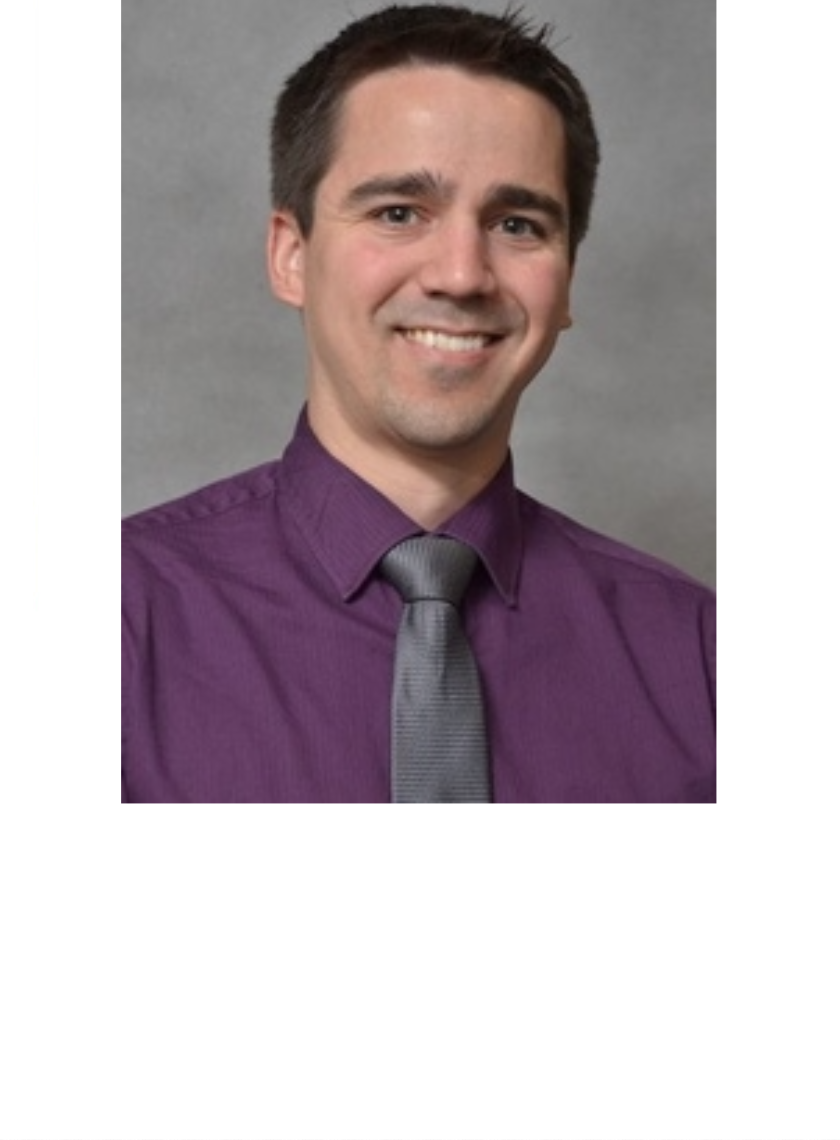
Bio
Dr. Johnson is a clinical and anatomic pathologist with expertise in transfusion medicine, blood banking, and apheresis. He is medical director of the Apheresis Donor Center, which provides peripheral hematopoietic progenitor cell collection, therapeutic plasma exchange, photopheresis therapy, and other therapeutic apheresis services.Dr. Johnson recently collaborated with a colleague in radiology in the area of prostate cancer research, specifically correlating MRI, histopathological patterns and biomarkers with disease aggressiveness and progression. Investigators are homing in on which imaging, histological, and genetic profiles provide the most predictive information in prostate cancer. His current research interests are in extracorporeal photophoresis (ECP), an FDA-approved form of apheresis plus a photoactive compound, often psoralen, that is used to treat advanced cutaneous T-cell lymphoma. ECP has also shown benefits in treating graft-versus-host disease in post-transplant patients. Dr. Johnson has been designated as a research site investigator for a national survey study exploring the use of ECP in lung transplant rejection. One of the goals of the study is to learn what ECP protocol variations are being used by different lung transplant centers and what might constitute a best practices approach for using ECP as a backup treatment for chronic lung rejection in these patients.
Research Summary
Publications
Ipe TS, Raval JS, Fernando LP, Gokhale A, Jacquot C, Johnson, AD, Kim HC, Monis GF, Mo YD, Mrgan SM, Pagano MB, Pham HP, Sanford K, Schmidt AE, Schwartz J, Waldman A, Webb J, Winters JL, Wu Y, Yamada C, Wong ECC. Therapeutic plasma exchange for neuromyelitis opica spectrum disorder: A multicenter retrospective study by the ASFA neurologic diseases subcommittee. J Clinical Apheresis. 2019 Nov. doi: 10.1002/jca.21754.
Sackett K, Cohn CS, Fahey-Ahrndt K, Smith AR, Johnson AD. Successful treatment of pure red cell aplasia because of ABO major mismatched stem cell transplant. J Clin Apher. 2017 May 24. doi: 10.1002/jca.21553. [Epub ahead of print] PMID:28543448
Johnson AD, Cohn CS. Xenotropic Murine Leukemia Virus-Related Virus (XMRV) and the Safety of the Blood Supply . Clin Microbiol Rev. 2016 Oct;29(4):749-57. doi: 10.1128/CMR.00086-15. Review. PMID: 27358491
Education
Fellowships, Residencies, and Visiting Engagements
Licensures and Certifications
Contact
Address
420 Delaware St SEMinneapolis, MN 55455-0341

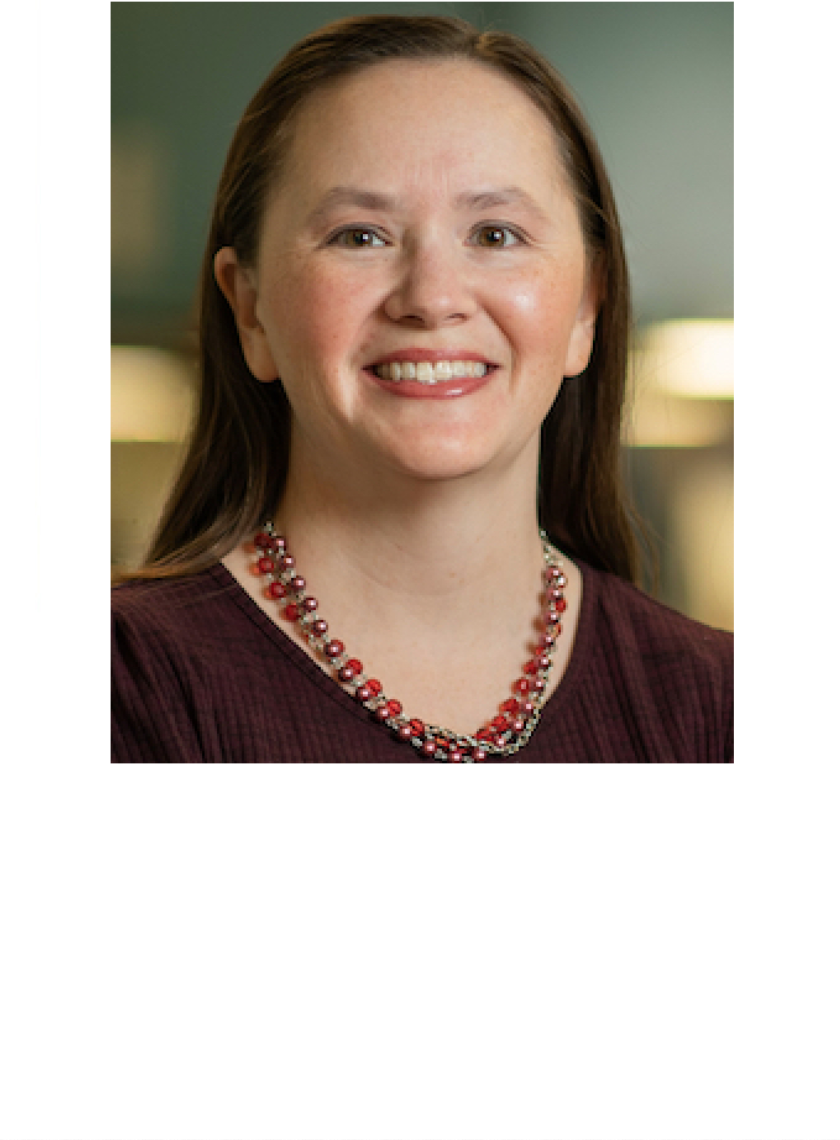
Bio
Dr. Karger is a member of the Division of Molecular Pathology and Genomics and a faculty investigator at the Advanced Research and Diagnostic Laboratory (ARDL). She has multiple research interests including studying immune responses to COVID-19 infection and vaccines, predicting and delaying the progression of chronic kidney disease, and studying cardiovascular and kidney disease complications in patients with type 1 diabetes. Dr. Karger currently serves as Program Director and Principal Investigator for one of four federally funded Serological Sciences Network (SeroNet) Capacity Building Centers, which has been tasked with developing serological assays to test for COVID-19 antibodies, and is conducting research studies to better understand the immune response to COVID-19 infection and vaccination. Additionally, she has been appointed as co-chair of the SeroNet Serology Assays Ops Group. Dr. Karger also serves as Director of the Central Laboratory for the Chronic Kidney Disease Epidemiology Collaboration (CKD-EPI), which tests biomarkers such as creatinine, cystatin C, beta-2 microglobulin and beta-trace protein to improve GFR estimating equations. Improved GFR estimates give clinicians the ability to detect disease progression at earlier stages. In addition, she serves as co-investigator for the Epidemiology of Diabetes Interventions and Complications trial (EDIC) and co-director of the Biomedical Assay Laboratory for the Division of Intramural Population Health Research at the National Institute of Child Health and Human Development (NICHD). Previously, Dr. Karger served as a principal investigator with the Preventing Early Renal Loss in Diabetes (PERL) consortium. The consortium undertook a multi-center, double-blind, placebo-controlled, randomized clinical trial aimed at evaluating the efficacy of allopurinol in preventing kidney function loss in individuals with type 1 diabetes; the trial found no evidence of benefit from serum urate reduction with allopurinol.
Research Summary
Publications
- Garg PK, Guan W, Nomura S, Weir NL, Karger AB, Duprez D, Tsai MY. Associations of plasma omega-3 and omega-6 pufa levels with arterial elasticity: the multi-ethnic study of atherosclerosis. Eur J Clin Nutr. 2022 Jun 9. doi: 10.1038/s41430-022-01172-9.
- Figueiredo JC, Hirsch FR, Kushi LH, Nembhard WN, Crawford JM, Mantis N, Finster L, Merin NM, Merchant A, Reckamp KL, Melmed GY, Braun J, McGovern D, Parekh S, Corley DA, Zohoori N, Amick BC, Du R, Gregersen PK, Diamond B, Taioli E, Sariol C, Espino A, Weiskopf D, Gifoni A, Brien J, Hanege W, Lipsitch M, Zidar DA, Scheck McAlearney A, Wajnberg A, LaBaer J, Yvonne Lewis E, Binder RA, Moormann AM, Forconi C, Forrester S, Batista J, Schieffelin J, Kim D, Biancon G, VanOudenhove J, Halene S, Fan R, Barouch DH, Alter G, Pinninti S, Boppana SB, Pati SK, Latting M, Karaba AH, Roback J, Sekaly R, Neish A, Brincks AM, Granger DA, Karger AB, Thyagarajan B, Thomas SN, Klein SL, Cox AL, Lucas T, Furr-Holden D, Key K, Jones N, Wrammerr J, Suthar M, Yu Wong S, Bowman NM, Simon V, Richardson LD, McBride R, Krammer F, Rana M, Kennedy J, Boehme K, Forrest C, Granger SW, Heaney CD, Knight Lapinski M, Wallet S, Baric RS, Schifanella L, Lopez M, Fernández S, Kenah E, Panchal AR, Britt WJ, Sanz I, Dhodapkar M, Ahmed R, Bartelt LA, Markmann AJ, Lin JT, Hagan RS, Wolfgang MC, Skarbinski J. Mission, organization, and future direction of the Serological Sciences Network for COVID-19 (SeroNet) epidemiologic cohort studies. Open Forum Infect Dis. 2022 Apr 27;9(6):ofac171. doi: 10.1093/ofid/ofac171.
- Karger AB, Brien JD, Christen JM, Dhakal S, Kemp TJ, Klein SL, Pinto LA, Premkumar L, Roback JD, Binder RA, Boehme KW, Boppana S, Cordon-Cardo C, Crawford JM, Daiss JL, Dupuis AP 2nd, Espino AM, Firpo-Betancourt A, Forconi C, Forrest JC, Girardin RC, Granger DA, Granger SW, Haddad NS, Heaney CD, Hunt DT, Kennedy JL, King CL, Krammer F, Kruczynski K, LaBaer J, Lee FE, Lee WT, Liu SL, Lozanski G, Lucas T, Mendu DR, Moormann AM, Murugan V, Okoye NC, Pantoja P, Payne AF, Park J, Pinninti S, Pinto AK, Pisanic N, Qiu J, Sariol CA, Simon V, Song L, Steffen TL, Stone ET, Styer LM, Suthar MS, Thomas SN, , Wajnberg A, Yates JL, Sobhani K. The Serological Sciences Network (SeroNet) for COVID-19: Depth and breadth of serology assays and plans for assay harmonization. mSphere. 2022 Jun 15:e0019322. doi: 10.1128/msphere.00193-22.
- Thomas SN, Karger AB, Altawallbeh G, Nelson KM, Jacobs DR Jr, Gorlin J, Barcelo H, Thyagarajan B. Ultrasensitive detection of salivary SARS-CoV-2 IgG antibodies in individuals with natural and COVID-19 vaccine-induced immunity. Sci Rep. 2022 May 25;12(1):8890. doi: 10.1038/s41598-022-12869-z
- Perkins BA, Bebu I, Gao X, Karger AB, Hirsch IB, Karanchi H, Molitch ME, Zinman B, Lachin JM, and de Boer IH. Early trajectory of estimated glomerular filtration rate and long-term advanced kidney and cardiovascular complications in type 1 diabetes. Diabetes Care. 2022 Mar 1;45(3):585-593. doi: 10.2337/dc21-1883. PMID: 35015817
Education
Fellowships, Residencies, and Visiting Engagements
Licensures and Certifications
Contact
Address
D211 Mayo Building420 Delaware Street SE
Minneapolis, MN 55455


Bio
Dr. Kelekar's laboratory is focused primarily on altered metabolism in cancer, a fairly new field of research. The way metabolic pathways operate differently in malignant versus healthy tissue is proving to be one of the hallmarks of cancer. Kelekar initiated her work in cancer metabolism while studying the mechanisms underlying apoptosis or programmed cell death, specifically the role of bcl-2 and other protein families in regulating apoptosis. Interactions between bcl-2 proteins and the bcl-2 homology domain 3 (BH3)-only proteins are pivotal in regulating apoptosis. Dr. Kelekar's group discovered that the BH3-only protein Noxa, a canonical death-promoting protein, for example, also plays a role in cancer cell metabolism. Noxa is induced in response to apoptotic stimuli in most human cells of epithelial origin but is constitutively expressed in proliferating myeloid and lymphoid cells and required for apoptosis in response to glucose stress. Kelekar and her colleagues identified a serine on Noxa that was phosphorylated by the kinase Cdk5 in myeloid and lymphoid cancers. This amino acid modification inactivates Noxa's apoptotic or cell-killing function, potentially giving tumor cells that can employ this mechanism a survival advantage. Cells can use glucose to trigger the apoptosis avoidance mechanism such as the one enabled by Cdk5-inhibited Noxa. Kelekar and her colleagues propose that the serine residue on Noxa can serve as a glucose-sensitive "toggle switch" controlling both proliferation and apoptosis in leukemias and lymphomas. Normal cells use glucose for the energy-generating chemical reactions that take place in mitochondria through the TCA (tricarboxylic acid) cycle. Kelekar has found that Noxa expression promotes diversion of glucose for the production of biomass and that mitochondria of Noxa-overexpressing cancer cells, as well as proliferating normal cells, use the amino acid glutamine rather than glucose to supply the cell's energy needs. Interestingly, it turns out that Noxa regulates multiple metabolic functions in leukemia cells in addition to regulating glucose and glutamine utilization. Metabolomics tools can now be employed to delineate the metabolic signaling pathways that normal and cancer cells employ to carry out critical biochemical functions. Sorting out the highly sensitive metabolic needs of cancer cells and targeting key molecules like Noxa constitute a promising avenue for small-molecule drug development.
Research Summary
Mechanisms of Apoptosis Research in my laboratory focuses on pathways of cell survival and death with special emphasis on Bcl-2 family proteins as regulators of these pathways. Interactions between multi-domain Bcl-2 proteins and members of the BH3-only Bcl-2 family sub-class are pivotal in promoting cell death. Recently, our studies on human BH3-only protein, Noxa, have revealed a post-translational regulatory pathway that suppresses its pro-apoptotic function and imparts to it a novel metabolic and pro-survival role in human hematological malignancies. We are currently investigating the role of this protein and its binding partner, Mcl-1L, in regulating glucose metabolism in leukemia cells. The recognition that cancer cells exhibit altered metabolism and depend heavily on glucose as their major source of energy is leading to novel therapeutic strategies targeted at glycolytic (glucose breakdown) pathways. Major research areas in the laboratory are briefly described below:
Current Research
Autophagy – its role in cell survival and tumor progression DNA damaging drugs induce apoptosis via the intrinsic pathway through apoptosome formation and caspase-9 activation. MCF-7 breast cancer cells show little to no caspase-9 activation and a delayed death response response to DNA damaging drugs. Further investigation identified autophagy or "self-consumption" as the underlying mechanism for the delayed apoptotic response. Our studies suggested that reduced autophagy may be an adaptive strategy in immortalized and non-invasive breast tumor cells faced with genotoxic stress and underscored the need for autophagy inhibitors in combination with conventional chemotherapeutic drugs in treating early breast cancers (Abedin et al 2007). We are currently focusing some of our research efforts on the contribution of defective autophagy to tumor initiation and progression in breast cancer. In collaboration with the group of Dr. S. Ramakrishnan at the University of Minnesota we have investigated the mechanism of action of the angiogenic inhibitor peptides, kringle 5 and endostatin, in human endothelial cells. These studies (Bui-Nguyen et al2007 and 2009) suggested that both kringle 5 and endostatin induced an apoptotic as well as an autophagic response in endothelial cells, but interfering with the autophagic survival response sensitized cells to the anti-angiogenic effects of the inhibitors by promoting a switch to robust apoptotic cell death. BH3-only protein, Noxa – its role in apoptosis and glucose metabolism in leukemia cells We are currently investigating the post-translational regulation of a human BH3-only protein, Noxa, in hematological malignancies. Human Noxa in stably and constitutively expressed in a majority of leukemia cells and kept in check through post-translational control mechanisms. Interaction of Noxa with its pro-survival binding partner Mcl-1L plays a major role in the apoptotic response of proliferating lymphoid and myeloid leukemia cells to glucose deprivation. We show that, in the presence of adequate glucose, human Noxa is phosphorylated on serine13 by the cyclin dependent kinase, Cdk5, and sequestered within large multi-protein cytosolic particles (Lowman et al2010). Apoptotic triggers, particularly glucose limitation, dephosphorylate Noxa, unmasking its pro-apoptotic function. An understanding of how Noxa is post-translationally regulated will aid in the design of therapeutic strategies that target the modified protein and promote its release from sequestration. Paradoxically, modified sequestered Noxa stimulates glucose consumption and lactate production in T acute lymphocytic leukemia (T-ALL) cells. Our observations point to a novel 'survival' role for Noxa in regulating glucose metabolism in cancer cells; specifically our data point to a role for Noxa in the anabolic pentose phosphate pathway that is crucial for dividing cells. Additionally, we have identified the protein components of two Noxa/Mcl-1L-containing complexes from proliferating leukemia cells by mass spectrometry and are currently investigation their function. Noxa, a canonical tumor suppressor like other BH3-only proteins, had not previously been associated with a survival role. Our studies reveal Noxa as the second BH3-only protein, after family member BAD, to be attributed a metabolic function and underscore the intriguing possibility that other BH3-only members may hold day jobs as pro-survival proteins.
Publications
- Kelekar A and Jameson SC. CoAching CD8(+) T cells for tumor immunotherapy-the pantothenate way. Cell Metab 2021,33(12), 2305-2306.https://doi.org/10.1016/j.cmet.2021.11.009
- Matias MI, Yong CS, Foroushani A, Goldsmith C, Mongellaz C, Sezgin E, Levental KR, Talebi A, Perrault J, Riviere A, Dehairs J, Delos O, Bertand-Michel J, Portais JC, Wong M, Marie JC, Kelekar A, Kinet S, Zimmermann VS, Levental I, Yvan-Charvet L, Swinnen JV, Muljo SA, Hernandez-Vargas H, Tardito S, Taylor N, Dardalhon V. Regulatory T cell differentiation is controlled by aKG-induced alterations in mitochondrial metabolism and lipid homeostasis. Cell Rep. 2021 Nov 2;37(5):109911. doi: 10.1016/j.celrep.2021.109911
- Yan, Y., Krecke, K.N., Bapat, A.S., Yang, T., Lopresti, M.W., Mashek, D.G., and Kelekar, A. Phosphatase PHLPP2 regulates the cellular response to metabolic stress through AMPK. Cell Death Dis 12, 904 (2021). https://doi.org/10.1038/s41419-021-04196-4
- Jemmerson, R., K. Staskus, L. Higgins, K. Conklin and A. Kelekar. Intracellular leucine-rich alpha-2-glycoprotein-1 competes with Apaf-1 for binding cytochrome c in protecting MCF-7 breast cancer cells from apoptosis. 2020. Apoptosis 26:71-82.
Education
Contact
Address
5-126 MCB420 Washington Ave SE
Minneapolis, MN 55455

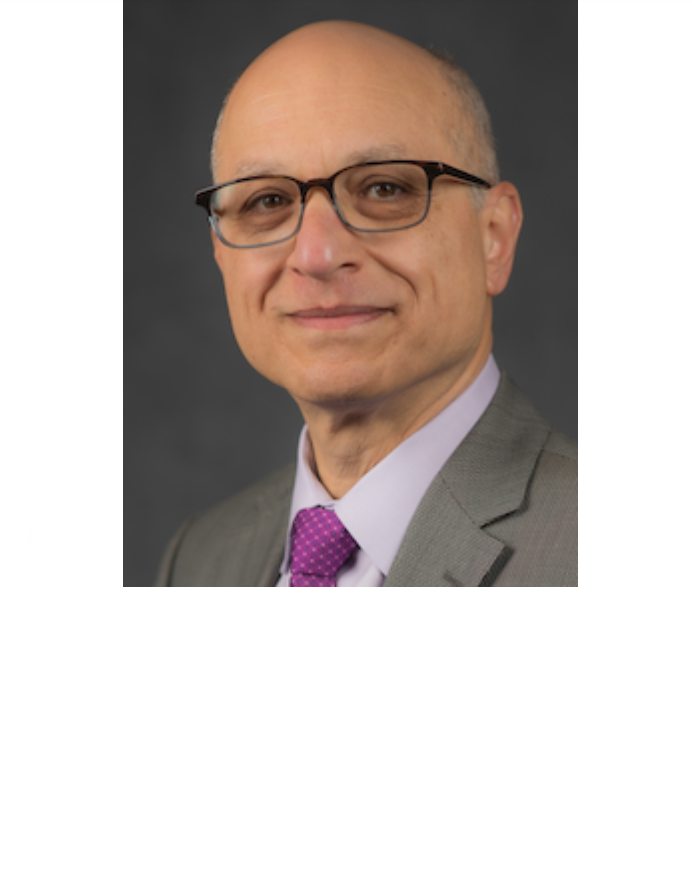
Bio
Dr. Khalifa is the Donald F. Gleason Professor and Director of Anatomic Pathology and a member of the Division of Molecular Pathology and Genomics. He conducts clinical and translational research in gynecologic, hepato-biliary and gastrointestinal disease including cancer using immunohistochemical techniques. The growing number of well-defined tumor antibodies and biomarkers enables surgical pathologists to make a diagnosis with ever-greater accuracy. Antibodies and biomarkers also can provide prognostic information for how a tumor may progress and respond to treatment.
Research Summary
Publications
Khalifa MA, Gagner B, Chen L, Murugan P, Klein ME, Racila E, Amin K, Miller F, Stewart J, Ding Y, Farooqui M, Dasaraju S, and Adeyi OA. Immunohistochemistry and immunofluorescence utilization audit by subspecialty in an academic setting: A step toward stewardship. Annals of Diagnostic Pathology, Volume 67, 2023, 152214, https://doi.org/10.1016/j.anndiagpath.2023.152214.
Clemente V, Hoshino A, Shetty M, , Erickson BK, Baker R, Rubin N, Khalifa M, Weroha SJ, Lou E, Bazzaro M.GLS1 is a protective factor in patients with ovarian clear cell carcinoma and its expression does not correlate with ARID1A-mutated tumors. Cancer Research Communications, July 18, 2022.https://doi.org/10.1158/2767-9764.CRC-22-0122
Bedell S, Chang Z, Burt C, Khalifa M, and Argenta P. Incisional carcinoma of mullerian origin: A case report and review of literature. Gynecologic Oncology Reports, 2000; 33. 100588. 10.1016/j.gore.2020.100588.
Erickson BE, Najjar O, Damast S, Blakaj A, Tymon-Rosario J, Shahi M, Santin A, Klein M, Dolan M, Cimino-Mathews A, Buza N, Ferriss JS, Stone RL, Khalifa M, and Fader AN. Human epidermal growth factor 2 (HER2) in early stage uterine serous carcinoma: A multi-institutional cohort study. Gynecologic Oncology, 2020; 159 (1): 17-22. https://doi.org/10.1016/j.ygyno.2020.07.016.
Wilhite AM, Oestreich MC, Olson M, Bedell SM, Westenberg D, Bangdiwala A, Ikramuddin S, Sanchez-Avila M, Madoff RD, Khalifa MA, Erickson BK. Health care health care provider adherence to surgical guidelines for risk reducing salpingo-oophorectomy. Obstetrics & Gynecology 2019;134: 520-526.
Glasgow MA, Argenta P, Abrahante JE, Shetty M, Talukdar S, Croonquist PA, Khalifa MA, Starr TK. “Biological insights into chemotherapy resistance in ovarian cancer.” Int J Mol Sci. 2019 Apr 30;20(9):2131.
Bassiouny D, Ismiil N, Dubé V, Han G, Cesari M, Lu F-I, Slodkowska E, Parra-Herren C, Chiu HF, Naeim M, Li N, Khalifa M, Nofech-Mozes S. Comprehensive clinicopathologic and updated immunohistochemical characterization of primary ovarian mucinous carcinoma. In J Surg Pathol 2018;1.
Education
Fellowships, Residencies, and Visiting Engagements
Contact
Address
Rm C446-1 Mayo420 Delaware St. SE
Minneapolis, MN 55455

Bio
Dr. Killeen is Director of Clinical Laboratories at the University of Minnesota Medical Center, Fairview, Vice Chair for Clinical Affairs in the Department of Laboratory Medicine and Pathology, and a member of the Division of Molecular Pathology and Genomics. He also chairs the College of American Pathologists' Committee on Laboratory Accuracy Surveys and the Instrumentation Resource Committee. The committee monitors the quality of laboratory assays across the country through the distribution, collection and analysis of proficiency testing specimens and brings problems it identifies to the attention of the clinical pathology community. Dr. Killeen conducts his clinical research through ARDL, a central laboratory for large-scale clinical trials. He is the Principal Investigator for the central laboratory activities of the Systolic Blood Pressure Intervention Trial (SPRINT), an NIH-funded multi-center, randomized clinical trial designed to test whether a treatment program aimed at reducing systolic blood pressure to a lower goal than currently recommended (<120 mm Hg rather than <140 mm Hg) will reduce cardiovascular disease risk. Some 9,300 research subjects have been enrolled in the seven-year study, which ends in 2018. SPRINT investigators believe the study will provide important information on the risks and benefits of intensive blood pressure treatment targets in a range of high-risk participants including those with prior cardiovascular disease, chronic kidney disease, and those age 75 years or older.
Research Summary
Publications
Stoffel M, Greene DN, Beal SG, Foley P, Killeen AA, Shafi H, Terrazas E. Direct-to-Consumer Testing for Routine Purposes. Clin Chem. 2022 Sep 1;68(9):1121-1127. doi: 10.1093/clinchem/hvac106. PMID: 35971633.
SPRINT Research Group; Lewis CE, Fine LJ, Beddhu S, Cheung AK, Cushman WC, Cutler JA, Evans GW, Johnson KC, Kitzman DW, Oparil S, Rahman M, Reboussin DM, Rocco MV, Sink KM, Snyder JK, Whelton PK, Williamson JD, Wright JT Jr, Ambrosius WT. Final Report of a Trial of Intensive versus Standard Blood-Pressure Control. N Engl J Med. 2021 May 20;384(20):1921-1930. doi: 10.1056/NEJMoa1901281. PMID: 34010531.
Garimella PS, Lee AK, Ambrosius WT, Bhatt U, Cheung AK, Chonchol M, Craven T, Hawfield AT, Jotwani V, Killeen A, Punzi H, Sarnak MJ, Wall BM, Ix JH, Shlipak MG. Markers of kidney tubule function and risk of cardiovascular disease events and mortality in the SPRINT trial. Eur Heart J. 2019 Nov 1;40(42):3486-3493. doi: 10.1093/eurheartj/ehz392.
Ginsberg C, Craven TE, Chonchol MB, Cheung AK, Sarnak MJ, Ambrosius WT, Killeen AA, Raphael KL, Bhatt UY, Chen J, Chertow GM, Freedman BI, Oparil S, Papademetriou V, Wall BM, Wright CB, Ix JH, Shlipak MG; SPRINT Research Group. PTH, FGF23, and Intensive Blood Pressure Lowering in Chronic Kidney Disease Participants in SPRINT. Clin J Am Soc Nephrol. 2018 Dec 7;13(12):1816-1824. doi: 10.2215/CJN.05390518.
Malhotra R, Craven T, Ambrosius WT, Killeen AA, Haley WE, Cheung AK, Chonchol M, Sarnak M, Parikh CR, Shlipak MG, Ix JH; SPRINT Research Group. Effects of intensive blood pressure lowering on kidney tubule injury in CKD: A longitudinal subgroup analysis in SPRINT. Am J Kidney Dis. 2018 Sep 28. pii: S0272-6386(18)30879-5. doi: 10.1053/j.ajkd.2018.07.015.
Danni Li, Angela Radulescu, Rupendra T. Shrestha, Matthew Root, Amy B. Karger, Anthony A. Killeen, James S. Hodges, Shu-Ling Fan, Angela Ferguson, Uttam Garg, Lori J. Sokoll, Lynn A. Burmeister. Association of biotin ingestion with performance of hormone and nonhormone assays in healthy adults. JAMA 2017.;318(12):1150-1160.doi:10.1001/jama.2017.13705. https://goo.gl/yeqSt
Killeen AA: The Clinical Laboratory in Modern Healthcare. In Kasper D, Fauci A, Longo D, Hauser S, Jameson J, Loscalzo J (eds): Harrison’s Principles of Internal Medicine, 19th Edition, 2015.
Education
Fellowships, Residencies, and Visiting Engagements
Licensures and Certifications
Contact
Address
MMC 609 Mayo , 420 Delaware SE , Minneapolis, MN 55455

Bio
Dr. Klein is an anatomic pathologist with research interests in breast and gynecologic diseases and the application of technology to disease diagnosis, prognosis, and therapy. Klein and her colleagues conducted a study of Oncotype DX, a widely-used commercial assay for making chemotherapy decisions in estrogen receptor (ER)-positive breast cancers, to compare the combined prognostic / predictive power of standard histology and immunohistochemical markers with Oncotype DX assay. Using equations they developed, they found a strong correlation between standard pathology results and the Oncotype DX assay score. They suggested that in some if not many cases standard pathology markers plus the use of pathology-generated equations derived by linear regression analysis constitute an accurate and cost-effective substitute for the commercial assay. Klein and fellow investigators have also explored quality assurance issues concerning the Oncotype DX assay, specifically the false negatives associated with the assay's detection of HER2 (ERBB2), an important prognostic and predictive marker in breast carcinoma.
Research Summary
Publications
- Khalifa MA, Gagner B, Chen L, Murugan P, Klein ME, Racila E, Amin K, Miller F, Stewart J, Ding Y, Farooqui M, Dasaraju S, and Adeyi OA. Immunohistochemistry and immunofluorescence utilization audit by subspecialty in an academic setting: A step toward stewardship. Annals of Diagnostic Pathology, Volume 67, 2023, 152214, https://doi.org/10.1016/j.anndiagpath.2023.152214.
- Erickson BE, Najjar O, Damast S, Blakaj A, Tymon-Rosario J, Shahi M, Santin A, Klein M, Dolan M, Cimino-Mathews A, Buza N, Ferriss JS, Stone RL, Khalifa M, and Fader AN. Human epidermal growth factor 2 (HER2) in early stage uterine serous carcinoma: A multi-institutional cohort study. Gynecologic Oncology, 2020; 159 (1): 17-22. https://doi.org/10.1016/j.ygyno.2020.07.016.
- Lou E, Vogel RI, Hoostal S, Klein M, Linden MA, Teoh D, Geller MA. Tumor-stroma proportion as a predictive biomarker of resistance to platinum-based chemotherapy in patients with ovarian cancer. JAMA Oncol. 2019 Jun 1. doi: 10.1001/jamaoncol.2019.1943.
- Fitzpatrick M, Pulver T, Klein M, Murugan P, Khalifa M, Amin K. Perivascular Epithelioid Cell Tumor of the Uterus with Ovarian Involvement: A Case Report and Review of the Literature. Am J Case Rep. 2016 May 6; 17:309-14.
Contact
Address
Rm C443 Mayo MMC076420 Delaware St SE
Minneapolis, MN 55455


Research Summary
Dr. Koob is a member of the Division of Molecular Pathology and Genomics. His laboratory develops novel tools for engineering the genomes of laboratory animals to learn how genes that cause mitochondrial and neurodegenerative diseases function. These tools allow researchers to transfer the lengthy human DNA sequences of disease-causing genes into mice and track their function and create transgenic mice carrying human genes with consistent marker mutations so they can be tracked through tissue development and growth.Beginning with cell line research, Koop and his colleagues have now developed full mouse models in which the mitochondrial content of cells can be precisely controlled. They are using these models to study multiple sclerosis (MS), which can be artificially induced in mice. Different strains of mice with different mitochondrial genes are differentially susceptible to induced MS, suggesting that cellular mitochondria constitute the genetic susceptibility locus for the disease. They are working on a model that can control the cell types such as T-cells that may be involved in addition to the oligodendrocytes that MS disables. In MS, mismanaged protein accumulates in the endoplasmic reticulum (ER). The tight ER-mitochondria interface may include a signaling pathway for mitochondrial involvement in MS, which a good animal model can help to identify. Koob is using restriction enzymes that cut DNA differentially in different mouse strains, heteroplastic mice with different mitochondrial genomes, and a variant of the cre-lox recombination system (flox) to identify the specific cell types involved. Molecular tools are now available to pave the way for genetic therapy of mitochondrial diseases following animal studies.As a faculty researcher in the Institute for Translational Neuroscience, Koob is collaborating with among others Karen Hsiao Ashe who developed a mouse model for Alzheimer's disease in the 1990s. Koob's team can engineer specific mutations in the Alzheimer's gene that are reproducible through successive generations of laboratory mice, allowing them to control for the "noise" of genetic variation. The technique they developed using engineered bacterial plasmids which they put into mouse embryonic stem cells allows them to transfer larger intact segments of human DNA into mice than has previously been possible including expanded trinucleotide repeat sequences found in ataxias and Huntington's disease.In collaboration with researchers at the Mayo Clinic, Koob is developing a mouse model for a fairly common corneal dystrophy disease whose causative gene is characterized by an unstable expanded trinucleotide repeat. Using bacterial artificial chromosomes (BACs) and engineered plasmids, Koob's team has developed a technique that can replace unexpanded trinucleotide repeats with the expanded variants found in neurodegenerative and neuromuscular diseases and related diseases like corneal dystrophy.
Publications
- Benzow K, Karanjeet K, Oblak AL, Carter GW, Sasner M, Koob MD. Gene replacement-Alzheimer's disease (GR-AD): Modeling the genetics of human dementias in mice. Alzheimers Dement. 2024 Apr;20(4):3080-3087. doi: 10.1002/alz.13730.
- Duvick L, Southern WM, Benzow KA, Burch ZN, Handler HP, Mitchell JS, Kuivinen H, Gadiparthi U, Yang P, Soles A, Sheeler CA, Rainwater O, Serres S, Lind EB, Nichols-Meade T, You Y, O'Callaghan B, Zoghbi HY, Cvetanovic M, Wheeler VC, Ervasti JM, Koob MD, Orr HT. Mapping SCA1 regional vulnerabilities reveals neural and skeletal muscle contributions to disease. JCI Insight. 2024 Mar 21;9(9):e176057. doi: 10.1172/jci.insight.176057.
- Wei C, Benzow K, Koob MD, Gomez CM, Du X. The Transcription Factor, α1ACT, Acts Through a MicroRNA Network to Regulate Neurogenesis and Cell Death During Neonatal Cerebellar Development. Cerebellum. 2022 Jun 22. doi: 10.1007/s12311-022-01431-2.
- Perissinotti PP, Martínez-Hernández E, He Y, Koob MD, Piedras-Rentería ES. Genetic Deletion of KLHL1 Leads to Hyperexcitability in Hypothalamic POMC Neurons and Lack of Electrical Responses to Leptin. Front Neurosci. 2021 Sep 9;15:718464. doi: 10.3389/fnins.2021.718464.
- Castro M, Venkateswaran N, Peters ST, Deyle DR, Bower M, Koob MD, Boeve BF, Vossel K. Case Report: Early-onset behavioral variant frontotemporal dementia in patient with retrotransposed full-length transcript of Matrin-3 variant 5. Front Neurol. 2020 Dec 21;11:600468. doi: 10.3389/fneur.2020.600468.
- Gamache JE, Kemper L, Steuer E, Leinonen-Wright K, Choquette JM, Hlynialuk C, Benzow K, Vossel KA, Xi W, Koob MD, and Ashe KH. Developmental pathogenicity of 4-repeat human tau Is lost with the P301L mutation in genetically matched tau-transgenic mice. J Neurosci. 2020;40(1):220-236. doi:10.1523/JNEUROSCI.1256-19.2019
- Gamache J, Benzow K, Forster C, Kemper L, Hlynialuk C, Furrow E, Ashe KH, Koob MD. Factors other than hTau overexpression that contribute to tauopathy-like phenotype in rTg4510 mice. Nature Communications 10; June 6, 2019. https://doi.org/10.1038/s41467-019-10428-1.
- Yoon YG, Koob MD. Intramitochondrial transfer and engineering of mammalian mitochondrial genomes in yeast. Mitochondrion. 2019 May;46:15-21. doi: 10.1016/j.mito.2019.03.006. Epub 2019 Apr 11.
Education
Contact
Address
3-140 MBB2101 6th Street SE
Minneapolis, MN 55455


Bio
Dr. Kubiak earned an MD and PhD (Cell and Molecular Biology) from the University of Pennsylvania. He completed a clinical pathology residency at Cornell Medical Center, New York City, where he pursued various studies on COVID-19, and completed a clinical microbiology fellowship at Beth Israel Deaconess Medical Center, one of the Harvard teaching hospitals in Boston.
Research Summary
Dr. Kubiak's research interests include new test validation and verification, antibiotic resistance, quality control, and laboratory informatics.
Publications
Kubiak JM, Hovan M, Davidson E, Douglass C, Burgos K, Walsh TJ, Westblade LF, Satlin MJ. Comparison between Perianal Swab and Stool Specimens for Detecting Colonization with Extended-Spectrum Beta-Lactamase-Producing and Fluoroquinolone-Resistant Enterobacterales. J Clin Micro. 2022 June p.e0023422-e0023422. https://doi.org/10.1128/jcm.00234-22
Rosen DB, Murphy EA, Gejman RS, Capili A, Friedlander RL, Rand S, Cagino KA, Glynn SM, Matthews KC, Kubiak JM, Yee J, Prabhu M, Riley L, Yang YJ. Cytokine response over the course of COVID-19 infection in pregnant women. Cytokine. 2022 June 154:155894(154). https://doi.org/10.1016/j.cyto.2022.155894.
Kubiak J, Davidson E, Soave R, Kodiyanplakkal RP, Robertson A, Besien KV, Shore TB, Lee JR, Westblade LF, Satlin MJ. Colonization with Gastrointestinal Pathogens Prior to Hematopoietic Cell Transplantation and Associated Clinical Implications. Transplant Cell Ther. 2021 Feb 18:S2666-6367(21)00678-3. doi: 10.1016/j.jtct.2021.02.012.
Kubiak JM, Murphy EA1, Yee J, Cagino KA, Friedlander RL, Glynn SM, Matthews KC, Jurkiewicz M, Sukhu AC, Zhao Z, Prabhu M, Riley LE, Yang YJ. Severe acute respiratory syndrome coronavirus 2 serology levels in pregnant women and their neonates. Am J Obstet Gynecol. 2021 Jan 23:S0002-9378(21)00053-3. doi: 10.1016/j.ajog.2021.01.016.
Education
Fellowships, Residencies, and Visiting Engagements
Licensures and Certifications
Honors and Recognition
Contact
Address
MMC 609 Mayo 420 Delaware Minneapolis, MN 55455

Bio
Laffin joined LMP in January 2023. She was clinical instructor at the University of Wisconsin-Madison, State Laboratory of Hygiene, Division of Disease Prevention- UW Cytogenetic Services and Molecular Genetics. In addition, she was Sr. Laboratory Medical Director for Exact Sciences Laboratories, LLC in Madison. She was also Program Director of the American Board of Medical Genetics and Genomics programs for UW Madison in Clinical Biochemical Genetics, Clinical Cytogenetics and Genomics, Clinical Molecular Genetics and Genomics, and Laboratory Genetics and Genomics from 2015-2019.
Research Summary
Laffin's research interests are in the fields of cytogenetics and molecular diagnostics.
Publications:
Miller-Wilson LA, Rutten LJ, Van Thomme J, Ozbay AB, Laffin J, Limburg P. Cross-sectional adherence with the multi-target stool DNA test for colorectal cancer screening in a Medicaid population. Preventive Medicine Reports. 2022 Oct 25:102032. doi: 10.1016/j.pmedr.2022.102032
Johnson AM, Dudek JM, Edwards DK, Myers TA, Joseph P, Laffin JJ, Bruinsma JJ. Analytical validation of a novel multi-target blood-based test to detect hepatocellular carcinoma. Expert Rev Mol Diagn. 2021 Nov;21(11):1245-1252. doi: 10.1080/14737159.2021.1981290.
Bhutani G, Astor BC, Mandelbrot DA, Mankowski-Gettle L, Ziemlewicz T, Wells SA, Frater-Rubsam L, Horner V, Boyer C, Laffin J, Djamali A. Long-term outcomes and prognostic factors in kidney transplant recipients with polycystic kidney disease. Kidney360. 2020 Dec 4;2(2):312-324. doi: 10.34067/KID.0001182019.
Education
Fellowships, Residencies, and Visiting Engagements
Licensures and Certifications
Contact
Address
MMC 609 Mayo, 420 Delaware St. SE, Minneapolis, MN 55455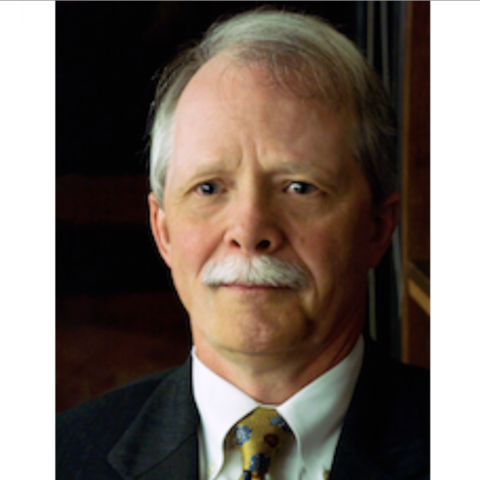
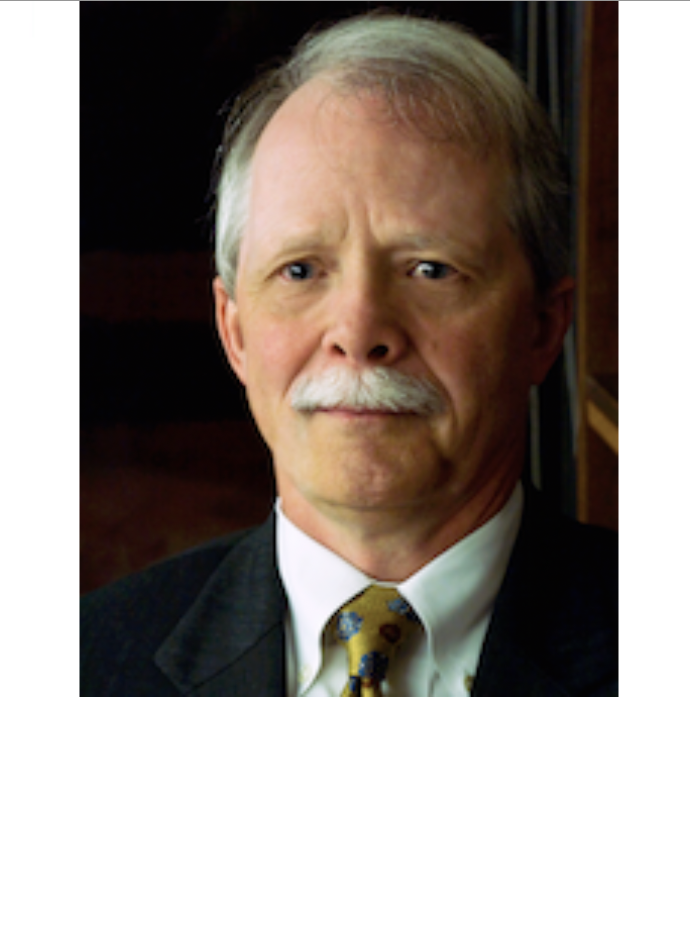
Bio
Dr. Tucker LeBien established himself as a leading B-cell immunologist over more than three decades before becoming Vice Dean for Research in the Medical School and Associate Vice President for Research in the Academic Health Center. LeBien was then Senior Advisor for Research Operations in the Office of Academic Clinical Affairs and Director of the Office of Discovery and Translation in the University's Clinical and Translational Science Institute (CTSI).
Research Summary
Publications
Fischer GA, Wells SM, Rebuffoni JF, Peterson BM, LeBien TW. A model for overcoming challenges in academic pediatric medical device innovation. J Clin Transl Sci. 2019 Feb;3(1):5-11. doi: 10.1017/cts.2019.370.
Wells SM, Rebuffoni JF, LeBien TW. Novel team-based approaches to advance academic translational research. Clin Transl Sci. 2014 Dec;7(6):427-9. doi: 10.1111/cts.12211. Epub 2014 Sep 19.
LeBien TW, Tedder TF. B lymphocytes: how they develop and function. Blood. 2008 Sep 1;112(5):1570-80. doi: 10.1182/blood-2008-02-078071.
Education
Honors and Recognition


Bio
Dr. Li is a faculty investigator in the Advanced Research and Diagnostic Laboratory (ARDL) where she applies mass spectrometry (MS) to the discovery of biomarkers for diagnosis including for Alzheimer's disease, diabetes, heart disease, and cancers. She was trained in analytical chemistry and in proteomics research using MS technology, particularly in identifying proteomic biomarkers that are clinically relevant and have an impact on patient care. Biomarker discovery is a key area of translational research.Besides identifying biomarkers that may be important in clinical medicine, Dr. Li is addressing several challenges posed by MS technology. One is to develop standard protocols to ensure the reproducibility of biomarkers. Another is to design each study in a way that takes into account the complexity and heterogeneity of biological samples and eliminates potentially confounding factors. A third challenge is data analysis of hundreds or even thousands of biomarkers that are expressed at different levels and identifying those that are clinically significant. Collaboration with trusted experts in engineering, bioinformatics, and biostatistics is necessary for study design and data analysis and interpretation. Li believes biomarker research, increasingly a team effort, can lead to advances in precision medicine and better clinical outcomes for patients.
Research Summary
Publications
- Li D, Rooney MR, Burmeister LA, Basta NE, Lutsey PL. Trends in daily use of biotin supplements among US adults, 1999-2016. JAMA. 2020;324(6):605–607. doi:10.1001/jama.2020.8144
- Li D, Misialek JR, Jack CR, Mielke MM, Knopman D, Gottesman R, Mosley T, Alonso A. Plasma Metabolites Associated with Brain MRI Measures of Neurodegeneration in Older Adults in the Atherosclerosis Risk in Communities–Neurocognitive Study (ARIC-NCS). Int J Mol Sci 2019;20(7):1744.
- Li D, Hagen C, Fett AR, Bui HH, Knopman D, Vemuri P, Machulda MM, Jack Jr CR, Petersen RC, Mielke MM. Longitudinal association between phosphatidylcholines, neuroimaging measures of Alzheimer's disease pathophysiology, and cognition in the Mayo Clinic Study of Aging. Neurobiol Aging 2019;79:43-9.
- Danni Li, Fangying Huang, Yingchun Zhao, Peter W. Villata, Timothy J. Griffin, Lin Zhang, Ling Li and Fang Yu. Plasma lipoproteome in Alzheimer’s disease: a proof-of-concept study. Clinical Proteomics2018; 15:31 https://doi.org/10.1186/s12014-018-9207-z
- Danni Li, PhD, Angela Radulescu, MD, Rupendra T. Shrestha, MD, et al. Association of Biotin Ingestion With Performance of Hormone and Nonhormone Assays in Healthy Adults. JAMA. 2017;318(12):1150-1160. doi:10.1001/jama.2017.13705
Education
Fellowships, Residencies, and Visiting Engagements
Licensures and Certifications
Contact
Address
D250-1 Mayo420 Delaware St SE
Minneapolis, MN 55455


Research Summary
Dr. Linden is the Director of Hematopathology. During his graduate studies, he spearheaded the development of groundbreaking genetically engineered mouse models of multiple myeloma, mimicking many of the features of the human disease. Notably, one of these models yielded long-lived polyclonal plasma cells, a breakthrough technology crucial in producing reagent antibodies for research purposes. Since completing his clinical training, Dr. Linden has focused his myeloma research on advancing laboratory diagnoses, clinical monitoring, and predicting disease resistance to therapy.
For a decade, Dr. Linden served on the College of American Pathologists’ Diagnostic Immunology and Flow Cytometry Committee, eventually assuming the role of Chair. His leadership played a pivotal role in refining the Laboratory Accreditation Program’s Flow Cytometry Checklist, enhancing the standardization of flow cytometric minimal residual disease testing for patients, including those with myeloma. Under his guidance, the committee also introduced several new Proficiency Testing (PT) products, including one tailored to evaluate a lab’s ability to detect myeloma minimal residual disease.
Transitioning to the Alliance for Clinical Trials in Oncology (CALGB), Dr. Linden assumed central roles within the Myeloma and Pathology Committees. In 2022, he was appointed Chair of the Pathology Committee, where he continues to spearhead initiatives related to biobanking and correlative science (laboratory-based biomarker testing) for clinical trials.
Beyond his professional accomplishments, Dr. Linden is deeply committed to mentorship, guiding the next generation of students, residents, fellows, and junior faculty. His extensive background in project management, leadership, and advocacy underscores his dedication to advancing healthcare and academic medicine through innovation and expertise.
Selected Publications
(for a more comprehensive list of publications, click Here).
Atlas of Flow Cytometry. Dorfman, D., Karlon, W., and Linden, M. A. Ed., CAP Press, Northfield, IL, 2023.
Dorfman DM, Devitt KA, Cui W, Bashleben C, Naharro ECF, Hedley B, Hupp M, Karlon WJ, Murphy CE, Cherian S, Olteanu H, Seifert RP, Rosado FN, Linden MA. PCNEO, a New Proficiency Testing Program for Flow Cytometric Analysis of Plasma Cell Neoplasms From the College of American Pathologists Diagnostic Immunology and Flow Cytometry Committee. Arch Pathol Lab Med. 2023 Sep 30. doi: 10.5858/arpa.2023-0035-CP. Epub ahead of print. PMID: 37776247.
Baughn LB, Jessen E, Sharma N, Tang H, Smadbeck JB, Long MD, Pearce K, Smith M, Dasari S, Sachs Z, Linden MA, Cook J, Keith Stewart A, Chesi M, Mitra A, Leif Bergsagel P, Van Ness B, Kumar SK. Mass Cytometry reveals unique phenotypic patterns associated with subclonal diversity and outcomes in multiple myeloma. Blood Cancer J. 2023 May 22;13(1):84. doi: 10.1038/s41408-023-00851-5. PMID: 37217482; PMCID: PMC10203138.
Hupp MM, Bashleben C, Cardinali JL, Dorfman DM, Karlon W, Keeney M, Leith C, Long T, Murphy CE, Pillai V, Rosado FN, Seegmiller AC, Linden MA. Participation in the College of American Pathologists Laboratory Accreditation Program Decreases Variability in B-Lymphoblastic Leukemia and Plasma Cell Myeloma Flow Cytometric Minimal Residual Disease Testing: A Follow-up Survey. Arch Pathol Lab Med. 2021 Mar 1;145(3):336-342. doi: 10.5858/arpa.2019-0493-CP. PMID: 32886757.
Courville EL, Yohe S, Shivers P, Linden MA. VS38 Identifies Myeloma Cells With Dim CD38 Expression and Plasma Cells Following Daratumumab Therapy, Which Interferes With CD38 Detection for 4 to 6 Months. Am J Clin Pathol. 2020 Jan 2;153(2):221-228. doi: 10.1093/ajcp/aqz153. PMID: 31679012.
Baughn LB, Sachs Z, Noble-Orcutt KE, Mitra A, Van Ness BG, Linden MA. Phenotypic and functional characterization of a bortezomib-resistant multiple myeloma cell line by flow and mass cytometry. Leuk Lymphoma. 2017 Aug;58(8):1931-1940. doi: 10.1080/10428194.2016.1266621. Epub 2016 Dec 16. PMID: 27981867; PMCID: PMC5504883.
Baughn LB, Linden MA. Standardization of Minimal Residual Disease Testing in Multiple Myeloma. J Appl Lab Med. 2017 Jul 1;2(1):118-122. doi: 10.1373/jalm.2016.020883. PMID: 33636956.
Keeney M, Halley JG, Rhoads DD, Ansari MQ, Kussick SJ, Karlon WJ, Mehta KU, Dorfman DM, Linden MA. Marked Variability in Reported Minimal Residual Disease Lower Level of Detection of 4 Hematolymphoid Neoplasms: A Survey of Participants in the College of American Pathologists Flow Cytometry Proficiency Testing Program. Arch Pathol Lab Med. 2015 Oct;139(10):1276-80. doi: 10.5858/arpa.2014-0543-CP. Epub 2015 Feb 19. PMID: 25695342.
Fall DJ, Stessman H, Patel SS, Sachs Z, Van Ness BG, Baughn LB, Linden MA. Utilization of translational bioinformatics to identify novel biomarkers of bortezomib resistance in multiple myeloma. J Cancer. 2014 Sep 21;5(9):720-7. doi: 10.7150/jca.9864. PMID: 25368671; PMCID: PMC4216795.
Stessman HA, Mansoor A, Linden MA, Van Ness B, Baughn LB. Stabilization of activation induced cytidine deaminase by bortezomib does not confer increased drug target mutation frequency. Leuk Lymphoma. 2014 Jan;55(1):220-2. doi: 10.3109/10428194.2013.797575. Epub 2013 Jun 4. PMID: 23734619.
Stessman HA, Mansoor A, Zhan F, Linden MA, Van Ness B, Baughn LB. Bortezomib resistance can be reversed by induced expression of plasma cell maturation markers in a mouse in vitro model of multiple myeloma. PLoS One. 2013 Oct 29;8(10):e77608. doi: 10.1371/journal.pone.0077608. PMID: 24204892; PMCID: PMC3812176.
Stessman HA, Mansoor A, Zhan F, Janz S, Linden MA, Baughn LB, Van Ness B. Reduced CXCR4 expression is associated with extramedullary disease in a mouse model of myeloma and predicts poor survival in multiple myeloma patients treated with bortezomib. Leukemia. 2013 Oct;27(10):2075-7. doi: 10.1038/leu.2013.148. Epub 2013 May 14. PMID: 23728080; PMCID: PMC4053943.
Stessman HA, Baughn LB, Sarver A, Xia T, Deshpande R, Mansoor A, Walsh SA, Sunderland JJ, Dolloff NG, Linden MA, Zhan F, Janz S, Myers CL, Van Ness BG. Profiling bortezomib resistance identifies secondary therapies in a mouse myeloma model. Mol Cancer Ther. 2013 Jun;12(6):1140-50. doi: 10.1158/1535-7163.MCT-12-1151. Epub 2013 Mar 27. PMID: 23536725; PMCID: PMC4076840.
Linden MA, Kirchhof N, Carlson CS, Van Ness BG. Targeted overexpression of an activated N-ras gene results in B-cell and plasma cell lymphoproliferation and cooperates with c-myc to induce fatal B-cell neoplasia. Exp Hematol. 2012 Mar;40(3):216-27. doi: 10.1016/j.exphem.2011.11.006. Epub 2011 Nov 23. PMID: 22120021; PMCID: PMC3279594.
Linden M, Kirchhof N, Kvitrud M, Van Ness B. ABL-MYC retroviral infection elicits bone marrow plasma cell tumors in Bcl-X(L) transgenic mice. Leuk Res. 2005 Apr;29(4):435-44. doi: 10.1016/j.leukres.2004.09.007. Epub 2004 Dec 18. PMID: 15725478.
Cheung WC, Kim JS, Linden M, Peng L, Van Ness B, Polakiewicz RD, Janz S. Novel targeted deregulation of c-Myc cooperates with Bcl-X(L) to cause plasma cell neoplasms in mice. J Clin Invest. 2004 Jun;113(12):1763-73. doi: 10.1172/JCI20369. PMID: 15199411; PMCID: PMC420503.
Linden M, Kirchhof N, Carlson C, Van Ness B. Targeted overexpression of Bcl-XL in B-lymphoid cells results in lymphoproliferative disease and plasma cell malignancies. Blood. 2004 Apr 1;103(7):2779-86. doi: 10.1182/blood-2003-10-3399. Epub 2003 Dec 4. PMID: 14656874.
Clinical Summary
• Lymph node pathology • Bone marrow pathology • Flow cytometry • Minimal residual disease • External quality assurance/proficiency testing • Plasma cell myeloma
Fellowships, Residencies, and Visiting Engagements
Licensures and Certifications
Contact
Address
Laboratory Medicine and Pathology420 Delaware St SE
Minneapolis, MN 55455-0341


Research Summary
Dr. Luquette is a pediatric-perinatal pathologist with a background in basic science and information technology (including programing and systems development). He has also served in administrative roles with an emphasis on development of infrastructure and deployment of cutting-edge services. His current research interests include diagnostic techniques and have focused on molar gestation, Hirschsprung's disease and inflammatory bowel disease. Current studies of molar pregnancies include analysis of p53 as a marker to separate partial hydatidiform moles from nonmolar gestations using morphometric techniques. The benefit would be improved identification of cases that require ploidy studies, a more costly test that requires a greater amount of time for a result. Since joining the department, Dr. Luquette has validated the Acetylcholinesterase enzyme histochemical stain for use in rectal biopsies and added some refinements to expand the ability of practitioners to obtain, store and ship specimens in a stable transport medium. This allows specimens to be harvested at any hour, be stable for days prior to processing, and to be shipped long distances for consultation. Studies planned for inflammatory bowel disease include the development of methods using flow cytometry to immunophenotype the inflammatory cells in intestinal biopsies in an effort to distinguish ulcerative colitis from Crohn's disease.
Publications
Naumchik B, Weigel BJ, Murati MA, Rudzinski E, Paulson V, Lockwood CM, Dolan M, Flanagan S, Luquette M. Congenital infantile fibrosarcoma involving pelvic wall and thigh soft tissues and placenta, presenting with coagulopathy. Pediatr Dev Pathol. 2022 Jul 14:10935266221114017. doi: 10.1177/10935266221114017.
Oltvai ZN, Smith EA, Wiens K, Nogee LM, Luquette M, Nelson AC, and Wikenheiser-Brokamp KA. Neonatal respiratory failure due to novel compound heterozygous mutations in the ABCA3 lipid transporter. Cold Spring Harb Mol Case Stud. 2020;6(3):a005074. 2020 Jun 12. doi:10.1101/mcs.a005074
Aqsa Nasir, MD; Mark Luquette, MD; Paari Murugan, MD., "Retroperitoneal Ganglioneuroblastoma and Plexiform Neurofibroma in an Adult: A Rare Presentation", in press, published as a web-only supplement to the September 2016 issue of theArchives of Pathology & Laboratory Medicine.
Education
Fellowships, Residencies, and Visiting Engagements
Licensures and Certifications
Contact
Address
University of Minnesota Masonic Children’s Hospital2414 South 7th Street, East Building Room 303
Minneapolis, MN 55454
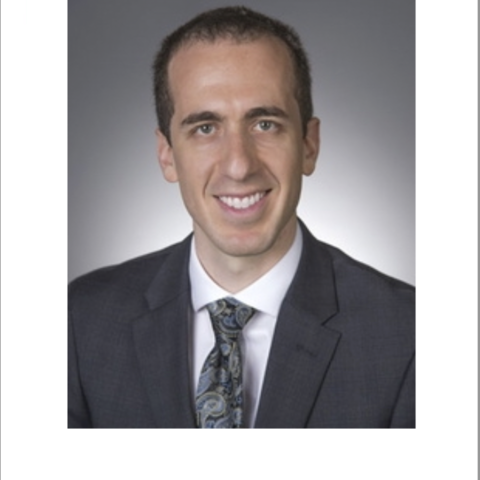
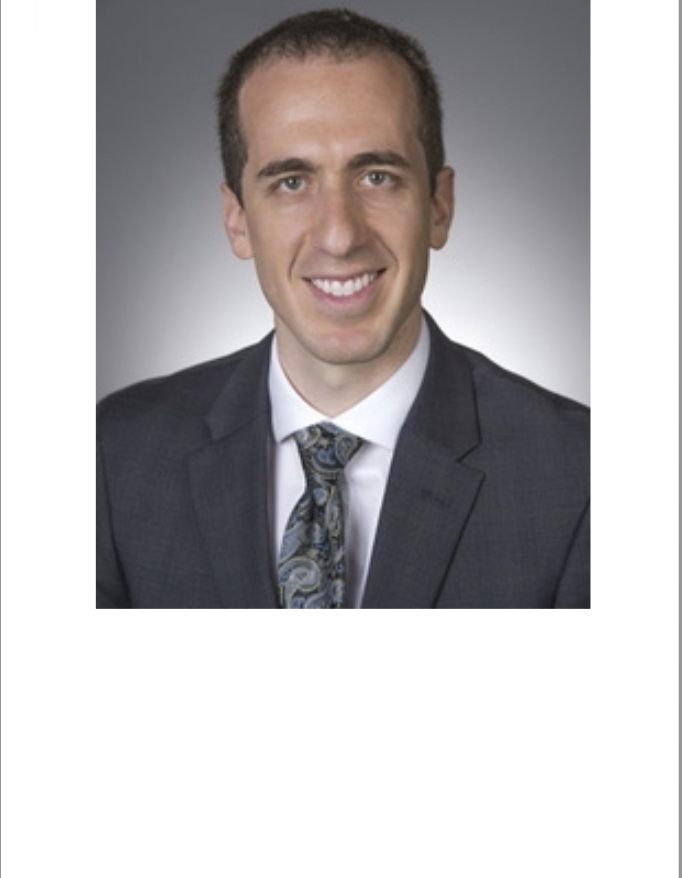
Bio
Dr. Martinez earned an MD degree and a PhD degree (immunology and molecular pathogenesis) from Emory University in Atlanta. Since 2018 he has been a clinical pathology resident, a postdoctoral research fellow, and a molecular genetics pathology fellow, all in LMP.
Martinez was Immunology and Molecular Pathogenesis Student Scholar of the Year at Emory in 2016 and was winner of the Ernst Award for best scientific paper as an LMP resident in 2021.
Research Summary
Publications
Peer Reviewed Articles
Breed ER, Vobořil M, Ashby KM, Martinez RJ, Qian L, Wang H, Salgado OC, O'Connor CH, Hogquist KA. Type 2 cytokines in the thymus activate Sirpα+ dendritic cells to promote clonal deletion. Nat Immunol. 2022 Jul;23(7):1042-1051. doi: 10.1038/s41590-022-01218-x. Epub 2022
Martinez RJ, Breed ER, Worota Y, Ashby KM, Vobořil M, Mathes T, Salgado OC, O'Connor CH, Kotenko SV, Hogquist KA. Type III interferon drives thymic B cell activation and regulatory T cell generation. Proc Natl Acad Sci U S A. 2023 Feb 28;120(9):e2220120120. doi: 10.1073/pnas.2220120120.
Zantek N.D., Martinez R.J., Johnson A.D., Tholkes A.J., Shah S. (2021) Apheresis practice patterns in the United States of America: Analysis of a market claims database. J Clin Apher. 36(5):750-758.
Martinez, R. J., Pankratz, N., Schomaker, M., Daniel, J., Beckman, K., Karger, A. B.,Thyagarajan, B., Ferreri, P., Yohe, S. L., & Nelson, A. C. (2021). Prediction of False-Positive Severe Acute Respiratory Syndrome Coronavirus 2 (SARS-CoV-2) Molecular Results in a High-Throughput Open-Platform System. The Journal of molecular diagnostics. 23 (9), 1085–1096.
Martinez RJ, Kang Q, Nennig D, Bailey NG, Brown NA, Betz BL, Tewari M, Thyagarajan B, Bachanova V, Mroz P. One-Step Multiplexed Droplet Digital Polymerase Chain Reaction for Quantification of p190 BCR-ABL1 Fusion Transcript in B-Lymphoblastic Leukemia. Arch Pathol Lab Med. 2022 Jan 1;146(1):92-100. doi: 10.5858/arpa.2020-0454-OA.
Education
Fellowships, Residencies, and Visiting Engagements
Licensures and Certifications
Contact
Address
Mailing Address MMC 609 Mayo 420 Delaware Minneapolis, MN 55455

Contact
Address
760 Mayo Building420 Delaware Street SE
Minneapolis, MN 55455


Bio
Dr. McCarthy is a member of the Division of Molecular Pathology and Genomics. His laboratory focuses on understanding the importance of changes in protumorigenic changes in the extracellular matrix (ECM) within cancerized stroma that promote malignant tumor progression. It is well known that cancerized (tumor associated) stroma has an important influence on tumor growth, localized invasion, metastasis and resistance to therapy. These ECM components include stromal associated proteins such as various types of collagens as well as hyaluronan (HA) which is a large tumor-associated polyanionic carbohydrate polymer. The McCarthy laboratory is studying in parallel cell surface receptors for these ECM components used by tumor cells to promote their growth, invasion and metastasis. The receptors that are the focus of these studies are two that bind HA (RHAMM and CD44) as well those that bind specific tumor associated collagens (integrins and CSPG4). These receptors function to organize oncogenic signaling complexes within the plasma membrane of tumor cells. They directly impact on the motility and invasive machinery in tumor cells and they instigate changes in the cancer cell transcriptome to promote progression and metastasis formation. The McCarthy laboratory is currently using specific inhibitory synthetic peptides, novel small molecule inhibitors and immune cell targeting of these receptors as strategies to treat a number of tumor types including prostate, breast, glioblastoma multiforme and melanoma.
Research Summary
Tumor cell adhesion, invasion, metastasis The research in the McCarthy Laboratory focuses on understanding the importance of changes in the relationships between tumor cells and the surrounding extracellular matrix in tumor progression and metastasis. The research in the laboratory is organized into two major areas related to specific tumors. Melanoma, a malignant tumor of the skin, constitutes one of these research focus areas. Ongoing studies in the laboratory address the mechanisms by which an early progression antigen, termed Melanoma Chondroitin Sulfate Proteoglycan (MCSP) enhances adhesion, survival, growth and invasion of primary and metastatic melanomas. MCSP is a transmembrane proteoglycan that can enhance the adhesion and invasion of melanoma cells. Projects related to MCSP-mediated signal transduction, tumor cell survival, and activation of specific proteases important for tumor invasion are currently in progress. Additionally, related studies in prostate cancer are also ongoing in the laboratory. These studies focus on understanding the mechanism by which specific chemotactic cytokines (termed chemokines) stimulate prostate tumor invasion. Research projects are also in progress to study the importance of hyaluronan synthesis in prostate tumor growth, invasion, and metastasis to bone and other organs.
Publications
Messam, B., Tolg, C., McCarthy, J., Nelson, A., & Turley, E. (2021). RHAMM Is a Multifunctional Protein That Regulates Cancer Progression. Biomolecules. PubMed Central ID Number: PMC8508827
Tolg C, Messam BJ, McCarthy JB, Nelson AC, Turley EA. Hyaluronan Functions in Wound Repair That Are Captured to Fuel Breast Cancer Progression. Biomolecules. 2021 Oct 20;11(11):1551. doi: 10.3390/biom11111551.
Tolg, C. (Lead Author), Messam, B., McCarthy, J. B., Nelson, A., & Turley, E. (2021) Hyaluronan Functions in Wound Repair That Are Captured to Fuel Breast Cancer Progression. Biomolecules. PubMed Central ID Number: 8615562
Yang, J., Liao*, Q., Price, M., Moriarity, B., Wolf, N., Felices, M., Miller, J., Geller, M., Bendzick, L., Hopps, R., Starr, T., O'Connor, C., Tarullo, S., Nelson, A., Turley, E., Wang, J., & McCarthy, J. (2022) Chondroitin Sulfate Proteoglycan 4, A Targetable Oncoantigen that Promotes Ovarian Cancer Growth, Invasion, Cisplatin Resistance and Spheroid Formation. Translational Oncology. Epub 2021 Dec.20 PMID: 34942534.
Brett, M. E., H. E. Bomberger, G. R. Doak, M. A. Price, J. B. McCarthy and D. K. Wood. "In vitro elucidation of the role of pericellular matrix in metastatic extravasation and invasion of breast carcinoma cells." Integr Biol (Camb) 2018; 10(4): 242-252.
McCarthy, J. B., D. El-Ashry and E. A. Turley. "Hyaluronan, cancer-associated fibroblasts and the tumor microenvironment in malignant progression." Front Cell Dev Biol. 2018; 6: 48.Turley, EA, Wood DK and McCarthy JB. "Carcinoma cell hyaluronan as a "portable" cancerized prometastatic microenvironment." Cancer Res 2016 76(9): 2507-2512.
Education
Fellowships, Residencies, and Visiting Engagements
Selected Publications
Contact
Address
760F MCRB425 E River Pkwy
Minneapolis, MN 55455
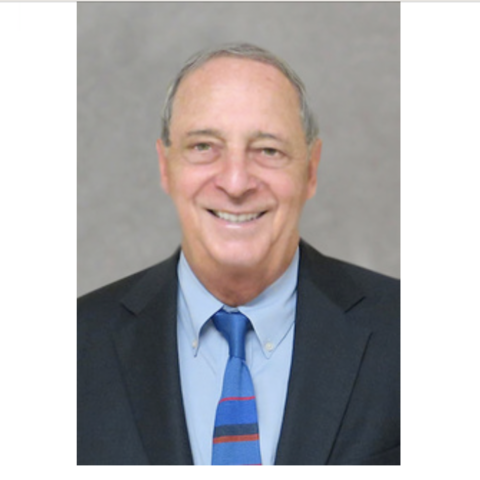
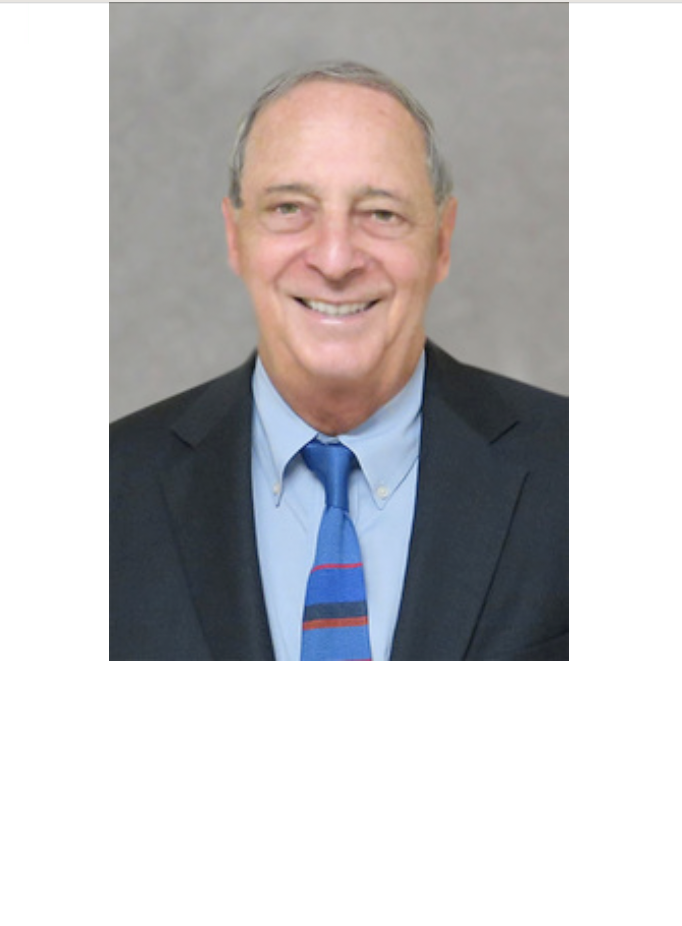
Bio
Dr. McCullough is an international leader in transfusion medicine research and practice and in clinical trials involving transfusion for treating diseases of the blood and bone marrow as well as bleeding conditions. In recent years he has focused his research primarily in two areas: clinical trials involving transfusion medicine; and blood donation and blood banking practices in developing countries.
Research Summary
McCullough has a longstanding interest in clinical trials including randomized controlled clinical trials relating to blood transfusion, cell therapies and platelet therapies. He was the University’s principal investigator (PI) for the NIH-funded Transfusion Medicine / Hemostasis Clinical Trials Network (CTN), a 12-year study involving 17 sites launched in 2002. The network evaluated blood products and cytokines used to treat hemostatic and hematologic disorders in adults and children with the goal of facilitating optimal therapies. Through the CTN McCullough’s team conducted a clinical trial for platelet transfusion to determine optimal platelet dosage for the control of bleeding and a related trial exploring platelet transfusion frequency and cost. McCullough and his CTN colleagues recently explored the effects of red-cell duration storage on patients undergoing cardiac surgery. They found that transfusion of red cells stored for 10 days or less was not superior to the transfusion of red cells stored for 21 days or more.
Several of the clinical trials in which McCullough has participated have involved pathogen inactivation, which involves treating blood products after they are collected to eliminate contaminating viruses or bacteria, thereby making the blood products safe to transfuse. McCullough was PI for a large, definitive phase III clinical trial involving platelets treated with a psoralen compound in conjunction with ultraviolet light, which together lock up nucleic acids through crosslinking and prevent cells and viruses in blood products from replicating. The FDA approved the approach for platelet transfusion in 2014 and authorized a phase IV post-marketing clinical trial, which McCullough and his colleagues will undertake. McCullough is also one of three PIs in a controlled clinical trial for an alternative approach pathogen inactivation approach that involves riboflavin (vitamin B2) and ultraviolet light, which when used together release toxic compounds that damage nucleic acids and prevent DNA replication. Dr McCullough has carried out clinical trials of pathogen inactivation of plasma in patients who were acutely bleeding, typically liver disease and liver transplant patients, and of red cell transfusion in patients undergoing cardiovascular surgery.
Because of his experience conducting clinical trials, McCullough also serves on the Drug Safety and Monitoring Board committee of a clinical trial focused on screening plasma obtained from Liberian patients who have recovered from Ebola infection. Clinical evidence suggests that antibodies from reconvalescent donors (persons who have recovered from infection) may be effective in the treatment of Ebola virus infection. In addition, he has advised the Italian National Blood Transfusion Service regarding conduct of a clinical trial of pathogen-inactivated platelet transfusion.
On the international front, McCullough contracted with the Centers for Disease Control and Prevention in three projects – in Tanzania, Uganda, and Afghanistan -- on two of which he has served as PI. The projects involved collaborating with the national blood programs of these countries to advance blood availability and blood safety. McCullough and his colleagues worked to strengthen blood donor recruitment programs, improve the quality of blood product testing, and provide transfusion medicine education for physicians, among other activities. While McCullough sees signs of systemic improvement, many technical and social challenges remain to modernize blood donation, testing, and medical use in these countries given their limited medical and public health infrastructures.
Publications
Riley W, Cohn CS, Love K, McCullough J. Ensuring a Reliable Platelet Supply in the United States. N Engl J Med. 2023 Jun 1;388(22):2017-2019. doi: 10.1056/NEJMp2302523.
McCullough J. RBC as targets of infection. Hematology 2014; 2014:404-409.
McCullough J, Riley E, Lindgren B, Pulkrabek S, Hall R, Riley W. Blood product recalls in the United States. Transfusion 2014; 54:2276-2282.
Akel S, Regan D, Wall D, Petz L, McCullough J. Current thawing and infusion practice of cryopreserved cord blood: the impact on graft quality, recipient safety, and transplantation outcomes. Transfusion 2014; 54:2997-3009.
Rioux-Masse B, Cohn C, Lindgren B, Pulkrabek S, McCullough J. Utilization of cross-matched or HLA-matched platelets for patients refractory to platelet transfusion. Transfusion 2014; 54:3080-3087
Education
Fellowships, Residencies, and Visiting Engagements
Grants and Patents
Selected Grants


Bio
Dr. McKenna holds the American Red Cross Chair in Transfusion Medicine and is Director of the Division of Transfusion Medicine. He also serves as the Scientific and Medical Director of Molecular and Cellular Therapeutics (MCT), the University's cGMP facility, as well as Laboratory and Medical Director of the University of Minnesota Medical Center Clinical Cell Therapy Laboratory and the director of the fellowship program in Transfusion Medicine/Blood Banking. McKenna is an active AABB member, serving on the board of directors for four years and leading the AABB Cellular Therapy Section Coordinating Committee for several years. He was a key investigator in the NIH-sponsored Production Assistance for Cellular Therapies contract from 2003-2015.
Research Summary
Interests include umbilical cord blood research, quality assurance/quality control in cellular therapy, and translational research/clinical scale-up of biotherapeutics.
Publications
- Mamo T, Dreyzin A, Stroncek D, McKenna DH. Emerging biomarkers for monitoring chimeric antigen receptor T-cell therapy. Clin Chem. 2024 Jan 4;70(1):116-127. doi: 10.1093/clinchem/hvad179.
- Mamo T, Hippen KL, MacMillan ML, Brunstein CG, Miller JS, Wagner JE, Blazar BR, McKenna DH. Regulatory T cells: A review of manufacturing and clinical utility. Transfusion. 2022 Apr;62(4):904-915. doi: 10.1111/trf.16797.
- Walton K, Fernandez MR, Sagatys EM, Reff J, Kim J, Lee MC, Kiluk J, Hui JYC, McKenna D, Hupp M, Forster C, Linden MA, Lawrence NJ, Lawrence HR, Pidala J, Pavletic SZ, Blazar BR, Sebti SM, Cleveland JL, Anasetti C, Betts BC. Metabolic reprogramming augments potency of human pSTAT3-inhibited iTregs to suppress alloreactivity. JCI Insight. 2020 Apr 7. pii: 136437. doi: 10.1172/jci.insight.136437.
- Hussein E, DeFor T, Wagner JE, Sumstad D, Brunstein CG, McKenna DH. Evaluation of post-thaw CFU-GM: clinical utility and role in quality assessment of umbilical cord blood in patients receiving single unit transplant. Transfusion. 2019 Nov 22. doi: 10.1111/trf.15592.
- McKenna D. Challenges in the cGMP manufacturing of MSCs for multicenter academia trials. Transfusion (2016);56(4):18S-9S. doi: 10.1111/trf.13565.
- Courville EL*, Singh C*, Yohe S, Linden MA, Naemi K, Berger M, Ustun C, McKenna R, Dolan M. Patients with a history of prior chemotherapy and isolated del(20q) with minimal myelodysplasia have an indolent course. *co-first authors. Am J Clinical Pathol.2016 Apr; 145(4):459-66.
Education
Fellowships, Residencies, and Visiting Engagements
Licensures and Certifications
Contact
Address
Fairview-University Medical Center1900 Fitch Av
St Paul, MN 55108
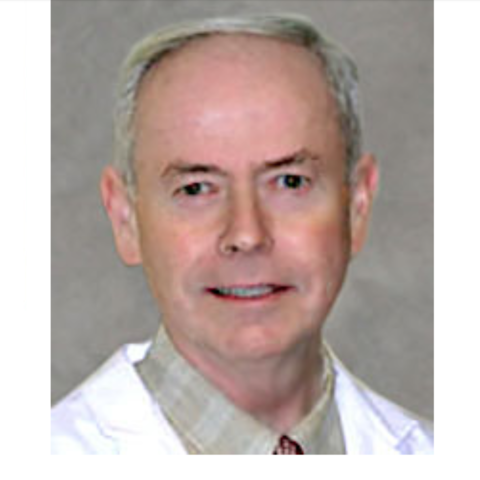

Research Summary
Dr. McKenna is Professor Emeritus in the Department of Laboratory Medicine and Pathology. As a hematopathologist who has conducted research in the field over four decades, he employs current laboratory techniques to improve clinical capabilities for diagnosing and classifying hematologic diseases including leukemias and lymphomas. The goal of his research is to contribute to advances in diagnostics, classification, and understanding of the pathobiology of these diseases through a variety of methods. Among the methods are traditional cell morphological analysis, immunophenotyping, flow cytometry, and more recently molecular genetics. Advances in diagnosis and classification using these methods can help guide clinicians in choosing the optimal course of treatment for patients.
Recently McKenna has collaborated in research studies ranging from characterization of B-cell acute lymphoblastic leukemias with aberrant immunophenotypes to cases of Langerhans cell histiocytosis in acute leukemias to post-transplant lymphoproliferative disorders involving Epstein-Barr virus (EBV). Some patients develop lymphoproliferative disease following hematopoietic stem cell transplantation or organ transplantation. Most of these cases involve EBV infection. McKenna and his colleagues identified patients with EBV-positive mucocutaneous ulcer (MCU), lesions that occur in the skin, oral cavity, or gastrointestinal tract. They suggest that MCU may warrant consideration as a distinct category in the classification of post-transplant lymphoproliferative disorders.
Publications
- Yohe S, Chenault C, Torlakovic E, Asplund S, McKenna RW. Langerhans Cell Histiocytosis in Acute Leukemias of Ambiguous or Myeloid Lineage in Adult Patients: support for a possible clonal relationship. Mod Pathol; 27: 651-656, 2014.
- Hart M, Thakral B, Yohe S, Balfour HH, Singh C, Spears M, McKenna RW. EBV-Positive Mucocutaneous Ulcer in Organ Transplant Recipients: A Localized Indolent Post-Transplant Lymphoproliferative Disorder. Am J Surg Pathol. 38: 1522-9, 2014.
- Tasso, David M.; Dunning, Karla K.; McKenna, Robert W.; Pambuccian, Stefan E. Erythroblastosis in the peritoneal fluid of a newborn. Diagnostic Cytopathology; 41(5): 431-433, 2013.
- Takahashi, Takao; Shivapurkar, Narayan M.; Reddy, Jyotsna L.; Shigematsu, Hisayuki; Miyajima, Kuniharu; Suzuki, Makoto; Toyooka, Shinichi; Zöchbauer-Müller, Sabine; Drach, Johannes W.; Parikh, Gunjan; Zheng, Yingye; Feng, Ziding; Kroft, Steven H.; Timmons, Charles F.; McKenna, Robert W.; Gazdar, Adi F.Retraction: DNA methylation profiles of lymphoid and hematopoietic. Malignancies. Clinical Cancer Research 19(1):307,2013.
Contact
Address
MMC 609 Mayo Building420 Delaware Street SE
Minneapolis, MN 55455


Bio
Dr. Pawel Mroz is a member of the department's Division of Molecular Pathology and Genomics. He is board certified in anatomic and clinical pathology with expertise in hematopathology and molecular genetic pathology and he will provide primary service in the Molecular Diagnostic Laboratory as well as hematopathology.Dr Mroz's early research interests included translational applications of photodynamic therapy for cancer treatment as well as investigating the role of tumor associated antigens and T regulatory cells in anti-tumor immune response. Currently his research interests are focused on two areas: Droplet digital polymerase chain reaction (ddPCR) and next-generation sequencing (NGS) technologies. Droplet digital PCR (ddPCR) is a novel diagnostic platform that provides absolute quantification of amplification targets by partitioning and separately analyzing each PCR reaction. ddPCR is a refinement of conventional and quantitative PCR as it demonstrates robust performance characteristics and may offer improved detection of low-level disease. ddPCR has the potential to become an especially valuable diagnostic and prognostic tool in hematologic malignancies like acute lymphoblastic leukemia or acute myeloid leukemia as it may allow for earlier detection of relapse or persistence of disease.Next-generation DNA sequencing is beginning to be applied in the initial diagnosis and classification of a growing number of malignancies. Dr Mroz has experience in the clinical application of NGS but wants to focus on developing new translational applications for NGS in the research setting that over time can be brought to the clinic. The technical dimension of NGS is fairly well understood but its use in characterizing hematologic malignancies is at an early stage of development. Dr Mroz sees opportunities for adding new NGS applications for better characterization and classification of hematologic malignancies.
Research Summary
Publications
Lee TD, Aisner DL, David MP, Eno CC, Gagan J, Gocke CD, Guseva NV, Haley L, Jajosky AN, Jones D, Mansukhani MM, Mroz P, Murray SS, Newsom KJ, Paulson V, Roy S, Rushton C, Segal JP, Senaratne TN, Siddon AJ, Starostik P, Van Ziffle JAG, Wu D, Xian RR, Yohe S, Kim AS. Current clinical practices and challenges in molecular testing: a GOAL Consortium Hematopathology Working Group report. Blood Adv. 2023 Aug 22;7(16):4599-4607. doi: 10.1182/bloodadvances.2023010149.
Salloum RG, Bishop JR, Elchynski AL, Smith DM, Rowe E, Blake KV, Limdi NA, Aquilante CL, Bates J, Beitelshees AL, Cipriani A, Duong BQ, Empey PE, Formea CM, Hicks JK, Mroz P, Oslin D, Pasternak AL, Petry N, Ramsey LB, Schlichte A, Swain SM, Ward KM, Wiisanen K, Skaar TC, Van Driest SL, Cavallari LH, Tuteja S.Best–worst scaling methodology to evaluate constructs of the Consolidated Framework for Implementation Research: application to the implementation of pharmacogenetic testing for antidepressant therapy. Implement Sci Commun. 2022 May 14;3(1):52. doi: 10.1186/s43058-022-00300-7.
Mroz P, Michel S, Allen JD, Meyer T, McGonagle EJ, Carpentier R, Vecchia A, Schlichte A, Bishop JR, Dunnenberger HM, Yohe S, Thyagarajan B, Jacobson PA, Johnson SG. Development and implementation of in-house pharmacogenomic testing program at a major academic health system. Front Genet. 2021 Oct 20;12:712602. doi: 10.3389/fgene.2021.712602.
Oltvai ZN, Harley SE, Koes D, Michel S, Warlick ED, Nelson AC, Yohe S, Mroz P. Assessing acquired resistance to IDH1 inhibitor therapy by full-exon IDH1 sequencing and structural modeling. Cold Spring Harb Mol Case Stud. 2021 Apr 8;7(2):a006007. doi: 10.1101/mcs.a006007.
Ryan J. Martinez, Qing Kang, Davis Nennig, Nathanael G. Bailey, Noah A. Brown, Bryan L. Betz, Muneesh Tewari, Bharat Thyagarajan, Veronika Bachanova, Pawel Mroz. One-Step Multiplexed Droplet Digital Polymerase Chain Reaction for Quantification of p190BCR-ABL1 Fusion Transcript in B-Lymphoblastic Leukemia.Arch Pathol Lab Med2021; doi:https://doi.org/10.5858/arpa.2020-0454-OA
Fujiyoshi K, Bruford EA, Mroz P, Sims CL, O'Leary TJ, Lo AWI, Chen N, Patel NR, Patel KP, Seliger B, Song M, Monzon FA, Carter AB, Gulley ML, Mockus SM, Phung TL, Feilotter H, Williams HE, Ogino S. Opinion: Standardizing gene product nomenclature-a call to action. Proc Natl Acad Sci U S A. 2021 Jan 19;118(3):e2025207118. doi 10.1073/pnas.2025207118.
Education
Fellowships, Residencies, and Visiting Engagements
Licensures and Certifications
Contact
Address
Rm D222 Mayo420 Delaware St SE
Minneapolis, MN 55455
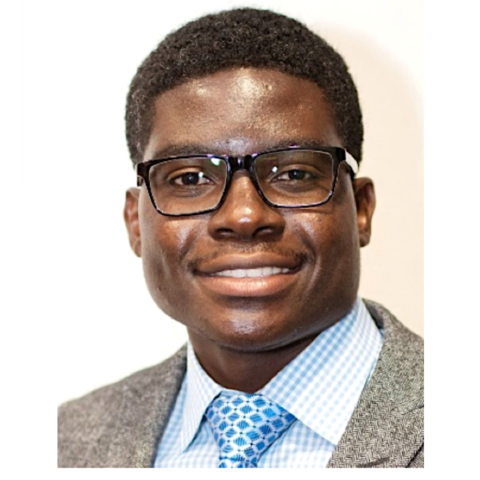
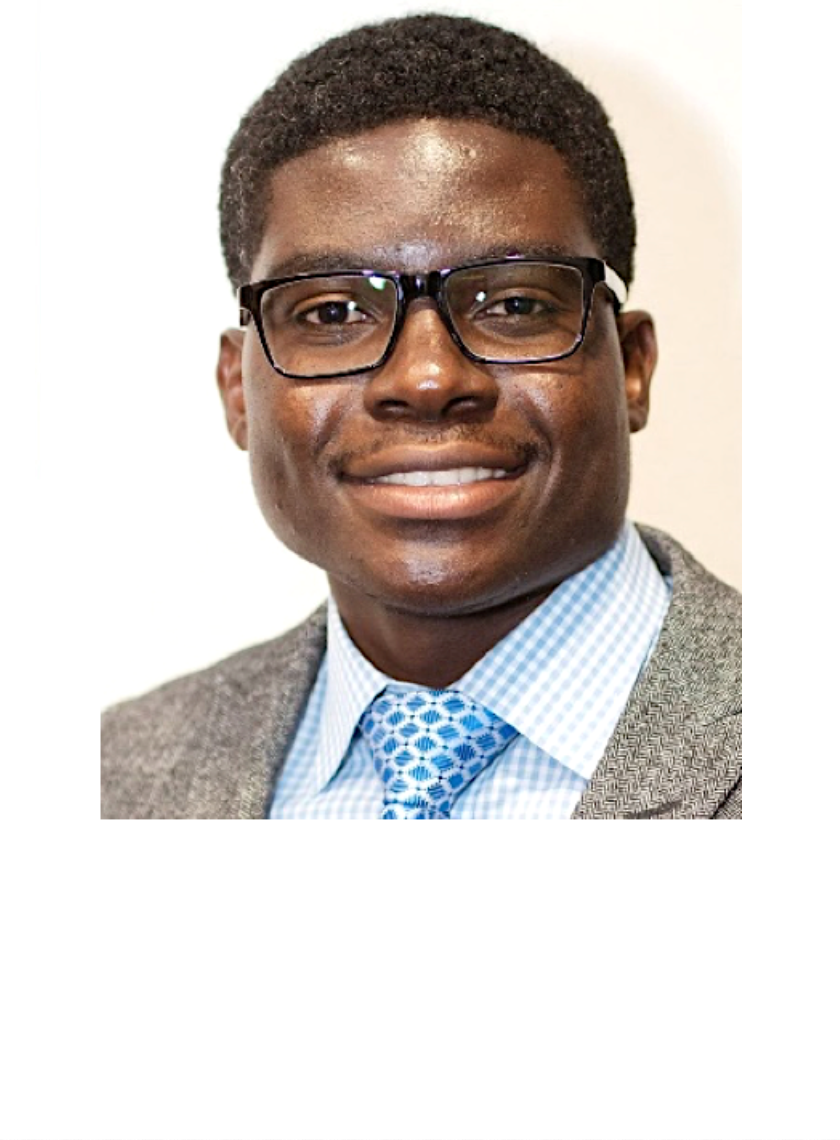
Bio
Dr. Muluhngwi's recent research activities include thestudy of a circulating biomarker for CNS tumors and a retrospective study of oncogenic driver mutations in non-small-cell lung cancer patients. He hopes his interest in HLA and transplantation, which stems from his experience as a laboratory technician, will lead to improving patient care through high-quality laboratory testing and interpretation.
Research Summary
Publications
Sharp C.N., Fletcher A.,Muluhngwi P., Snyder J., Linder M. W., and Jortani S. A.A shared diagnostic stewardship approach toward improving autoimmune encephalopathy send-out testing utilization. J Appl Lab Med.24 Nov 2020 (https://doi.org/10.1093/jalm/jfaa123)
Muluhngwi P., Valdes, Jr. R., Fernandez-Botran R., Burton E., Williams B., Linder M. W. (2019)Cell-free DNA diagnostics: current and prospective applications in oncology. Pharmacogenomics. 20(5):357-380.
Muluhngwi P., Sharp C.N., Pozzi N., Elin R., Jortani S. A.Verification of newly FDA- approved kappa and lambda free light chain assays on a previously untested platform. J Appl Lab Med.2019;4(3):323-330.
Contact
Address
Phillips Wangensteen Building515 Delaware St SE
Minneapolis, MN 55455


Bio
Dr. Murugan is a board certified anatomic pathologist whose area of expertise is in the surgical pathology of genitourinary and bone / soft tissue tumors. He works closely with multidisciplinary teams involving urologists, orthopedicians, medical/radiation oncologists, and radiologists in providing expert care to patients with genitourinary, bone and soft tissue neoplasms. His role involves establishing accurate tissue diagnosis on biopsies and surgical excisions, a critical component in guiding treatment decisions. In addition to the clinical diagnostic role, Dr. Murugan is involved in medical student, resident and fellow education as well as translational research. He enjoys teaching and is constantly engaged with residents and fellows with interactive discussions during daily sign-outs and conferences. In acknowledgment of his contribution, he was conferred the Anatomic Pathology Teacher of the Year award in 2015, 2018 and 2021. Dr. Murugan has contributed over 80 peer-reviewed publications and has been involved as co-investigator in multiple R01 NIH grants. He has delivered numerous scientific meeting presentations, contributed to book chapters and has lectured nationally and internationally. He is an associate editor for the journal Diagnostic Pathology and member of the College of American Pathologists' Cancer Committee. He also serves as Program Director of the University of Minnesota's Surgical Pathology Fellowship Program and Medical Director of the CTSI's Biorepository and Laboratory Services.
Research Summary
Publications
Link to comprehensive list of publications
https://scholar.google.com/citations?hl=en&user=49VckooAAAAJ&view_op=list_works&sortby=pubdate
Skubitz KM, Murugan P. RAD51C and MYST3 Mutations in a case of desmoid-type fibromatosis with no mutation in CTNNB1 or APC. Cureus. 2024 Mar 4;16(3):e55496. doi: 10.7759/cureus.55496.
Khalifa MA, Gagner B, Chen L, Murugan P, Klein ME, Racila E, Amin K, Miller F, Stewart J, Ding Y, Farooqui M, Dasaraju S, and Adeyi OA. Immunohistochemistry and immunofluorescence utilization audit by subspecialty in an academic setting: A step toward stewardship. Annals of Diagnostic Pathology, Volume 67, 2023, 152214, https://doi.org/10.1016/j.anndiagpath.2023.152214.
Murugan P, Paner GP, Harik LR, Amin MB, Berney D, Eggener SE, Idress MT, Ingram F, Jimenez RE, Kao CS, Sirintrapun SJ, Tickoo SK. Protocol for the examination of lymphadenectomy specimens from patients with malignant germ cell and sex cord-stromal tumors of the testis. College of American Pathologists Cancer Reporting and Biomarker Reporting Protocols, September 2023, v4.2.0.0.
Murugan P, Paner GP, Harik LR, Amin MB, Berney D, Eggener SE, Idress MT, Ingram F, Jimenez RE, Kao CS, Sirintrapun SJ, Tickoo SK. Protocol for the examination of radical orchiectomy specimens from patients with malignant germ cell and sex cord-stromal tumors of the testis. College of American Pathologists Cancer Reporting and Biomarker Reporting Protocols, September 2023, v4.2.0.0.
Harik LR, Cubilla AL, Paner GP, Colecchia M, Matoso A, Murugan P, Pettaway CA, Prendeville S, Pettus JR, Tamboli P. Protocol for the examination of specimens from patients with carcinoma of the penis. College of American Pathologists Cancer Reporting and Biomarker Reporting Protocols, September 2023, v4.2.0.0.
Weaver C, Antony M, Fite J, Murugan P, Nelson AC, Manivel JC. Cocaine and amphetamine regulated transcript (CART): a newly characterized neuropeptide in human prostate. Biotech Histochem. 2023 Aug 24:1-15
Murugan P, Jia L, Dinatale RG, Assel M, Benfante N, Al-Ahmadie HA, Fine SW, Gopalan A, Sarungbam J, Sirintrapun SJ, Hakimi AA, Russo P, Chen YB, Tickoo SK, Reuter VE. Papillary renal cell carcinoma: a single institutional study of 199 cases addressing classification, clinicopathologic and molecular features, and treatment outcome. Mod Pathol. 2022 Jun;35(6):825-835.
Guo J, Koopmeiners JS, Walmsley SJ, Villalta PW, Yao L, Murugan P, Tejpaul R, Weight CJ, Turesky RJ. The Cooked Meat Carcinogen 2-Amino-1-methyl-6-phenylimidazo[4,5-b]pyridine Hair Dosimeter, DNA Adductomics Discovery, and Associations with Prostate Cancer Pathology Biomarkers. Chem Res Toxicol. 2022 May 16;35(5):703-730.
Che M, Chaturvedi A, Munro SA, Pitzen SP, Ling A, Zhang W, Mentzer J, Ku SY, Puca L, Zhu Y, Bergman AM, Severson TM, Forster C, Liu Y, Hildebrand J, Daniel M, Wang TY, Selth LA, Hickey T, Zoubeidi A, Gleave M, Bareja R, Sboner A, Tilley W, Carroll JS, Tan W, Kohli M, Yang R, Hsieh AC, Murugan P, Zwart W, Beltran H, Huang RS, Dehm SM. Opposing transcriptional programs of KLF5 and AR emerge during therapy for advanced prostate cancer. Nat Commun. 2021 Nov 4;12(1):6377.
Kim JH, Megquier K, Thomas R, Sarver AL, Song JM, Kim YT, Cheng N, Schulte AJ, Linden MA, Murugan P, Oseth L, Forster CL, Elvers I, Swofford R, Turner-Maier J, Karlsson EK, Breen M, Lindblad-Toh K, Modiano JF. Genomically Complex Human Angiosarcoma and Canine Hemangiosarcoma Establish Convergent Angiogenic Transcriptional Programs Driven by Novel Gene Fusions. Mol Cancer Res. 2021 May;19(5):847-861.
Murugan P, Shukla D, Morocho J, Sciacca D, Pickard M, Smith D, Wahlsten M, Gunderson A, Konety B, Khalifa MA, Warlick C. Prostate Biopsy Processing: An Innovative Model for Reducing Cost, Test Time and Improving Diagnostic Material. Am J Clin Pathol. 2019 Nov 4;152(6):757-765.
Alanee S, Alvarado-Cabrero I, Murugan P, Kumar R, Nepple KG, Paner GP, Patel MI, Raspollini MR, Lopez-Beltran A, Konety BR. Update of the International Consultation on Urological Diseases on bladder cancer 2018: non-urothelial cancers of the urinary bladder. World J Urol. 2019 Jan;37(1):107-114.
Murugan P, Rao P, Tamboli P, Czerniak B, Guo CC. Primary Ewing Sarcoma / Primitive Neuroectodermal Tumor of the Kidney: A Clinicopathologic Study of 23 Cases. Pathol Oncol Res. 2018 Jan;24(1):153-159.
Education
Fellowships, Residencies, and Visiting Engagements
Licensures and Certifications
Honors and Recognition
Contact
Address
C441 Mayo Building420 Delaware St SE
Minneapolis, MN 55455
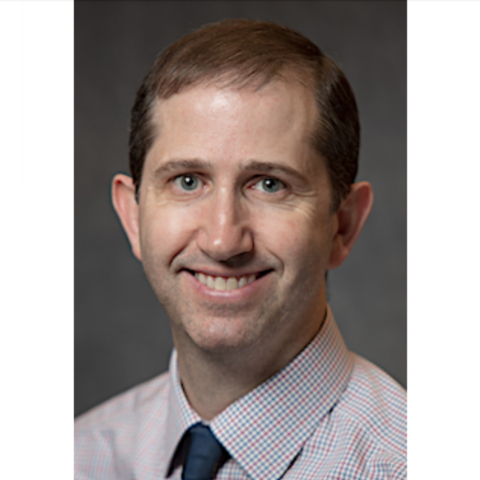
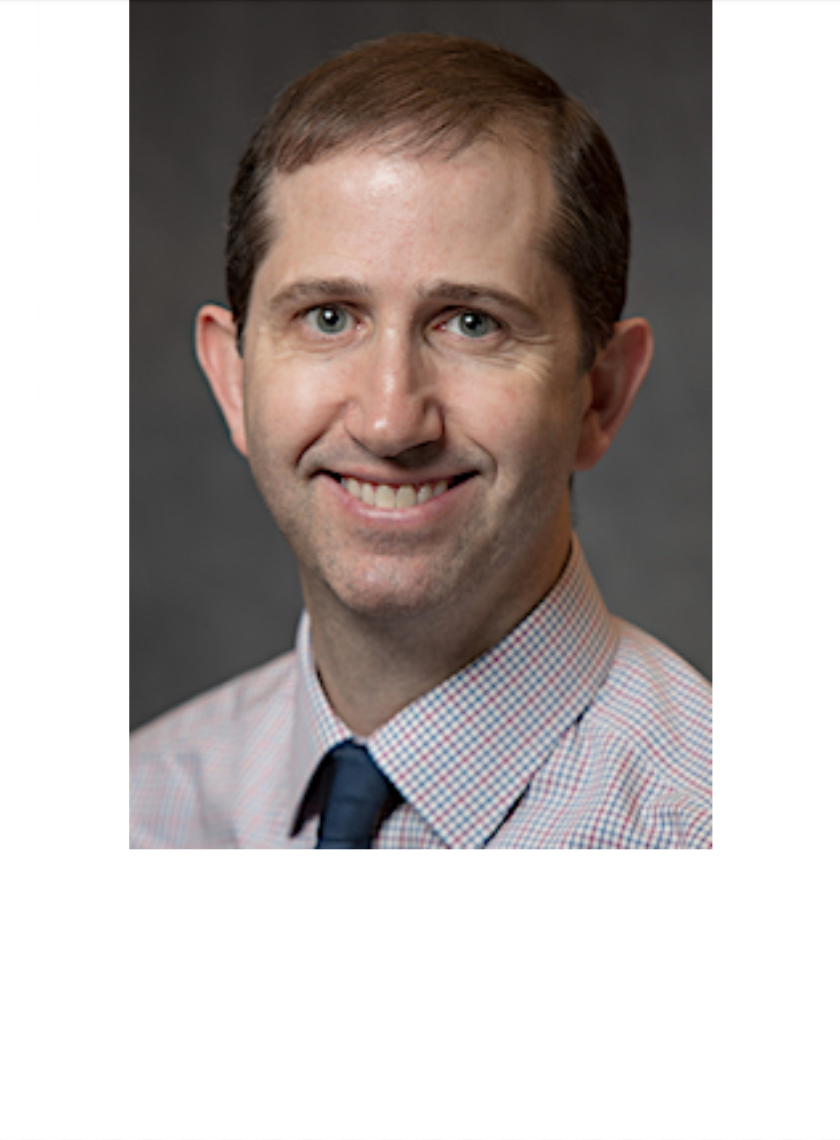
Bio
Dr. Nelson is an anatomic and molecular genetic pathologist. He is a member of the Division of Molecular Pathology and Genomics and is R&D director in the Molecular Diagnostics Laboratory. He earned his doctoral degree in cancer biology and experimental pathology with a focus on cell signaling mechanisms that regulate the function of BRCA1 and BRCA2 in breast and ovarian cancer. He collaborates with colleagues in both clinical and basic research projects involving solid tumor molecular diagnostics.
Research Summary
Andy was the lead scientist in the design, development, and implementation of the current microfluidics-based next-generation sequencing (NGS) platform for oncology in the Molecular Diagnostic Laboratory. The current panel tests for over 7,000 important mutations within 21 genes closely linked to the outcome and treatment of various solid and hematologic malignancies. The immediate goal of his work in the area of NGS oncology is to improve quality, turnaround time, logistics and workflow with the current pipeline as well as preparing for further developments in the rapidly advancing field. These efforts include developing tools that provide improved annotation capabilities for therapeutic relevance and clinical trials to in turn provide more value to clinical colleagues and patients. Expansion of the oncology NGS testing will include two major efforts: 1) technical advances to improve testing capability of minuscule biopsy samples, and 2) expanding the number of genes tested to support clinical research efforts at the University. Current approaches to treating cancer are based primarily on tissue origin and histologic subtypes. Andy sees a major challenge ahead in the integration of genetic information with the traditional tissue-based categorization of cancer. A gene target that responds to therapy in one tissue may not respond to the same therapy in a different tissue, based on the gene's differing transcriptional and epigenetic profile in the two tissues. Genetic alterations alone cannot explain tumor behavior or a patient's prognosis. A major challenge for the field is finding a way to integrate knowledge across different platforms that incorporate genetic, epigenetic, transcriptional, and proteomic alterations within the signaling pathways that drive cancer progression.Dr. Nelson believes curiosity-driven basic science is critical to revealing the mechanisms of cancer progression. Combining anatomic pathology and molecular genetics will allow scientists to analyze tissue in its structurally native form and explore cell-to-cell interaction in an ordered environment. He is collaborating with departmental colleagues and others in the Breast Cancer Translational Working Group headed by the Cancer Center's Douglas Yee. Andy is co-investigator with Dr. Yee of a pilot project involving Nanostring gene-expression profiling of human breast cancer tissue and cell lines. They are investigating some 350 genes that cover many of the signaling pathways known to be involved in breast cancer. Nanostring technology – a kind of molecular bar-coding system for gene expression analysis -- is more robust than standard microarrays for analyzing paraffin-embedded tissues. Within this framework, Nelson and colleagues Jim McCarthy, Kaylee Schwertfeger and others have developed a 70-gene signature designed to reveal mechanisms of stromal alteration that support breast cancer progression. The working hypothesis is that altered signaling through hyaluronic acid, activation of myofibroblasts, and the influx and activation of inflammatory cell integration-specific macrophages all conspire to promote tumor progression. They are investigating the specific cell types within the tumor microenvironment in which these genes are up-regulated. From the results they plan to develop an intraductal model of breast cancer progression in mice. They will use genetically modified and traceable stromal cells in an effort to elucidate stromal mechanisms associated with breast cancer progression. Dr. Nelson is also providing data for the working group in studies of DNA repair and progesterone receptor signaling in breast cancer.From the standpoint of anatomic pathology in the genomic era, Dr. Nelson believes it is important to flip the model of "bench to bedside" to "bedside to bench" first and then translate what is learned back to patient care.
Publications
- Clemente V, Hoshino A, Shetty M, Nelson AC, Erickson BK, Baker R, Rubin N, Khalifa M, Weroha SJ, Lou E, Bazzaro M.GLS1 is a protective factor in patients with ovarian clear cell carcinoma and its expression does not correlate with ARID1A-mutated tumors. Cancer Research Communications, July 18, 2022.https://doi.org/10.1158/2767-9764.CRC-22-0122
- Martinez RJ, Pankratz N, Schomaker M, Daniel J, Beckman K, Karger AB, Thyagarajan B, Ferreri P, Yohe SL, Nelson AC. Prediction of false positive SARS-CoV-2 molecular results in a high-throughput open platform system. J Mol Diagn. 2021 Jun 8:S1525-1578(21)00166-5. doi: 10.1016/j.jmoldx.2021.05.015
- Oltvai ZN, Harley SE, Koes D, Michel S, Warlick ED, Nelson AC, Yohe S, Mroz P. Assessing acquired resistance to IDH1 inhibitor therapy by full-exon IDH1 sequencing and structural modeling. Cold Spring Harb Mol Case Stud. 2021 Apr 8;7(2):a006007. doi: 10.1101/mcs.a006007.
- Hassan S, Fanola C, Beckman A, Li F, Nelson AC, Linden M, and Beckman JD. Adult Langerhans histiocytosis with rare BRAF mutation complicated by massive pulmonary embolism [published online ahead of print, 2020 Jul 25]. Thromb Res. 2020;193:207-210. doi:10.1016/j.thromres.2020.07.044
- Oltvai ZN, Smith EA, Wiens K, Nogee LM, Luquette M, Nelson AC, and Wikenheiser-Brokamp KA. Neonatal respiratory failure due to novel compound heterozygous mutations in the ABCA3 lipid transporter. Cold Spring Harb Mol Case Stud. 2020;6(3):a005074. 2020 Jun 12. doi:10.1101/mcs.a005074
- Andrew C Nelson, Thomas J Turbyville, Srisathiyanarayanan Dharmaiah, Megan Rigby, Rendong Yang, Ting-You Wang, John Columbus, Robert Stephens, Troy Taylor, Drew Sciacca, Getiria Onsongo, Anne Sarver, Subbaya Subramanian, Dwight V Nissley, Dhirendra K Simanshu, Emil Lou. RAS internal tandem duplication disrupts GTPase-activating protein (GAP) binding to activate oncogenic signaling. J Biol Chem. 2020 May 11;jbc.RA119.011080. doi: 10.1074/jbc.RA119.011080.
Education
Fellowships, Residencies, and Visiting Engagements
Licensures and Certifications
Contact
Address
C433-1 Mayo Building420 Delaware Street SE
Minneapolis, MN 55455


Bio
Oramas-Mogrovejo earned her medical degree at the University of Guayaquil, Facultad de Ciencias Médicas, Ecuador in 2011. In 2019, she completed her pathology residency at the University of Illinois at Chicago, where she also served as chief resident in her final year. The following year she was a selective surgical pathology fellow and in 2021 a thoracic pathology fellow at the University of Texas MD Anderson Medical Center in Houston. She joined LMP in 2022 from the Department of Pathology, University of Alabama at Birmingham.
Research Summary
Dr. Oramas-Mogrovejo's research interests include mesothelioma of mediastinum, thymic neoplasms, and non-small cell lung cancer. She is editor of the pulmonary/thoracic section of Human Pathology Reports.
During her medical education at the Universidad de Guayaquil, Oramas-Mogrovejo received the Mención de Honor Award for her annual academic achievement every year. She is a member of the College of American Pathologists (CAP), the U.S. and Canadian Academy of Pathology (USCAP), the American Society of Clinical Pathology (ASCP), and the American Medical Association (AMA).
Publications
Oramas DM, Moran CA. Primary Rosai-Dorfman disease of the thymus and lung: A clinicopathological and immunohistochemical study of three cases. Pathol Res Pract. 2022 Jun;234:153917. doi: 10.1016/j.prp.2022.153917. Epub 2022 Apr 26.
Oramas DM, Zaleski MP, Moran CA. Sarcomatoid mesothelioma: A clinicopathological and immunohistochemical study of 64 cases. Int J Surg Pathol. 2021 Dec;29(8):820- 825. doi: 10.1177/10668969211014256.
Oramas DM, Alqaidy D, Moran CA. Primary pulmonary hyalinizing spindle cell tumor with Giant rosettes: A clinicopathological and immunohistochemical study of 2 cases. Ann Diagn Pathol. 2021 Apr;51:151706. doi: 10.1016/j.anndiagpath.2021.151706. Epub 2021 Jan 14.
Oramas DM, Moran CA. Major pathological response (tumor regression) in patients treated for non-small cell carcinoma of the lung: Is there a magic number in the histological sections to be evaluated? Adv Anat Pathol. 2021 Mar 1;28(2):67-71. doi: 10.1097/PAP.0000000000000292.
Fellowships, Residencies, and Visiting Engagements
Licensures and Certifications
Honors and Recognition
Contact
Address
MMC 76 Mayo420 Delaware St. SE
Minneapolis, MN 55455
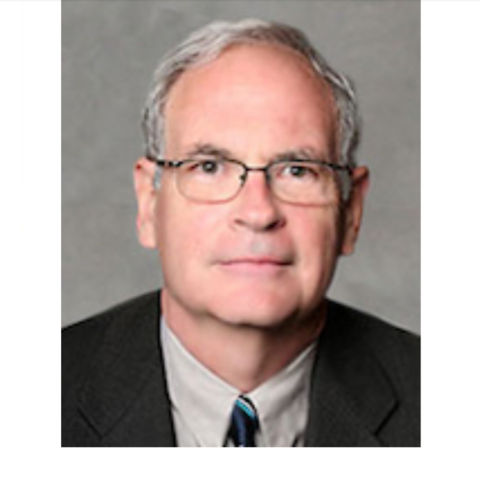
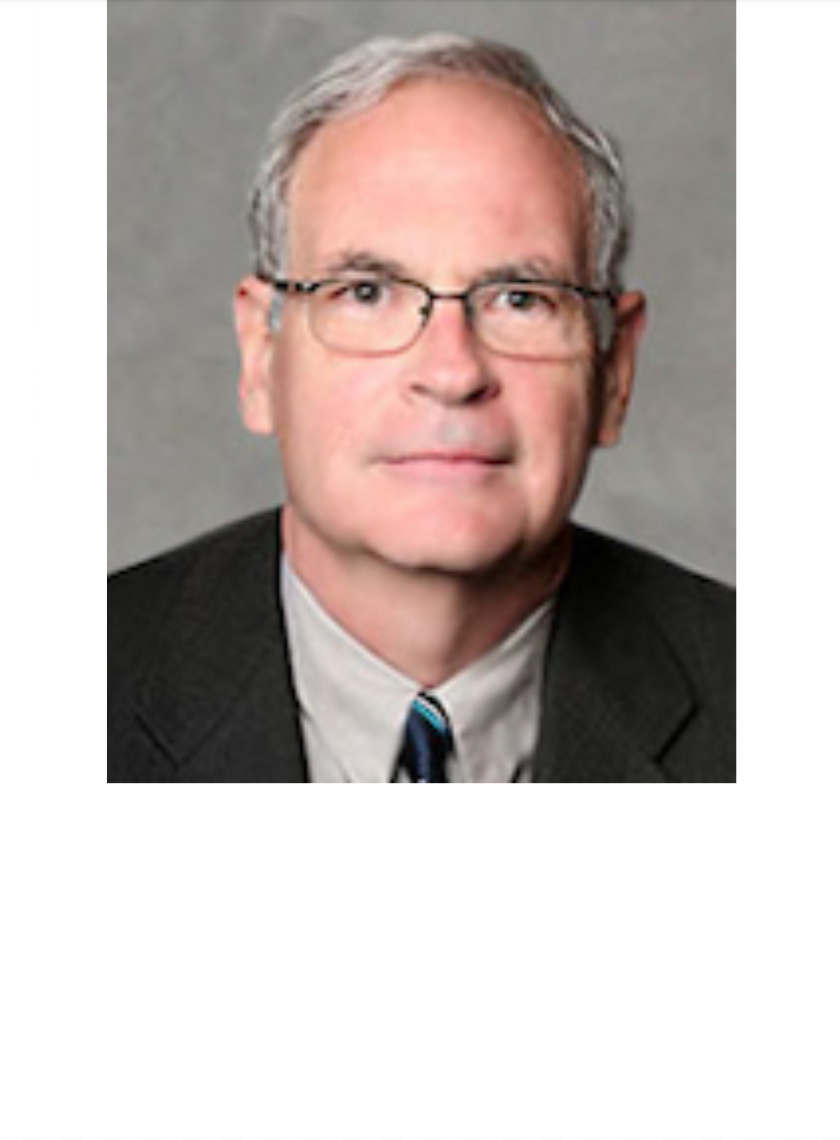
Research Summary
Dr. Orr is professor and the James Schindler and Bob Allison Ataxia Chair in Translational Research in the department, directs the Institute of Translational Neuroscience, and is a member of the Division of Molecular Pathology and Genomics. His research is focused on the molecular genetics of neurodegenerative diseases, principally the autosomal dominant form of spinocerebellar ataxia (SCA1). Patients usually develop SCA1 in mid-life. They experience loss of motor coordination and develop slurred speech, spasticity, and cognitive impairment. These symptoms arise from the loss of Purkinje cells and damage to other nerve cells in the brain's cerebellar cortex. Orr and his colleagues cloned the SCA1 gene and found that the disease is caused by the expansion of an unstable, repeated cytosine-adenine-guanine (CAG) sequence in DNA. The length of the trinucleotide repeat is associated with when symptoms develop.The trinucleotide repeat encodes an expanded polyglutamine tract, an important step in disease pathogenesis. Orr and his colleagues established the first transgenic mouse model for SCA1 with which they were able to induce ataxia with Purkinje cell features characteristic of SCA1 by inserting CAG repeats. The model has helped his team understand how the SCA1 mutant polyglutamine protein, ataxin-1, moves from the cytoplasm into the nucleus of Purkinje cells where together with other protein complexes it causes Purkinje dendrites to atrophy. They found that phosphorylation of a specific ataxin-1 serine results in greater stabilization of the mutant protein, which alters the normal ratio of stabilized versus degraded protein and results in aberrant binding and disease.In the experimental therapeutics arena, Orr and colleagues are using RNA interference (RNAi) and adeno-associated virus (AAV) vectors as a delivery system to reduce ataxin-1 expression in Purkinje cells. Orr also working with a company that has developed anti-sense oligonucleotide chemistry. Anti-sense oligonucleotides act at the level of messenger RNA before proteins are produced. Delivering drugs to the central nervous system is difficult. Delivering molecular therapies to the deep cerebellar nuclei of the cerebellar cortex, where Purkinje neurons cluster and terminate, is a significant challenge. Orr's University colleagues have experience using AAV vectors to deliver genes to Purkinje cells. When human trials begin, the hope is that a sufficient number of therapeutic molecules will be taken in by Purkinje cell terminals and transferred to the cell bodies to be beneficial to patients.
Publications
- Duvick L, Southern WM, Benzow KA, Burch ZN, Handler HP, Mitchell JS, Kuivinen H, Gadiparthi U, Yang P, Soles A, Sheeler CA, Rainwater O, Serres S, Lind EB, Nichols-Meade T, You Y, O'Callaghan B, Zoghbi HY, Cvetanovic M, Wheeler VC, Ervasti JM, Koob MD, Orr HT. Mapping SCA1 regional vulnerabilities reveals neural and skeletal muscle contributions to disease. JCI Insight. 2024 Mar 21;9(9):e176057. doi: 10.1172/jci.insight.176057.
- Liu CJ, Williams KE, Orr HT, Akkin T. Visualizing and mapping the cerebellum with serial optical coherence scanner. Neurophotonics. 2017 Jan;4(1):011006.
- Rubinsztein DC, Orr HT. Diminishing return for mechanistic therapeutics with neurodegenerative disease duration?: There may be a point in the course of a neurodegenerative condition where therapeutics targeting disease-causing mechanisms are futile. Bioessays. 2016 Oct;38(10):977-80. doi: 10.1002/bies.201600048.
- Ingram M, Wozniak EA, Duvick L, Yang R, Bergmann P, Carson R, O'Callaghan B, Zoghbi HY, Henzler C, Orr HT. Cerebellar Transcriptome Profiles of ATXN1 Transgenic Mice Reveal SCA1 Disease Progression and Protection Pathways. Neuron. 2016 Mar 16;89(6):1194-207. doi: 10.1016/j.neuron.2016.02.011.
- Malhotra D, Linehan JL, Dileepan T, Lee YJ, Purtha WE, Lu JV, Nelson RW, Fife BT, Orr HT, Anderson MS, Hogquist KA, Jenkins MK.
Tolerance is established in polyclonal CD4(+) T cells by distinct mechanisms, according to self-peptide expression patterns.
Nat Immunol. 2016 Feb;17(2):187-95. doi: 10.1038/ni.3327.
Education
Fellowships, Residencies, and Visiting Engagements
Honors and Recognition
Contact
Address
3-110 WMBB2101 6th Street SE
Minneapolis, MN 55455


Research Summary
Dr. Pankratz is director of the Division of Computational Pathology and a member of the Division of Molecular Pathology and Genomics who conducts research at the intersection of genetics, epidemiology, statistics, and computer science in the context of population studies. After a decade of focus on the neurogenetics of Parkinson and Alzheimer disease, Pankratz has expanded his research efforts to investigate genes and biomarkers associated with cardiovascular disease and cancer. He conducts meta-analyses of data sets from large-scale studies of these diseases using linkage analysis, genome-wide association studies (GWAS), analysis of copy number variation (CNV), and analysis of targeted whole-exome and whole-genome sequencing data produced by next-generation sequencing (NGS) technologies.NIH-sponsored cohort studies such as the Atherosclerosis Risk in Communities (ARIC) study and the Coronary Artery Risk Development in Young Adults (CARDIA) study give Pankratz and his fellow collaborators large data sets to analyze in their search for genetic factors involved in cardiovascular disease (CVD). These meta-analyses usually involve multiple institutions and collaborators, often under the banner of the Cohorts for Heart and Aging Research in Genomic Epidemiology (CHARGE) consortium. Pankratz has led exome-wide meta-analyses for the CHARGE working groups focused on hemostatic factors, hematology markers, and inflammatory biomarkers of CVD, using data from as many as a hundred thousand research participants. Advanced software tools are required to manage the resulting large datasets and perform genetic analyses, and developing such software is a major focus of the Pankratz lab.One of the Java software packages that the lab is actively developing is designed to more reliably identify copy number variants (CNVs) in the human genome. CNVs are gains or losses of large DNA segments that vary from one individual to the next. CNVs are associated with many common diseases, but they can be difficult to detect and measure with the most commonly used genomic platforms. Software that is easy to use, automatically implements best practices, and allows for the meta-analysis of multiple datasets will allow investigators to identify CNVs associated with complex diseases, such as those being studied by the CHARGE consortium. Large-scale genome-wide association studies focused on CNVs will go a long way toward clarifying their role in health and disease.
Publications
- Sullivan SM, Cole B, Lane J, Meredith JJ, Langer E, Hooten AJ, Roesler M, McGraw KL, Pankratz N, Poynter JN. Predicted leukocyte telomere length and risk of myeloid neoplasms. Hum Mol Genet. 2023 Aug 2:ddad126. doi: 10.1093/hmg/ddad126.
- Thibord F, Klarin D, Brody JA, Chen MH, Levin MG, Chasman DI, Goode EL, Hveem K, Teder-Laving M, Martinez-Perez A, Aïssi D, Daian-Bacq D, Ito K, Natarajan P, Lutsey PL, Nadkarni GN, de Vries PS, Cuellar-Partida G, Wolford BN, Pattee JW, Kooperberg C, Braekkan SK, Li-Gao R, Saut N, Sept C, Germain M, Judy RL, Wiggins KL, Ko D, O'Donnell CJ, Taylor KD, Giulianini F, De Andrade M, Nøst TH, Boland A, Empana JP, Koyama S, Gilliland T, Do R, Huffman JE, Wang X, Zhou W, Manuel Soria J, Carlos Souto J, Pankratz N, Haessler J, Hindberg K, Rosendaal FR, Turman C, Olaso R, Kember RL, Bartz TM, Lynch JA, Heckbert SR, Armasu SM, Brumpton B, Smadja DM, Jouven X, Komuro I, Clapham KR, Loos RJF, Willer CJ, Sabater-Lleal M, Pankow JS, Reiner AP, Morelli VM, Ridker PM, Vlieg AVH, Deleuze JF, Kraft P, Rader DJ; Global Biobank Meta-Analysis Initiative; Estonian Biobank Research Team; 23andMe Research Team; Biobank Japan; CHARGE Hemostasis Working Group; Min Lee K, Psaty BM, Heidi Skogholt A, Emmerich J, Suchon P, Rich SS, Vy HMT, Tang W, Jackson RD, Hansen JB, Morange PE, Kabrhel C, Trégouët DA, Damrauer SM, Johnson AD, Smith NL. Cross-Ancestry Investigation of Venous Thromboembolism Genomic Predictors. Circulation. 2022 Oct 18;146(16):1225-1242. doi: 10.1161/CIRCULATIONAHA.122.059675
- Martinez RJ, Pankratz N, Schomaker M, Daniel J, Beckman K, Karger AB, Thyagarajan B, Ferreri P, Yohe SL, Nelson AC. Prediction of false positive SARS-CoV-2 molecular results in a high-throughput open platform system. J Mol Diagn. 2021 Jun 8:S1525-1578(21)00166-5. doi: 10.1016/j.jmoldx.2021.05.015
- Tang W, Stimson MR, Basu S, Heckbert SR, Cushman M, Pankow JS, Folsom AR, Pankratz N. Burden of rare exome sequence variants in PROC gene is associated with venous thromboembolism: a population-based study. J Thromb Haemost. 2019 Nov 4. doi: 10.1111/jth.14676.
- Pankratz N, Schick UM, Zhou Y, Zhou W, Ahluwalia TS, Allende ML, Auer PL, Bork-Jensen J, Brody JA, Chen MH, Clavo V, Eicher JD, Grarup N, Hagedorn EJ, Hu B, Hunker K, Johnson AD, Leusink M, Lu Y, Lyytikäinen LP, Manichaikul A, Marioni RE, Nalls MA, Pazoki R, Smith AV, van Rooij FJ, Yang ML, Zhang X, Zhang Y, Asselbergs FW, Boerwinkle E, Borecki IB, Bottinger EP, Cushman M, de Bakker PI, Deary IJ, Dong L, Feitosa MF, Floyd JS, Franceschini N, Franco OH, Garcia ME, Grove ML, Gudnason V, Hansen T, Harris TB, Hofman A, Jackson RD, Jia J, Kähönen M, Launer LJ, Lehtimäki T, Liewald DC, Linneberg A, Liu Y, Loos RJ, Nguyen VM, Numans ME, Pedersen O, Psaty BM, Raitakari OT, Rich SS, Rivadeneira F, Di Sant AM, Rotter JI, Starr JM, Taylor KD, Thuesen BH, Tracy RP, Uitterlinden AG, Wang J, Wang J, Dehghan A, Huo Y, Cupples LA, Wilson JG, Proia RL, Zon LI, O'Donnell CJ, Reiner AP, Ganesh SK. Meta-analysis of rare and common exome chip variants identifies S1PR4 and other loci influencing blood cell traits. Nat Genet. 2016 Aug;48(8):867-76. doi: 10.1038/ng.3607
Education
Contact
Address
780 Mayo Building420 Delaware St SE
Minneapolis, MN 55455


Research Summary
Dr. Pennell's laboratory is investigating novel strategies for immunotherapy, drawing on the immune system's inherent specificity as part of a personalized medicine approach for treating cancer. His team is using the tools of immunology, molecular biology, genetic engineering, and transgenic animals in two research areas that have potentially synergistic applications: the development of DNA-based cancer vaccines; and the development of T-cell chimeric antigen receptors engineered to recognize and bind specific tumor cell-surface antigens, activating T-cell cytotoxicity.Pennell's team developed DNA-based vaccines designed to increase antigen expression on tumor cells, which in turn enables CD8 T-cells to recognize and bind to these tumor cells, activating T-cell cytotoxicity. Initially they used plasmid DNA as a delivery vehicle. Because few cells tend to take up the new DNA plus the fact that expression of the DNA-encoded protein is transient, the therapeutic effects register at a very low level. Recently they turned to using smaller DNA minicircle constructs as delivery vehicles, with notable success. Minicircle DNA confers higher levels of sustained transgenic expression than plasmid DNA upon delivery in an infectious disease model in mice. Pennell and fellow University faculty are now adapting minicircle DNA delivery for cancer vaccine immunotherapy in a mouse model with the long-term goal of developing minicircle-based DNA vaccines to treat human cancer.Pennell's team is coupling its research on DNA vaccines with that in a related field called T-cell chimeric antigen receptors (CARs). Like DNA vaccines, CAR technology is also based on co-opting a patient's own immune system specificity. CARs are genetically engineered receptors introduced into white blood cells, specifically T cells. CARs override the native specificity of the T cell and cause the T cell to become activated when the CAR specifically binds an antigen. An antibody-derived fragment displayed on the outside of the T cell confers CAR specificity; the inside of the CAR receptor contains T cell-derived proteins required for activation. The antibody effects a higher affinity binding than the usual T-cell receptor–major histocompatibility complex (MHC) molecule binding. T cells modified to express antibody-based CARs circumvent MHC restriction and potently kill tumor cells bearing the antigen for which the CAR is specific.CAR-based therapy has shown dramatic success in adoptive immunotherapy trials of patients with acute lymphocytic leukemia (ALL) who are refractory to standard chemotherapy. Pennell's laboratory is developing CAR mouse models to address the side effects of CAR immunotherapy in ALL. The side effects include the depletion of healthy B-cells as well as tumor B-cells, making the patients B-cell aplastic, and the potential massive release of pro-inflammatory cytokines. Pennell and his University colleagues (notably Drs. Bruce Blazar and Mark Osborn in the Department of Pediatrics) are using clinically tested mouse T-cell CARs with human components that recognize the human antibody CD19, which they have engineered to be expressed in mice B-cell tumors. Their goal is to determine the right dose-based balance between achieving anti-tumor effects and avoiding potentially harmful side effects of CAR therapy.
Publications
- Pennell CA, Campbell H, Storlie MD, Bolivar-Wagers S, Osborn MJ, Refaeli Y, Jensen M, Viaud S, Young TS, Blazar BR. Human CD19-specific switchable CAR T-cells are efficacious as constitutively active CAR T-cells but cause less morbidity in a mouse model of human CD19+ malignancy. J Immunother Cancer. 2022 Dec;10(12):e005934. doi: 10.1136/jitc-2022-005934
- Bolivar-Wagers S, Loschi ML, Jin S, Thangavelu G, Larson JH, McDonald-Hyman CS, Aguilar EG, Saha A, Koehn BH, Hefazi M, Osborn MJ, Jensen MC, Wagner JE, Pennell CA, Blazar BR. Murine CAR19 Tregs suppress acute graft-versus-host disease and maintain graft-versus-tumor responses. JCI Insight. 2022 Sep 8;7(17):e160674. doi: 10.1172/jci.insight.160674.
- Christopher A. Pennell, Jessie L Barnum, Cameron McDonald-Hyman, Angela Panoskaltsis-Mortari, Megan J. Riddle, Zhengming Xiong, Michael Loschi, Govindarajan Thangavelu, Heather M. Campbell, Meghan D Storlie, Yosef Refaeli, Scott N Furlan, Michael C. Jensen, Leslie S Kean, Jeffrey Scott Miller, Jakub Tolar, Mark Osborn, Bruce R Blazar. Human CD19-targeted mouse T cells induce B cell plasia and toxicity in human CD19 transgenic mice. Molecular Therapy, 2018; doi: 10.1016/j.ymthe.2018.04.006 [Epub ahead of print]
- Andersen BM, Xia J, Epstein AL, Ohlfest JR, Chen W, Blazar BR, Pennell CA, Olin MR. Monomeric annexin A2 is an oxygen-regulated toll-like receptor 2 ligand and adjuvant. J Immunother Cancer. 2016 Feb 16;4:11. doi: 10.1186/s40425-016-0112-6.
- Pluhar GE, Pennell CA, Olin MR. CD8? T Cell-Independent Immune-Mediated Mechanisms of Anti-Tumor Activity. Crit Rev Immunol. 2015;35(2):153-72.
Education
Contact
Address
460D MCRB425 E River Pkwy
Minneapolis, MN 55455
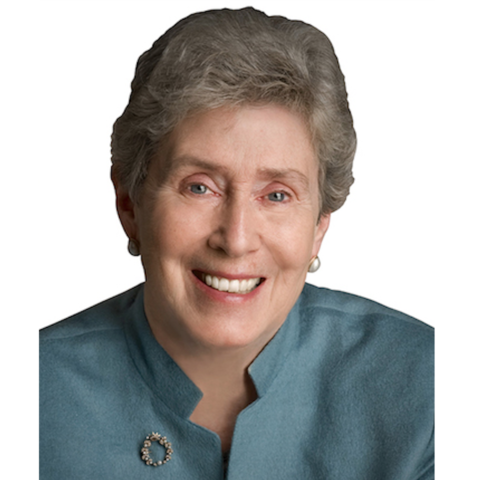
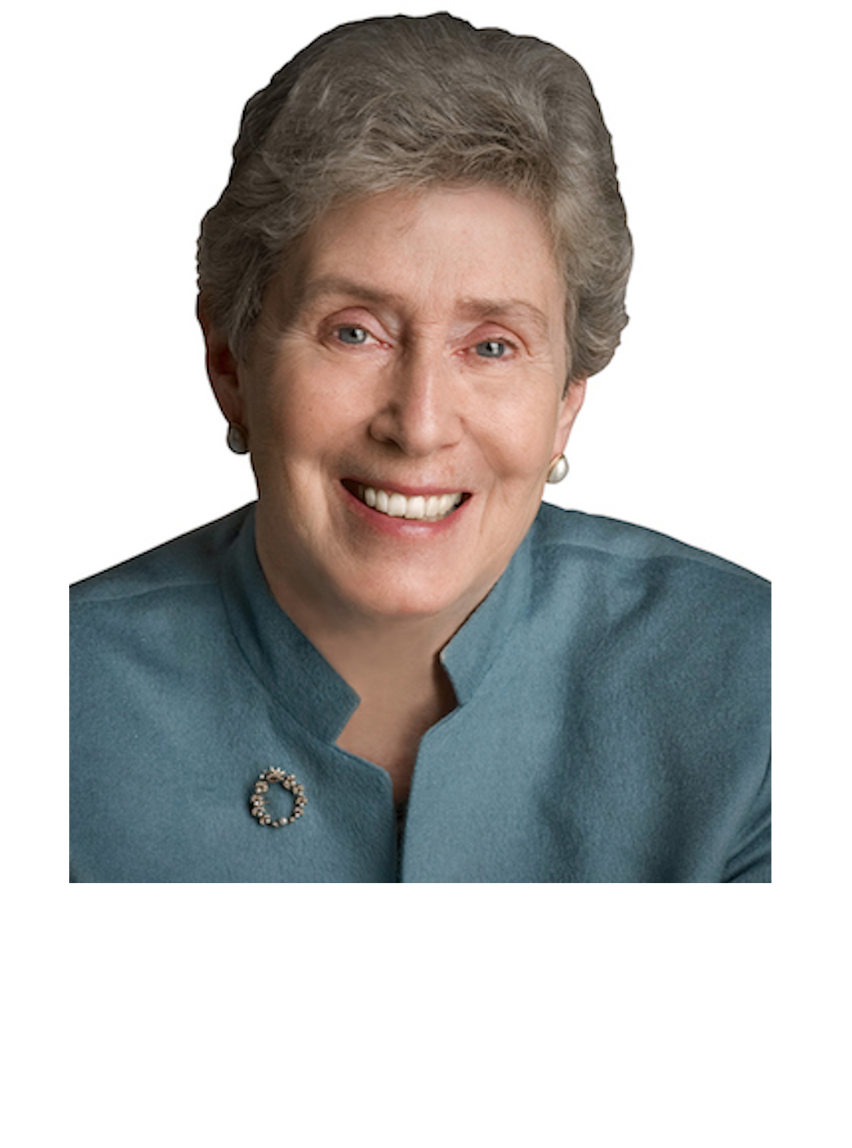
Bio
Dr. Powell is dean emerita of the University of Minnesota Medical School and professor in the Department of Laboratory Medicine and Pathology at the University of Minnesota Medical School, where she coordinates the medical school pathology curriculum. At the University of Minnesota, Dr. Powell instituted the medical school's Flexible M.D. program, an individualized model of medical education designed to be more adaptable to students' career and learning goals. Dr. Powell served as chair of the AAMC Board of Directors from 2009-10 and was the first female chair of the AAMC Council of Deans in 2004. She was the AAMC 2013 Abraham Flexner Distinguished Service to Medical Education Award. She is currently working on a pilot study of a new model for training medical students who want to go into pediatrics in a competency-based model that combines UME and GME. It is being tested in four US medical schools including the University of Minnesota currently. Dr. Powell was elected to the Institute of Medicine, now the National Academy of Medicine, in 2000.
Research Summary
Publications
- Powell DE and Carraccio C. Becoming a Physician: Toward Competency-Based Medical Education. N Engl J Med 2018, 378:5-7 http://www.nejm.org/doi/full/10.1056/NEJMp1712900?query=TOC
Powell, DE and Wallschlaeger, A Making sense of the milestones: Entrustable professional activities for pathology. Human Pathology (2017) 62, 8-12. - Powell, DE: Certification of pathologists-the next step. Hum. Pathology, 37:8, 922, August 2006.
- Powell, DE: On being a pathologist-full circle. Hum. Pathology, 41:6, 773, June 2010.
- Powell, DE, Carraccio, C, Aschenbrener, CA: Pediatrics Redesign Project: A Pilot Implementing Competency-Based Education Across the Continuum. Acad. Medicine, 86:11, e13, November 2011.
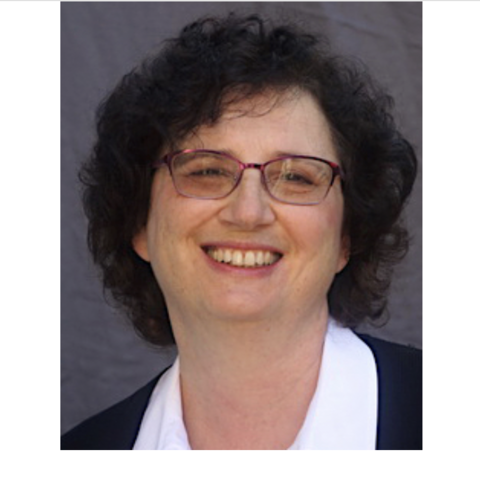
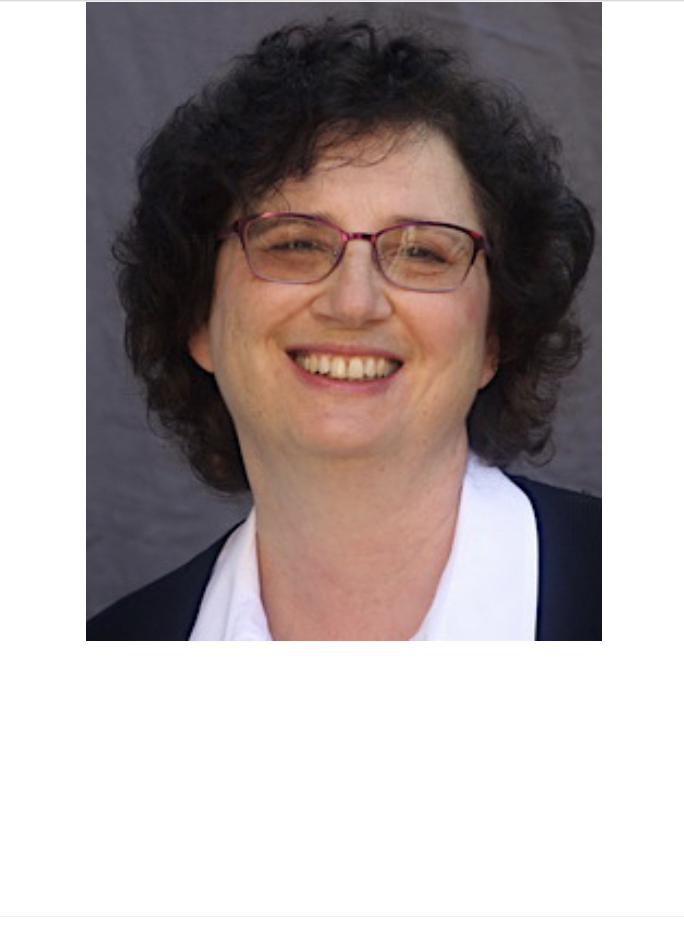
Bio
Dr. Prizment is a chronic disease epidemiologist who studies blood, tissue, and genetic biomarkers in cancer, dementia and other age-related diseases. Two main areas of Dr. Prizment’s research are: (1) inflammation and immune responses associated with cancer, with a main focus on gastrointestinal cancers in large observational studies and clinical trials; and (2) the role of biomarkers of aging in predicting chronic disease, particularly cancer risk and outcomes after cancer diagnosis. Dr. Prizment is a Principal Investigator of the NIH/NCI fNCI-fundedunded study on functional mutations in the CFTR (Cystic fibrosis transmembrane conductance regulator) gene in colorectal cancer. Recently, she has expanded her research into studying biological aging in cancer and other chronic diseases. Her NCI R01 and NIA R21 projects utilized a novel aging construct — a proteomic aging clock based on the SomaScan proteomic data of 5000 proteins in ARIC and validated its performance in Multi-Ethnic Study of Atherosclerosis (MESA). R01 examines proteomic aging clock as a predictor of cancer risk and mortality and frailty after cancer diagnosis, while R21 studies proteomic aging clock in relation to dementia risk and cognitive changes. Dr. Prizment is a member of the “Measures” core in the NIH-funded Cancer and Aging Research Group.
Research Summary
- The immune response and survival of colorectal patients
- Role of germline mutations in colorectal and pancreatic cancers
- Clinical trials on anti-inflammatory agents and gut microbiome
- Quality of life and cardiovascular health of cancer patients
- Role of obesity, diabetes and other comorbidities in cancer development and survival
- Role of androgen in prostate cancer
Publications
PubMed article list
Polter EJ, Blaes A, Wolfson J, Lutsey PL, Florido R, Joshu CE, Guha A, Platz EA, Prizment A. Performance of the pooled cohort equations in cancer survivors: the Atherosclerosis Risk in Communities study. J Cancer Surviv. 2024;18(1):124-134. PMID: 37140677.
Prakash A, Rubin N, Staley C, Onyeaghala G, Wen J, Shaukat A, Ginger Milne G, Straka R, Church TR, Prizment A. Effect of ginger supplementation on the fecal microbiome in subjects with prior colorectal adenoma. Sci Rep. 2024;14(1):2988. PMID: 38316805
Casanova R, Walker KA, Justice JN, Anderson A, Duggan MR, Cordon J, Barnard RT, Lu L, Hsu FC, Sedaghat S, Prizment A, Kritchevsky SB, Wagenknecht LE, Hughes TM. Associations of plasma proteomics and age-related outcomes with brain age in a diverse cohort. GeroScience. 2024; Online ahead of print. PMID: 38438772
Wang S, Rao Z, Cao R, Blaes AH, Coresh J, Joshu CE, Lehallier B, Lutsey PL, Pankow JS, Sedaghat S, Tang W, Thyagarajan B, Walker KA, Ganz P, Platz EA, Guan W, Prizment A. Development and Characterization of Proteomic Aging Clocks in the Atherosclerosis Risk in Communities (ARIC) Study. 2023. medRxiv [Preprint]. 2023:2023.09.06.23295174.
Seshadri G, Vivek S, Prizment A, Crimmins EM, Klopack ET, Faul J, Guan W,Meier HCS, Thyagarajan B. Immune cells are associated with mortality: the Health and Retirement Study. Front Immunol. 2023;14:1280144. PMID: 37928548
Vivek S, Crimmins EM, Prizment AE, Meier HCS, Ramasubramanian R, Barcelo H, Faul J, Thyagarajan B. Age-related Differences in T-cell Subsets and Markers of Subclinical Inflammation in Aging Are Independently Associated With Type 2 Diabetes in the Health and Retirement Study. Can J Diabetes. 2023;47(7):594-602.e6PMID: 37269981
Wang S, Onyeaghala GC, Pankratz N, Nelson HH, Thyagarajan B, Tang W, Norby FL, Ugoji C, Joshu CE, Gomez CR, Couper DJ, Coresh J, Platz EA, Prizment AE. Associations between MICA and MICB Genetic Variants, Protein Levels, and Colorectal Cancer: Atherosclerosis Risk in Communities (ARIC). Cancer Epidemiol Biomarkers Prev. 2023;32(6):784-794. PMID: 36958849
Teaching Summary
Courses
- PUBH 6355
Pathophysiology of Human Disease (Cancer Unit)
Education
Honors and Recognition
Professional Memberships
Selected Publications
Contact
Address
Advanced Research Diagnostic Laboratory, Suite # 175, 1200 Washington Ave S, Minneapolis, MN 55415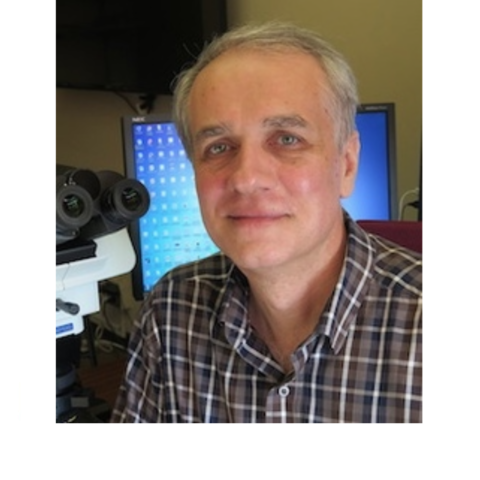
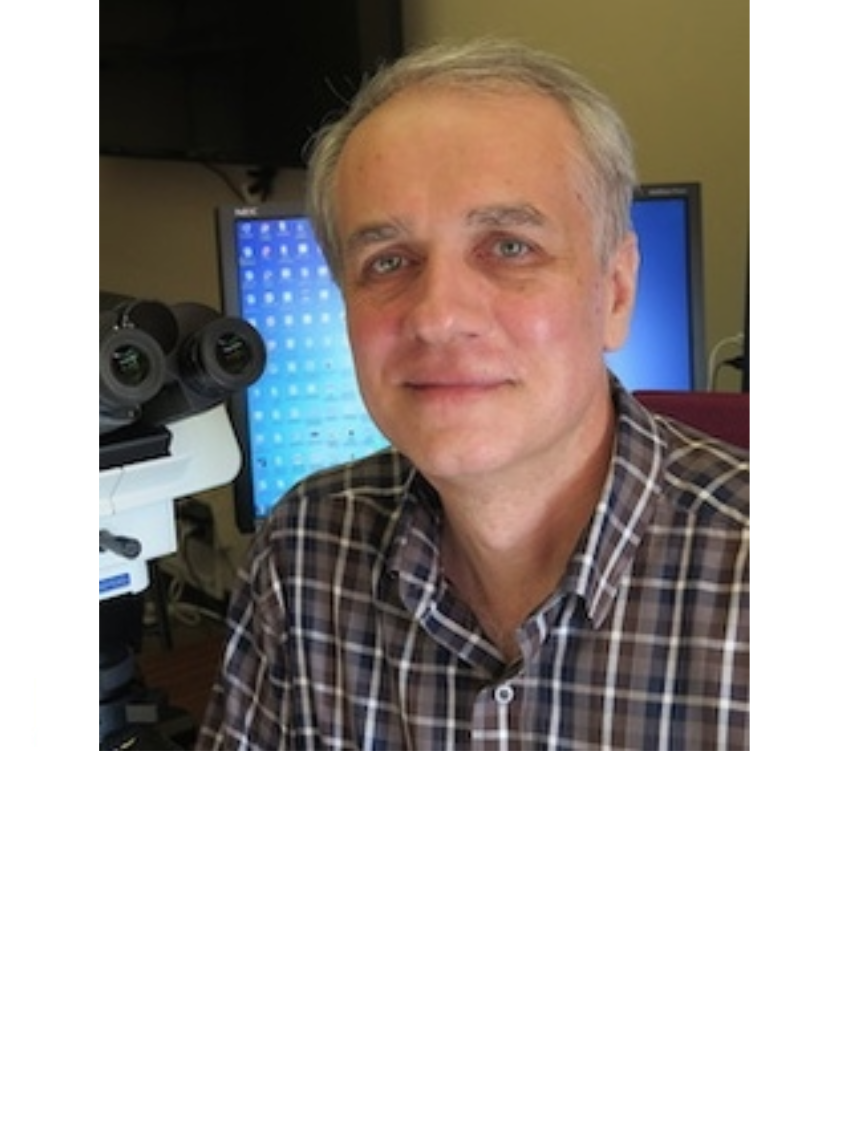
Research Summary
Dr. Racila is an anatomic and clinical pathologist. His research interests in cancer immunology, genetics and vaccine development; circulating tumor cells; genetic variants in the complement system associated with tumor response to therapy; the molecular genetics of metastatic mesothelioma; and the use of mutational signatures to differentiate primary from metastatic squamous cell carcinoma to the lung. The focus of much of his early research was in the isolation and characterization of circulating tumor cells in systemic and metastatic disease, including breast, colon, and prostate carcinomas. They devised new strategies and methodologies for isolating and characterizing circulating tumor cells from the peripheral blood of patients with these diseases. Their work formed the basis of a widely used commercial technology called CellSearch that can determine the number of circulating tumor cells in these patients.More recently, Racila's research focus shifted to the complement cascade and the role of mutations in complement genes to treatment response. Complement is a part of the immune system that helps or complements the ability of antibodies to kill the tumor cells, or phagocytic cells to remove pathogens from the body. The complement system, which is part of the innate immune system, consists of a number of complex proteins that circulate in the blood. Racila and his colleagues have found that single nucleotide polymorphisms in certain complement genes such as C1q are correlated with treatment response and metastasis in breast cancer and lymphoma. C1q plays a role in angiogenesis and also binds to apoptotic bodies from dying cells, including tumor cells, coating these bodies to facilitate engulfment and removal by macrophages to prevent an autoimmune response. In cancer, an autoimmune response against tumor cells is desirable, yet tumor cells employ mechanisms for suppressing the immune cell response. Racila found that lower levels of C1q are actually associated with less propensity to develop metastatic disease in breast carcinoma, possibly because more apoptotic bodies from tumor cells escape engulfment and become available for processing and antigen presentation, therefore eliciting a stronger immune response. Bettering understanding of the complement system, a more primitive ancestor of cellular and humoral immunity, can shed light on possible mechanisms for strengthening the host response to cancer.Racila and his fellow researchers also usednext-generation DNA sequencing (NGS) technology to investigate the molecular heterogeneity of malignant mesothelioma.They looked at the overall number and type of nucleotide substitutions as well as chromosome copy number variation of various genes. They hypothesized that the mutational frequency differences observed between the epithelioid, sarcomatoid and biphasic types of malignant mesothelioma may affect tumor behavior, response to treatment and clinical outcome. Also, identification of a method to reliably differentiate between primary and metastatic squamous cell carcinoma to the lung has direct implications for the therapy and prognosis of these tumors. Currently, this differentiation cannot be done by the use of morphologic features alone. Racila and his colleagues found that these lung neoplasms can be distinguished by the specific mutational signatures they carry and an algorithm can be developed that will assist pathologists in identifying the origin of these lung tumors.
Publications
- Khalifa MA, Gagner B, Chen L, Murugan P, Klein ME, Racila E, Amin K, Miller F, Stewart J, Ding Y, Farooqui M, Dasaraju S, and Adeyi OA. Immunohistochemistry and immunofluorescence utilization audit by subspecialty in an academic setting: A step toward stewardship. Annals of Diagnostic Pathology, Volume 67, 2023, 152214, https://doi.org/10.1016/j.anndiagpath.2023.152214.
- Rothrock AT, Stewart lll J, Li F, Racila E and Amin K. Exploration of INSM1 and hASH1 as additional markers in lung cytology samples of high-grade neuroendocrine carcinoma with indeterminate neuroendocrine differentiation. Diagnostic Cytopathology, 11 February 2022. https://doi.org/10.1002/dc.24938
- Khoury T, Mendez ALR, Peng X, Yan L, Racila E. Clinicopathologic characteristics of malignant non-hematopoietic tumors first presented as an axillary mass with emphasis on occult breast carcinoma. Int J Clin Oncol. 2019 Oct 4. doi: 10.1007/s10147-019-01555-2.
- Amundson WH, Racila E, Allen T, Dincer HE, Tomic R, Bhargava M, Perlman DM, Kim HJ.Acute exacerbation of interstitial lung disease after procedures. Respir Med. 2019 Apr;150:30-37. doi: 10.1016/j.rmed.2019.02.012.
- Pelaez F, Manuchehrabadi N, Roy P, Natesan H, Wang Y, Racila E, Fong H, Zeng K, Silbaugh AM, Bischof JC, Azarin SM. 2018. Biomaterial scaffolds for non-invasive focal hyperthermia as a potential tool to ablate metastatic cancer cells. Biomaterials. 2018 Jun;166:27-37. doi: 10.1016/j.biomaterials.2018.02.048. Epub 2018 Feb 28.
Education
Fellowships, Residencies, and Visiting Engagements
Licensures and Certifications
Contact
Address
420 Delaware St SEMinneapolis, MN 55455-0341
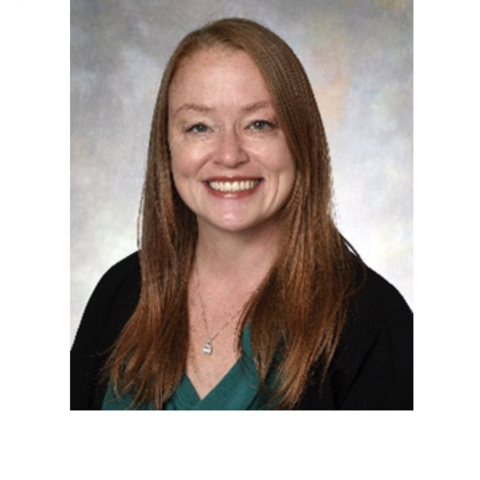
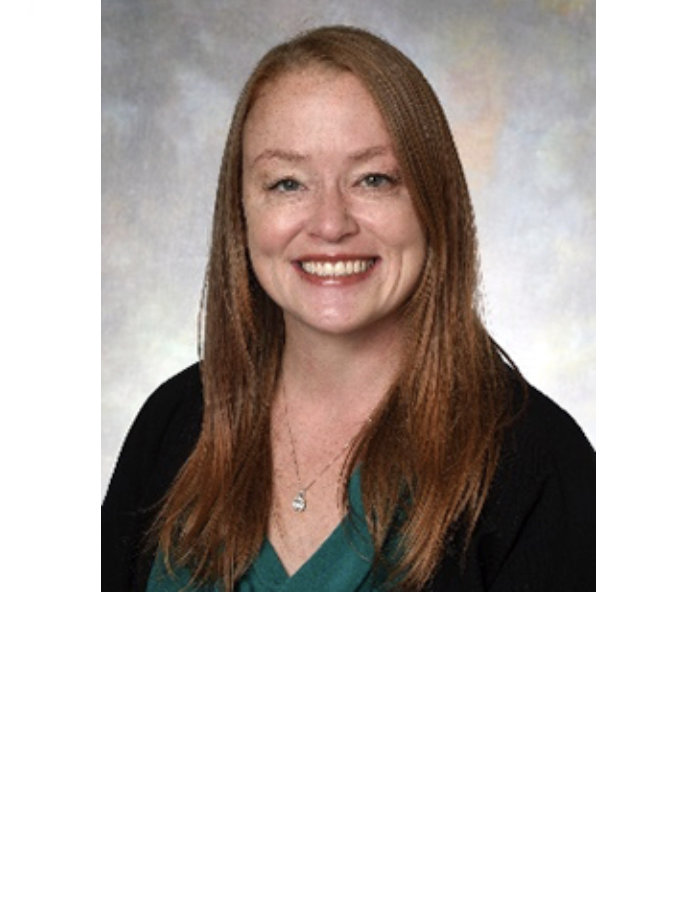
Bio
Dr. Saenger is Medical Director of Hennepin Healthcare’s Clinical Chemistry Laboratory, a highly automated, high-volume laboratory that provides STAT and routine testing 24 hours a day, seven days a week for HCMC hospital, Hennepin Healthcare clinics, and other Hennepin County Services. The laboratory testing menu includes automated chemistry, blood gases, cardiac markers, hepatitis, HIV, tumor markers, autoimmunity, infectious disease, allergy, and endocrine testing.
Research Summary
Dr. Saenger's clinical research interests are in cardiovascular biomarkers and lipids/lipoproteins, focusing on utilization and analytical aspects of cardiac troponin and natriuretic peptides. She currently serves on the IFCC Committee on Clinical Applications of Cardiac Biomarkers and the IFCC Standardization of Cardiac Troponin I Working Group. Dr. Saenger has authored over 100 peer-reviewed manuscripts and book chapters, primarily related to cardiac biomarkers.
Aakre KM, Saenger AK, Body R, Collinson P, Hammarsten O, Jaffe AS, Kavsak P, Omland T, Ordonez-Lianos J, Apple FS. Analytical Considerations in Deriving 99th Percentile Upper Reference Limits for High-Sensitivity Cardiac Troponin Assays: Educational Recommendations from the IFCC Committee on Clinical Application of Cardiac Bio-Markers. Clin Chem. 2022 Jul 27;68(8):1022-1030. doi: 10.1093/clinchem/hvac09
Saenger AK. Pick a Number, Any Number…Choosing Your Troponin Cutoff Wisely. J Appl Lab Med. 2019 Mar;3(5):753-755. doi: 10.1373/jalm.2018.027714.
Grants and Patents
Selected Grants
Contact
Address
701 Park Avenue Minneapolis, MN, 55415

Research Summary
Dr. Schwertfeger is a member of the Division of Molecular Pathology and Genomics. Her main research effort is focused on the breast cancer microenvironment and how breast cancers cells interact with cells in the stroma, particularly with immune cells. The cell of particular interest to her group is the macrophage, a specialized innate immune system cell. Macrophages circulate as monocytes in the blood and are recruited to different tissue sites as part of an immune response. Macrophages have long been known to be associated with tumors, initially it was thought to attack tumors. More recently scientists have found that macrophage populations at a tumor site is reflective of tumor size and aggressiveness, suggesting the possibility that macrophages may serve to promote tumor growth rather than attacking tumors. It is now understood that macrophages are recruited by tumors through signaling mechanisms and commandeered to assist in tumor expansion and metastasis.
Schwertfeger and her colleagues are interested in the mechanisms that drive macrophage-tumor cell interactions and the internal signaling in macrophages that causes them to respond the way they do in the tumor microenvironment. If signaling mechanisms can be identified, they could be targets for therapeutic intervention. Macrophages, literally "big eaters," are large cells that normally engulf and digest cellular debris and foreign material and could potentially be turned against the tumor. Researchers have tended to focus on the soluble growth factors macrophages produce as part of their normal functions rather than signaling pathways that could reveal how and why they produce these factors. Schwertfeger's team is currently exploring three macrophage signaling molecules involved in normal macrophage functioning and that of other cell types. They include two transcriptions factors, STAT3 and STAT5, and the cell-surface enzyme ADAM17, which is involved in a spectrum of regulatory activities that includes cleaving of cell-surface-bound growth factors, freeing them to carry out their cellular functions. Schwertfeger and her colleagues have found that activation of the fibroblast growth factor receptor (FGFR)-STAT3 pathway induces accumulation of the extracellular matrix carbohydrate hyaluronan, which promotes tumor proliferation and migration. Although drugs targeting STAT transcription factors or ADAM17 enzymes are plausible, how inhibiting these pathways would affect immune system function in healthy and tumor tissue is unknown and is a related research interest of Schwertfeger's laboratory.
Schwertfeger's laboratory is also exploring how breast cancer cells interact with osteoclasts to promote bone metastasis using the FGFR signaling pathway. The research is aimed at determining whether the pathway is important in the ability of breast cancer cells to activate osteoclasts, initiate bone degradation and form osteolytic breast cancer lesions. The FGFR pathway can be targeted, with a number of inhibitors currently in clinical trials for treating primary tumors but not metastasis. Schwertfeger's goal is to see whether the FGFR pathway inhibitors can be used to inhibit breast cancer metastasis._ _Member, American Association for Cancer Research (AACR) NIH/NCI Grant Review Panel: Member of Tumor MicroEnvironment study sectionJournal of Mammary Gland Biology and Neoplasia - Editorial Board MemberBreast Cancer Research - Associate Editor
Publications
- Elfstrum AK, Bapat AS, Schwertfeger KL. Defining and targeting macrophage heterogeneity in the mammary gland and breast cancer. Cancer Med. 2024 Feb;13(3):e7053. doi: 10.1002/cam4.7053.
- Elfstrum AK, Rumahorbo AH, Reese LE, Nelson EV, McCluskey BM, Schwertfeger KL. LYVE-1-expressing macrophages modulate the hyaluronan-containing extracellular matrix in the mammary stroma and contribute to mammary tumor growth. Cancer Res Commun. 2024 May 8. doi: 10.1158/2767-9764.CRC-24-0205.
- Bapat AS, O'Connor CH, Schwertfeger KL. Targeting the NF-κB pathway enhances responsiveness of mammary tumors to JAK inhibitors. Sci Rep. 2023 Apr 1;13(1):5349. doi: 10.1038/s41598-023-32321-0
- Tarullo SE, He Y, Daughters C, Knutson TP, Henzler CM, Price MA, Shanley R, Witschen P, Tolg C, Kaspar RE, Hallstrom C, Gittsovich L, Sulciner ML, Zhang X, Forster CL, Lange CA, Shats O, Desler M, Cowan KH, Yee D, Schwertfeger KL, Turley EA, McCarthy JB, and Nelson AC. Receptor for hyaluronan-mediated motility (RHAMM) defines an invasive niche associated with tumor progression and predicts poor outcomes in breast cancer patients. The Journal of Pathology. First published: 26 April 2023 https://doi.org/10.1002/path.6082. Note: This research was supported in part by the LMP initiative in spatial 'omics.
- Witschen PM, Chaffee TS, Brady NJ, Huggins DN, Knutson TP, LaRue RS, Munro SA, Tiegs L, McCarthy JB, Nelson AC, Schwertfeger KL. Tumor cell-associated hyaluronan-CD44 signaling promotes pro-tumor inflammation in breast cancer. Cancers 2020, 12, 1325. https://doi.org/10.3390/cancers12051325.
- Irey EA, Lassiter CM, Brady NJ, Chuntova P, Wang Y, Knutson TP, Henzler C, Chaffee TS, Vogel RI, Nelson AC, Farrar MA, Schwertfeger KL. JAK/STAT inhibition in macrophages promotes therapeutic resistance by inducing expression of protumorigenic factors. Proc Natl Acad Sci U S A. 2019 May 30. pii: 201816410. doi: 10.1073/pnas.1816410116.
- Nelson AC, Machado HL, Schwertfeger KL. Breaking through to the other side: Microenvironment contributions to DCIS initiation and progression. J Mammary Gland Biol Neoplasia. 2018 Aug 31. doi: 10.1007/s10911-018-9409-z.
- Farooqui, M., Bohrer, L.R., Brady, N.J., Chuntova, P., Kemp, S.E., Wardwell, C.T., Nelson, A.C. and Schwertfeger, K.L. Epiregulin contributes to breast tumorigenesis through regulating matrix metalloproteinase 1 and promoting cell survival. Molecular Cancer. 14(138), 2015. PMID: 26215578.
Education
Contact
Address
3-127 CCRB2231 6th St SE
Minneapolis, MN 55455

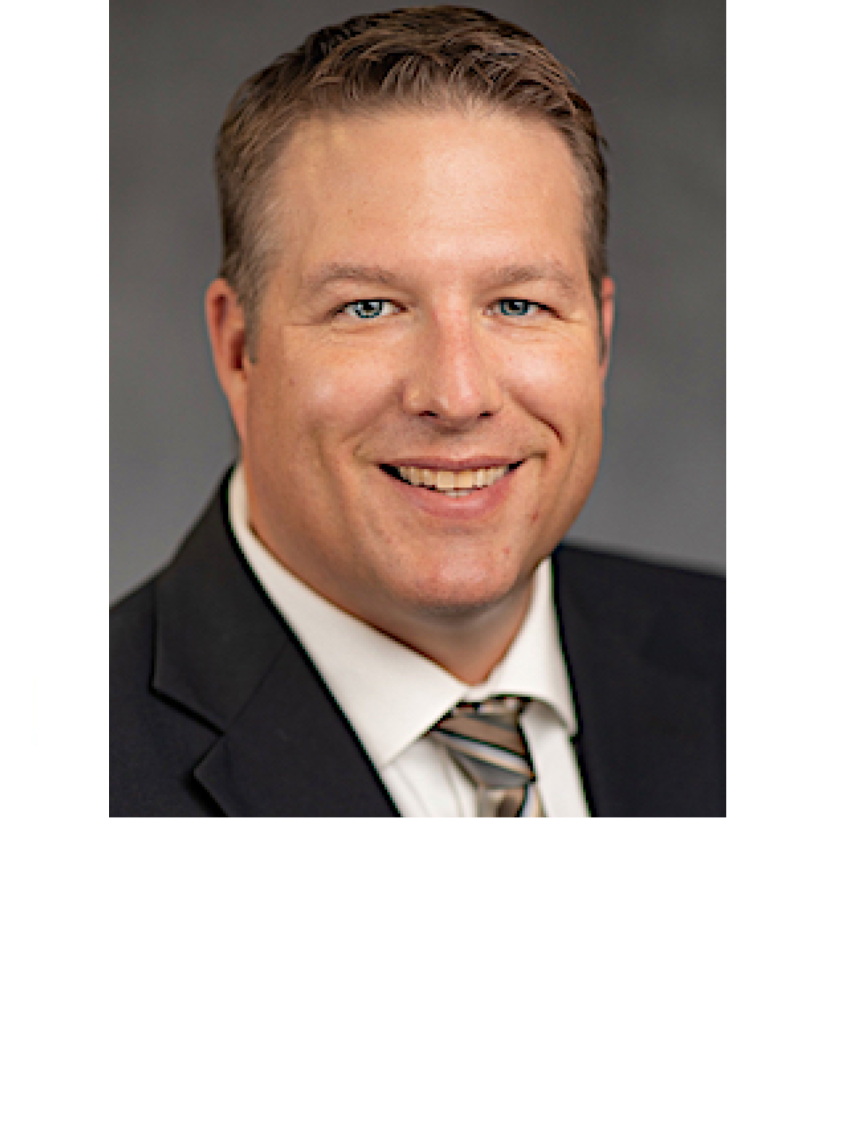
Bio
Dr. Jesse Seegmiller is a board-certified clinical chemist and associate professor in the Department of Laboratory Medicine and Pathology at the University of Minnesota. His primary research interest is kidney disease where he focuses his activities on novel testing and employs mass spectrometry to develop methods for biological specimens at the University of Minnesota’s Advanced Research and Diagnostics Laboratory (ARDL).
Dr. Seegmiller also serves as a medical director for M Health Fairview health system where he oversees esoteric and toxicology testing.
Research Summary
Publications
Seegmiller JC, Kokaisel EL, Story SJ, Zaun CP, Peters JM, Thomas SN, and Karger AB. Method comparison of SARS-CoV-2 serology assays involving three commercially available platforms and a novel in-house developed enzyme-linked immunosorbent assay Clin Biochem. 2020;S0009-9120(20)30812-2. doi:10.1016/j.clinbiochem.2020.08.004.
Seegmiller JC, Eckfeldt JH, Lieske JC. Challenges in Measuring Glomerular Filtration Rate: A Clinical Laboratory Perspective. Adv Chronic Kidney Dis. 2018 Jan;25(1):84-92. doi: 10.1053/j.ackd.2017.10.006
Seegmiller JC, Miller WG, Bachmann LM. Moving Toward Standardization of Urine Albumin Measurements. EJIFCC. 2017 Dec 19;28(4):258-267. eCollection 2017 Dec.
Schwartz GJ, Wang H, Erway B, Nordin G, Seegmiller J, Lieske JX, Bäck S-E, Miller WG, Eckfeldt JH. Multicenter Laboratory Comparison of Iohexol Measurement. The Journal of Applied Laboratory Medicine Mar 2018, 2 (5) 711-724; DOI: 10.1373/jalm.2017.024240 http://jalm.aaccjnls.org/content/2/5/711
Love SA, Seegmiller JC, Kloss J, Apple FS. Urine Creatinine Concentrations in Drug Monitoring Participants and Hospitalized Patients. J Anal Toxicol. 2016 Sep 1-4.
Larson TS, Seegmiller J, In Reply to 'Iohexol Versus Iothalamate for GFR Measurement'. Am J Kidney Dis. 2016 Jun;67(6):991-2.
Education
Licensures and Certifications
Contact
Address
D185 Mayo420 Delaware St. SE
Minneapolis, MN 55455


Bio
Dr. Sen is a molecular pathologist with years of experience in translating research into novel therapies that can be quickly advanced from the bench to the clinic. The primary focus of his research has been in T-cell based immunotherapy to target malignant melanoma and in the development of novel therapies targeting leukemic stem cells (LSCs) in acute myelogenous leukemia (AML). His specialties include
- Cancer immunology and immunotherapy
- Oncology/cancer stem cell biology and signaling pathways
- In vivo pharmacology studies: Mouse models of leukemia and melanoma
- High throughput screening (HTS)
- Multi-parameter flow cytometry
- Confocal microscopy
Research Summary
Publications
Shuang Ma; Siddhartha Sen; Rachel Jug; Xuefeng Zhang; Wan-Lin Zhang; Shuai Shen; Cheng-Qian Yu; Hong-Tao Xu; Lian-He Yang; Endi Wang. Adrenal relapse of primary central nervous system diffuse large B-cell lymphoma: Report of the first case and literature review. Medicine (Baltimore). 2018 Sep; 97(38): e12482.
Amanda Contreras; Megan V Beems; Andrew J Tatar; Siddhartha Sen; Prakrithi Srinand; Marulasiddappa Suresh; Tahra K Luther; Clifford S Cho. Co-transfer of tumor-specific effector and memory CD8+ T cells enhances the efficacy of adoptive melanoma immunotherapy in a mouse model. Journal for Immunotherapy of Cancer. 2018 May 29;6(1):4
Education
Fellowships, Residencies, and Visiting Engagements
Licensures and Certifications
Contact
Address
Mayo Memorial Building420 Delaware St SE
Minneapolis, MN 55455


Bio
Dr. Shimizu is focused on trying to understand how immune responses are generated and how that information can be used in the clinic to improve patient care. He and his colleagues are particularly interested in identifying the general principles by which the T-cell response is initiated. These cells require contact with other cells order to become activated and play their role in an antigen-specific immune response. Cellular adhesion processes and cell-surface receptors transmit biochemical signals inside the cells that lead to T-cell activation and differentiation into cytotoxic T cells or helper T cells. Cellular adhesion spurs efficient trafficking of lymphocytes through the body and their influx to inflammatory sites. Shimizu's laboratory is investigating the signaling pathways that regulate the strength of these adhesive interactions. His team is also exploring the functional significance of these T-cell molecular mechanisms and their role in the ability of the immune system to respond to pathogens and tumors.
Research Summary
Shimizu has a long-standing and continuing research interest in the role of integrins in T-cell adhesion and activation. The integrins are a superfamily of cell adhesion receptors that T-cells use to carry out many of their normal functions, including their ability to migrate to sites in the body where they are needed. Shimizu and his University colleagues have identified novel signaling intermediates that promote integrin function and T-cell activation, and are currently investigating the role of integrins in controlling the localization of T-cells to specific anatomic sites in the body. Of particular interest is the tumor microenvironment, which is normally immunosuppressive and thus dampens the ability of T-cells to recognize and kill tumor cells. Sophisticated imaging technologies such as two-photon microscopy now make it possible to track the movement and behavior of T-cells in the normal and tumor tissue microenvironments. Currently, Shimizu and colleagues are using this technology to analyze the behavior of cytotoxic T-cells in the tumor microenvironment and the role of integrins and immune checkpoint blockade in controlling T-cell movement and retention in the tumor microenvironment. Signal transduction, lymphocyte activation, cell adhesion and migration The generation of an antigen-specific immune response requires the coordinated interaction of the various cellular constituents of the immune system with each other and with components of the extracellular environment found in tissue. These adhesive events are critical to the efficient trafficking of lymphocytes through the body, the interaction of T lymphocytes with antigen-presenting cells that initiates and sustains T cell activation, and the influx of leukocytes into sites of inflammation. Dr. Shimizu's laboratory is investigating the intracellular signal transduction events that regulate the strength of these adhesive interactions and the functional significance of these molecular mechanisms of cell adhesion and migration on the ability of the immune system to respond to pathogens and tumors. Specific areas of investigation projects include: Analysis of the biochemical signaling events by which the antigen-specific T cell receptor regulates the functional activity of integrins, a family of cell adhesion receptors that mediates the adhesion of cells to other cells and to extracellular matrix molecules Mechanisms of receptor "cross-talk" that regulate integrin function The function of adapter proteins in regulating T cell gene transcription and cytoskeletal reorganization Elucidation of pathways mediating the migration and retention of tumor-specific T cells into sites of tumor growth Analysis of the function of the lipid kinase p110gamma in regulating the inflammatory response and T cell-dependent immune responses to vaccinia virus. Dr. Shimizu's laboratory combines molecular and biochemical approaches with genetic models in the mouse where the impact of altering signaling pathways on the generation of antigen-specific and tumor-specific immune responses can be assessed. The long-term objective is to provide the knowledge base necessary to specifically modulate the immune response by targeting these mechanisms of cell adhesion and migration.
Publications
- Domae, E., Hirai, Y., Ikeo, T., Goda, S., and Shimizu, Y.: Cytokine-mediated activation of human ex vivo-expanded Vg9Vd2 T cells. Oncotarget 2017; 8:45928-45942.
- Banek, C.T., Kneupfer, M.M., Foss, J.D., Fiege, J.K., Asirvatham-Jeyaraj, N., Van Helden, D., Shimizu, Y., and Osborn, J.W. Resting afferent renal nerve discharge and renal inflammation: elucidating the role of afferent and efferent renal nerves in deoxycorticosterone acetate salt hypertension. Hypertension 2016; 68:1415-1423.
- Asirvatham-Jeyaraj, N., Fiege, J.K., Han, R., Foss, J., Banek, C.T., Burbach, B.J., Razzoli, M., Bartolomucci, A., Shimizu, Y., Panoskaltsis-Mortari, A., and Osborn, J.W.: Renal denervation normalizes arterial pressure with no effect on glucose metabolism or renal inflammation in obese hypertensive mice. Hypertension 2016; 68:929-936.
- Wang, H., Kwak, D., Fassett, J., Hou, L., Xu, X., Burbach, B., Thenappan, T., Xu, Y., Ge, J., Shimizu, Y., Bache, R., and Chen, Y.: CD28/B7 deficiency attenuates systolic overload-induced congestive heart failure, myocardial and pulmonary inflammation, and activated T-cell accumulation in the heart and lungs. Hypertension 2016; 68:688-696.
- Fiege, J.K., Beura, L.K. and Shimizu, Y.: Adhesion and degranulation promoting adapter protein (ADAP) promotes CD8 T cell differentiation and resident memory formation and function during an acute infection. J. Immunol. 2016; 197: 2079-2089.
- Mitchell, J.S., Burbach, B.J., Srivastava, R., Fife, B.T. and Shimizu, Y.: Multi-stage T cell-dendritic cell interactions control optimal CD4 T cell activation through the ADAP-SKAP55 signaling module. J. Immunol. 2013; 191:2372-2383. PMCID: PMC3772631.
- Zumwalde, N.A., Domae, E., Mescher, M.F. and Shimizu, Y.: ICAM-1 dependent homotypic aggregates regulate CD8 T cell effector function and differentiation during T cell activation. J. Immunol. 2013; 191:3681-3693. PMCID: PMC3803108.
- Srivastava, R., Burbach, B.J., Mitchell, J.S., Pagan, A.J. and Shimizu, Y.: ADAP regulates cell cycle progression of T cells via control of cyclin E and cdk2 expression through distinct CARMA1-dependent signaling pathways. Mol. Cell. Biol. 2012; 32:1908-1917. PMCID: PMC3347422.
Contact
Address
2-110 MBB2101 6th Street SE
Minneapolis, MN 55414
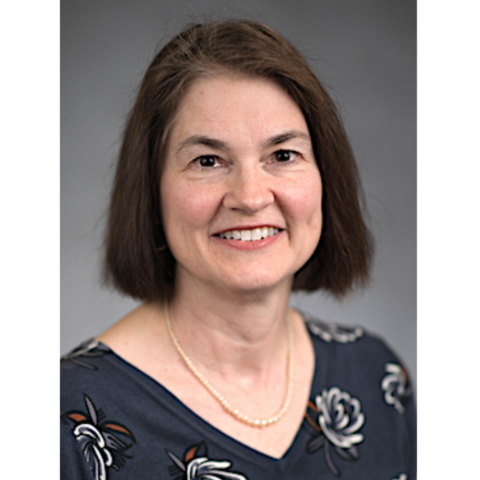

Bio
Amy Skubitz, PhD, graduated from the University of Maryland, College Park in the field of Biochemistry. She received a Ph.D. from the Johns Hopkins University School of Medicine in the Department of Pharmacology and Experimental Therapeutics. She did her post-doctoral training at the University of Minnesota in the Department of Laboratory Medicine and Pathology where her research was focused on cellular proteins that promote the adhesion, migration, invasion, and metastasis of cancer cells. Currently, Dr. Skubitz is a Professor in the Department of Laboratory Medicine and Pathology and an Adjunct Professor in the Department of Obstetrics, Gynecology, and Women's Health. Dr. Skubitz established the University of Minnesota Tissue Procurement Facility over two decades ago to facilitate the transfer of waste tissue from the operating room to researchers in order to expedite discoveries for the diagnosis, treatment, and cure of human diseases.
Research Summary
Dr. Skubitz is Professor of Laboratory Medicine and Pathology, Professor of Obstetrics, Gynecology and Women's Health, and Director of the Ovarian Cancer Early Detection Program . Her studies of cell adhesion molecules and receptors laid the foundation for her current research into how ovarian cancer cells adhere to the extracellular matrix, to each other, and to cells that line the peritoneal cavity, which contains the ovaries. In ovarian cancer, tumor cells are shed from the surface of the ovaries into the surrounding peritoneal fluid (ascites) and form multi-cellular aggregates or spheroids. Ovarian cancer is marked by localized cell adhesion and invasion, typically involving neighboring organs in the peritoneal cavity. Skubitz and her colleagues have studied proteins known to be involved in cell adhesion, including laminin, fibronectin, type IV collagen, and integrins and also the carbohydrate hyaluronan and its receptor CD44. They employed gene expression microarray technology to analyze more than a thousand different tumor and normal tissues in a search for biomarkers for ovarian cancer. They identified Nectin-4, a cell-cell adhesion molecule that can be shed from the ovarian cancer cell surface and enter the bloodstream, suggesting that Nectin-4 could potentially serve as both a tissue and serum marker for ovarian cancer. Ongoing studies are focused on elucidating the biological role of Nectin-4 in ovarian cancer progression. In related research, Skubitz is analyzing fluid samples from human Pap tests for evidence of ovarian cancer. Her hypothesis is that proteins or peptides can be shed from the ovarian tumor, pass through the fallopian tubes and enter the cervix, where they could potentially be detectable in fluid collected in a standard Pap test. Mass spectrometry is being used to identify and quantify ovarian cancer-specific protein markers.
Publications
Selected publications since 2004
- Ryu J, Boylan KLM, Twigg CAI, Evans R, Skubitz APN, Thomas SN. Quantification of putative ovarian cancer serum protein biomarkers using a multiplexed targeted mass spectrometry assay. Clin Proteomics. 2024 Jan 3;21(1):1. doi: 10.1186/s12014-023-09447-4.
- Boylan KLM, Petersen A, Starr TK, Pu X, Geller MA, Bast RC Jr, Lu KH, Cavallaro U, Connolly DC, Elias KM, Cramer DW, Pejovic T, Skubitz APN. Development of a Multiprotein Classifier for the Detection of Early Stage Ovarian Cancer. Cancers (Basel). 2022 Jun 23;14(13):3077. doi: 10.3390/cancers14133077.
- Boylan KLM, Afiuni-Zahdeh S, Geller MA, Argenta PA, Griffin TJ, and Skubitz APN. Evaluation of the potential of Pap test fluid and cervical swabs to serve as clinical diagnostic biospecimens for the detection of ovarian cancer by mass spectrometry-based proteomics. Clinical Proteomics (2021) 18:4.
- Boylan, K.L.M, Manion, R.D., Shah, H., Skubitz, K.M., and Skubitz, A.P.N.(2020) Inhibition of ovarian cancer cell spheroid formation by synthetic peptides derived from Nectin-4. International Journal of Molecular Sciences21:4637.
- Skubitz, K.M., Wilson, J.D., Cheng, E.Y., Lindgren, B.R., Boylan, K.L.M., and Skubitz, A.P.N. (2019) Effect of chemotherapy on cancer stem cells and tumor-associated macrophages in a prospective study of preoperative chemotherapy in soft tissue sarcoma. Journal of Translational Medicine17(1):130.
- Uppendahl, L.D., Felices, M.D., Bendzick, L., Ryan, C., Kodal, B., Hinderlie, P., Boylan, K.L.M., Skubitz, A.P.N., Miller, J.S., Geller, M.A. (2019) Cytokine-induced memory-like natural killer cells have enhanced function, proliferation, and in vivo expansion against ovarian cancer cells. Gynecologic Oncology 2019; 153: 149–157.
- Skubitz, A.P.N., Boylan, K.LM., Geschwind, K., Cao, Q., Starr, T.K., Geller, M.A., Celestino, J., Bast Jr., R.C., Lu, K.H., and Koopmeiners, J.S. Simultaneous measurement of 92 serum protein biomarkers for the development of a multi-protein classifier for ovarian cancer detection. Cancer Prevention Research 2019; 12(3).
Education
Contact
Address
MMC 395420 Delaware Street, S.E.
Minneapolis, MN 55455
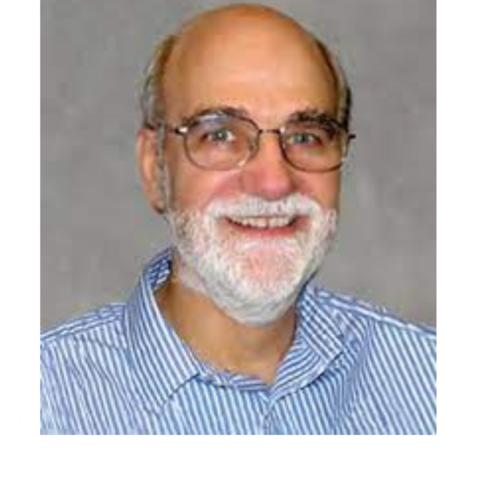
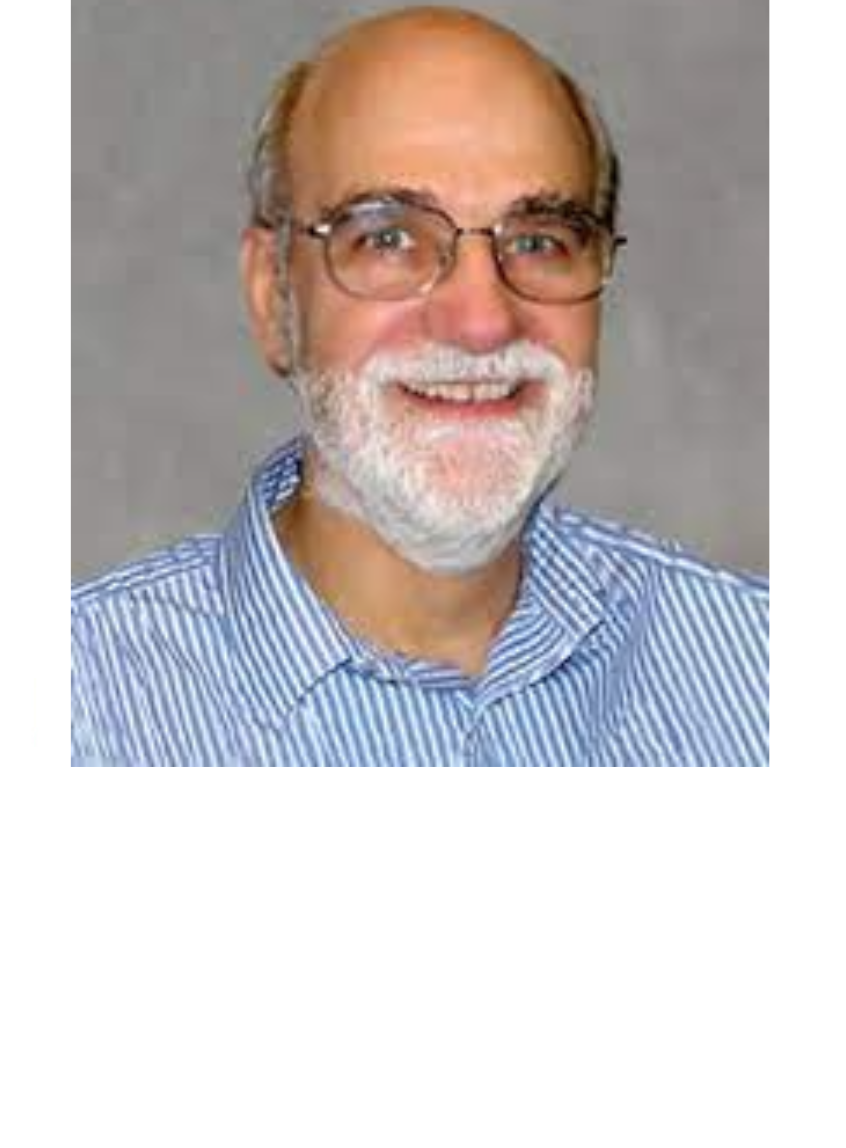
Research Summary
Dr. Steffes is a professor and faculty investigator in the Advanced Research and Diagnostics Laboratory (ARDL), which provides central laboratory testing services for large, NIH-funded multi-center clinical trials and studies. Through numerous large-scale longitudinal studies he has earned recognition as a leading researcher in the areas of diabetes mellitus, endocrinology, and cardiovascular disease epidemiology. Steffes is currently principal investigator of the Central Biochemistry Laboratory (CBL) for the Epidemiology of Diabetes Interventions and Complications (EDIC) study, a follow-up to the Diabetes Control and Complications Trial (DCCT) launched in 1984 of which he was also the principal investigator of the CBL. EDIC is a multi-center, longitudinal, observational study designed to use the well-characterized DCCT patient cohort to assess the incidence and predictors of cardiovascular disease events such as heart attack and stroke and diabetic complications related to the eye, kidney, and nerves. In addition, EDIC aims to measure the impact and cost-effectiveness of intensive treatment versus conventional treatment on the quality of life. Steffes is also the principal investigator of the CBL in the GRADE study (Glycemia Reduction Approaches in Diabetes). GRADE is a long-term study with the goal of showing the comparative effectiveness of different treatments for type 2 diabetes, a disease that threatens to become a major public health problem and poses enormous human and economic challenges worldwide.Dr. Steffes is directing central laboratory testing through ARDL for the Assessment, Serial Evaluation, and Subsequent Sequelae of Acute Kidney Injury (ASSESS-AKI) study, a multi-center effort exploring the use of novel blood and urine biomarkers to refine the diagnosis and prognosis of patients with acute kidney injury. He is also collaborating with ARDL colleagues to provide central laboratory services for the Coronary Artery Risk Development in Young Adults Study (CARDIA) that examines the development of heart disease in young black and white adults. In addition, he is collaborating in an ongoing effort to standardize the methods to measure hemoglobin A1c (HbA1c), a long-term marker of glycemia. The DCCT/EDIC CBL at the University of Minnesota has defined the measurement of HbA1c in laboratories, both research and clinical. HbA1c is now used to diagnose diabetes mellitus acround the world.
Publications
- de Boer IH, Gao X, Bebu I, Hoofnagle AN, Lachin JM, Paterson A, Perkins BA, Saenger AK, Steffes MW, Zinman B, Molitch ME. Biomarkers of tubulointerstitial damage and function in type 1 diabetes. BMJ Open Diabetes Res Care. 2017 Nov 14;5(1):e000461.
- de Boer IH, Sun W, Cleary PA, Lachin JM, Molitch ME, Zinman B, Steffes MW; for the Diabetes Control and Complications Trial/Epidemiology of Diabetes Interventions and Complications Study Research Group. Longitudinal Changes in Estimated and Measured GFR in Type 1 Diabetes. J Am Soc Nephrol. 2014 Jan 25(4):810-818.
- De Boer, Ian H De; Sun, Wanjie; Gao, Xiaoyu; Cleary, Patricia; Lachin, John M.; Molitch, Mark E.; Steffes, Michael W.; Zinman, Bernard. Effect of intensive diabetes treatment on albuminuria in type 1 diabetes: Long-term follow-up of the Diabetes Control and Complications Trial and Epidemiology of Diabetes Interventions and Complications study. The Lancet Diabetes and Endocrinology. 2014 July 2(10):793-800.
- McGee, Paula L.; Steffes, Michael W.; Nowicki, Maren L.; Bayless, Meg L.; Gubitosi-Klug, Rose A.; Cleary, Patricia; Lachin, John M.; Palmer, Jerry P. Insulin secretion measured by stimulated C-peptide in long-established Type 1 diabetes in the Diabetes Control and Complications Trial (DCCT)/ Epidemiology of Diabetes Interventions and Complications (EDIC) cohort: A pilot study. Diabetic Medicine. 2014. June 31(10):1264-1268.


Bio
Dr. Stewart is an anatomic and clinical pathologist with research interests in cytopathology, telepathology, and improved diagnostic utility of fine-needle aspiration (FNA) cytology, a diagnostic technique used to sample cellular material from superficial and deep masses. These efforts involve finding better ways of delivering advanced patient care using deep FNAs to obtain biopsy material.They also involve telepathology in which cytotechnologists, residents, and fellows working with clinicians at one site can prepare specimens and transmit images for cytopathologists at another site to analyze in real time and render a preliminary diagnosis.This is also known as telecytopathology.
Research Summary
Stewart has participated in validation studies of telecytopathology including a retrospective one that combined mostly ultrasound-guided fine-needle aspiration of thyroid and head and neck lesions and real-time images of stained cytology smears.These images were transmitted via a secured virtual private network by cytotechnologists to cytopathologists who made a preliminary diagnosis. The results showed a high degree of concordance between the preliminary diagnosis based on telecytopathology and review of slides via direct microscopy after an appropriate "wash out" period of at least two weeks.In Stewart's view, telecytopathology has the potential to enhance the efficient use of time and resources for cytopathologists as well as provide more timely diagnosis for patients.Although telecytopathology has achieved diagnostic quality resolution, each telepathology protocol is subject to careful study and must undergo and pass a validation process to be approved for general use in the field as per College of American Pathology (CAP) checklists and Center for Medicare and Medicaid Services (CMS) regulations.Potential obstacles include patient identifiable data security during image transmission, adapting to advances in technology such as whole-slide scanning in multiple-planes (3D), and narrowing differences in "locator skills" among cytotechnologists.These locator skills involve locating and highlighting the parts of the transmitted image that merit the attention of the cytopathologist.Dr. Stewart sees continuing progress in telecytopathology in light of advances in technology, changes in the practice of medicine that emphasize efficiencies, cost savings, and improved clinical outcomes, and the incorporation of telepathology into the training of pathology residents and fellows.He will be involved in these efforts as well as efforts to incorporate advances in fine-needle aspiration cytology into molecular diagnostics and resident and fellowship training.
Publications
- Khalifa MA, Gagner B, Chen L, Murugan P, Klein ME, Racila E, Amin K, Miller F, Stewart J, Ding Y, Farooqui M, Dasaraju S, and Adeyi OA. Immunohistochemistry and immunofluorescence utilization audit by subspecialty in an academic setting: A step toward stewardship. Annals of Diagnostic Pathology, Volume 67, 2023, 152214, https://doi.org/10.1016/j.anndiagpath.2023.152214.
- Rothrock AT, Stewart lll J, Li F, Racila E and Amin K. Exploration of INSM1 and hASH1 as additional markers in lung cytology samples of high-grade neuroendocrine carcinoma with indeterminate neuroendocrine differentiation. Diagnostic Cytopathology, 11 February 2022. https://doi.org/10.1002/dc.24938
- Rabe K. & Stewart J. Cardiac Tumor in a 51-Year-Old Woman. 2021; Chicago, IL: ASCP Case Reports.
- Goswami A, Zhang AJ, Vahidi S, Mettler T, Stewart 3rd J, and Amin K. Oncocytic features in salivary duct carcinoma, a potential pitfall for misdiagnosis as Warthin tumor in fine needle aspiration specimens: A cytomorphologic analysis of 14 cases. Diagnostic Cytopathology, April 9, 2020. https://doi.org/10.1002/dc.24426
- Moisini I, Amin K, Mallery S, Stewart J 3rd, Mettler T. Efficacy of endoscopic-guided fine-needle aspiration in the diagnosis of gastrointestinal spindle cell tumors. Diagn Cytopathol. 2018 Aug;46(8):663-669. doi: 10.1002/dc.23976.
- Hupp M, Najmuddin M, Dincer HE, Mallery JS, Amin K, Stewart J 3rd, Cytomorphologic features of malignant or high risk solitary fibrous tumors of the mediastinum sampled by endoscopic and endobronchial ultrasound-guided fine needle aspiration: a comparison of two case reports. Diagnostic Cytopathology, April 2019. doi: 10.1002/dc.24192.
Education
Fellowships, Residencies, and Visiting Engagements
Licensures and Certifications
Contact
Address
Room C445 Mayo420 Delaware St SE
Minneapolis, MN 55455
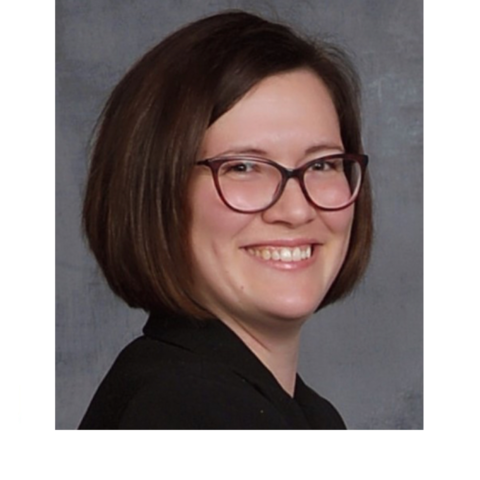
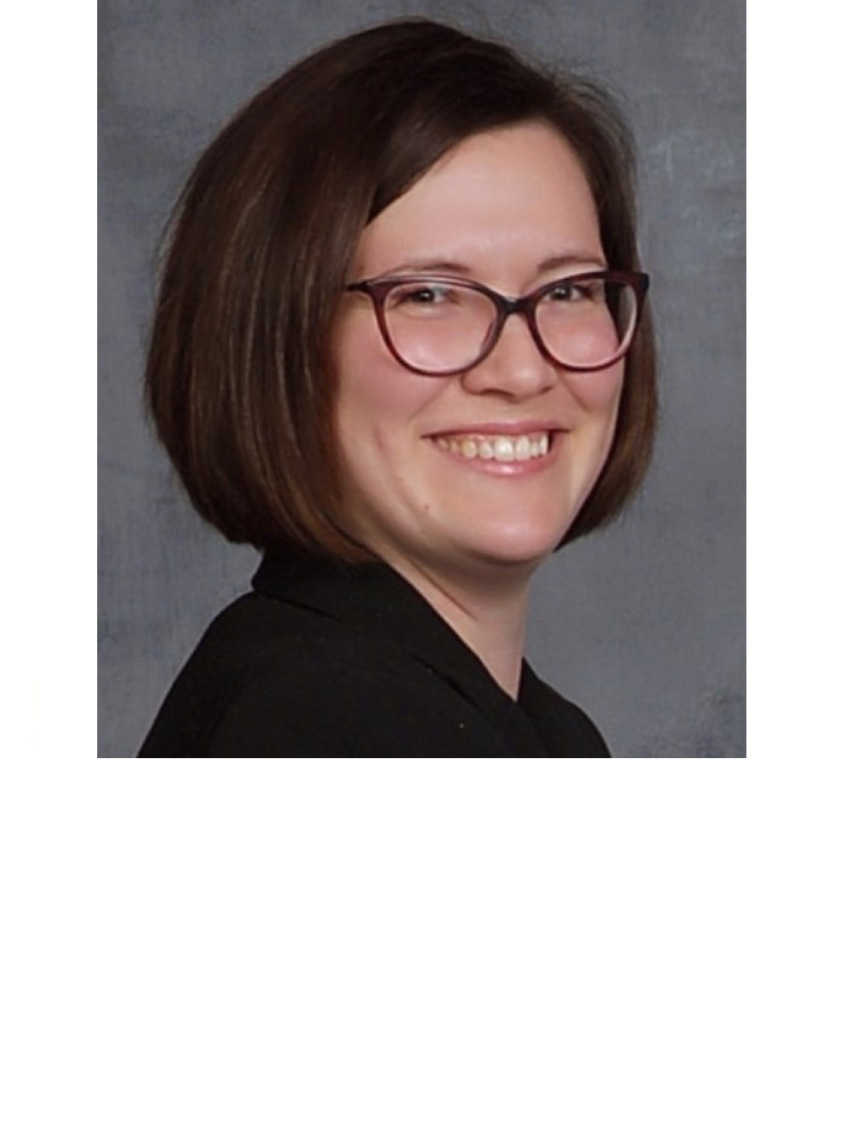
Bio
Dr. Stoffel is an anatomic and clinical pathologist specializing in clinical informatics and patient-centered technologies.
Research Summary
Publications
Stoffel M, Leu MG, Barry D, Hrachovec J, Saifee NH, Migita DS, et al. Optimizing electronic blood ordering and supporting administration workflows to improve blood utilization in the pediatric hospital setting. Transfusion. 2023; 63(12): 2328–2340. https://doi.org/10.1111/trf.17587
Merrill AE, Durant TJS, Baron J, Klutts JS, Obstfeld AE, Peaper D, Stoffel M, Wheeler S, Zaydman MA. Data analytics in clinical laboratories: Advancing diagnostic medicine in the Digital Age. Clinical Chemistry, Volume 69, Issue 12, December 2023, Pages 1333–1341, https://doi.org/10.1093/clinchem/hvad183
Stoffel M, Beal SG, Ibrahim KA, Rummel M & Greene DN. Optimizing the data in direct access testing: information technology to support an emerging care model. Critical Reviews in Clinical Laboratory Sciences, 2023. doi: 10.1080/10408363.2023.2258973.
Patel, A. G. M., Hsiao, C. J., Fasanya, H. O., Stoffel, M., & Lyon, M. E. (2020). Accuracy in measuring racial disparities during the COVID-19 pandemic needs improvement. The Journal of Applied Laboratory Medicine. https://doi.org/10.1093/jalm/jfaa212
Grange, E. S., Neil, E. J., Stoffel, M., Singh, A. P., Tseng, E., Resco-Summers, K., Fellner, B. J., Lynch, J. B., Mathias, P. C., Mauritz-Miller, K., Sutton, P. R., & Leu, M. G. (2020). Responding to COVID-19: The UW Medicine Information Technology Services Experience. Applied Clinical Informatics, 11(2), 265–275. https://doi.org/10.1055/s-0040-1709715
Loeffler, A. G., Smith, M., Way, E., Stoffel, M., & Kurtycz, D. F. I. (2019). A Taxonomic Index for Retrieval of Digitized Whole Slide Images from an Electronic Database for Medical School and Pathology Residency Education. Journal of Pathology Informatics, 10, 33. https://doi.org/10.4103/jpi.jpi_34_19
Stoffel, M., Rysavy, M. B., Rose, S. L., Laffin, J., Rehrauer, W. M., Reza Hafez, G., & Flynn, C. (2018). Multiple concurrent unusual neoplasms presenting in a patient with familial adenomatous polyposis: A case report and review of the literature. Human Pathology: Case Reports, 14, 41–46. https://doi.org/10.1016/j.ehpc.2018.07.004
Healy-Stoffel, M., & Levant, B. (2018). N-3 (Omega-3) Fatty Acids: Effects on Brain Dopamine Systems and Potential Role in the Etiology and Treatment of Neuropsychiatric Disorders. CNS & Neurological Disorders Drug Targets, 17(3), 216–232. https://doi.org/10.2174/1871527317666180412153612
Clinical Summary
Clinical informatics and patient-centered technologies
Education
Fellowships, Residencies, and Visiting Engagements
Licensures and Certifications
Contact
Address
420 Delaware St SEMMC 609
Minneapolis, MN 55455


Bio
Dr. Sullivan is a faculty investigator at the Advanced Research and Diagnostic Laboratory (ARDL) and Member of the Masonic Cancer Center. Her academic journey reflects a deep commitment to scientific excellence and public health.
Dr. Sullivan earned an MS degree in organic chemistry from Georgia State University. She further honed her expertise by pursuing an MPH degree in environmental health, and later, a PhD in occupational and environmental epidemiology, both from the University of Minnesota School of Public Health. Her postdoctoral fellowship in the Department of Pediatrics, Division of Epidemiology and Clinical Research focused on content expertise in statistical genomic methods to identify genetic contributions to adult and pediatric cancer etiology.
Prior to her doctoral program, Dr. Sullivan demonstrated her versatile talents as a research and development chemist at the Centers for Disease Control and Prevention (CDC). There, she garnered training as an analytical chemist and led pivotal projects centered on developing novel methods to quantify a wide array of environmental exposures, including radiation exposure and/or contamination and toxic metal exposure. Dr. Sullivan joined LMP in molecular epidemiology in June 2023.
Research Summary
Dr. Sullivan's research lies at the intersection of environmental and molecular epidemiology, where she adeptly combines laboratory science and epidemiologic techniques to unravel the complexities of human health and disease. Her work is dedicated to understanding the intricate interplay between social determinants of health, genetics, and environmental risk factors, with a particular emphasis on trace and toxic metal biomarkers and tobacco exposure. Through her endeavors, she seeks to illuminate the underlying mechanisms driving cancer etiology and disparities.
Her research program is multifaceted, encompassing three distinct yet synergistic areas that collectively contribute to unraveling the nexus of environmental and genetic influences on human well-being:
- Innovative Exposure Assessment Methods:
Dr. Sullivan pioneers the development of novel methodologies for assessing environmental exposures. By devising cutting-edge techniques, she empowers the scientific community to gain a deeper understanding of the impact of various environmental factors on health outcomes.
- Biomarkers for Risk Evaluation:
Central to her research is the utilization of biomarkers as tools to evaluate environmental exposures' risk implications. Dr. Sullivan's expertise in identifying and analyzing trace and toxic metal biomarkers offers crucial insights into how these exposures affect human health and potentially contribute to disease development.
- Statistical Genetic Analysis:
Harnessing advanced statistical methods, Dr. Sullivan investigates the role of genetic variation in shaping inter-individual differences that influence susceptibility to diseases. Her approach sheds light on the intricate genetic factors that underlie the variation in disease outcomes among individuals.
Collectively, these three areas intertwine to form a comprehensive research portfolio that empowers our understanding of how genetics, environment, and societal factors collectively contribute to health disparities and disease onset and outcomes. Her commitment to bridging laboratory science and epidemiology exemplifies her dedication to advancing both scientific knowledge and public health outcomes.
Publications
Sullivan SM, Cole B, Lane J, Meredith JJ, Langer E, Hooten AJ, Roesler M, McGraw KL, Pankratz N, Poynter JN. Predicted leukocyte telomere length and risk of myeloid neoplasms. Hum Mol Genet. 2023 Aug 2:ddad126. doi: 10.1093/hmg/ddad126.
Cigan SS, Murphy SE, Patel Y, Stram DO, Le Marchand L, Hecht SS, Stepanov I, and Park SL. Association of urinary biomarkers of tobacco toxicants with lung cancer incidence in smokers: The Multiethnic Cohort Study. Cancer Epidemiol Biomarkers Prev. 2023 Mar 6;32(3):306-314. doi: 10.1158/1055-9965.EPI-22-0569
Cigan SS, Meredith JJ, Kelley AC, Langer EK, Hooten AJ, Lane J, Cole BR, Krailo M, Frazier, LA, Pankratz N and Poynter JN. Predicted leukocyte telomere length and risk of germ cell tumors. British Journal of Cancer. 2022 Apr 2. DOI: 10.1038/s41416-022-01798-3.
Cigan SS, Murphy SE, Alexander BH, Stram DO, Hatsukami DK, Le Marchand L, Park SL, and Stepanov, I. Ethnic differences of urinary cadmium in cigarette smokers from the Multiethnic Cohort Study. Int J Environ Res Public Health. 2021 Mar 6;18(5):2669. DOI: 10.3390/ijerph18052669.
Education
Honors and Recognition
Contact
Address
1200 Washington Avenue South Suite #200 Minneapolis, Minnesota 55415

Bio
Dr. Sun is a computational geneticist with a PhD degree in genetics His research focus is on the translational genomics of solid tumors in conjunction with the Masonic Cancer Center.Sun has developed considerable expertise in algorithm design and statistical analysis of (epi)genetic sequencing data, as well as in the computational modeling of cancer, such as gene regulatory circuits and cellular automata models. For example, he pioneered research linking intra-tumor heterogeneity with underlying tumor growth dynamics using a data-driven modeling approach of multi-region sequencing (MRS) of solid tumors. He also first introduced regional-assembly into fusion transcript prediction and identified CD74-NRG1 as a potential target of the deadly invasive mucinous subtype of lung cancer. The unique experiences and quantitative training have equipped Sun to initiate a team effort to computationally decompose and model tumor heterogeneity, connecting the multiple facets of tumor evolutionary patterns to clinical features. His group will innovate algorithms and computational methods that advance a mechanistic understanding of tumor evolution and that are broadly utilized by the cancer bioinformatics community.Understanding the underlying mechanisms behind the initiation, clonal expansion and progression of human cancers requires collaborative teamwork, in Sun's view. Mentoring trainees and teaching courses is a particular interest of his. The future of the fast-moving field of cancer bioinformatics will depend on the ability of students to develop analytical skills and a broader mindset for critical thinking.
Sun Lab Website
Research Summary
Publications
Wang Z, Xia Y, Mills L, Nikolakopoulos AN, Maeser N, Dehm SM, Sheltzer JM, and Sun R. Evolving copy number gains promote tumor expansion and bolster mutational diversification. Nat Commun 15, 2025 (2024). https://doi.org/10.1038/s41467-024-46414-5
Girish V, Lakhani AA, Thompson SL, Scaduto CM, Brown LM, Hagenson RA, Sausville EL, Mendelson BE, Kandikuppa PK, Lukow DA, Yuan ML, Stevens EC, Lee SN, Schukken KM, Akalu SM, Vasudevan A, Zou C, Salovska B, Li W, Smith JC, Taylor AM, Martienssen RA, Liu Y, Sun R, Sheltzer JM. Oncogene-like addiction to aneuploidy in human cancers. Science. 2023 Aug 25;381(6660):eadg4521. doi: 10.1126/science.adg4521.
Sun R and Nikolakopoulos AN. Elements and evolutionary determinants of genomic divergence between paired primary and metastatic tumors.PLoS Computational Biology, March 17, 2021.https://doi.org/10.1371/journal.pcbi.1008838
Z Hu, J Ding, Z Ma, R Sun, JA Seoane, JS Shaffer, CJ Suarez... Quantitative evidence for early metastatic seeding in colorectal cancer. Nat Genet. 51(7): 1113-1122, 2019. doi: 10.1038/s41588-019-0423-x. Epub 2019 Jun 17.
SW Cho, J Xu, R Sun, MR Mumbach, AC Carter, YG Chen, KE Yost, J Kim, ... Promoter of lncRNA gene PVT1 is a tumor-suppressor DNA boundary element. Cell, 173 (6), 1398-1412, 2018. e22
Ruping Sun, Zheng Hu, Andrea Sottoriva, Trevor A Graham, Arbel Harpak, Zhicheng Ma, Jared M Fischer, Darryl Shibata & Christina Curtis, Between-region genetic divergence reflects the mode and tempo of tumor evolution. Nature Genetics, 49: 1015–1024, 2017.
Z Hu, R Sun, C Curtis. A population genetics perspective on the determinants of intra-tumor heterogeneity. Biochimica et Biophysica Acta (BBA)-Reviews on Cancer 1867 (2), 109-126, 2017.
Education
Fellowships, Residencies, and Visiting Engagements
Contact
Address
2231 6th St SECCRB 2-125
Minneapolis

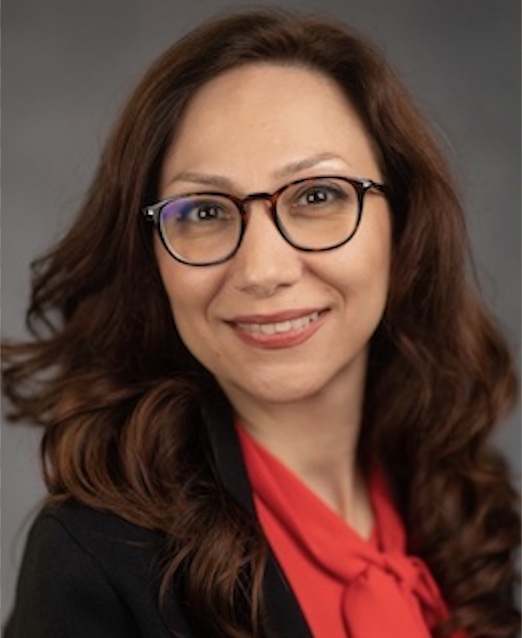
Research Summary
Dr. Tashakori's research interests are in hematologic malignancies and other hematologic pathologies.
Publications
Tashakori M, Medeiros LJ. Potential genetic mechanisms driving B/myeloid conversion in patients with follicular lymphoma and Langerhans cell neoplasms. Leuk Lymphoma. 2024 Feb 21:1-5. doi: 10.1080/10428194.2024.2319691.
Tashakori, M, Loghavi, S (2023). Plasmablastic Lymphoma. In: Crane, G.M., Loghavi, S. (eds) Precision Molecular Pathology of Aggressive B-Cell Lymphomas . Molecular Pathology Library. Springer, Cham. https://doi.org/10.1007/978-3-031-46842-1_22
Tashakori M and Beckman AK. Circulating plasmablastic cells in a patient with HHV8-associated multicentric Castleman Disease and Kaposi sarcoma. Blood, 2023 Dec 14;142(24):2124.
Tashakori M, Kadia T, Loghavi S, Daver N, Pierce S, Sui D, Wei P, Khodakarami F, Tang Z, Routbort M, Jabbour E, Medeiros L, Bhalla B, Kantarjian H, Ravandi F, & Khoury J. TP53 copy number and protein expression inform mutation status across risk categories in acute myeloid leukemia. Blood, 2022 Jul 7;140(1):58-72. PMID: 35390143.
Tashakori M, Thakral B, Tang G, Khoury JD, Medeiros LJ. From the archives of MD Anderson Cancer Center: A case of concurrent follicular lymphoma and Langerhans cell sarcoma and a review of the literature. Annals of Diagnostic Pathology, 2021 Feb;52:151720.
Tashakori M, Lin P. An unusual case of splenic B-cell lymphoma/leukemia. eJHaem. 2021; 1-2. DOI: 10.1002/jha2.164.
Tashakori M, Khoury JD. B Acute lymphoblastic leukemia arising during maintenance therapy for multiple myeloma. Blood, 2020 Dec 3;136(23):2720.
Presentations
Tashakori M, Grzywacz B, Beckman AK., Linden MA, "Extranodal NK/T cell lymphoma presenting with primary paraspinal soft tissue involvement", Society of Hematopathology/European Association for Hematopathology workshop (2023 SH/EAHP workshop), Houston, Texas, Nov 2023.
Grzywacz B, Tashakori M, Linden MA, "62 year old man with unexplained weight loss and cytopenias", Society of Hematopathology/European Association for Hematopathology workshop (2023 SH/EAHP workshop), Houston, Texas, Nov 2023. Oral presentation by Dr. M. A. Linden.
Education
Fellowships, Residencies, and Visiting Engagements
Licensures and Certifications
Contact
Address
420 Delaware St SEMMC 609 Mayo
Minneapolis, MN 55455


Bio
Dr. Thomas is a clinical chemist and a faculty member of the Advanced Research and Diagnostics Laboratory (ARDL) and a member of the Masonic Cancer Center. She is also the Associate Medical Director of the West Bank Laboratory. Motivated by the growing prevalence of mass spectrometry in the clinical laboratory, Thomas applies discovery and targeted proteomics methods to elucidate the biology of ovarian cancer and analyze proteins derived from alterations in cancer genomes and related biological processes. Dr. Thomas is a member of the graduate faculty of Molecular Pharmacology and Therapeutics (MPaT); Biochemistry, Molecular Biology, and Biophysics; and Microbiology, Immunology and Cancer Biology (MICaB).
Research Summary
- Mass spectrometry
- Clinical proteomics
- Analytical chemistry
Thomas Research Lab
Publications
PubMed articles list
- Ryu J, Boylan KLM, Twigg CAI, Evans R, Skubitz APN, Thomas SN. Quantification of putative ovarian cancer serum protein biomarkers using a multiplexed targeted mass spectrometry assay. Clin Proteomics. 2024 Jan 3;21(1):1. doi: 10.1186/s12014-023-09447-4.
- Jordan HA, Thomas SN. Novel proteomic technologies to address gaps in pre-clinical ovarian cancer biomarker discovery efforts. Expert Rev Proteomics. 2023 Jul-Dec;20(12):439-450. doi: 10.1080/14789450.2023.2295861.
- Thomas, S.N., French, D., Jannetto, P.J., Rappold, B.A., and Clarke, W. A. Liquid chromatography–tandem mass spectrometry for clinical diagnostics. Nat Rev Methods Primers 2, 96 (2022). https://doi.org/10.1038/s43586-022-00175-x.
- Figueiredo JC, Hirsch FR, Kushi LH,.... Karger AB, Thyagarajan B, Thomas SN, ... Skarbinski J. Mission, organization, and future direction of the Serological Sciences Network for COVID-19 (SeroNet) epidemiologic cohort studies. Open Forum Infect Dis. 2022 Apr 27;9(6):ofac171. doi: 10.1093/ofid/ofac171.
- Karger AB, Brien JD, Christen JM, Dhakal S, .... Thomas SN, Thyagarajan B, Wajnberg A, Yates JL, Sobhani K. The Serological Sciences Network (SeroNet) for COVID-19: Depth and breadth of serology assays and plans for assay harmonization. mSphere. 2022 Jun 15:e0019322. doi: 10.1128/msphere.00193-22.
- Chaudhry S, Thomas SN, Simmons GE Jr.Targeting lipid metabolism in the treatment of ovarian cancer.
Oncotarget. 2022 May 25;13:768-783. doi: 10.18632/oncotarget.28241. eCollection 2022. - Thomas SN, Karger AB, Altawallbeh G, Nelson KM, Jacobs DR Jr, Gorlin J, Barcelo H, Thyagarajan B. Ultrasensitive detection of salivary SARS-CoV-2 IgG antibodies in individuals with natural and COVID-19 vaccine-induced immunity. Sci Rep. 2022 May 25;12(1):8890. doi: 10.1038/s41598-022-12869-z
- Ryu J, Thomas SN. Quantitative mass spectrometry-based proteomics for biomarker development in ovarian cancer. Molecules. 2021 May 3;26(9):2674. doi: 10.3390/molecules26092674.
- Murthy V, Altawallbeh G, Larson-Nath C, Karger AB, Thomas SN. Transient hyperphosphatasemia following pediatric liver transplantation in a patient with hepatic and skeletal abnormalities. Clin Chim Acta. 2021 Apr 4:S0009-8981(21)00115-7. doi: 10.1016/j.cca.2021.03.030.
Education
Fellowships, Residencies, and Visiting Engagements
Licensures and Certifications
Honors and Recognition
Professional Memberships
Grants and Patents
Patents


Research Summary
Dr. Thyagarajan is director of the Division of Molecular Pathology and Genomics and director of the Advanced Research and Diagnostic Laboratory (ARDL). The MDL processes some 25,000 specimens annually related to inherited and infectious diseases, bone marrow engraftment, and blood and solid tumor malignancies. Thyagarajan and his MDL colleagues are implementing next-generation DNA sequencing (NGS) for diagnosing genetic disease.The MDL has the capacity to test some 5,000 genes implicated in monogenic disorders with the goal of testing all the genes in the human genome (>20,000) and has implemented DNA sequence-based tumor diagnostics. MDL clinicians have issued hundreds of patient molecular pathology reports based on individual genetic tests and expect that pace of reporting to increase as NGS technology is mainstreamed into clinical medicine. Thyagarajan's team collaborates in this effort with the University of Minnesota Genomics Center, which produces the raw sequence from DNA extracted from clinical samples, and the bioinformatics group at the Minnesota Supercomputing Center, which puts the raw sequence data in a readable format from which clinicians can interpret the diagnostic and prognostic value of genetic variants.At ARDL, Dr. Thyagarajan is principal laboratory investigator for the Hispanic Community Health Study, an NIH-funded multicenter epidemiologic study of Hispanic/Latino populations, and the NIH-funded Long Life Family Study, an international collaborative study of the genetics and familial components of exceptional survival, longevity, and healthy aging. Thyagarajan's personal research program focuses on the role of mitochondria in breast and colorectal cancer.
Publications
- Figueiredo JC, Hirsch FR, Kushi LH, Nembhard WN, Crawford JM, Mantis N, Finster L, Merin NM, Merchant A, Reckamp KL, Melmed GY, Braun J, McGovern D, Parekh S, Corley DA, Zohoori N, Amick BC, Du R, Gregersen PK, Diamond B, Taioli E, Sariol C, Espino A, Weiskopf D, Gifoni A, Brien J, Hanege W, Lipsitch M, Zidar DA, Scheck McAlearney A, Wajnberg A, LaBaer J, Yvonne Lewis E, Binder RA, Moormann AM, Forconi C, Forrester S, Batista J, Schieffelin J, Kim D, Biancon G, VanOudenhove J, Halene S, Fan R, Barouch DH, Alter G, Pinninti S, Boppana SB, Pati SK, Latting M, Karaba AH, Roback J, Sekaly R, Neish A, Brincks AM, Granger DA, Karger AB, Thyagarajan B, Thomas SN, Klein SL, Cox AL, Lucas T, Furr-Holden D, Key K, Jones N, Wrammerr J, Suthar M, Yu Wong S, Bowman NM, Simon V, Richardson LD, McBride R, Krammer F, Rana M, Kennedy J, Boehme K, Forrest C, Granger SW, Heaney CD, Knight Lapinski M, Wallet S, Baric RS, Schifanella L, Lopez M, Fernández S, Kenah E, Panchal AR, Britt WJ, Sanz I, Dhodapkar M, Ahmed R, Bartelt LA, Markmann AJ, Lin JT, Hagan RS, Wolfgang MC, Skarbinski J. Mission, organization, and future direction of the Serological Sciences Network for COVID-19 (SeroNet) epidemiologic cohort studies. Open Forum Infect Dis. 2022 Apr 27;9(6):ofac171. doi: 10.1093/ofid/ofac171.
- Karger AB, Brien JD, Christen JM, Dhakal S, Kemp TJ, Klein SL, Pinto LA, Premkumar L, Roback JD, Binder RA, Boehme KW, Boppana S, Cordon-Cardo C, Crawford JM, Daiss JL, Dupuis AP 2nd, Espino AM, Firpo-Betancourt A, Forconi C, Forrest JC, Girardin RC, Granger DA, Granger SW, Haddad NS, Heaney CD, Hunt DT, Kennedy JL, King CL, Krammer F, Kruczynski K, LaBaer J, Lee FE, Lee WT, Liu SL, Lozanski G, Lucas T, Mendu DR, Moormann AM, Murugan V, Okoye NC, Pantoja P, Payne AF, Park J, Pinninti S, Pinto AK, Pisanic N, Qiu J, Sariol CA, Simon V, Song L, Steffen TL, Stone ET, Styer LM, Suthar MS, Thomas SN, Thyagarajan B, Wajnberg A, Yates JL, Sobhani K. The Serological Sciences Network (SeroNet) for COVID-19: Depth and breadth of serology assays and plans for assay harmonization. mSphere. 2022 Jun 15:e0019322. doi: 10.1128/msphere.00193-22.
- Thomas SN, Karger AB, Altawallbeh G, Nelson KM, Jacobs DR Jr, Gorlin J, Barcelo H, Thyagarajan B. Ultrasensitive detection of salivary SARS-CoV-2 IgG antibodies in individuals with natural and COVID-19 vaccine-induced immunity. Sci Rep. 2022 May 25;12(1):8890. doi: 10.1038/s41598-022-12869-z.
- Mroz P, Michel S, Allen JD, Meyer T, McGonagle EJ, Carpentier R, Vecchia A, Schlichte A, Bishop JR, Dunnenberger HM, Yohe S, Thyagarajan B, Jacobson PA, Johnson SG. Development and implementation of in-house pharmacogenomic testing program at a major academic health system. Front Genet. 2021 Oct 20;12:712602. doi: 10.3389/fgene.2021.712602.
- Martinez RJ, Pankratz N, Schomaker M, Daniel J, Beckman K, Karger AB, Thyagarajan B, Ferreri P, Yohe SL, Nelson AC. Prediction of false positive SARS-CoV-2 molecular results in a high-throughput open platform system. J Mol Diagn. 2021 Jun 8:S1525-1578(21)00166-5. doi: 10.1016/j.jmoldx.2021.05.015
- Ryan J. Martinez, Qing Kang, Davis Nennig, Nathanael G. Bailey, Noah A. Brown, Bryan L. Betz, Muneesh Tewari, Bharat Thyagarajan, Veronika Bachanova, Pawel Mroz. One-Step Multiplexed Droplet Digital Polymerase Chain Reaction for Quantification of p190 BCR-ABL1 Fusion Transcript in B-Lymphoblastic Leukemia. Arch Pathol Lab Med2021; doi:https://doi.org/10.5858/arpa.2020-0454-OA
- Thomas SN, Altawallbeh G, Zaun CP, Pape KA, Peters JM, Titcombe PJ, Dileepan T, Rapp MJ, Bold TD, Schacker TW, Arbefeville S, Ferrieri P, Thyagarajan B, Jenkins MK, Karger AB. Initial determination of COVID-19 seroprevalence among outpatients and healthcare workers in Minnesota using a novel SARS-CoV-2 total antibody ELISA. Clin Biochem. 2021 Feb 1:S0009-9120(21)00027-8. doi: 10.1016/j.clinbiochem.2021.01.010
Education
Fellowships, Residencies, and Visiting Engagements
Contact
Address
1-142 Moos Tower515 Delaware Street SE
Minneapolis, MN 55455
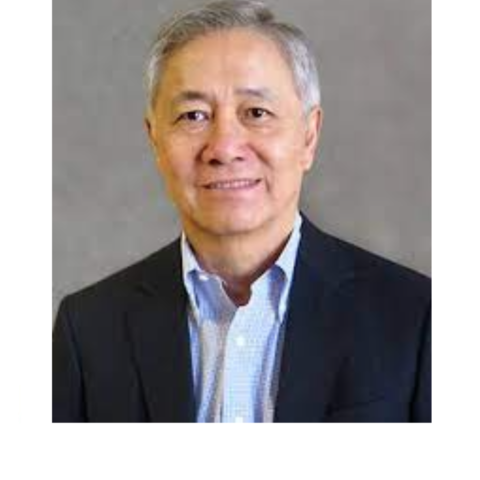

Research Summary
Dr. Tsai is a member of the Division of Molecular Pathology and Genomics who studies genetic and phenotypic biomarkers for cardiovascular diseases (CVD) risk assessment. He has been the director of central laboratories for many large population studies including the Multi-Ethnic Study of Atherosclerosis (MESA), Genetics of Lipid Lowering Drugs and Diet Network (GOLDN), and is a faculty investigator in the Advanced Research and Diagnostics Laboratory (ARDL). Tsai was among the first to recognize the importance of low-density lipoprotein (LDL) and high-density lipoprotein (HDL) particle heterogeneities, the inverse association of serum triglyceride with particle sizes of lipoproteins, and the implication of these phenomena in assessing CVD risk. His laboratory continues to be active in this area and he continues to publish research findings on the utility of non-traditional lipoprotein measurements for CVD risk prediction. Beyond lipids, Dr Tsai has extensively studied other risk factors. For example, Tsai helped pioneer the study of genetic and nutritional influence on serum homocysteine level and the usefulness of serum homocysteine levels in the risk prediction of venous thrombosis and coronary artery diseases. Tsai's laboratory is among the first to acquire the capability to analyze serum and red blood cell membrane phospholipid fatty acid composition. Currently, the Tsai laboratory remains one of the nation's most active in investigating fatty acids and heart disease risk, having performed studies in large population-based cohorts including besides MESA and GOLDN the Coronary Artery Risk Development in Young Adults Study (CARDIA), the Women's Health Study, and the Physicians' Health Study. His team has been researching the role of omega-3 and omega-6 fatty acids in human health. A lower ratio of omega-6/omega-3 fatty acids may help reduce the risk of many inflammation-related chronic diseases such as obesity, type 2 diabetes, and heart disease that are prevalent in Western societies and developing countries. Dr. Tsai's laboratory has recently moved into NIH-funded large-scale phenotypic and genotypic biomarker studies to investigate risk factors related to CVD such as hypertension and diabetes in pregnant women. These conditions are typically transient but can lead to complicated pregnancies and post-natal development of chronic disease, as well as predisposing women to the development of diabetes and hypertension. Through his continuing partnership with NIH and the National Institute of Child Health Care and Development, (NICHD), Dr. Tsai hopes to contribute to a more thorough understanding of the mechanisms behind these poorly studied conditions. Since 2009, Dr. Tsai's laboratory also conducted a long-term collaboration with the Division of Intramural Population Health Research in the National Institute of Child Health Care and Development (NICHD) studying hypertension and diabetes in pregnant women as well as infertility and birth defects. More than 50 projects have been funded by NIH/NICHD for this collaboration over the past 11 years using both phenotypic and genotypic approaches including omics platforms such as metabolomics, microbiomes, DNA methylation/epigenetics, and next-generation DNA and RNA sequencing. Through his continuing partnership with NIH and NICHD, Dr. Tsai hopes that this long-term collaboration will result in significant contributions to these important but relatively understudied diseases.
Publications
- Bhatia HS, Zheng KH, Garg PK, Guan W, Whelton SP, Budoff MJ, Tsai MY. Lipoprotein(a) and Aortic Valve Calcification: The Multi-Ethnic Study of Atherosclerosis. JACC Cardiovasc Imaging. 2023 Feb;16(2):258-260. doi: 10.1016/j.jcmg.2022.09.007.
- Garg PK, Guan W, Nomura S, Weir NL, Karger AB, Duprez D, Tsai MY. Associations of plasma omega-3 and omega-6 pufa levels with arterial elasticity: the multi-ethnic study of atherosclerosis. Eur J Clin Nutr. 2022 Jun
- Karger AB, Steffen BT, Nomura SO, Guan W, Garg PK, Szklo M, Budoff MJ, and Tsai MY. Association between homocysteine and vascular calcification incidence, prevalence, and progression in the MESA cohort. J Am Heart Assoc. 2020 Feb 4;9(3):e013934. doi: 10.1161/JAHA.119.013934. Epub 2020 Jan 30.
- Weir NL, Nomura SO, Steffen BT, Guan W, Karger AB, Klein R, Klein BEK, Cotch MF, and Tsai MY. Associations between omega-6 polyunsaturated fatty acids, hyperinsulinemia and incident diabetes by race/ethnicity: The Multi-Ethnic Study of Atherosclerosis. Clin Nutr. 2020 Jan 22. pii: S0261-5614(20)30008-X. doi: 10.1016/j.clnu.2020.01.003.
- Cao J, Nomura SO, Steffen BT, Guan W, Remaley AT, Karger AB, Ouyang P, Michos ED, and Tsai MY. Apolipoprotein B discordance with low-density lipoprotein cholesterol and non-high-density lipoprotein cholesterol in relation to coronary artery calcification in the Multi-Ethnic Study of Atherosclerosis (MESA).J Clin Lipidol. 2019 Nov 29. pii: S1933-2874(19)30354-X. doi: 10.1016/j.jacl.2019.11.005.
- Steffen BT, Bielinski SJ, Decker PA, Berardi C, Larson NB, Pankow JS, Michos ED, Hanson NQ, Herrington DM, Tsai MY. Low high-density lipoprotein cholesterol and particle concentrations are associated with greater levels of endothelial activation markers in Multi-Ethnic Study of Atherosclerosis participants. J Clin Lipidol. 2017 Jun 13. pii: S1933-2874(17)30347-1. doi: 10.1016/j.jacl.2017.05.018.
Education
Honors and Recognition
Contact
Address
3-114 Nils Hasselmo Hall312 Church Str SE
Minneapolis, MN 55455
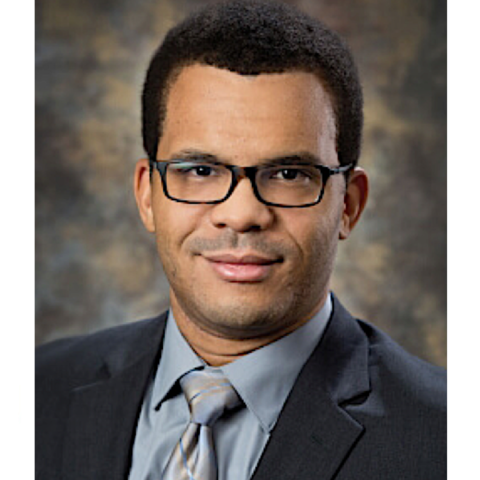
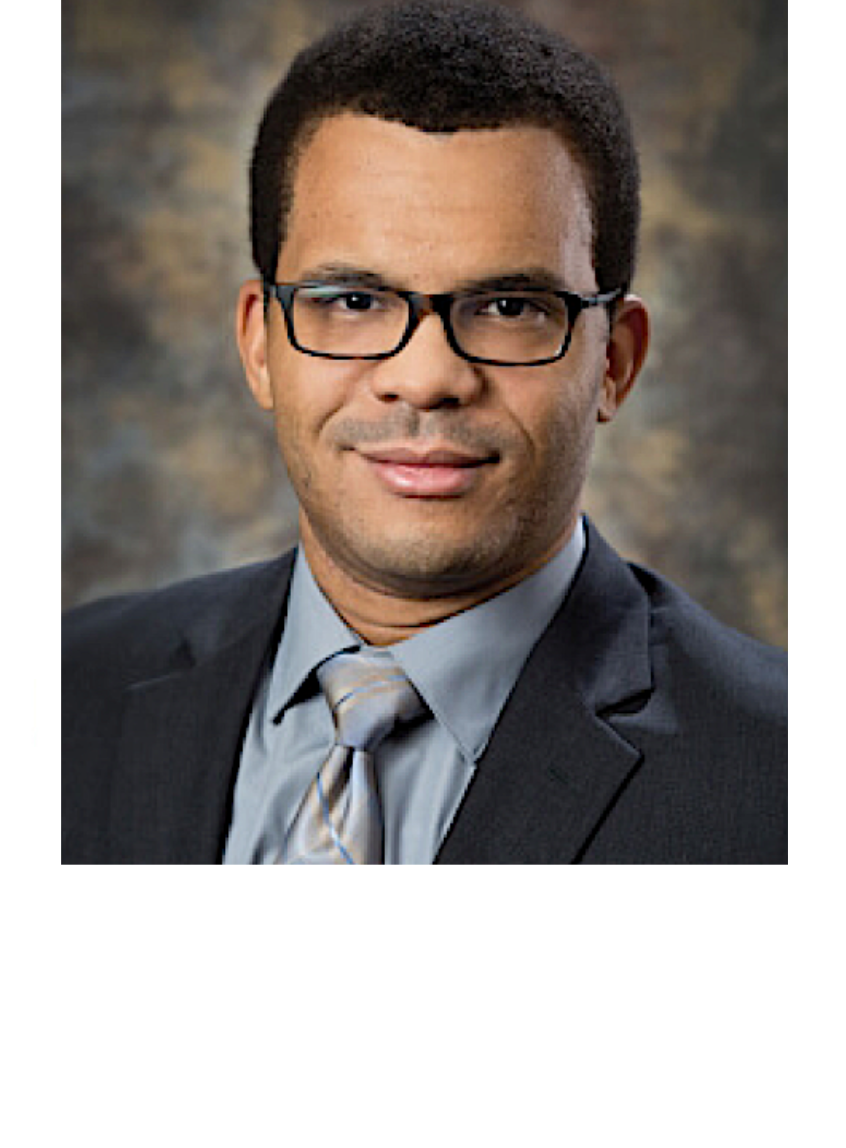
Bio
Dr. Turner is an anatomical pathologist. His areas of clinical research interest are gastritis, intestinal metaplasia, and eosinophilic diseases of the gastrointestinal tract. Turner has authored/co-authored more than 50 peer-reviewed scientific articles and five book chapters. He is a key opinion leader in gastritis and gastric intestinal metaplasia, eosinophilic and mast cell diseases of the gastrointestinal tract, and idiopathic inflammatory bowel disease.
Research Summary
Publications
Cotton CC, Jensen ET, Hoffman K, Green DJ, Tapia AL, Turner KO, Genta RM, Dellon ES. Proximity to swine farming operations as a risk factor for eosinophilic esophagitis. JPGN Rep. 2023 Nov 8;4(4):e391. doi: 10.1097/PG9.0000000000000391.
Dellon ES, Bortey E, Chang AT, Paterson CA, Turner K, Genta RM. Determination of optimal eosinophil thresholds for diagnosis of eosinophilic gastritis and duodenitis: A pooled analysis of 4 prospective studies. Clin Transl Gastroenterol. 2024 Jan 1;15(1):e00656. doi: 10.14309/ctg.0000000000000656.
Genta RM, Turner KO, Collins MH, Wechsler JB, Arva NC, Pletneva MA, Dellon ES, Walker MM. Quantification of mucosal mast cells in the gastrointestinal tract: A primer for practicing pathologists. Arch Pathol Lab Med. 2024 Feb 1;148(2):e25-e35. doi: 10.5858/arpa.2023-0070-OAGenta RM, Turner KO, Robiou C, Singhal A, Rugge M. Incomplete intestinal metaplasia is rare in autoimmune gastritis. Dig Dis. 2023 Feb 3. doi: 10.1159/000527479.
Saad AJ, Genta RM, Turner KO, Kamboj AP, Dellon ES, Chehade M. Do general pathologists assess gastric and duodenal eosinophilia?: A community-based study. Arch Pathol Lab Med 2022; doi: https://doi.org/10.5858/arpa.2022-0204-OA.
Papke DJ Jr, Yurgelun MB, Noffsinger AE, Turner KO, Genta RM, Redston M. Prevalence of mismatch-repair deficiency in rectal adenocarcinomas. N Engl J Med. 2022 Nov 3;387(18):1714-1716. doi: 10.1056/NEJMc2210175.
Genta RM, Dellon ES, Turner KO. Non-oesophageal eosinophilic gastrointestinal diseases are undersuspected clinically and underdiagnosed pathologically. Aliment Pharmacol Ther. 2022 May 12. doi: 10.1111/apt.16971.
Turner KO, Collins MH, Walker MM, Genta RM. Quantification of mucosal eosinophils for the histopathologic diagnosis of eosinophilic gastritis and duodenitis: A primer for practicing pathologists. Am J Surg Pathol. 2022 Apr 1;46(4):557-566. doi: 10.1097/PAS.0000000000001843.
Education
Fellowships, Residencies, and Visiting Engagements
Licensures and Certifications
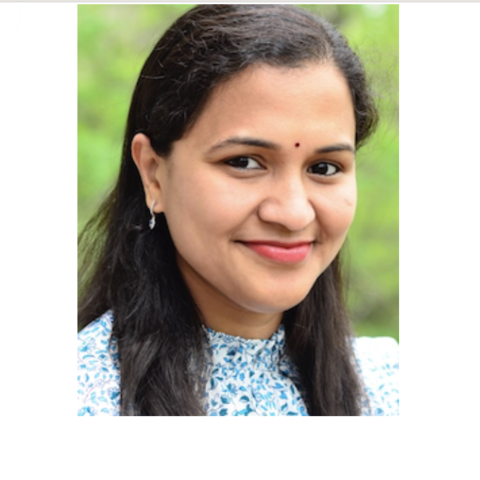

Bio
Dr. Vivek earned a PhD in Bioinformatics and Computational Biology from the University of Minnesota in 2023, and a Master of Public Health (MPH) degree from Sree Chitra Tirunal Institute of Medical Sciences (SCTIMST), India, in 2012, focusing on biostatistics and epidemiology. She has been working as a data manager and researcher in LMP since 2017.
She received the Young Investigator Award with distinction from the Academy of Clinical Laboratory Physicians and Scientists (ACLPS) in 2022 and 2023. As a computational biologist, she specializes in machine learning applications for integrated omics analysis.
Research Summary
Dr. Vivek focuses her research on identifying blood-based biomarkers of aging and age-related outcomes, such as Alzheimer's dementia and Type 2 Diabetes.
Publications
Vivek S, Nelson HH, Prizment AE, Faul J, Crimmins EM, Thyagarajan B. Cross sectional association between cytomegalovirus seropositivity, inflammation and cognitive impairment in elderly cancer survivors. Cancer Causes & Control. 2022;33(1):81-90.
Ramasubramanian R, Meier HCS, Vivek S, et al. Evaluation of T-cell aging-related immune phenotypes in the context of biological aging and multimorbidity in the Health and Retirement Study. Immunity & Ageing. 2022/07/20 2022;19(1):33. doi:10.1186/s12979-022- 00290-z.
Thyagarajan B, Faul J, Vivek S, et al. Age-related differences in T cell subsets in a nationally representative sample of people over age 55: Findings from the Health and Retirement Study. The journals of gerontology Series A, Biological sciences and medical sciences. Oct 11 2021;doi:10.1093/gerona/glab300.
Education
Honors and Recognition
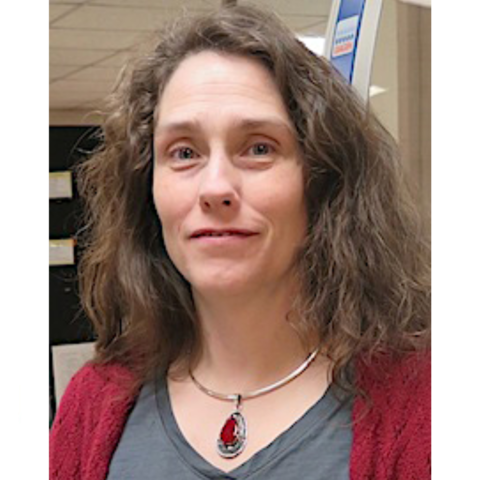
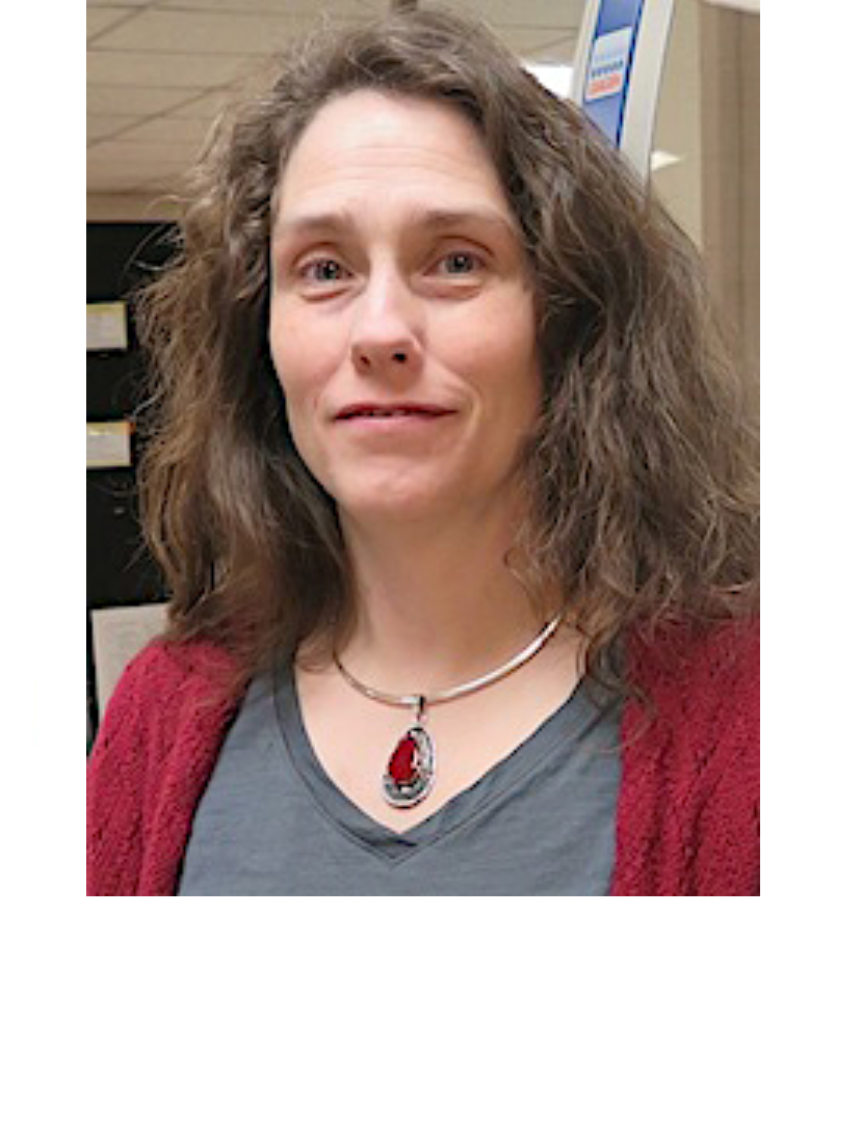
Bio
Dr. Yohe is a hematopathologist and molecular genetic pathologist, director of the Molecular Diagnostics Laboratory, and a member of the Division of Molecular Pathology and Genomics. In her molecular pathology role, Dr. Yohe works with her colleagues in the Molecular Diagnostics Laboratory and the bioinformatics group at the Minnesota Supercomputing Institute to implement genomic testing into clinical practice. In addition to offering next generation sequencing (NGS) testing for many inherited conditions, the team performs NGS for a number of genes commonly mutated in leukemias, lymphomas, and solid tumors. She is Vice Chair of the College of American Pathologists' (CAP) Personalized Health Care Committee, which makes recommendations for setting standards in rapidly emerging fields like clinical genomics. She is active in education and is the Molecular Genetic Pathology Fellowship Program Director.
Research Summary
Dr. Yohe's research interests include understanding genetic changes and improving detection of minimal residual disease (MRD) in hematopoietic malignancies, like acute myeloid leukemia and myelodysplastic syndrome, using genomic and flow cytometric technologies. One of the challenges in the field is the heterogeneity of the immunophenotype and genetics of these diseases. She has collaborated with her clinical colleagues to show the importance of MRD detection pre-transplant and is pursuing novel methods to detect MRD in acute myeloid leukemia and myelodysplastic syndrome.
Publications
- Cushman-Vokoun A, Schmidt RJ, Hiemenz MC, Fung M, Zhang BM, Bradshaw G, Gandhi M, Yao J, Yohe S, Beckman A, Grody WW, Giannikopoulos P. A Primer on Gene Editing: What Does It Mean for Pathologists? Arch Pathol Lab Med. 2023 Aug 23. doi: 10.5858/arpa.2022-0410-CP.
- Nasir A, Hegerova L, Yousaf H, Forster CL, Shanley R, Linden MA, Bachanova V, Yohe S. Digital and manual interfollicular Ki-67 are associated with a progression-free survival in patients with low-grade follicular lymphoma. Am J Clin Pathol. 2023 Dec 4:aqad161. doi: 10.1093/ajcp/aqad161.
- Lee TD, Aisner DL, David MP, Eno CC, Gagan J, Gocke CD, Guseva NV, Haley L, Jajosky AN, Jones D, Mansukhani MM, Mroz P, Murray SS, Newsom KJ, Paulson V, Roy S, Rushton C, Segal JP, Senaratne TN, Siddon AJ, Starostik P, Van Ziffle JAG, Wu D, Xian RR, Yohe S, Kim AS. Current clinical practices and challenges in molecular testing: a GOAL Consortium Hematopathology Working Group report. Blood Adv. 2023 Aug 22;7(16):4599-4607. doi: 10.1182/bloodadvances.2023010149.
- Mroz P, Michel S, Allen JD, Meyer T, McGonagle EJ, Carpentier R, Vecchia A, Schlichte A, Bishop JR, Dunnenberger HM, Yohe S, Thyagarajan B, Jacobson PA, Johnson SG. Development and implementation of in-house pharmacogenomic testing program at a major academic health system. Front Genet. 2021 Oct 20;12:712602. doi: 10.3389/fgene.2021.712602.
- Kao RL, Jacobsen AA, Billington CJ Jr, Yohe SL, Beckman AK, Vercellotti GM, Pearson DR. A case of VEXAS syndrome associated with EBV-associated hemophagocytic lymphohistiocytosis. Blood Cells Mol Dis. 2021 Nov 30;93:102636. doi: 10.1016/j.bcmd.2021.102636.
- Martinez RJ, Pankratz N, Schomaker M, Daniel J, Beckman K, Karger AB, Thyagarajan B, Ferreri P, Yohe SL, Nelson AC. Prediction of false positive SARS-CoV-2 molecular results in a high-throughput open platform system. J Mol Diagn. 2021 Jun 8:S1525-1578(21)00166-5. doi: 10.1016/j.jmoldx.2021.05.015
- Oltvai ZN, Harley SE, Koes D, Michel S, Warlick ED, Nelson AC, Yohe S, Mroz P. Assessing acquired resistance to IDH1 inhibitor therapy by full-exon IDH1 sequencing and structural modeling. Cold Spring Harb Mol Case Stud. 2021 Apr 8;7(2):a006007. doi: 10.1101/mcs.a006007.
- Andrew C Nelson, Benjamin Auch, Matthew Schomaker, Daryl M Gohl, Patrick Grady, Darrell Johnson, Robyn Kincaid, Kylene E Karnuth, Jerry Daniel, Jess K Fiege, Elizabeth J Fay, Tyler Bold, Ryan A Langlois, Kenneth B Beckman, and Sophia Yohe. Analytical validation of a COVID-19 qRT-PCR detection assay using a 384-well format and three extraction methods. bioRxiv, April 5, 2020.doi: https://doi.org/10.1101/2020.04.02.022186 [preprint]
Contact
Address
Rm D219-7, MMC Box 609 Mayo420 Delaware St SE
Minneapolis, MN 55455


Bio
Dr. Zantek is the medical director of the Special Coagulation Laboratory and conducts research in the areas of hemostasis, transfusion medicine, and blood utilization. She is interested in general issues surrounding hemostasis test performance, utilization, and interpretation. In particular, she is exploring how medical circuits, such as ventricular assist devices and apheresis cell separators, influence hemostasis in adult and pediatric patients. These patients typically are medicated to achieve an appropriate balance between bleeding and clotting, which requires testing. How hemostasis test results are best interpreted is the subject of ongoing research. Under Zantek's direction, the Special Coagulation Laboratory is the beta test site for a number of new coagulation testing technologies. In addition, standard testing protocols can be modified and assays can be validated using its analyzers for research purposes.Zantek is also interested in advancing transfusion medicine and blood utilization practices. Using evidence-based hospital guidelines, she is part of a team that has developed an interactive patient blood management system designed to ensure that each transfusion is as safe as possible and limited to transfusing the right blood component to the right patient at the right time. The new system has the potential to conserve transfusion resources and lower costs.
Research Summary
Publications
- Zantek ND, Hsu P, Meijer P, Smock KJ, Plumhoff EA, Refaai MA, Van Cott EMl. Quality of factor XI activity testing in North American Specialized Coagulation Laboratories. International Journal of Laboratory Hematology. 2015;37 Suppl 1:99-107.
- Adatya S, Uriel N, Yarmohammadi H, Holley CT, Feng A, Roy SS, Reding MT, Eckman JR, Zantek ND. Anti-factor Xa and activated partial thromboplastin time measurements for heparin monitoring in mechanical circulatory support. JACC: Heart Fail. 2015;3(4):314-322.
- Hummon D, Zantek ND, Sumstad D, Miller JS, McKenna DH. Transfusion-associated graft-versus-host disease: a perspective from a cell therapy laboratory. Transfusion 49:1018-19, 2009.
- Cohn, Claudia S.; Welbig, Julie; Bowman, Robert J.; Kammann, Susan; Frey, Katherine; Zantek, Nicole Dodge. A data-driven approach to patient blood management. Transfusion. 54(2): 316-322.
Education
Fellowships, Residencies, and Visiting Engagements
Licensures and Certifications
Contact
Address
D-242 Mayo Building420 Delaware Street SE
Minneapolis, MN 55455
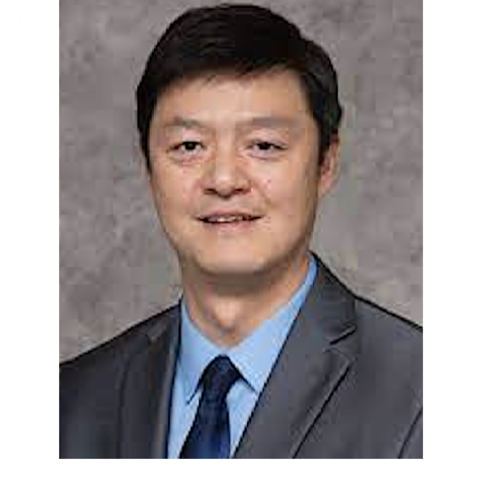
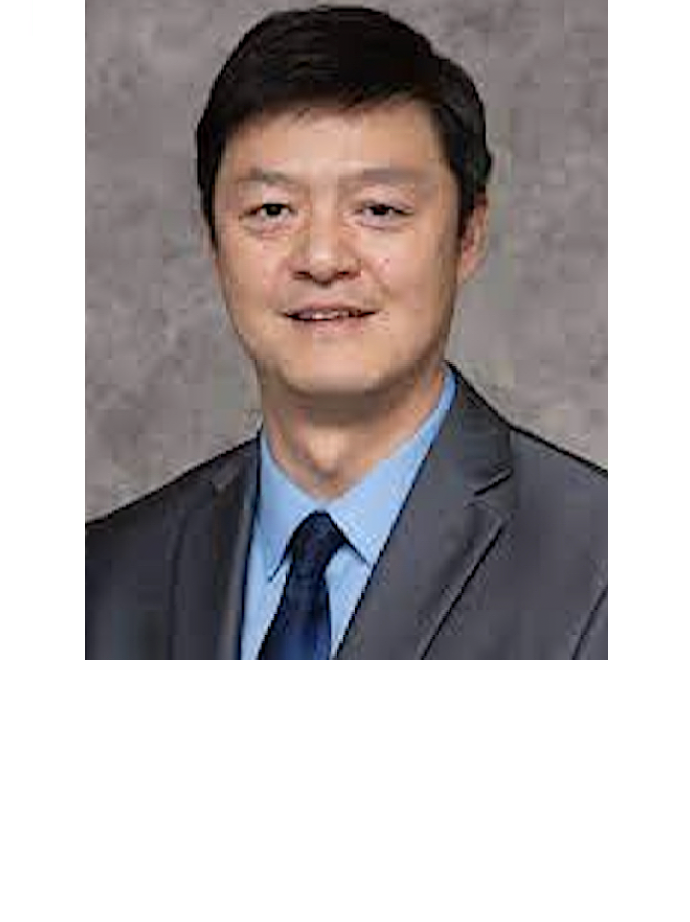
Bio
Dr. Zhong earned an MD degree from Tongji Medical University, Wuhan, China, and a PhD in molecular, cell & developmental biology from the City University of New York.
Zhong was a postdoctoral research fellow in molecular and cellular biology at the Rockefeller University in New York and a pathology resident at the University of Medicine & Dentistry of New Jersey.
He completed fellowships in molecular and genetic pathology, Icahn School of Medicine in New York, and in genitourinary pathology at Northwestern University.
Research Summary
Dr. Zhong has a broad background in cancer biology with specific expertise in key research areas regarding malignancies in genitourinary systems. His research interests have been focused on decoding the molecular blueprints of cancers and developing novel cancer therapeutics.
Publications
Peer-Reviewed Original Contributions
Sun T, Gilani SM, Podany P, Harigopal M, Zhong M, Wang H. Cytomorphologic features of SMARCA4-deficient non-small cell lung carcinoma and correlation with immunohistochemical and molecular features. Cancer Cytopathol. 2022 Apr 25
Zhang W, Yao J, Zhong M, Zhang Y, Guo X, Wang HY. A Brief Overview and Update on Major Molecular Genomic Alterations in Solid, Bone and Soft Tissue Tumors, and Hematopoietic As Well As Lymphoid Malignancies. Arch Pathol Lab Med. 2021 Nov 1;145(11):1358-1366.
Sun T, Wang X, Wang M, Minerowicz C, Sanchez H, Laskin W, Cohen P, Zhong M. Somatic Mutation of BAP1 Can Lead to Expression Loss in Non-Small Cell Lung Carcinoma: Next Generation Sequencing and IHC Analysis in A Large Single Institute Cohort. Int J Surg Pathol. 2021 Dec 31
Wangsiricharoen S, Zhong M, Ranganathan S, Matoso A, Argani P. ALK-rearranged Renal Cell Carcinoma (RCC): A Report of 2 Cases and Review of the Literature Emphasizing the Distinction Between VCL-ALK and Non-VCL- ALK RCC. Int J Surg Pathol. 2021 Oct;29(7):808-814.
Wu H, Ye Q, Razzano D, Tugal O, Rosenblum J, Weigel T, Zhong M. Primary Lung Cribriform Adenocarcinoma with Squamoid Morules Harboring Somatic CTNNB1 Mutation in a Never-Smoked Healthy Adolescent. Pediatr Dev Pathol. 2020 Nov-Dec;23(6)
Education
Fellowships, Residencies, and Visiting Engagements
Licensures and Certifications
Contact
Address
Mailing Address MMC 76 Mayo 420 Delaware Minneapolis, MN 55455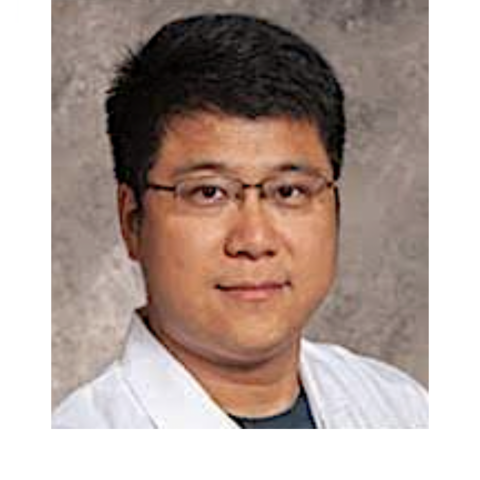
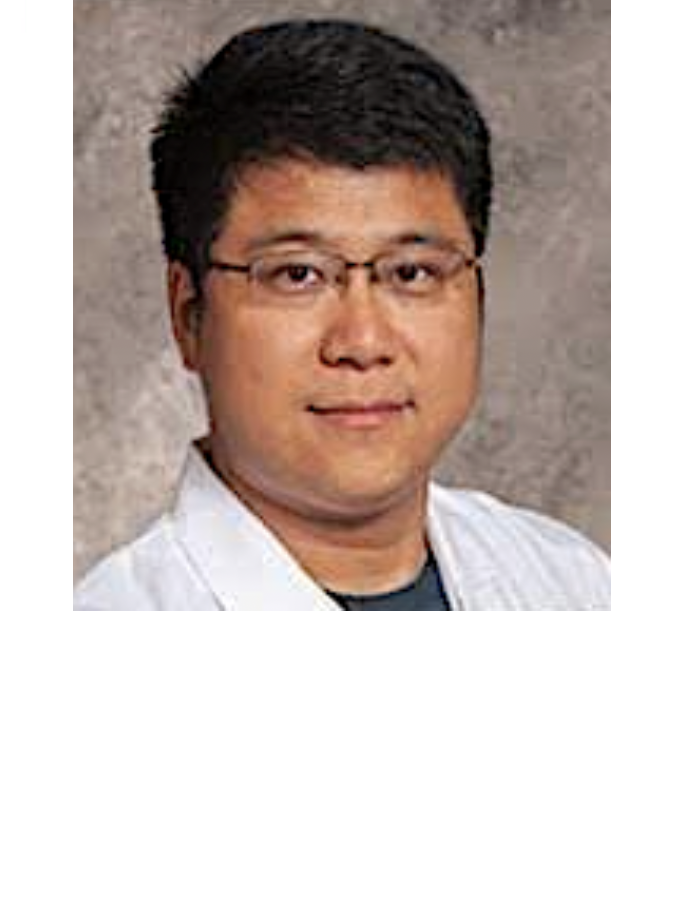
Bio
Dr. Zhu earned MS and PhD degrees in computer science and technology, Harbin Institute of Technology, China. He was a postdoctoral fellow and then a senior scientist in the Department of Genetics and Genomic Sciences and Icahn Institute for Genomics and Multiscale Biology, Icahn School of Medicine at Mount Sinai, New York. Before joining LMP, Zhu was a faculty member in the Department of Internal Medicine at the University of Texas Southwestern Medical Center in Dallas.
Research Summary
A computational biologist, Zhu maintains the Genotype-imputed Gene Set Enrichment Analysis software tool (GIGSEA), a novel bioinformatics resource.
Publications
Wang Z, Zhu S, Jia Y, Wang Y, Kubota N, Fujiwara N, Gordillo R, Lewis C, Zhu M, Sharma T, Li L, Zeng Q, Lin YH, Hsieh MH, Gopal P, Wang T, Hoare M, Campbell P, Hoshida Y, Zhu H. Positive selection of somatically mutated clones identifies adaptive pathways in metabolic liver disease. Cell. 2023 Apr 27;186(9):1968-1984.e20. doi: 10.1016/j.cell.2023.03.014.
Zhu S, Qian T, Hoshida Y, Shen Y, Yu J, Hao K. GIGSEA: genotype imputed gene set enrichment analysis using GWAS summary level data. Bioinformatics. 2019 Jan 1;35(1):160-163. doi: 10.1093/bioinformatics/bty529.
S Zhu, N Kubota, S Wang, T Wang, G Xiao, Y Hoshida, STIE: Single-cell level deconvolution, convolution, and clustering in spatial transcriptomics by aligning spot level transcriptome to nuclear morphology. Nature Methods, under review.
R Pippa, S Santasusagna, S Zhu, WM Song, H Yoshikawa H, N Fujiwara, A Dominguez-Andres, M Carceles-Cordon, V Miguela, J Woo, Y Cendon-Florez, J Koh AP, J Carter, G Kumar, P Li , E Grabocka, AE Aplin, DP Petrylak, RB Den, WK Kelly, C Eischen, Y-M Hou, A Ertel, AI Lamond, MJ Schiewer, A Lujambio, KE Knudsen, Y Hoshida, V Rodriguez-Bravo, J Domingo-Domenech. The microphthalmia transcription factor (MITF) contributes to castration resistance via a targetable translation mechanism in lethal prostate cancer. Cell, under review.